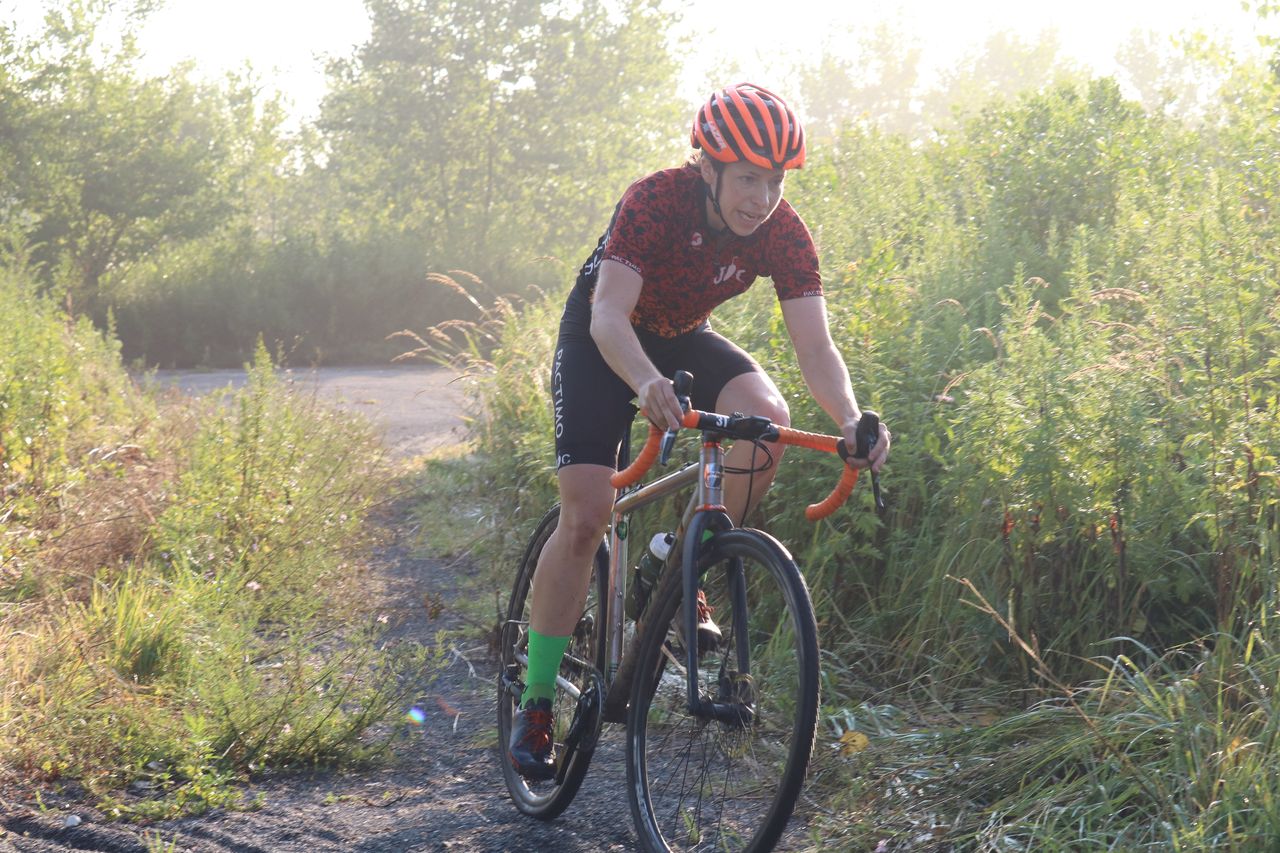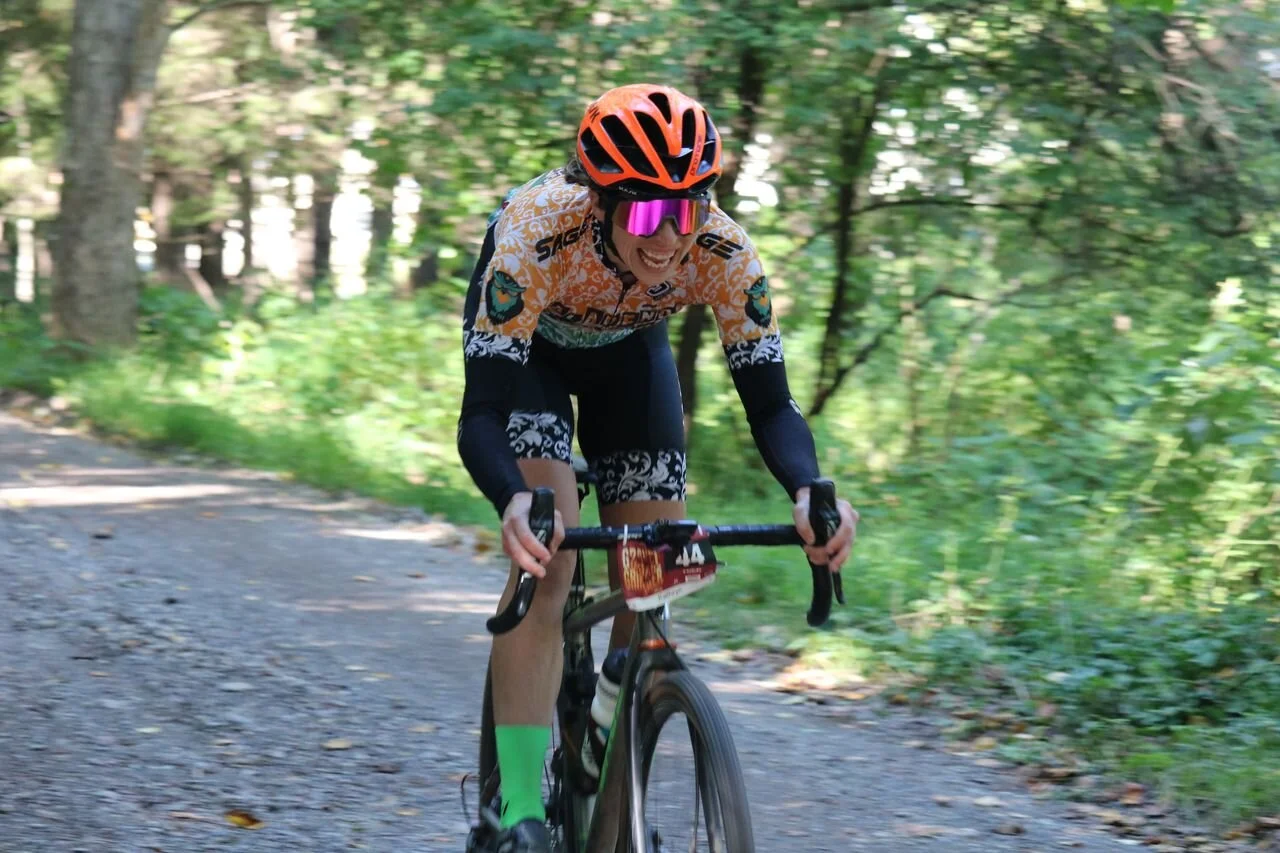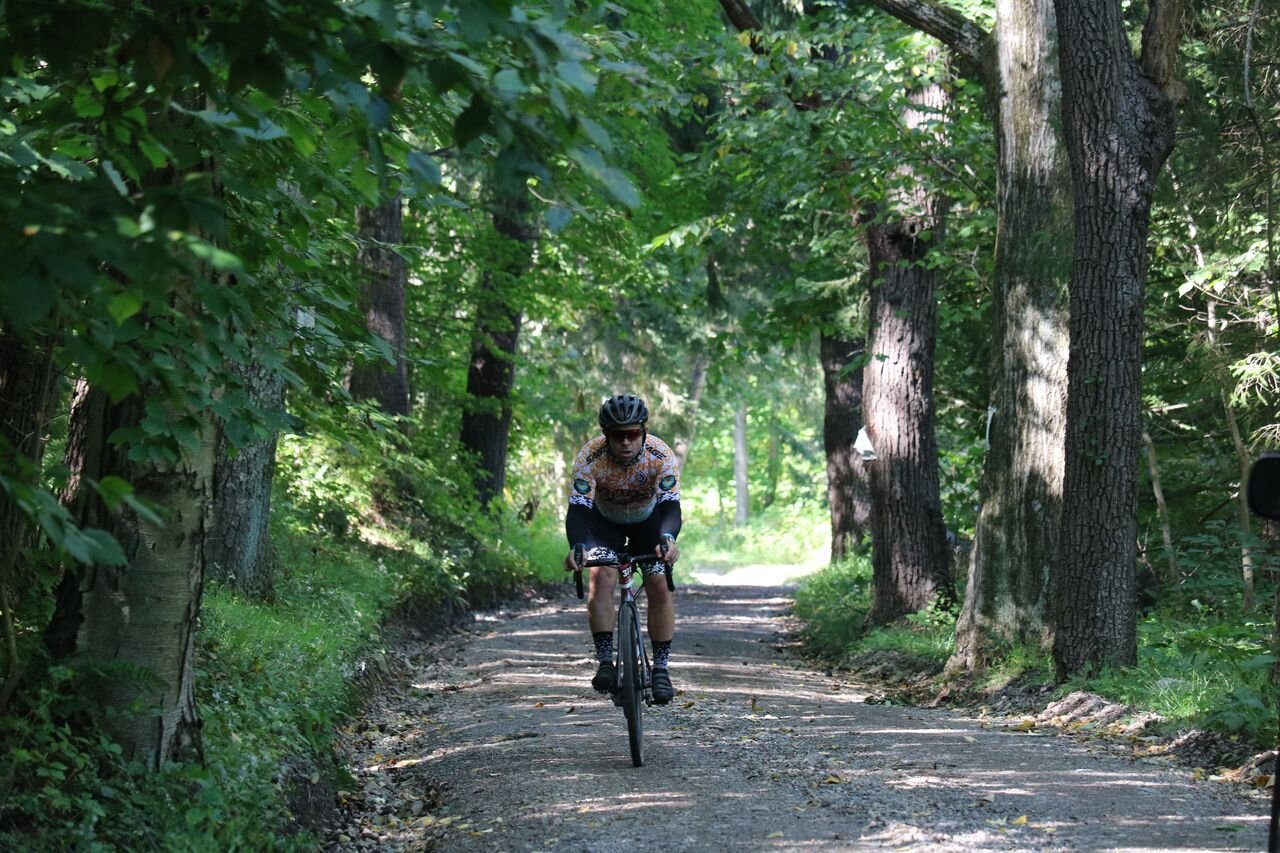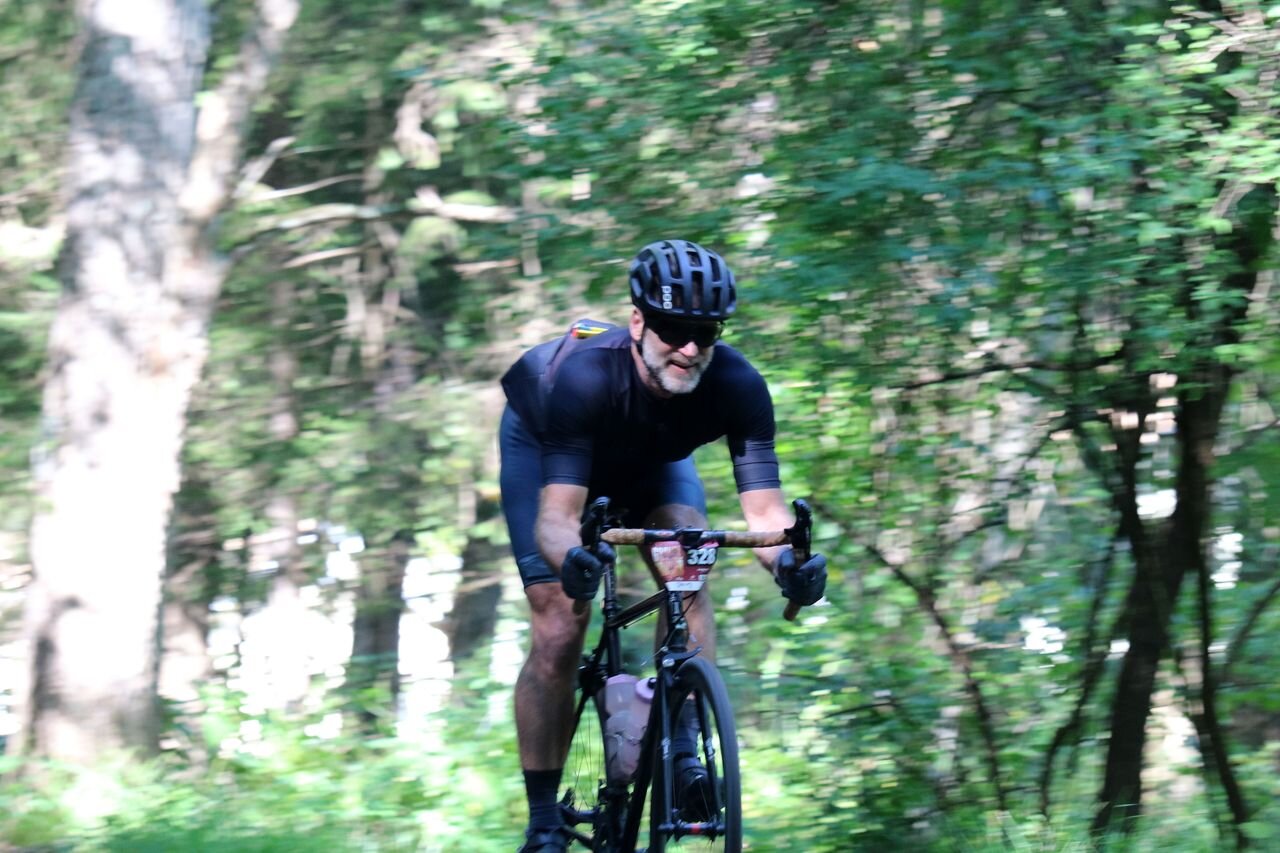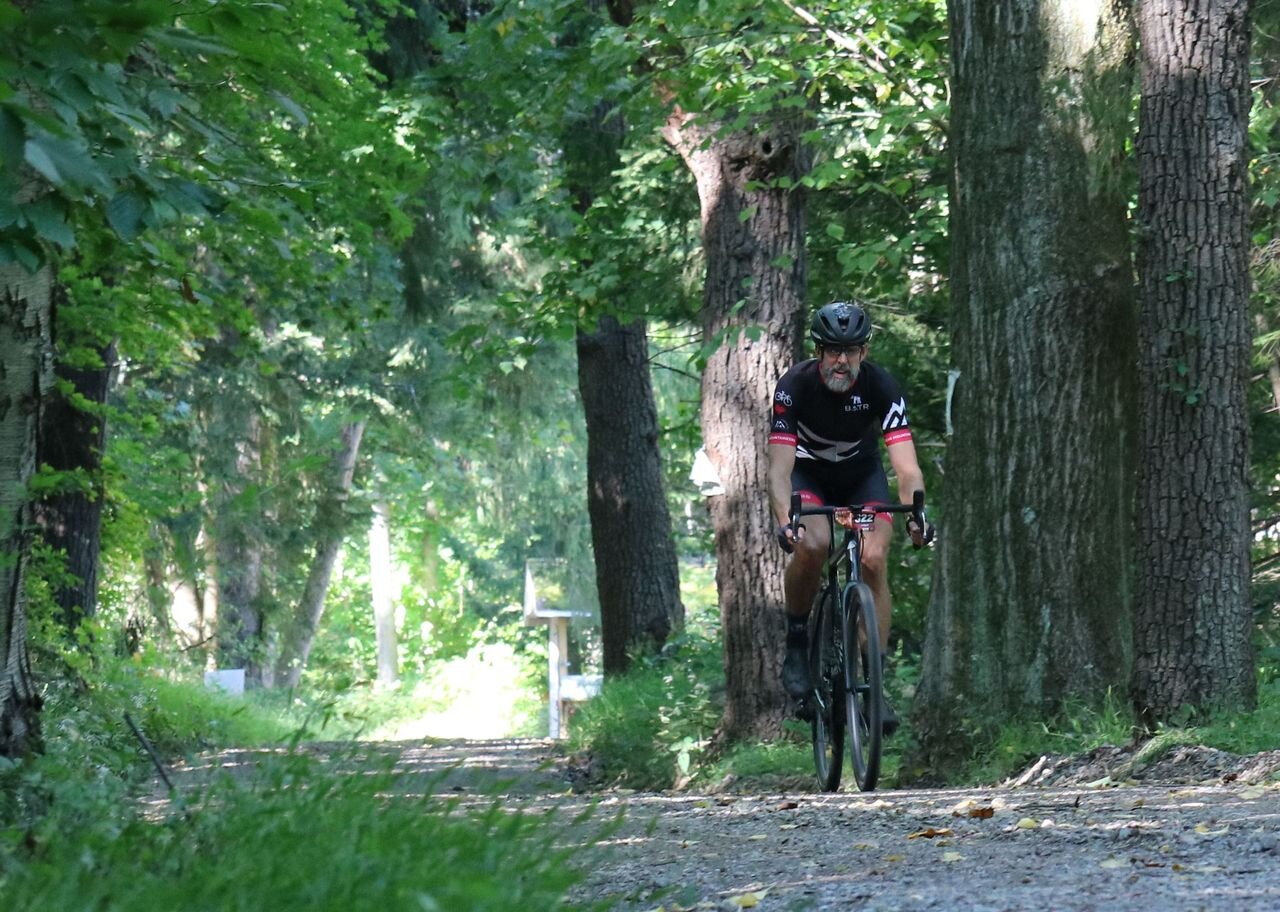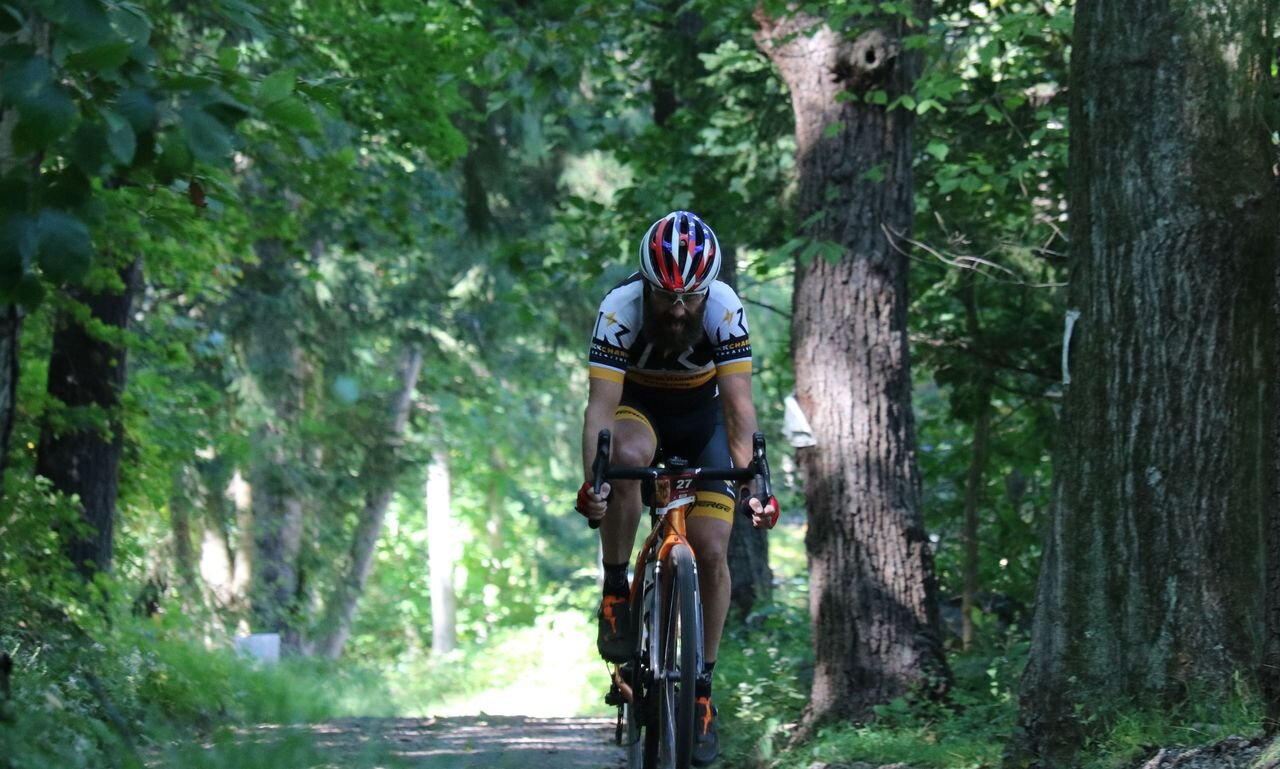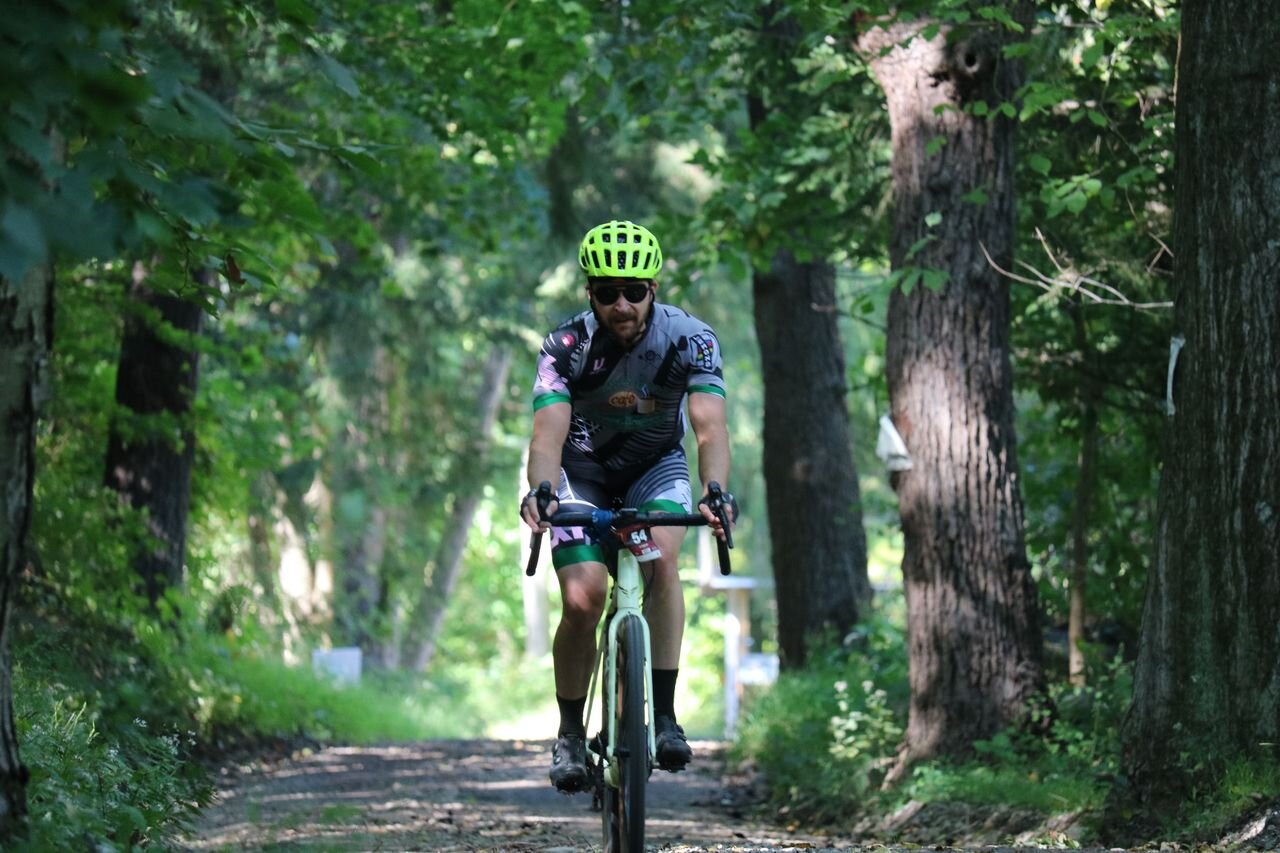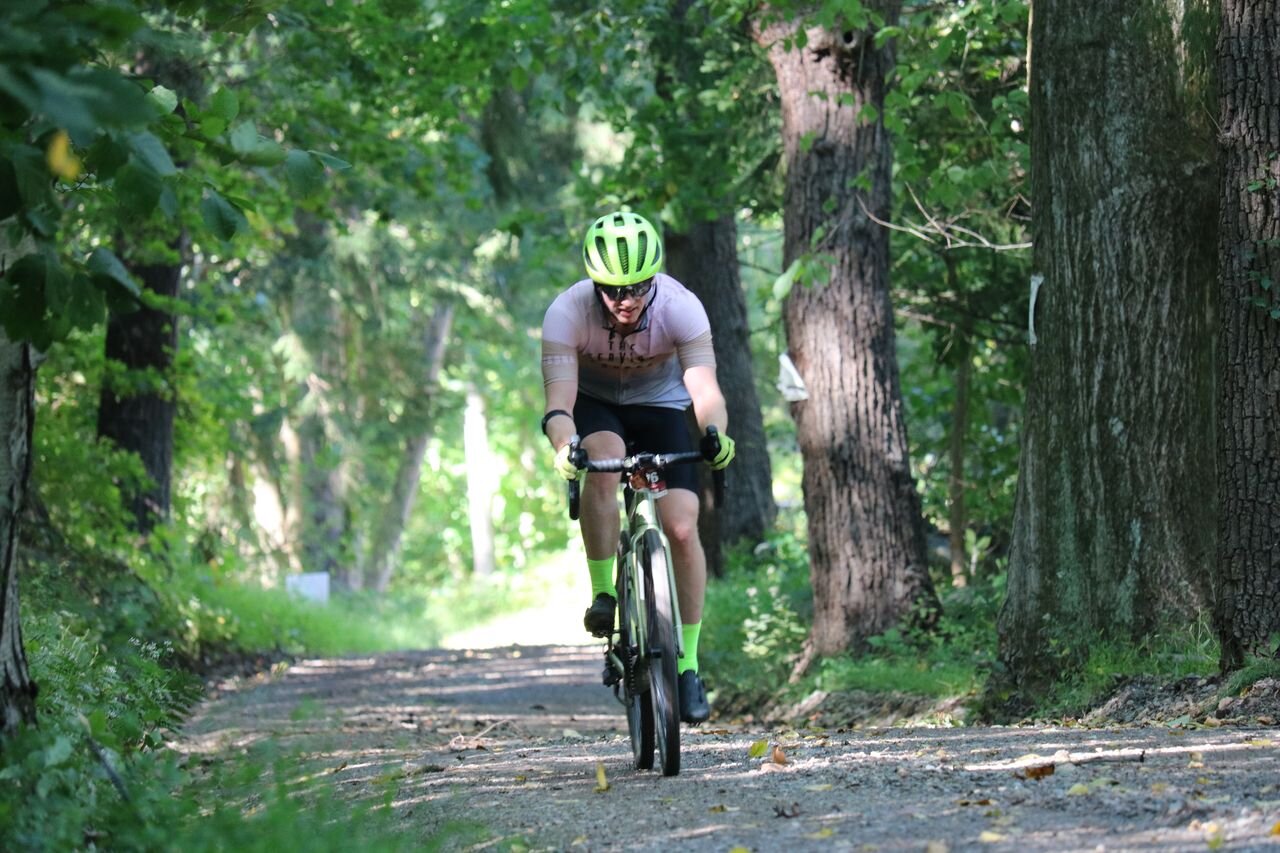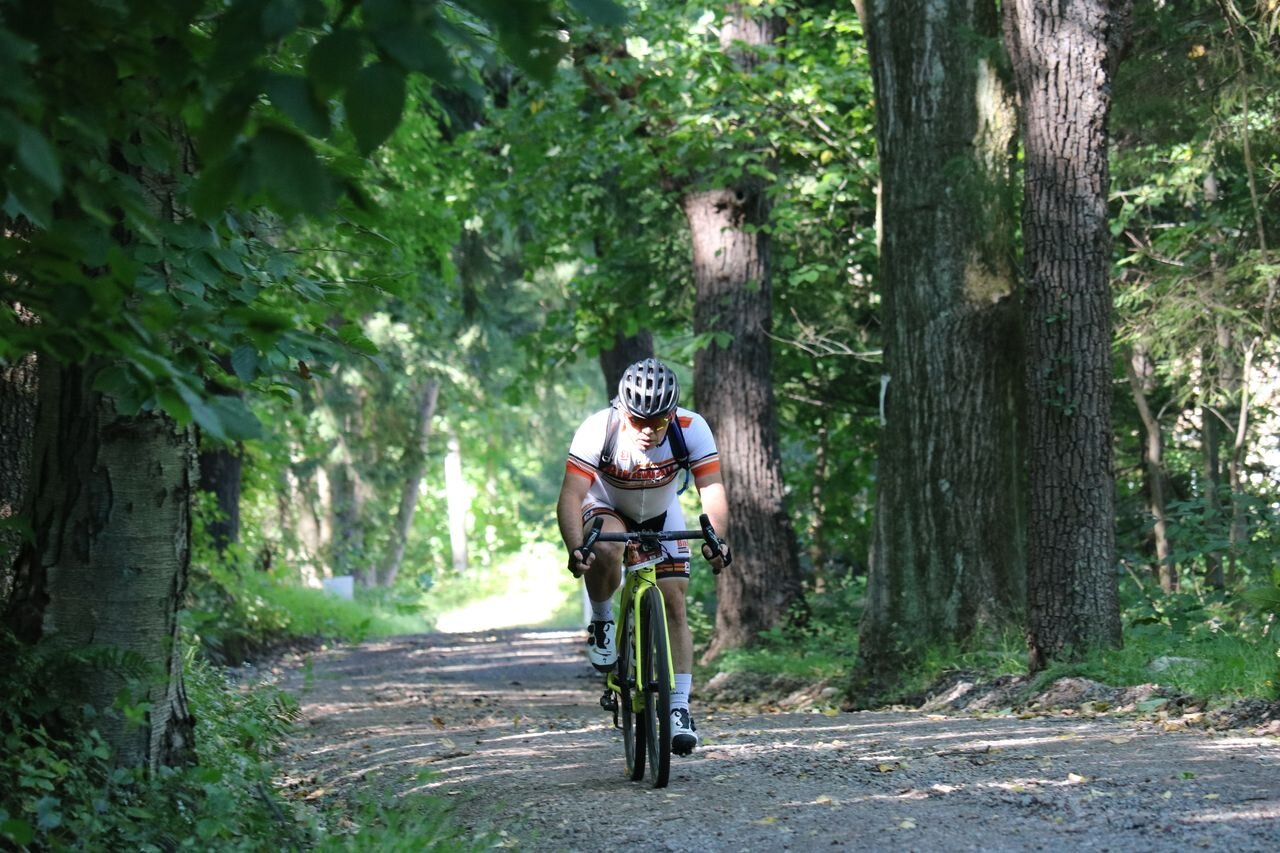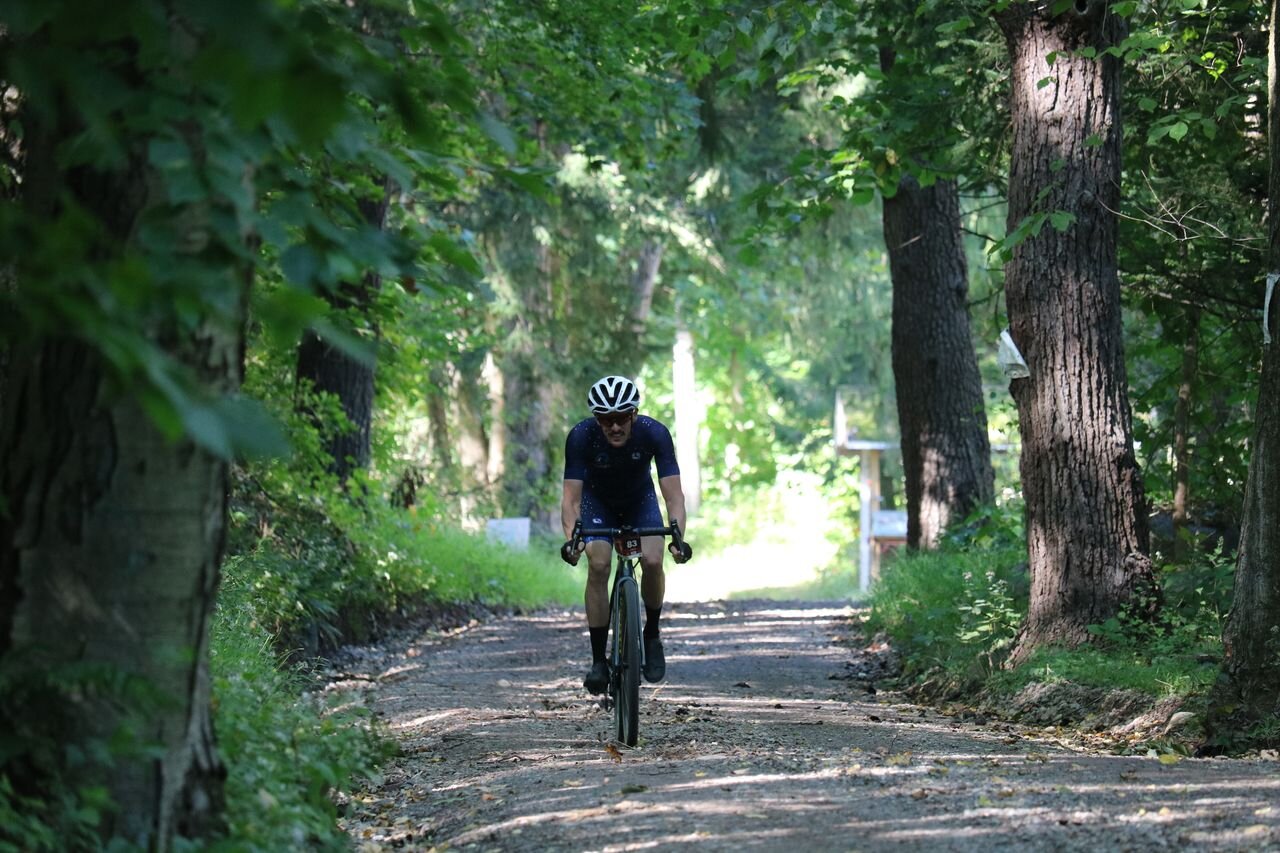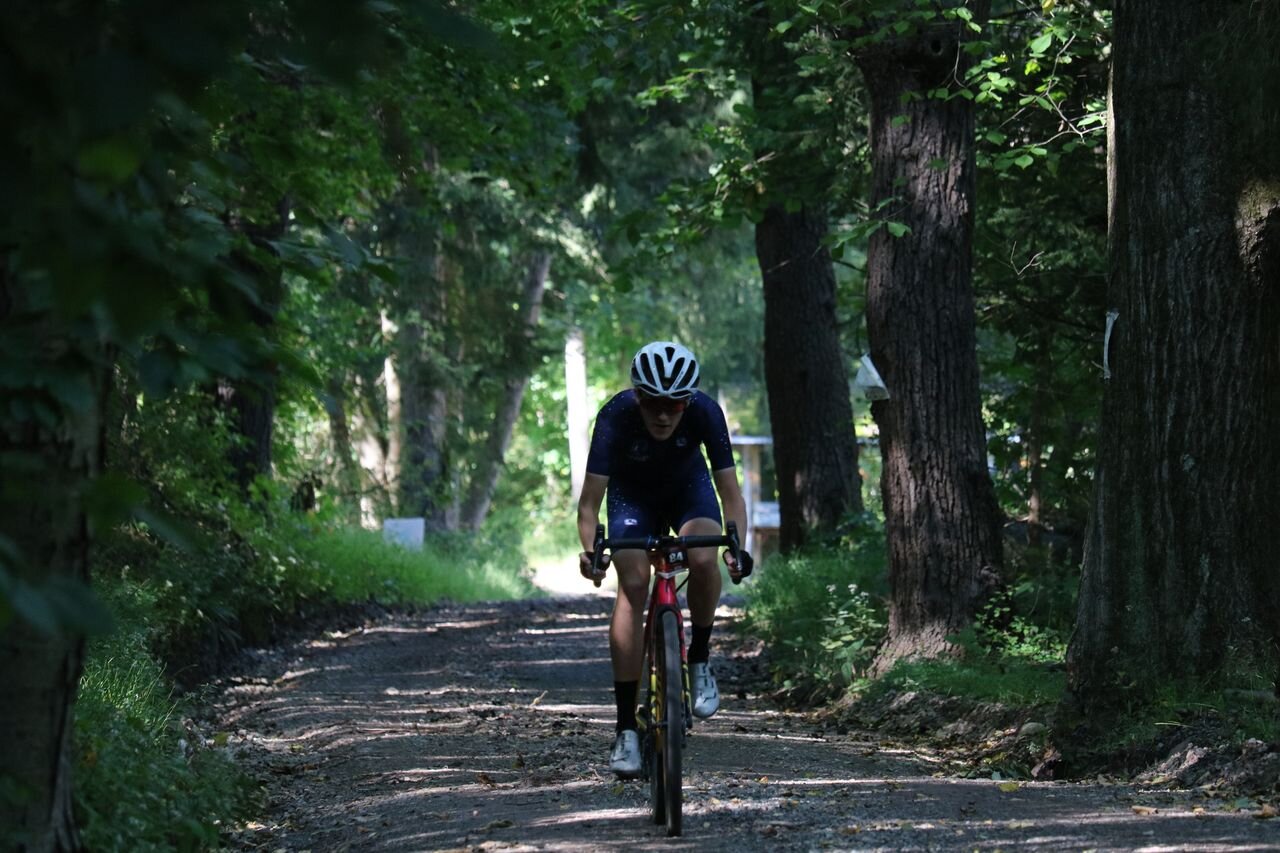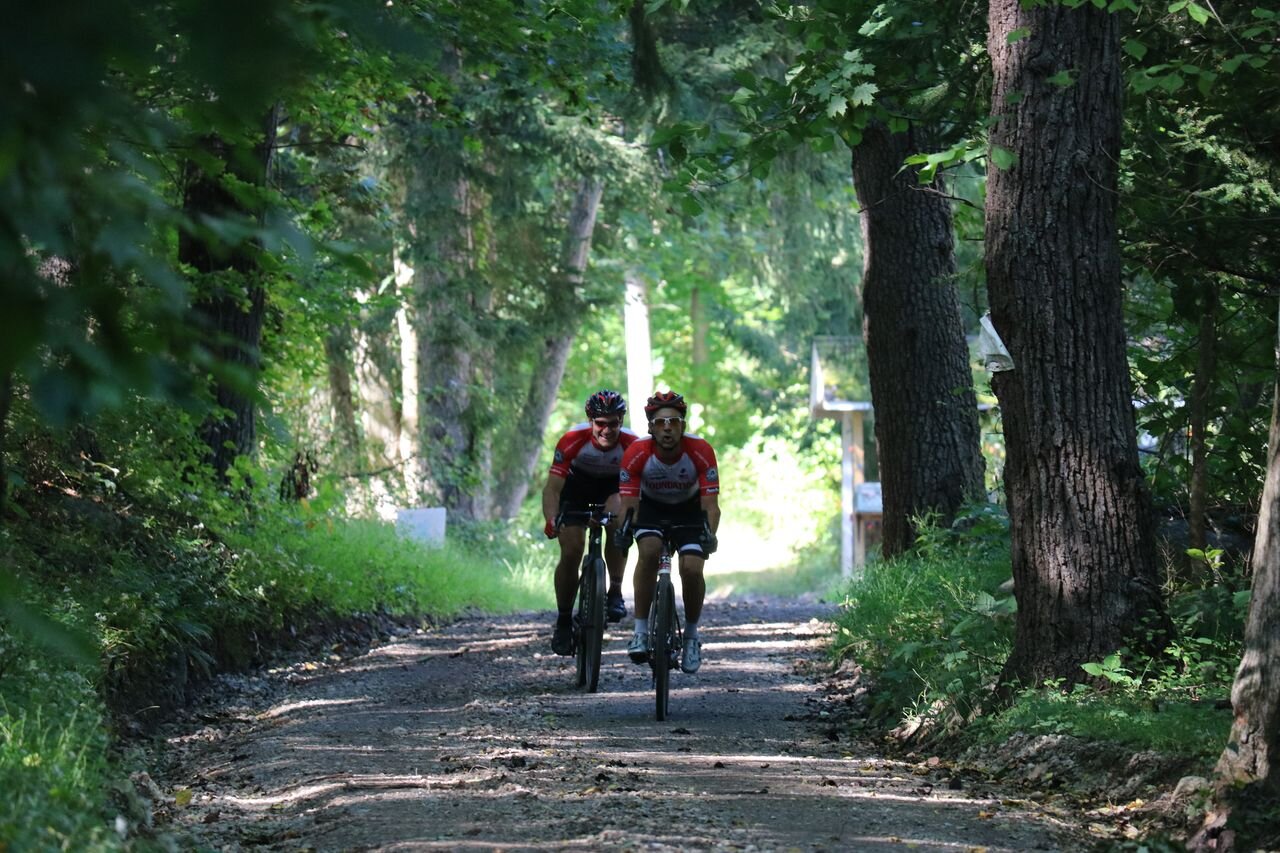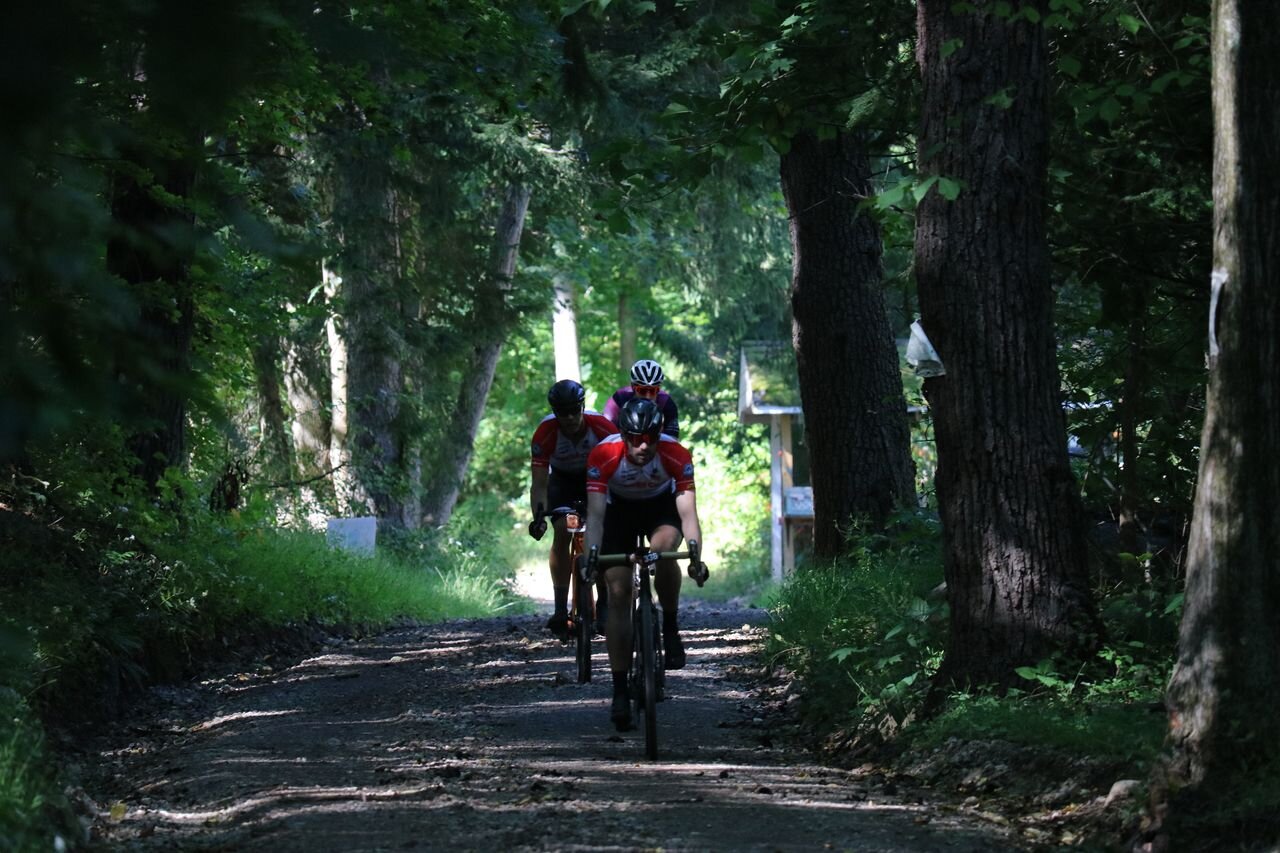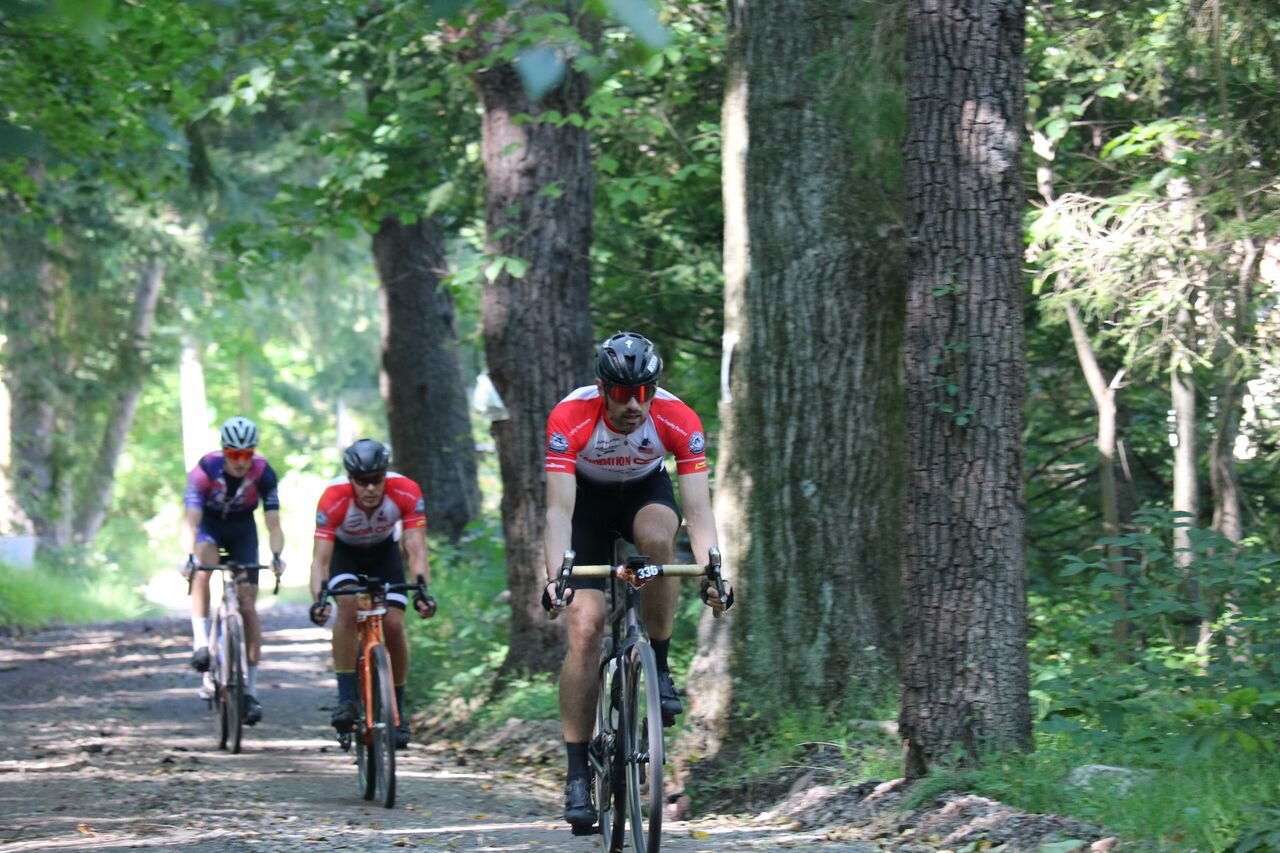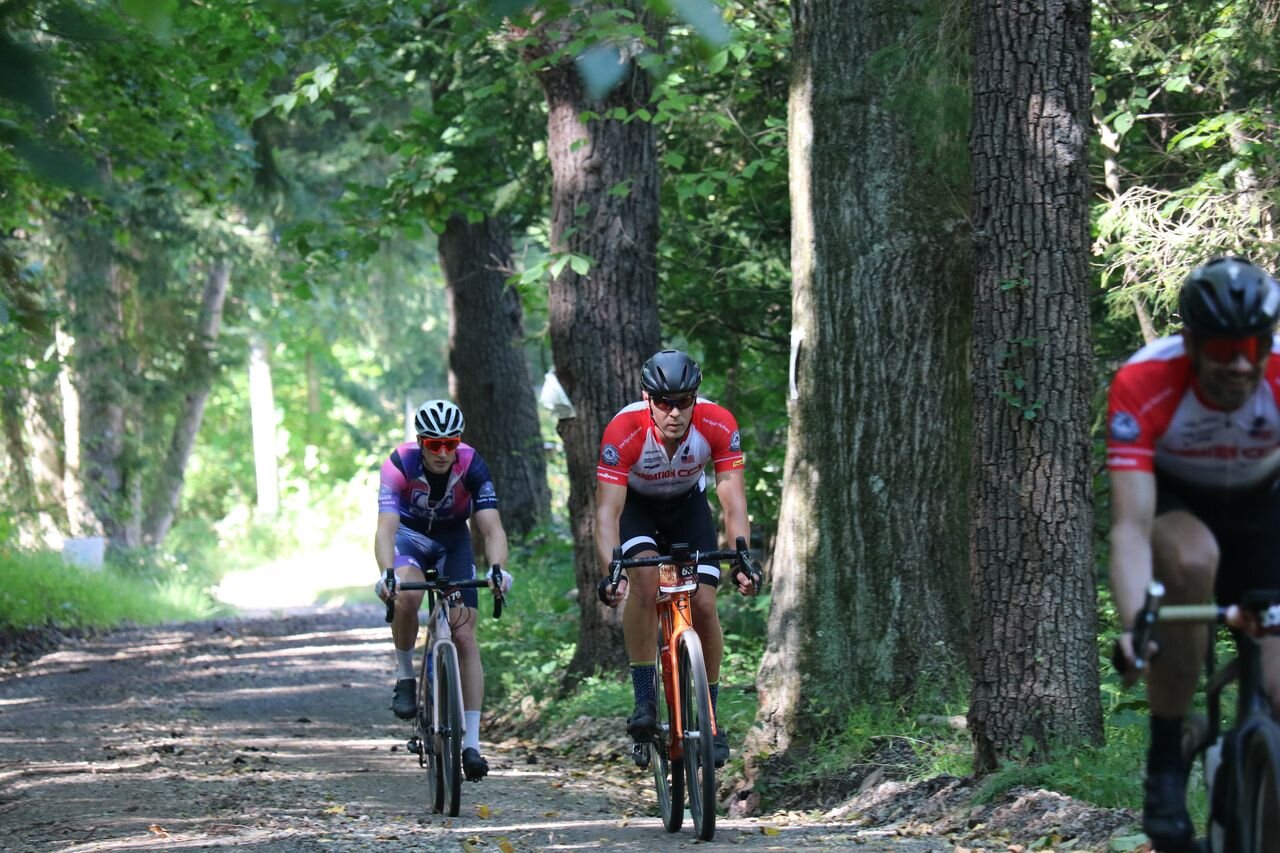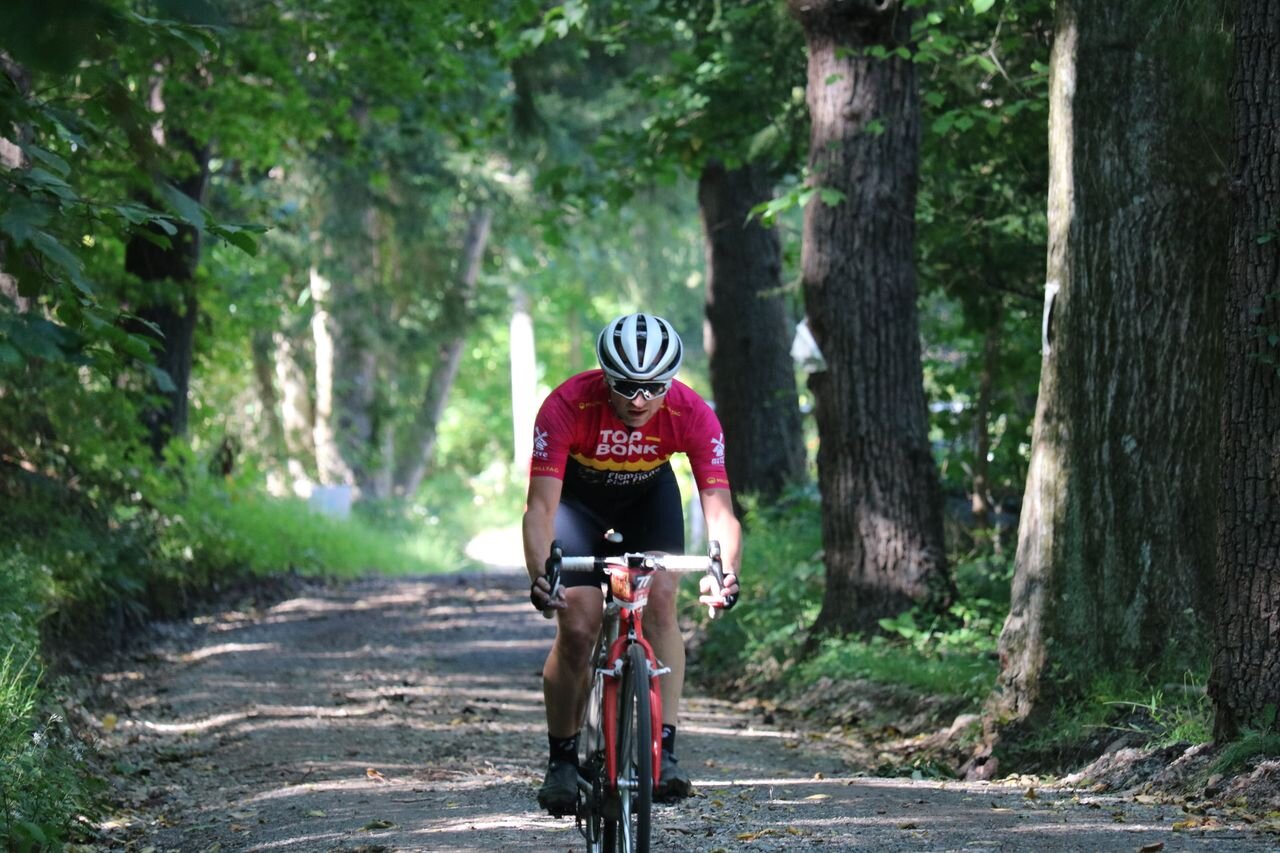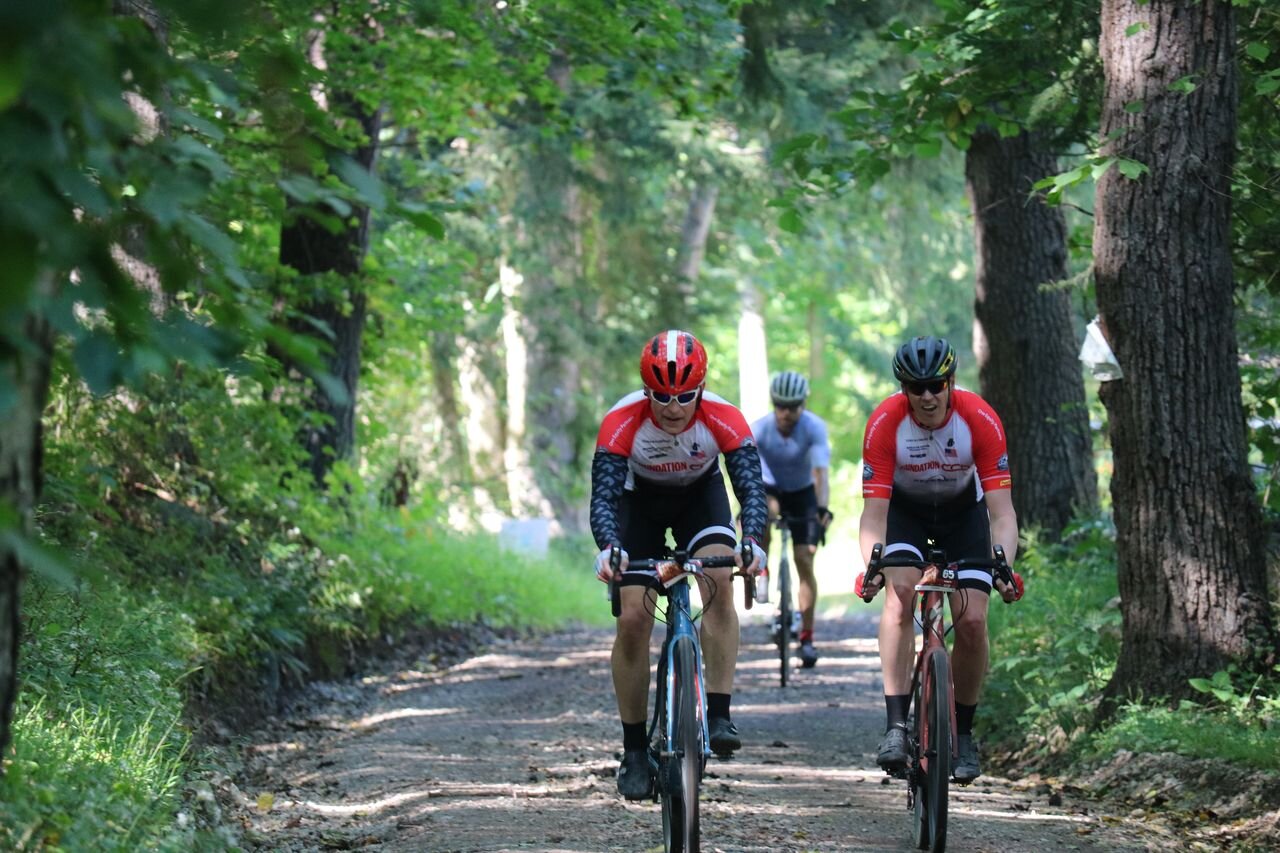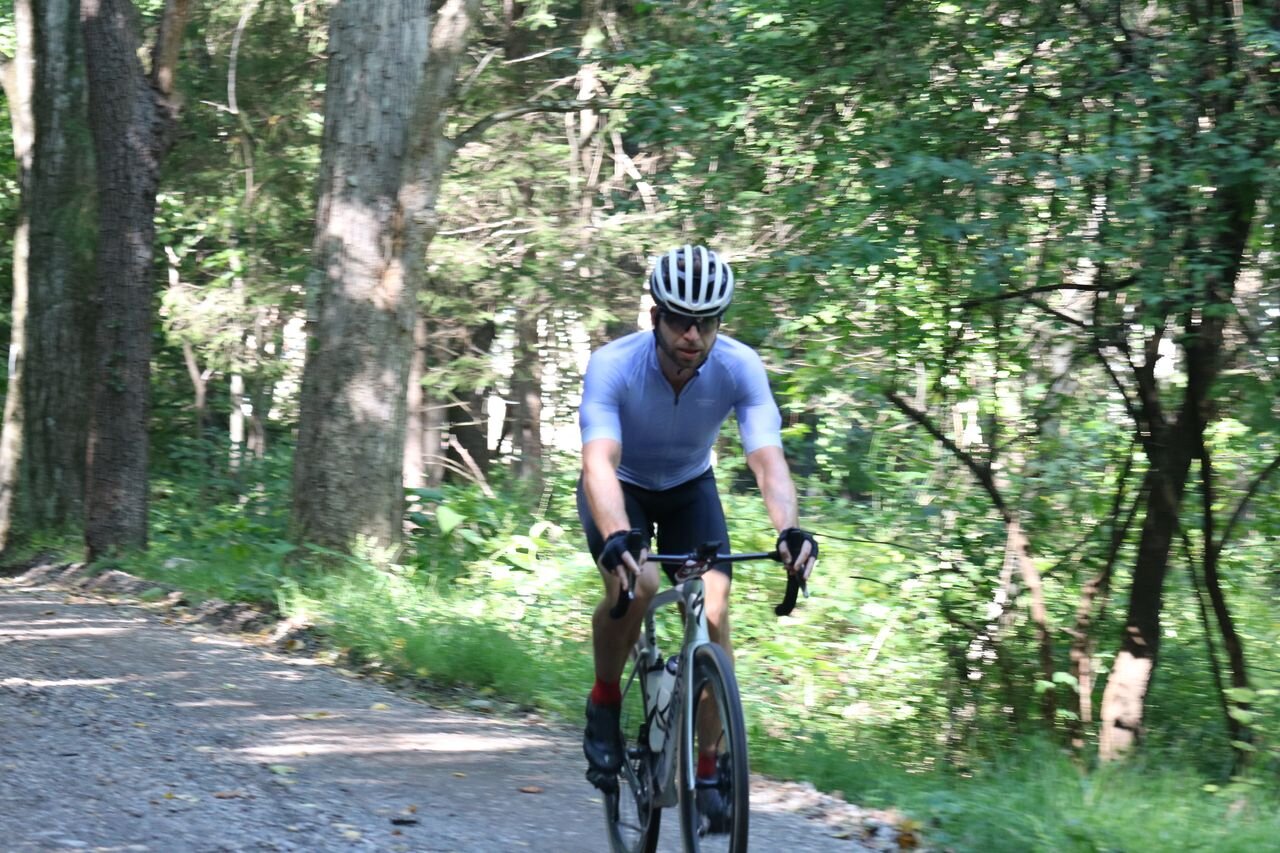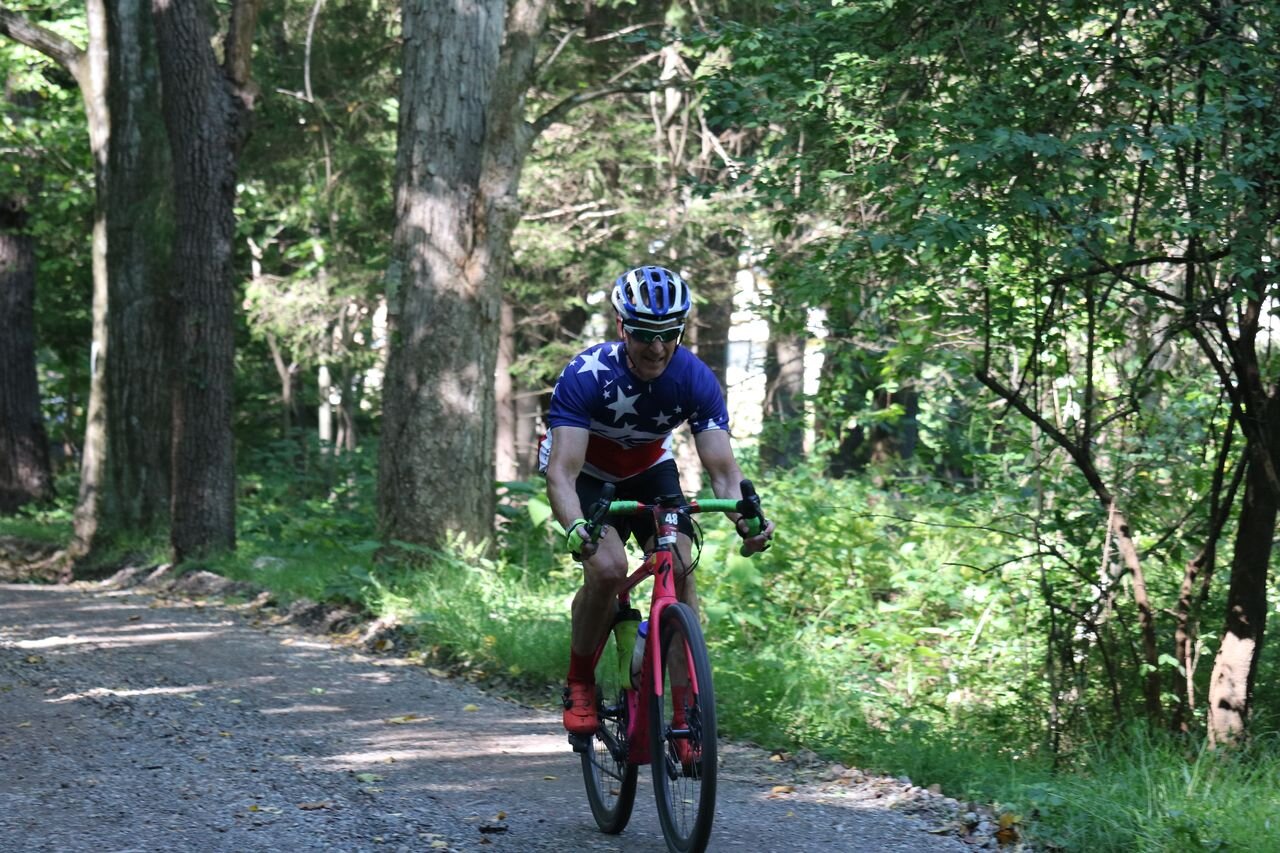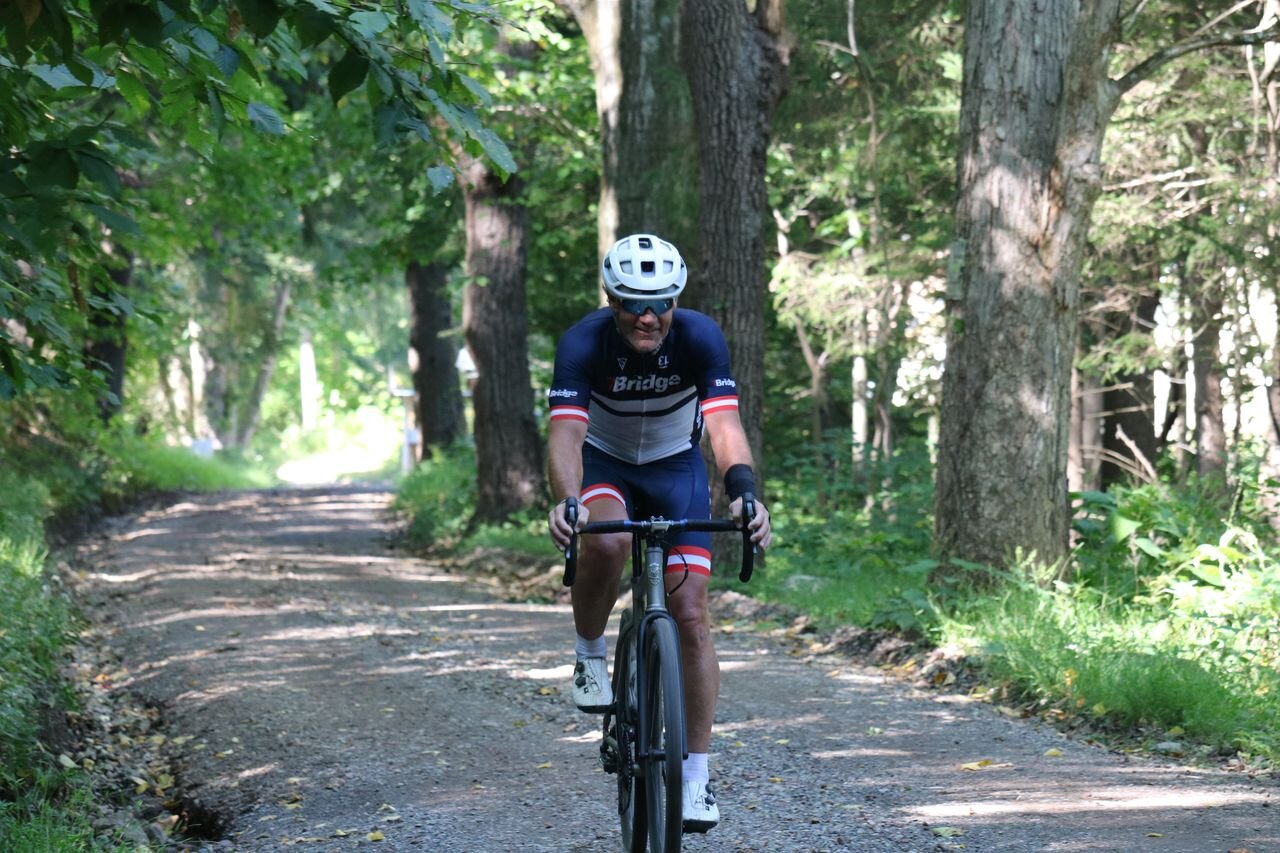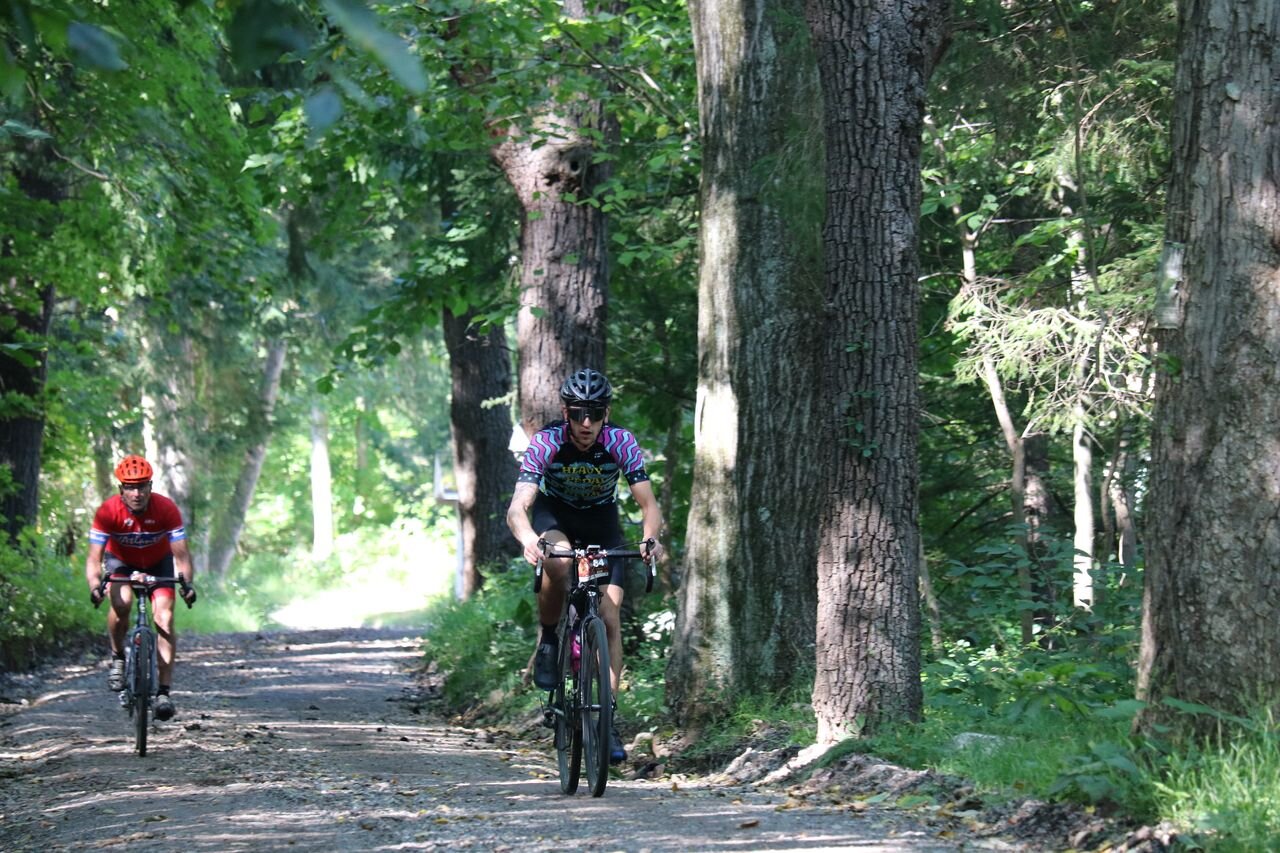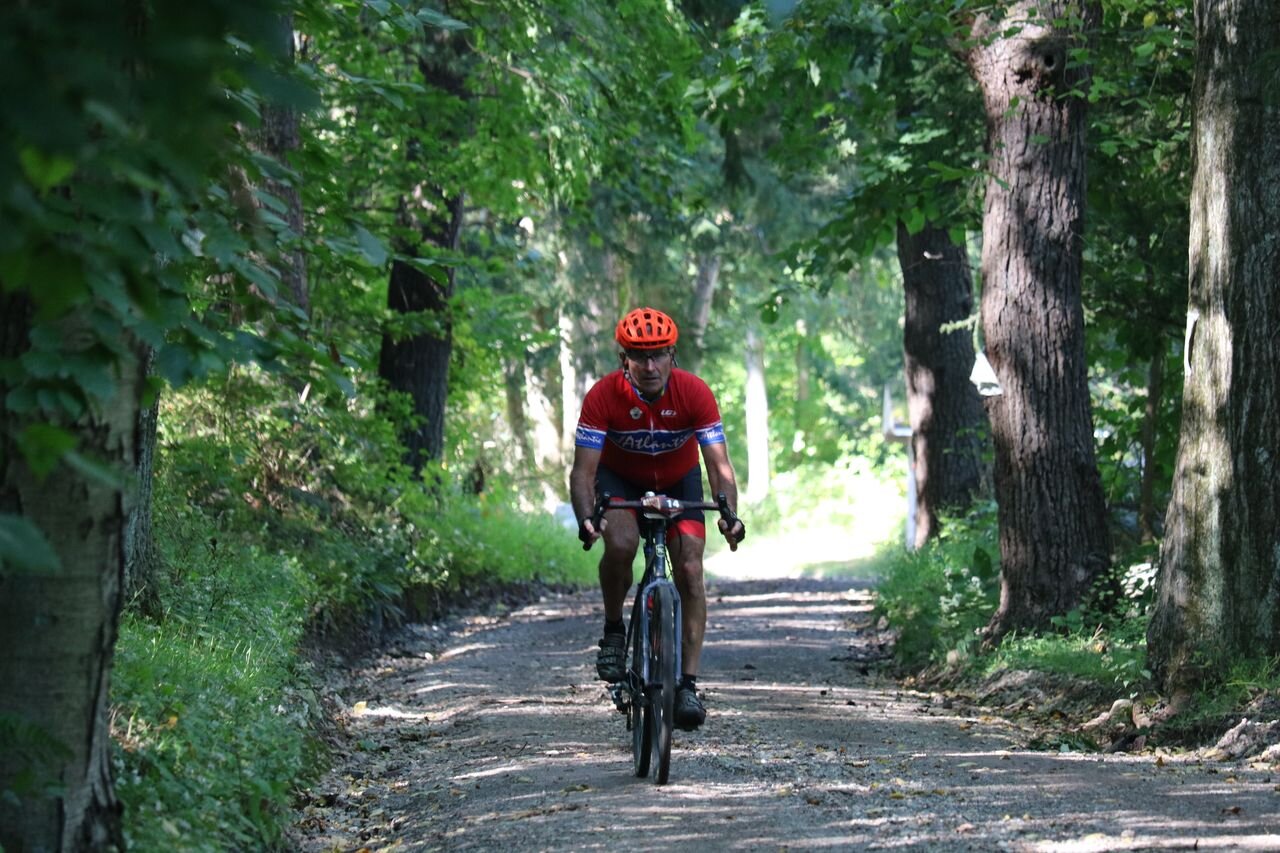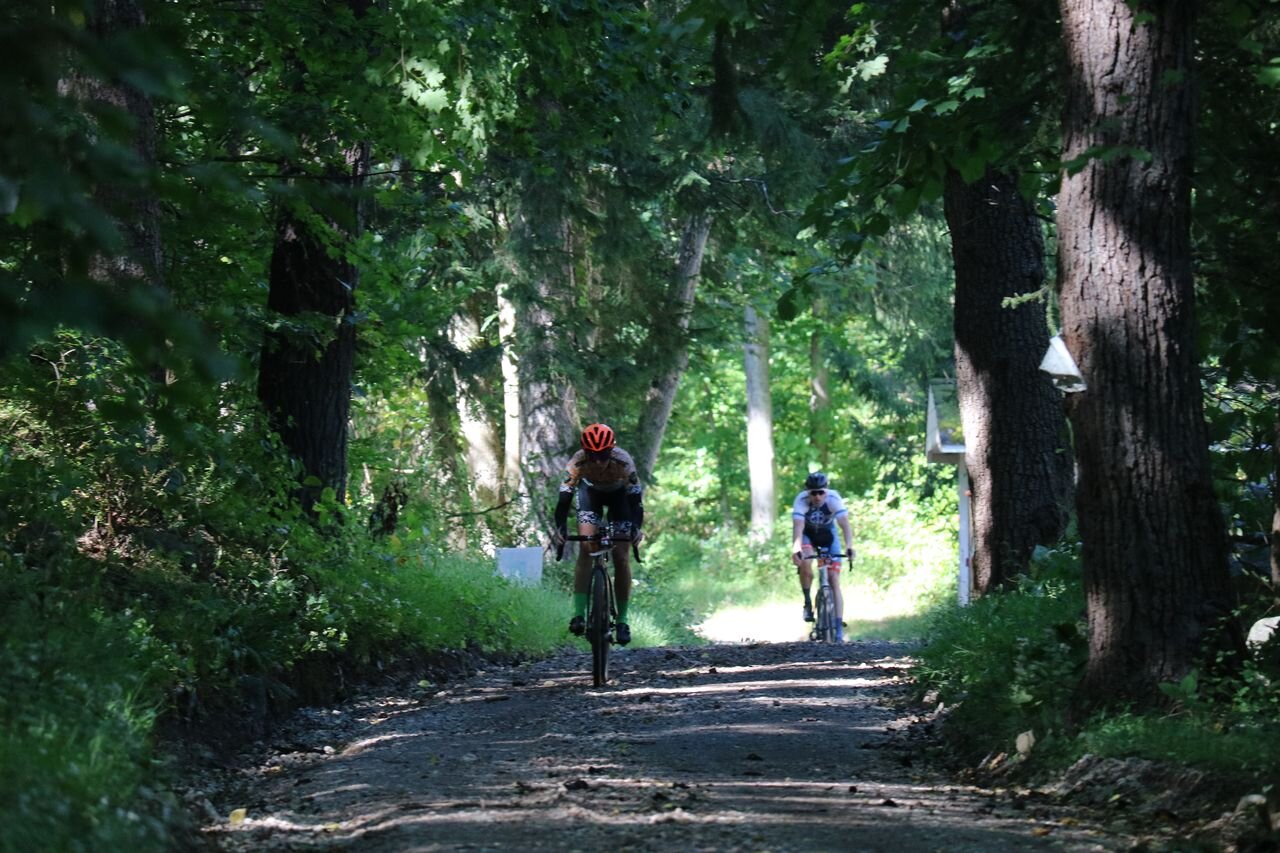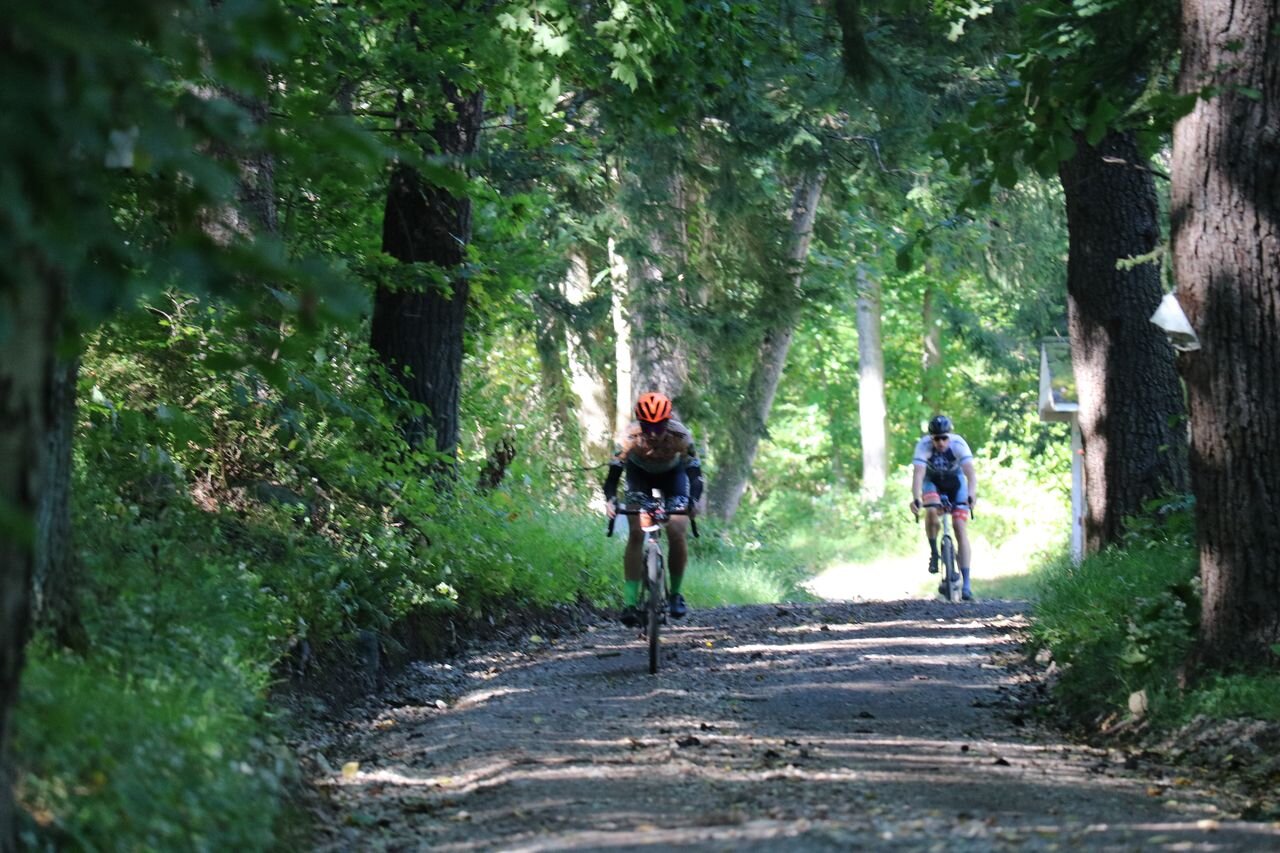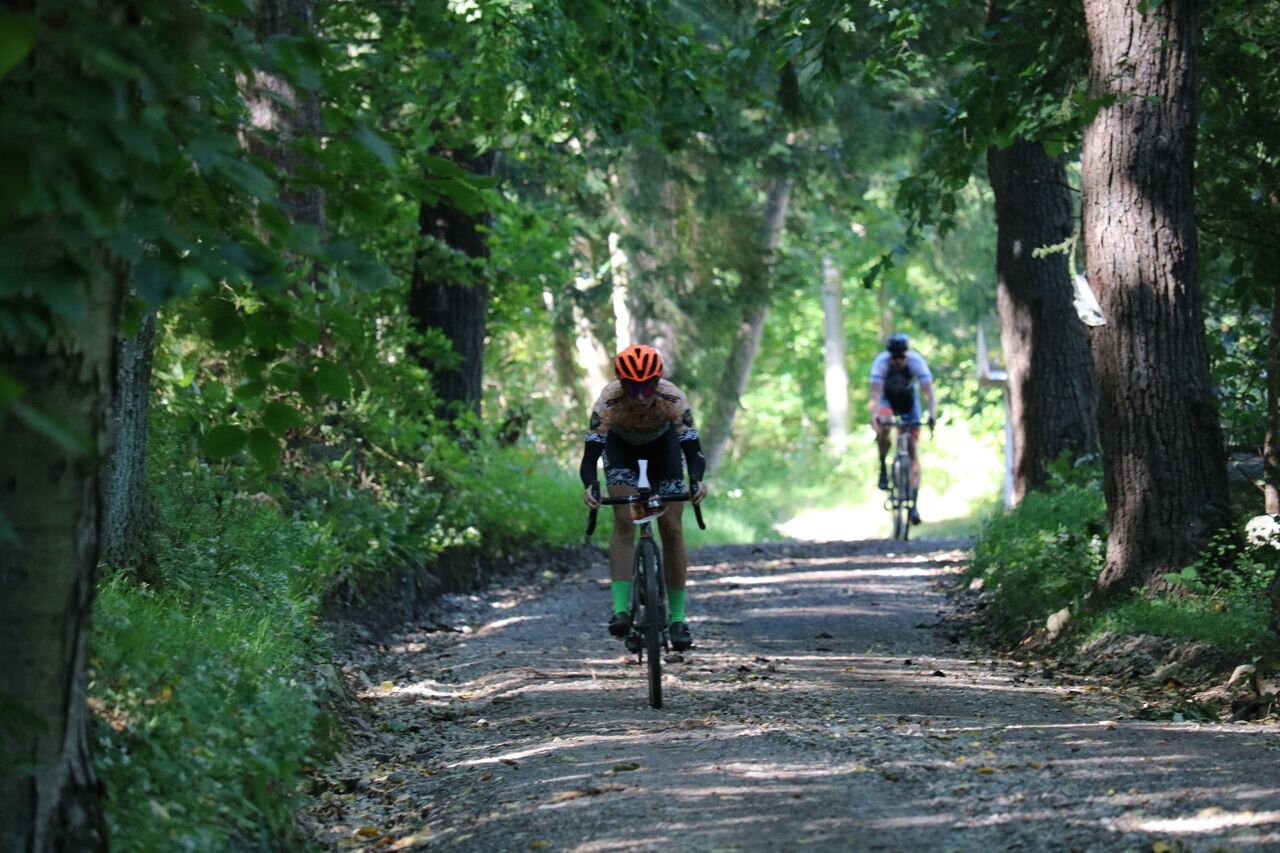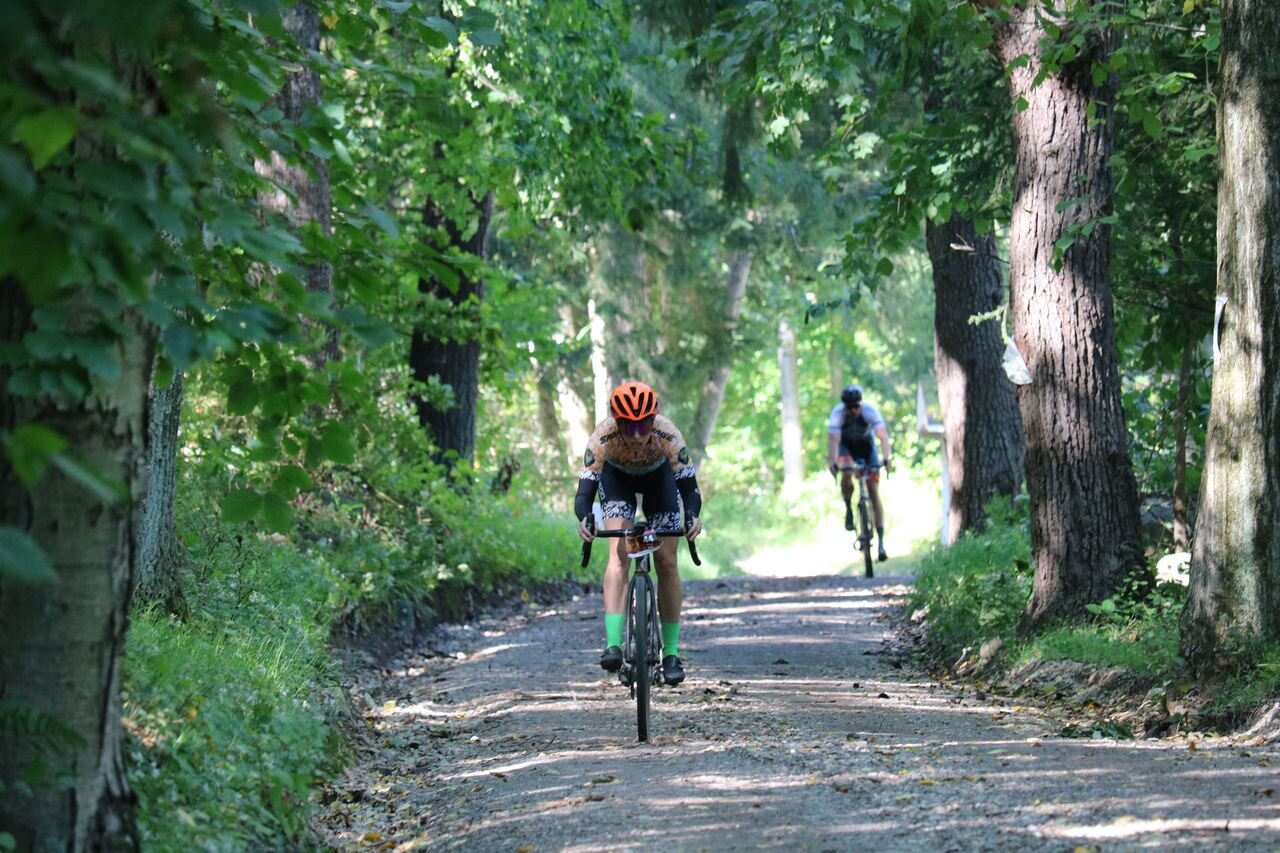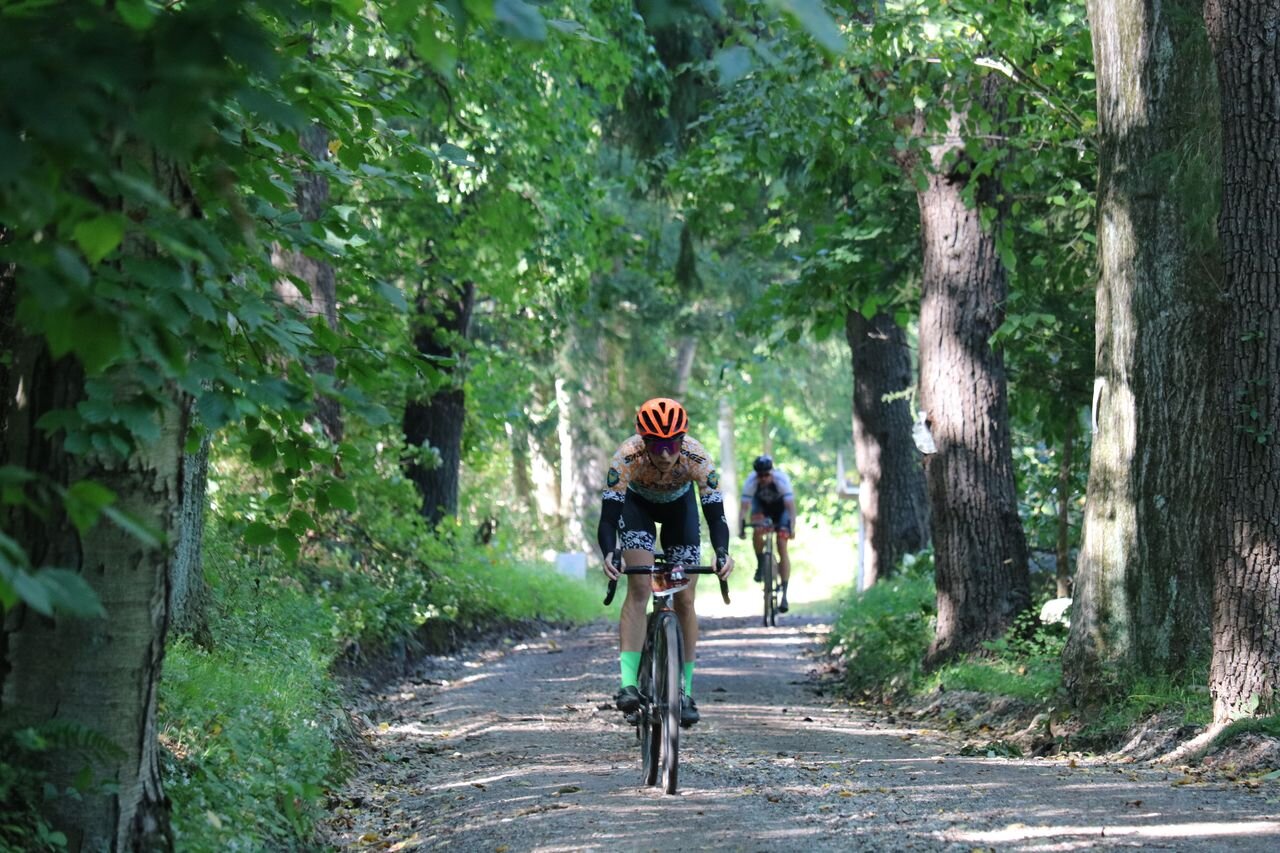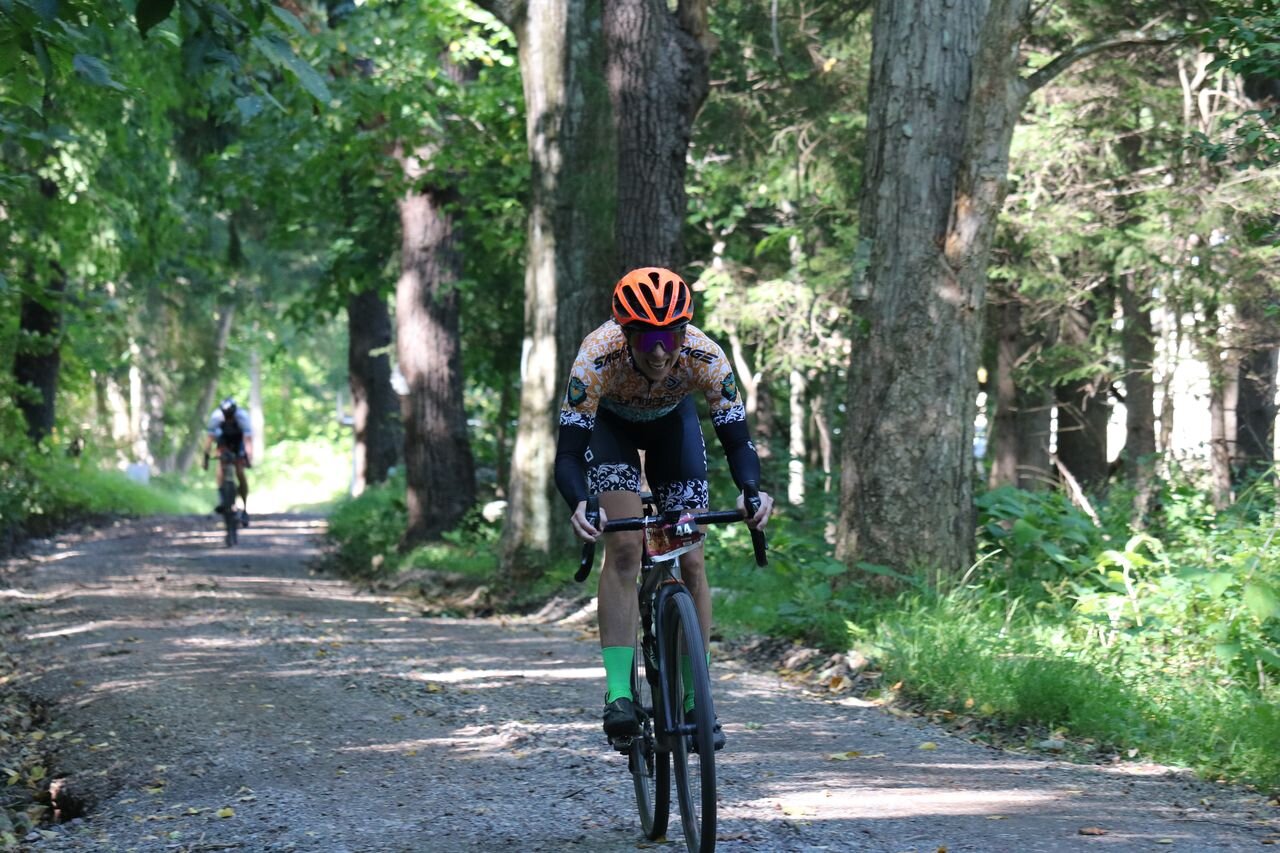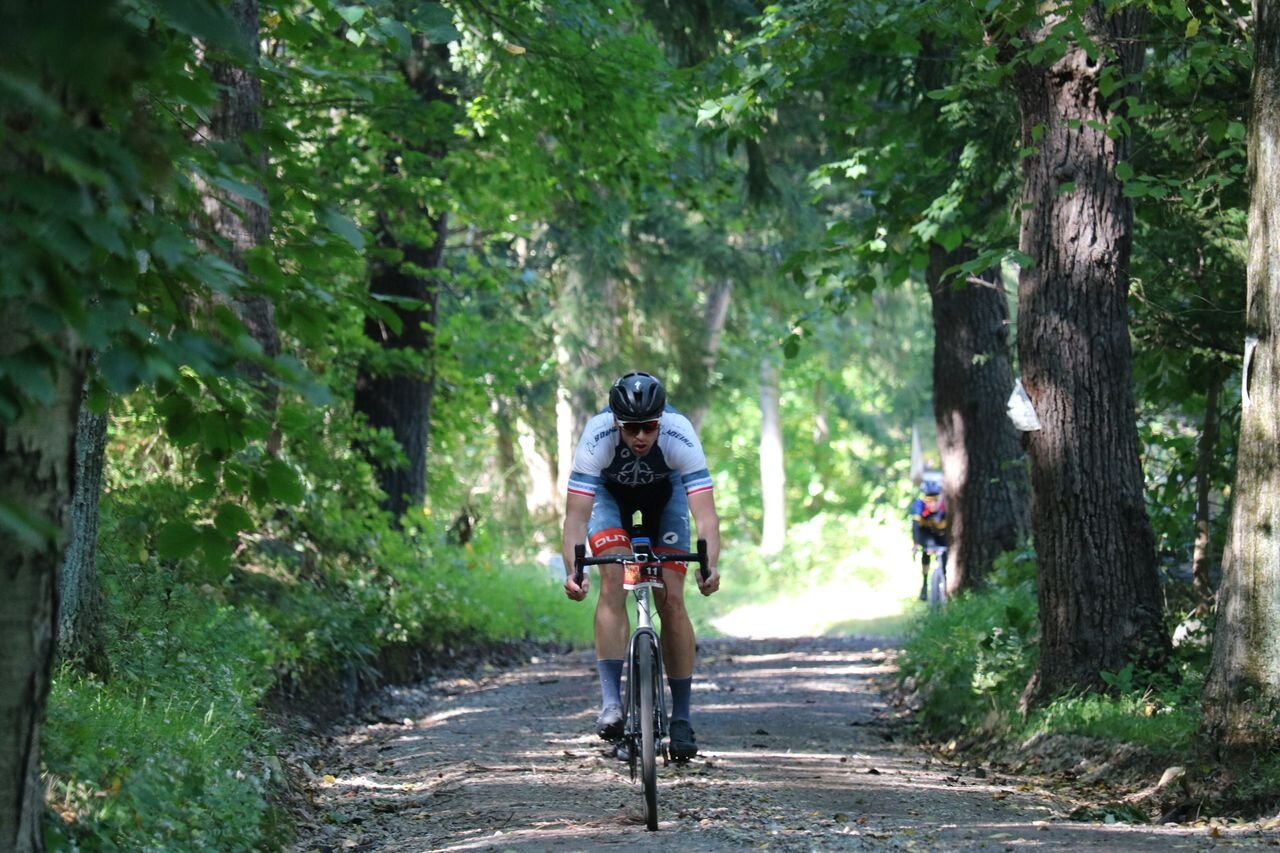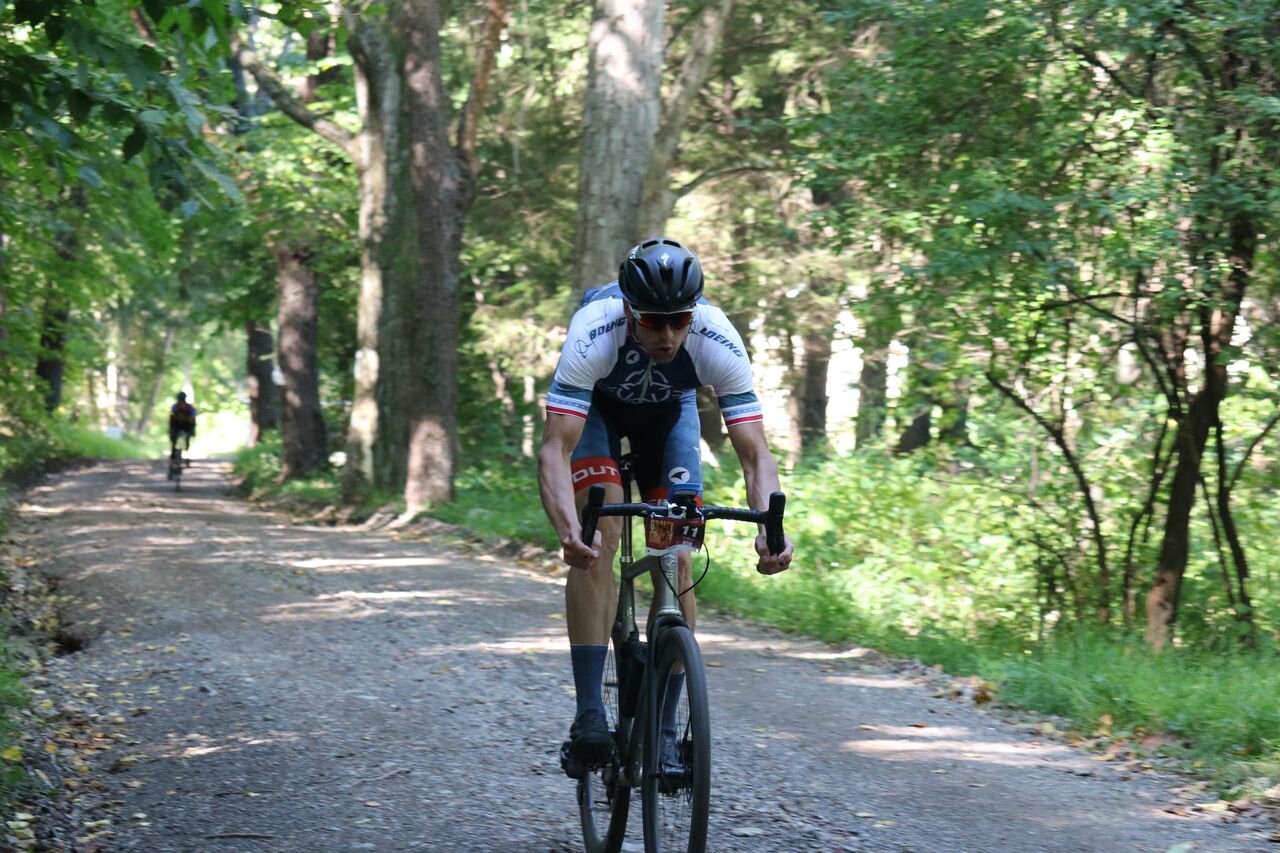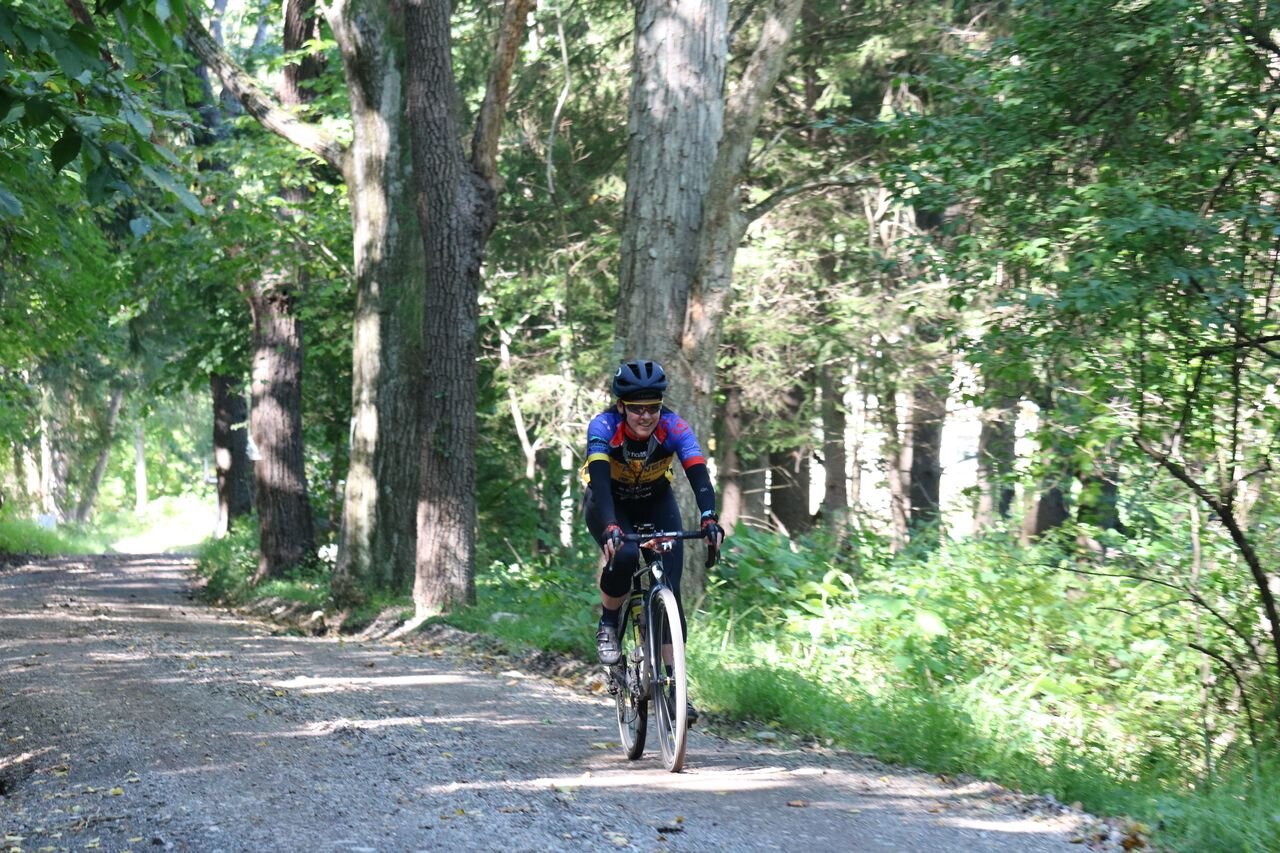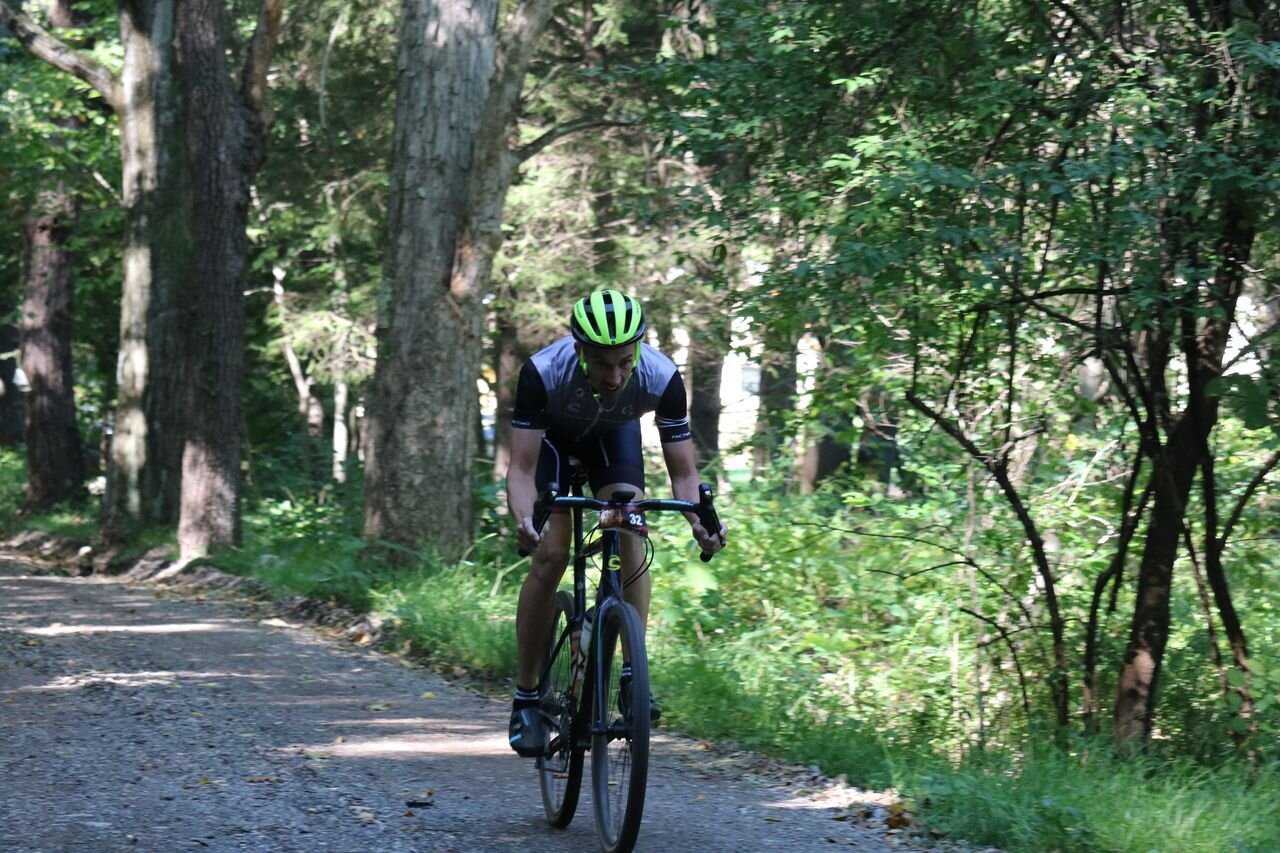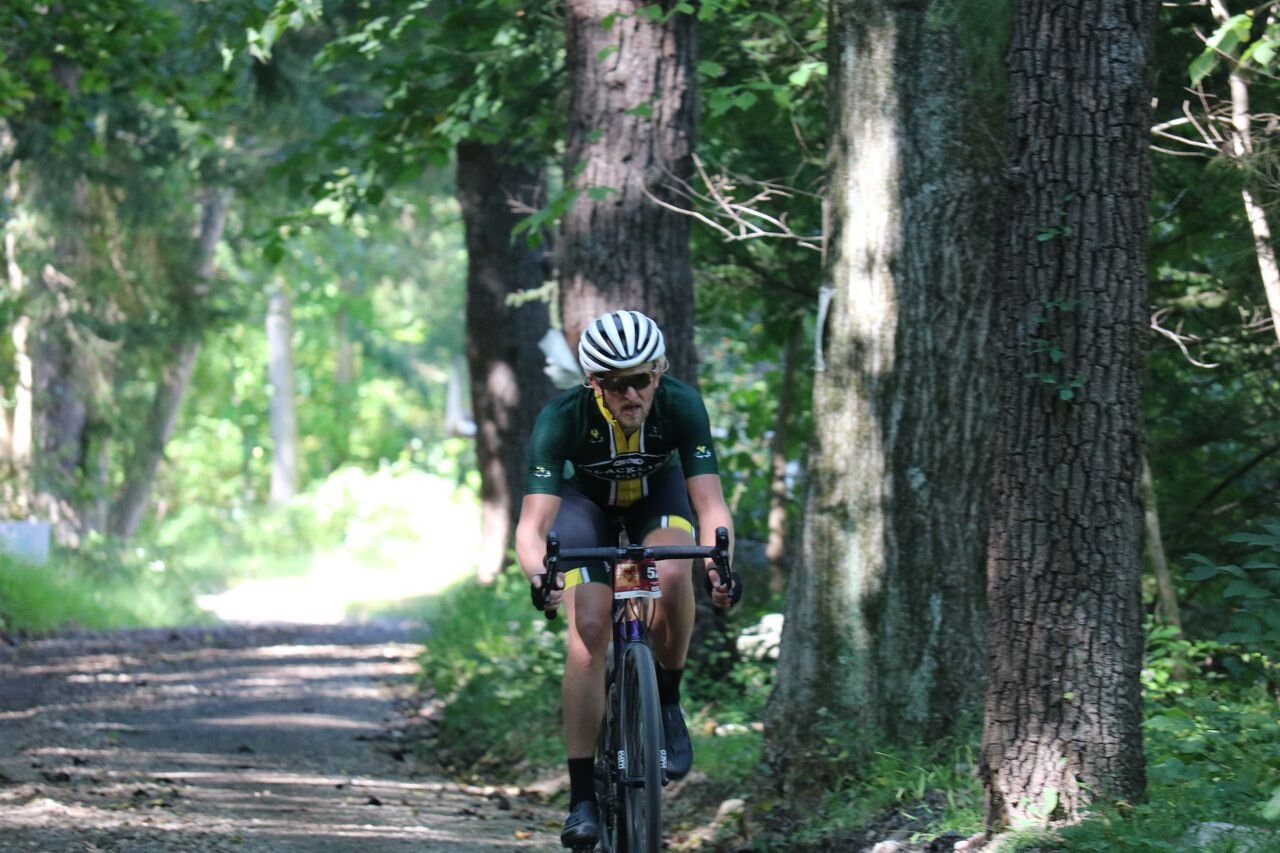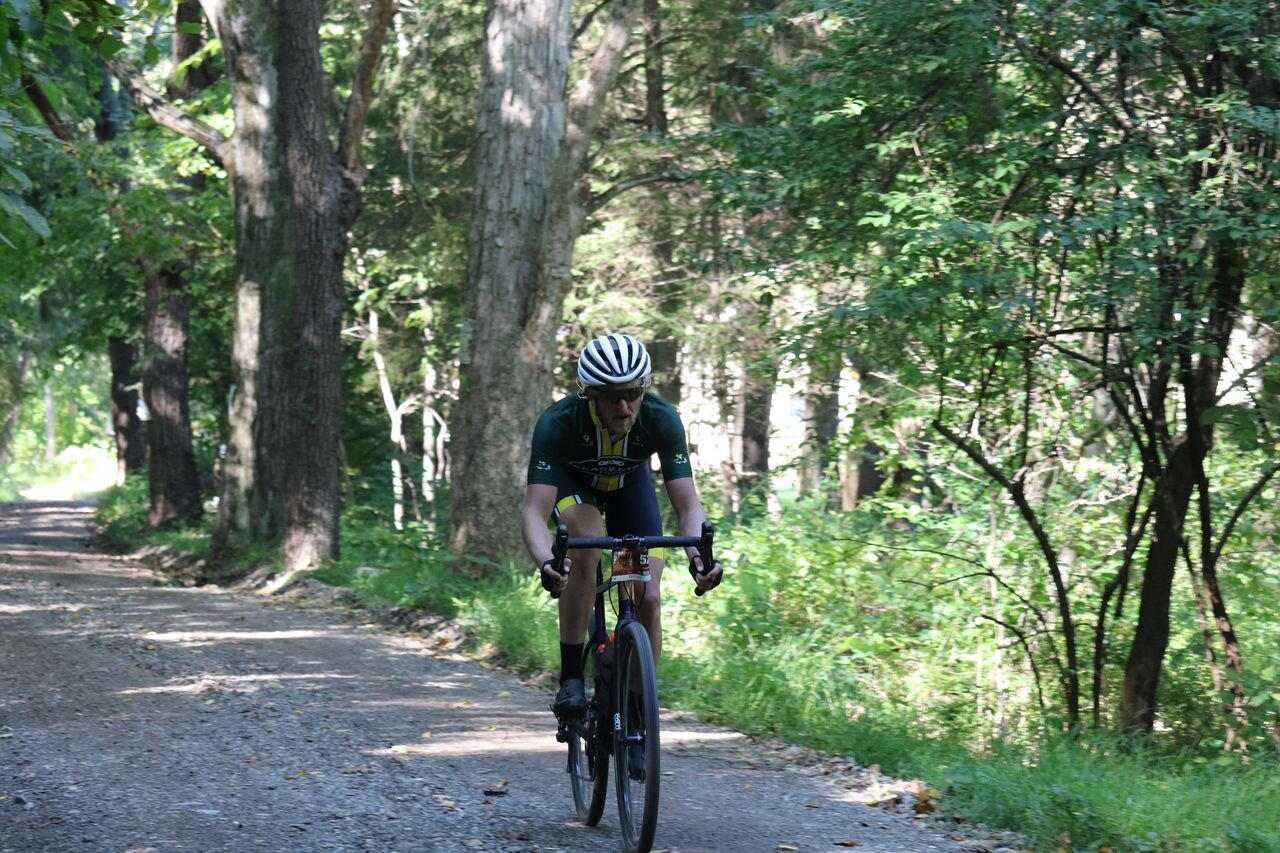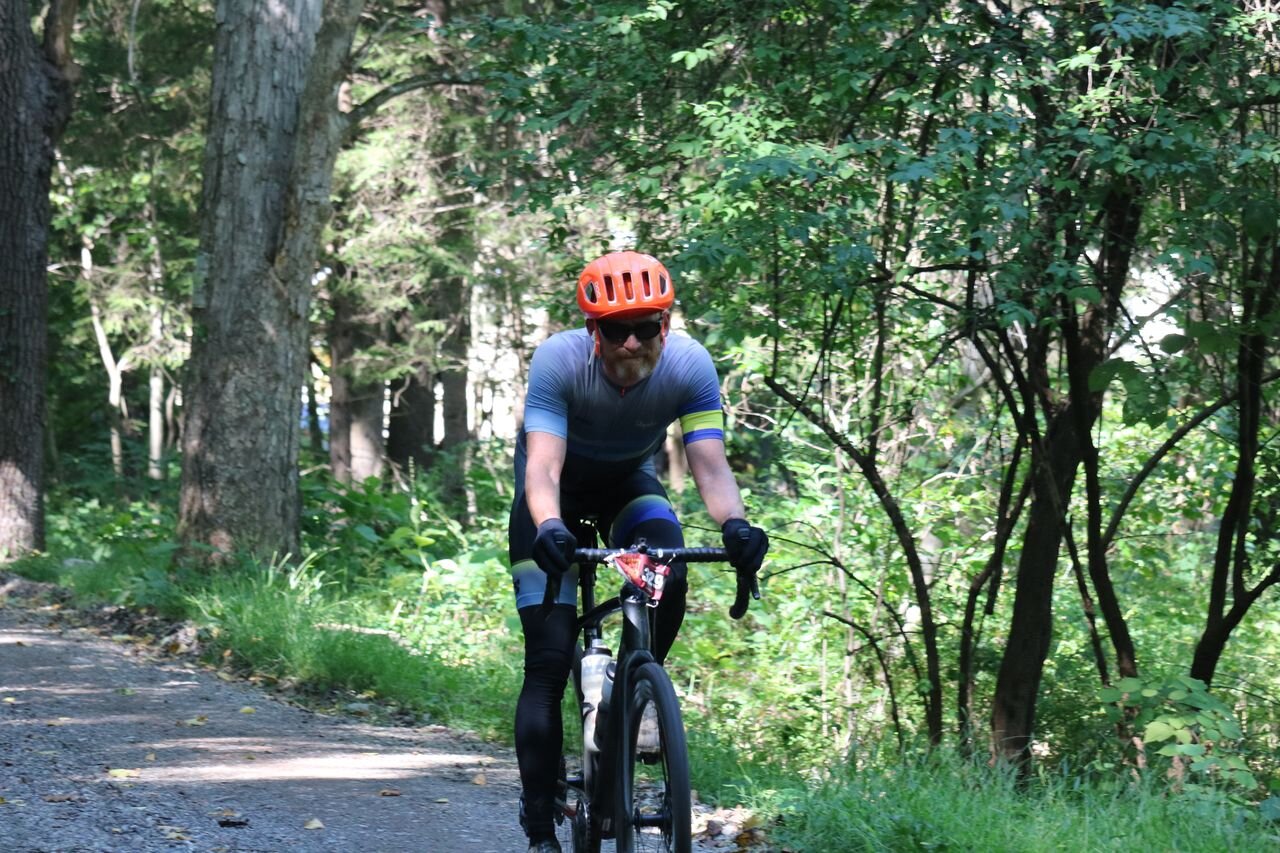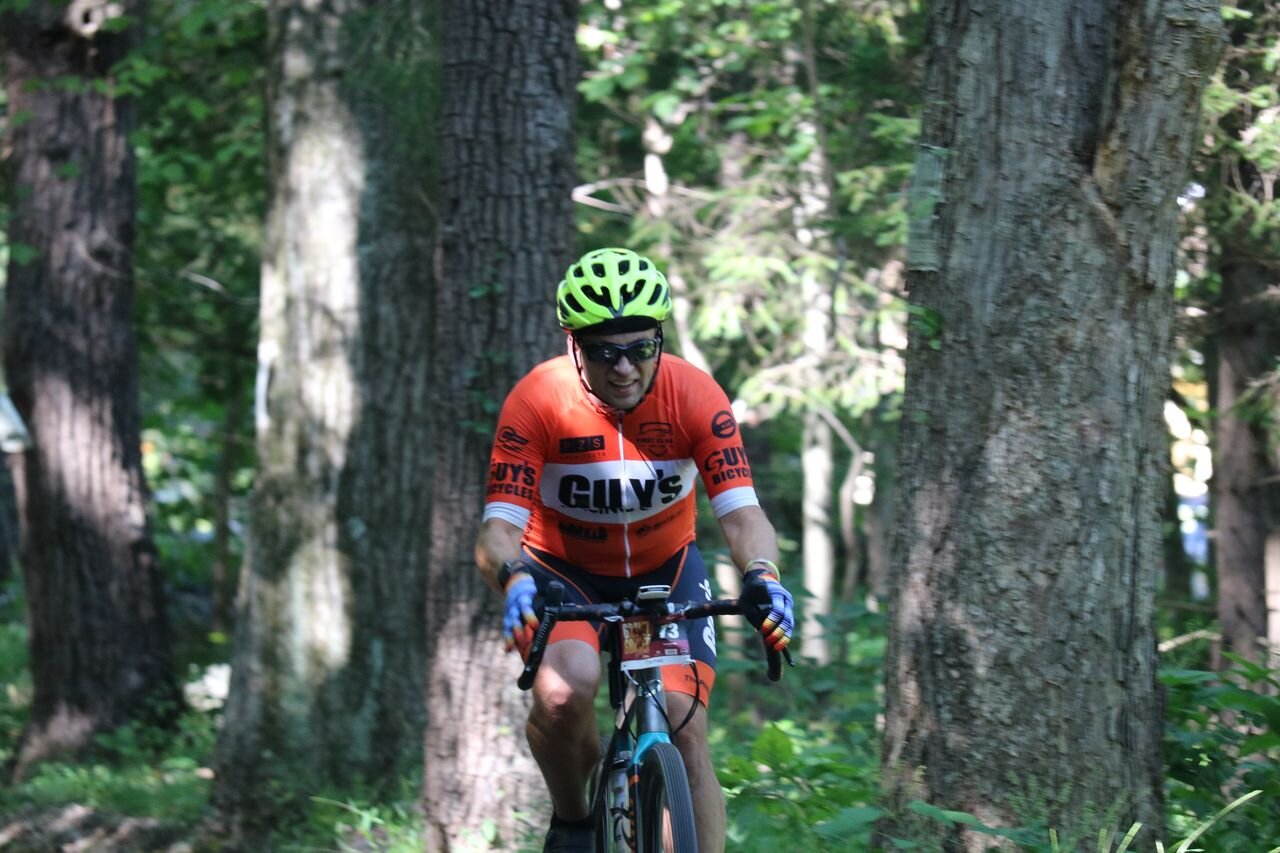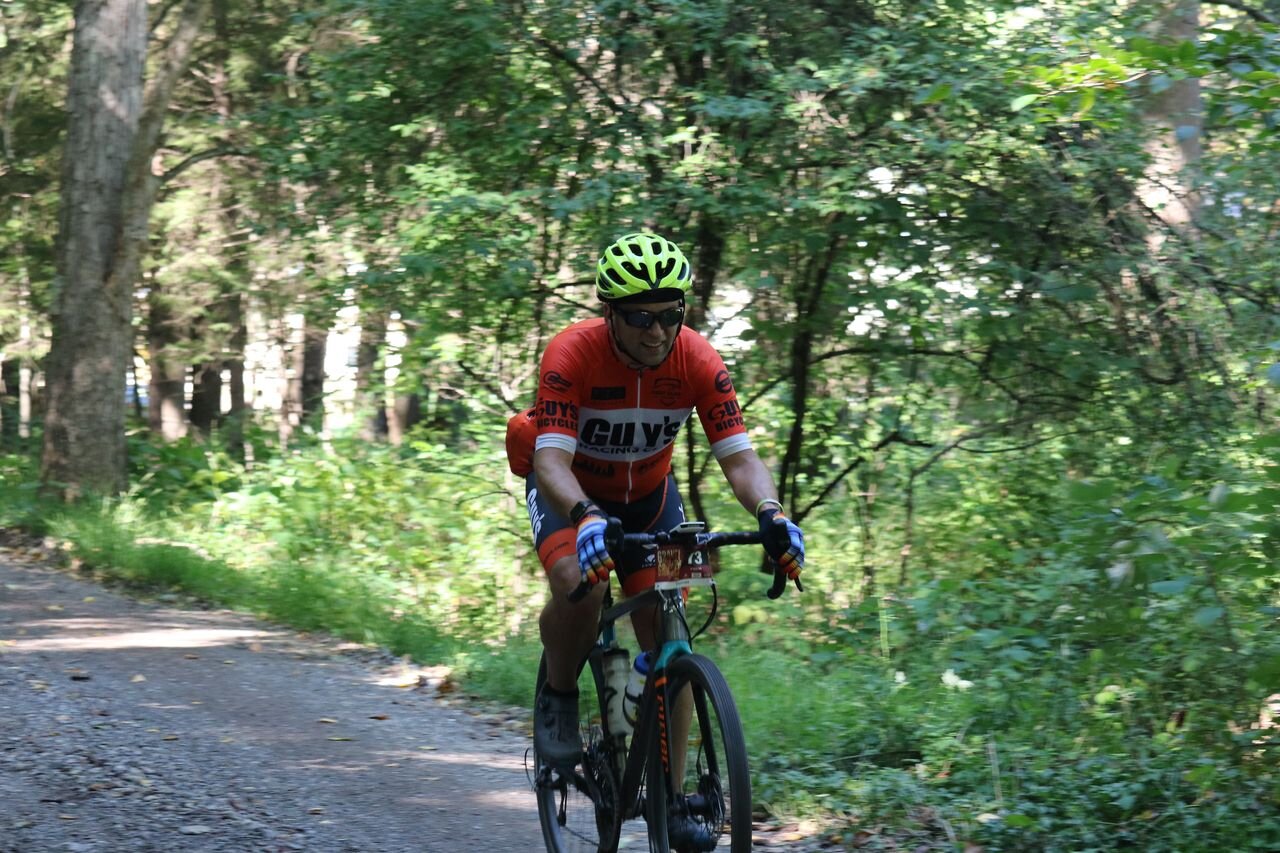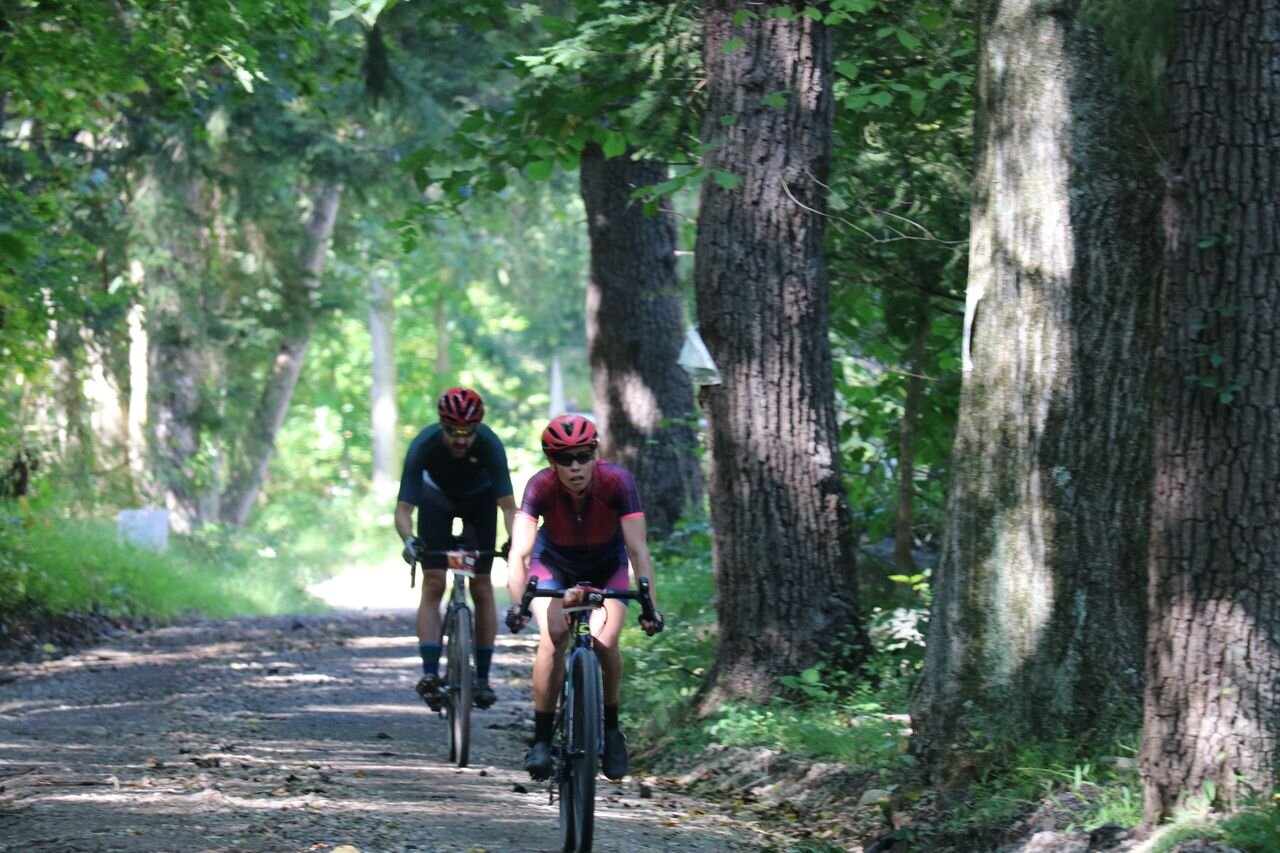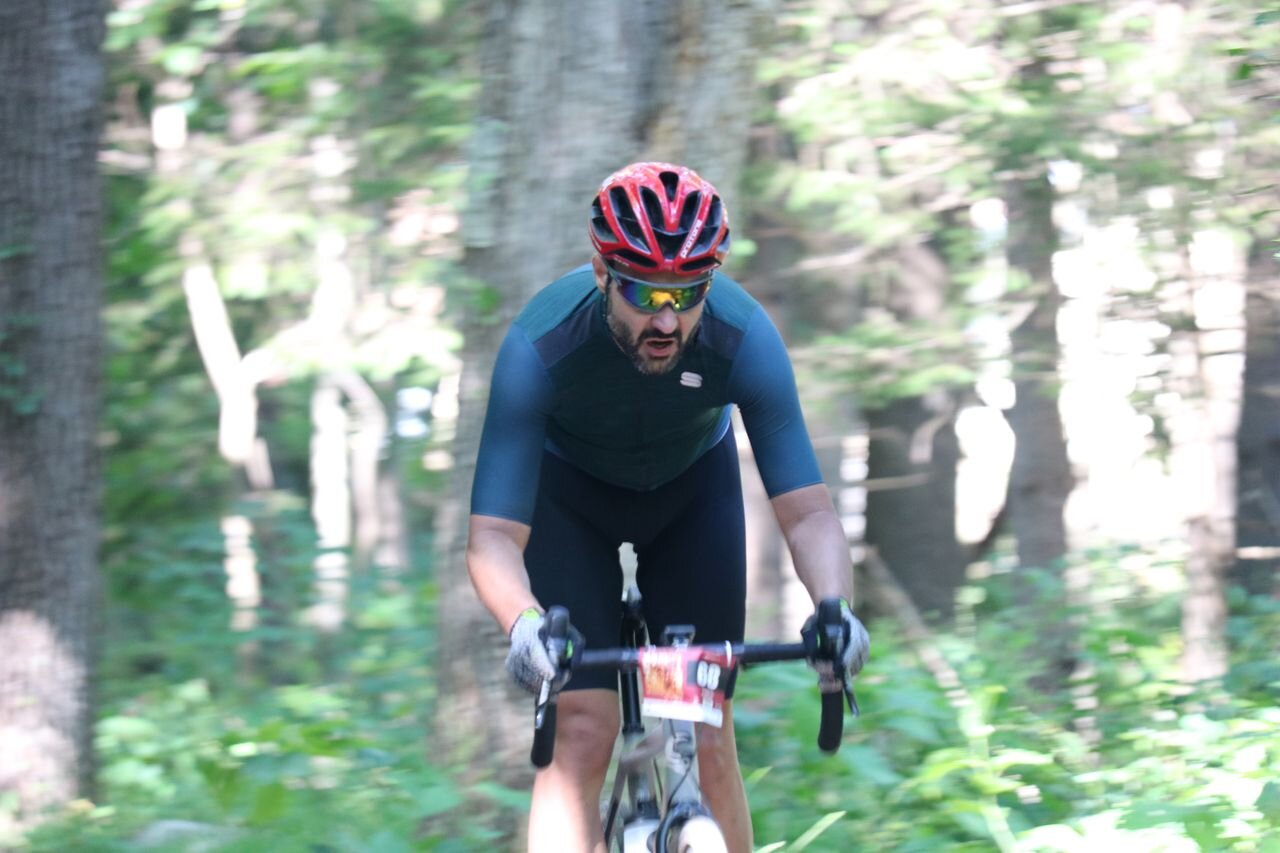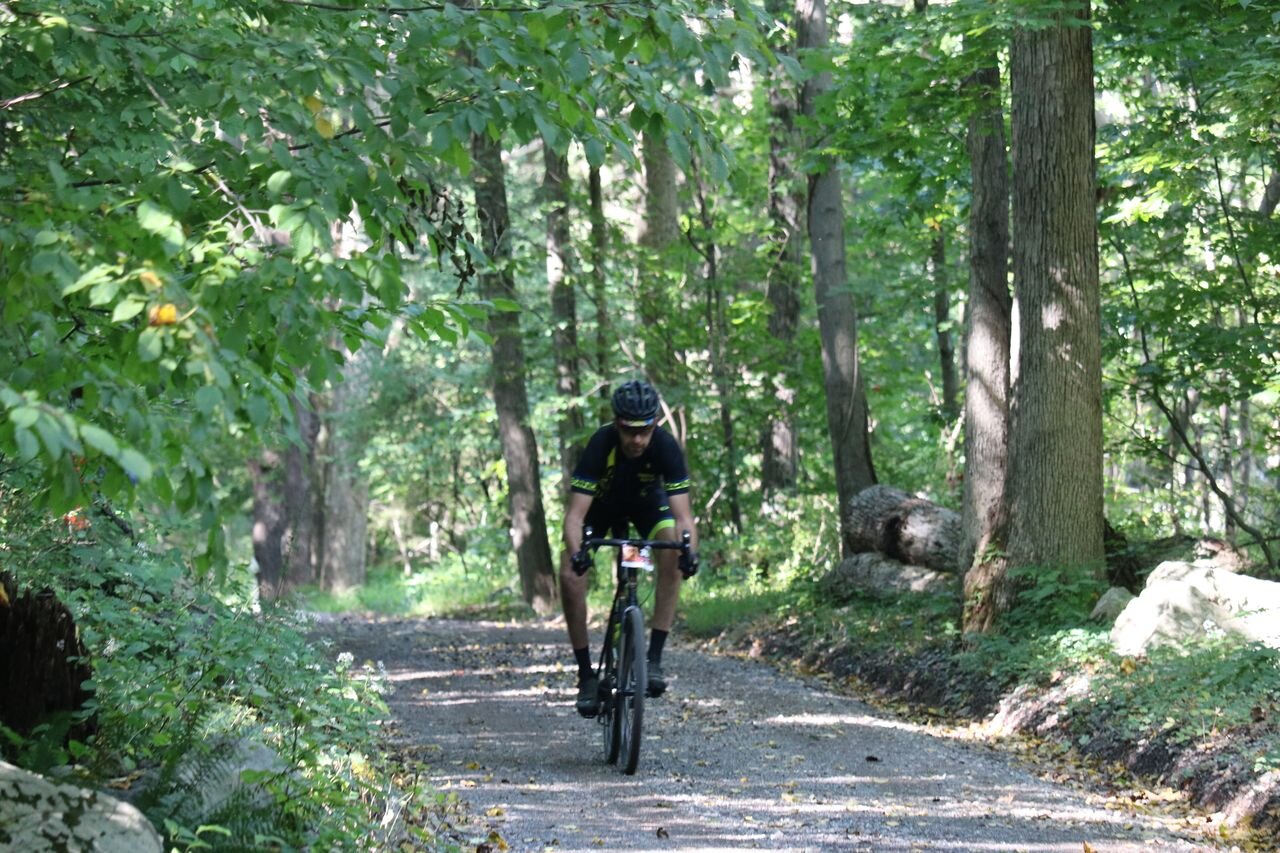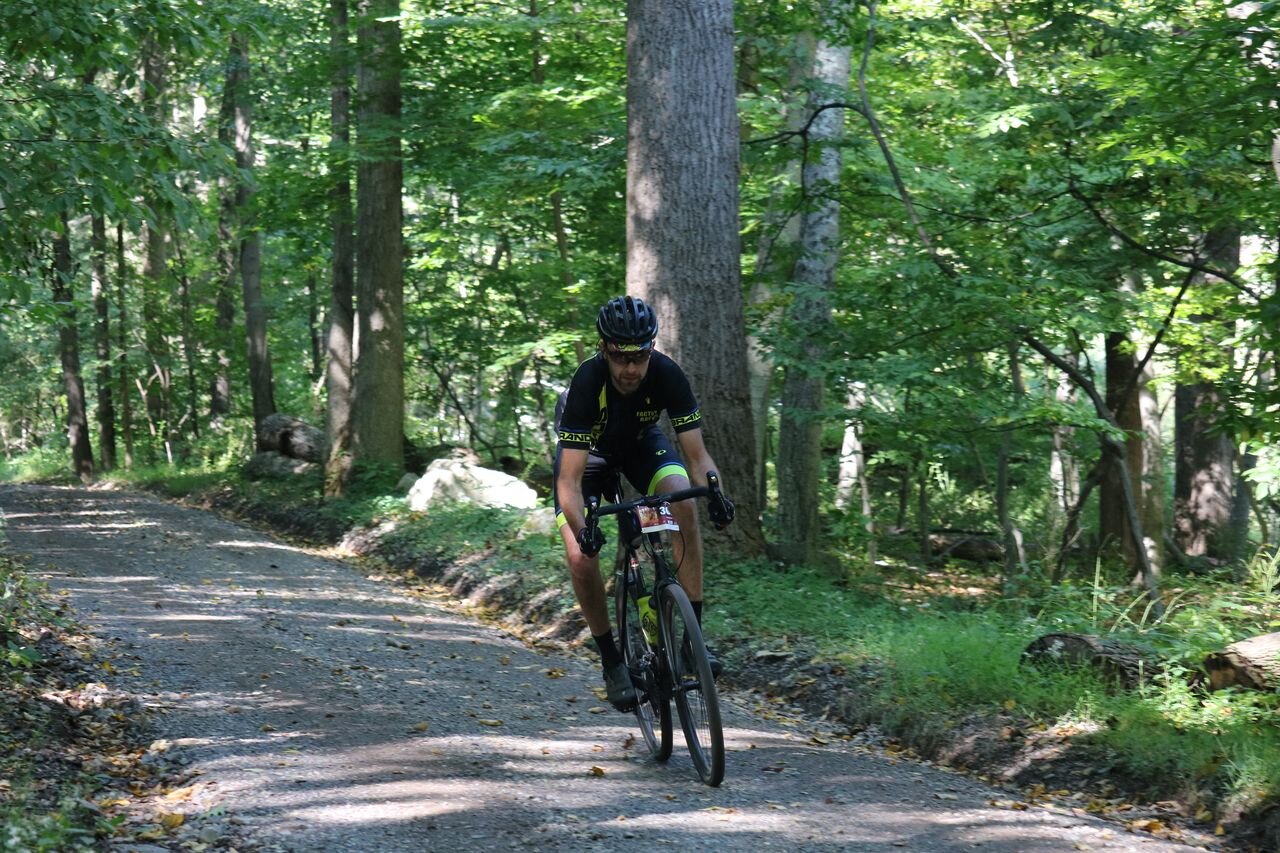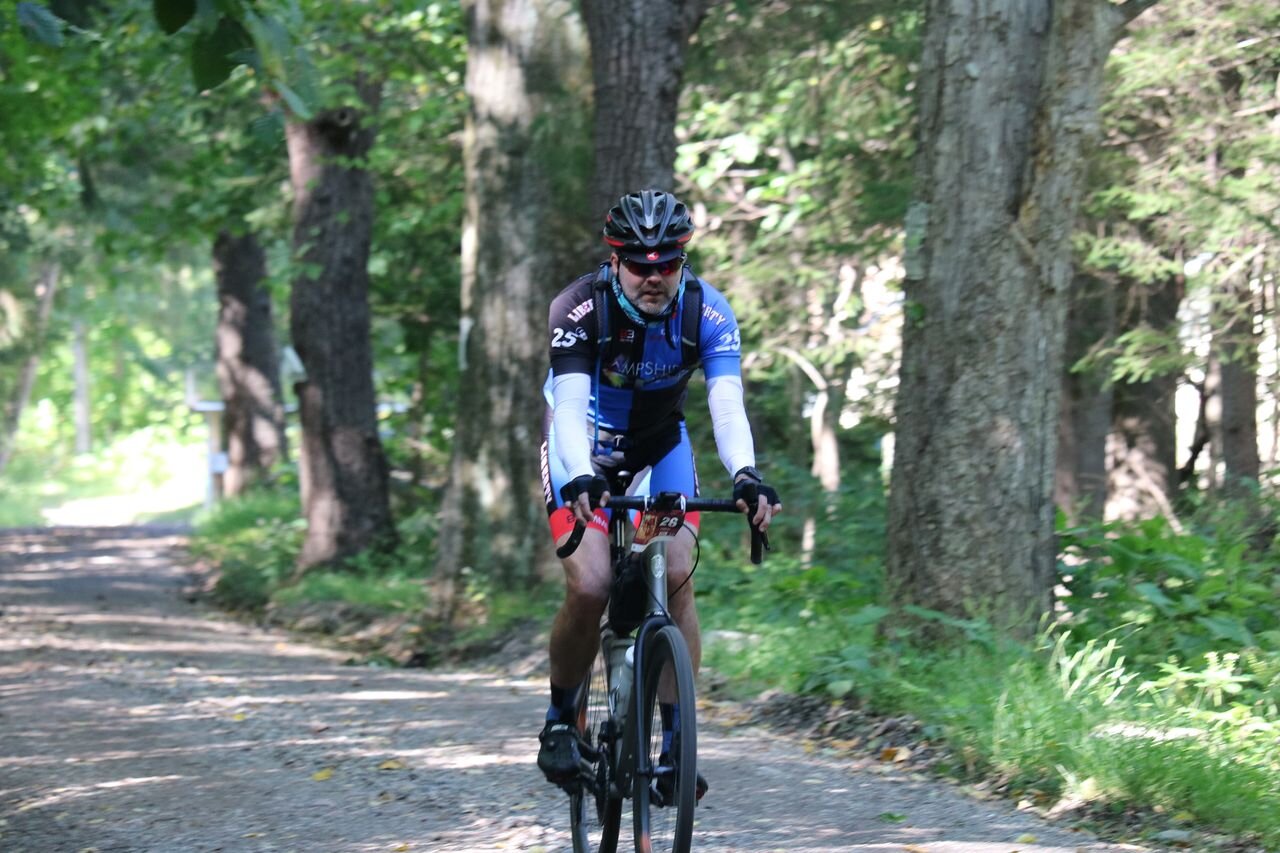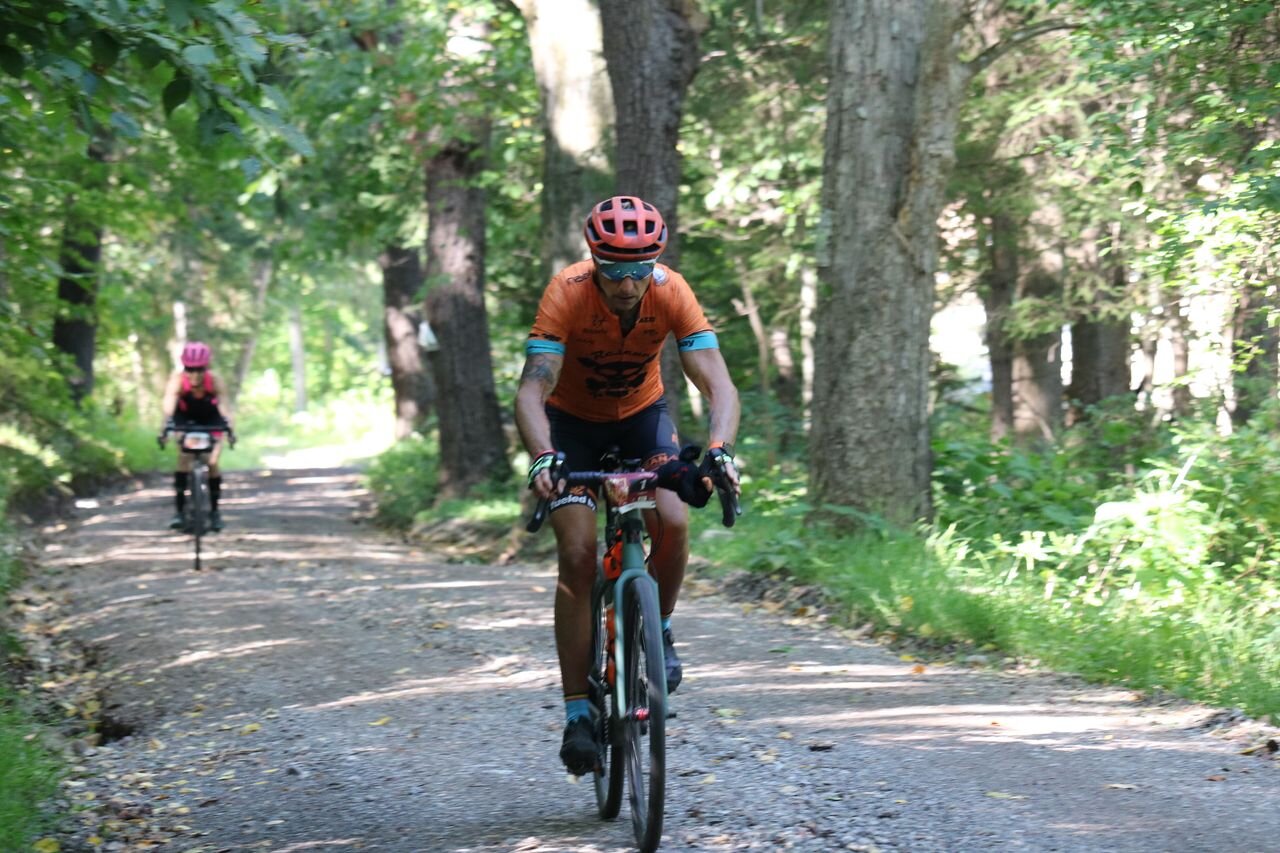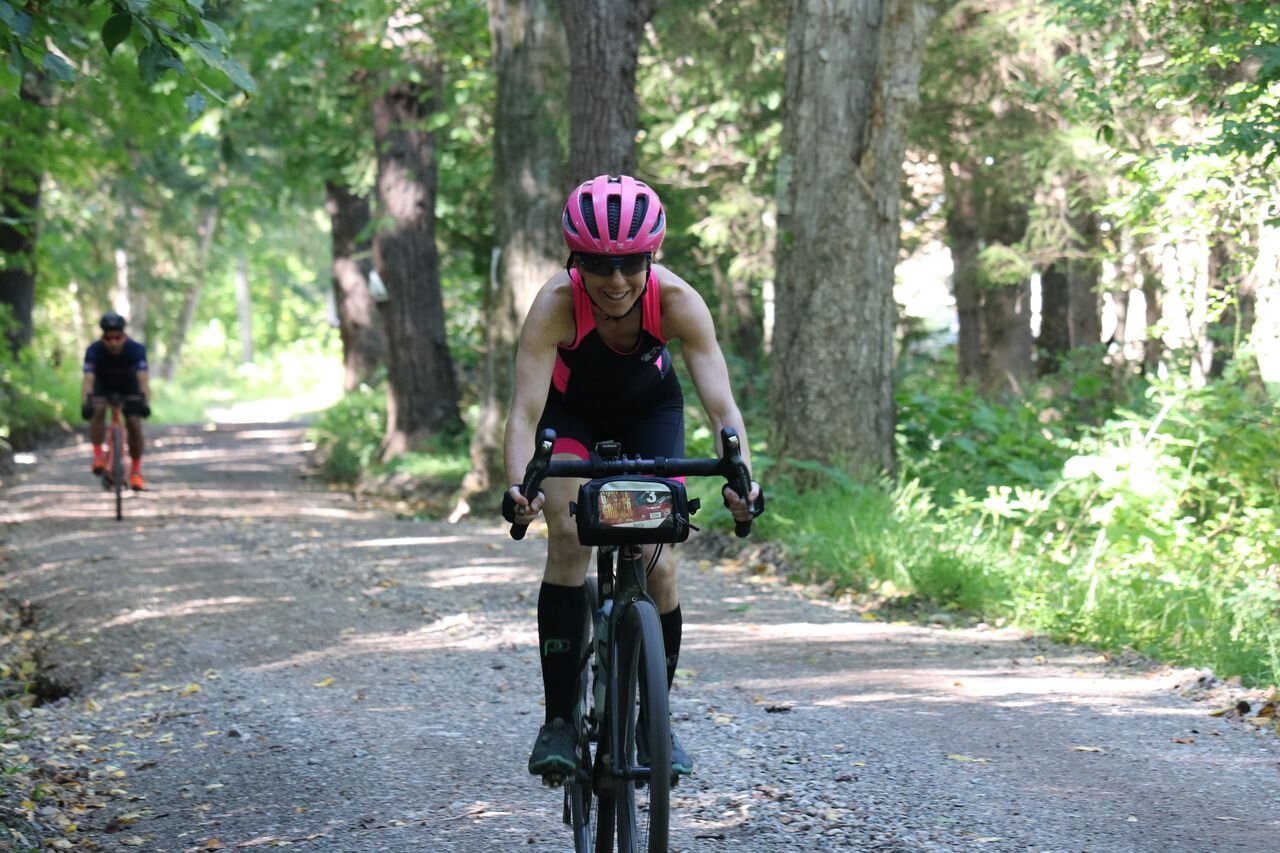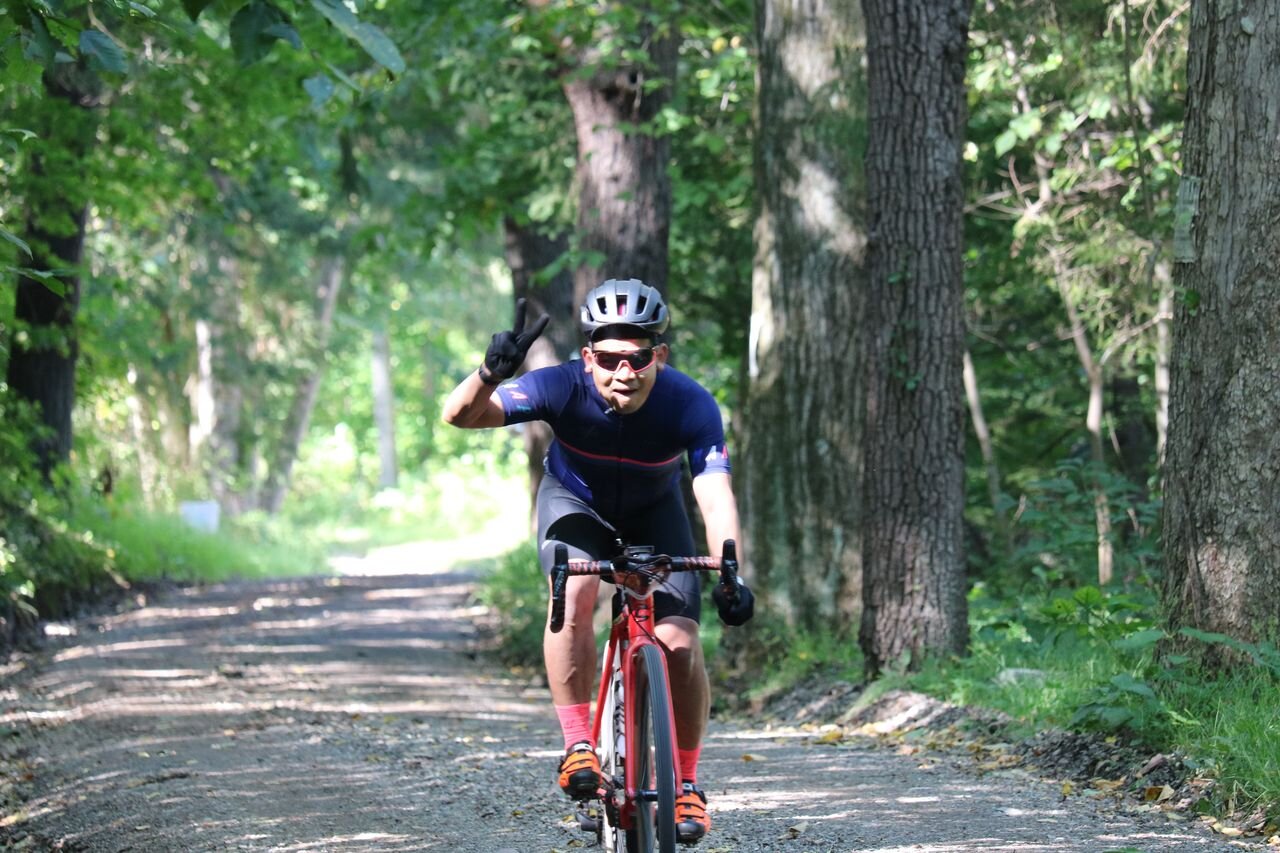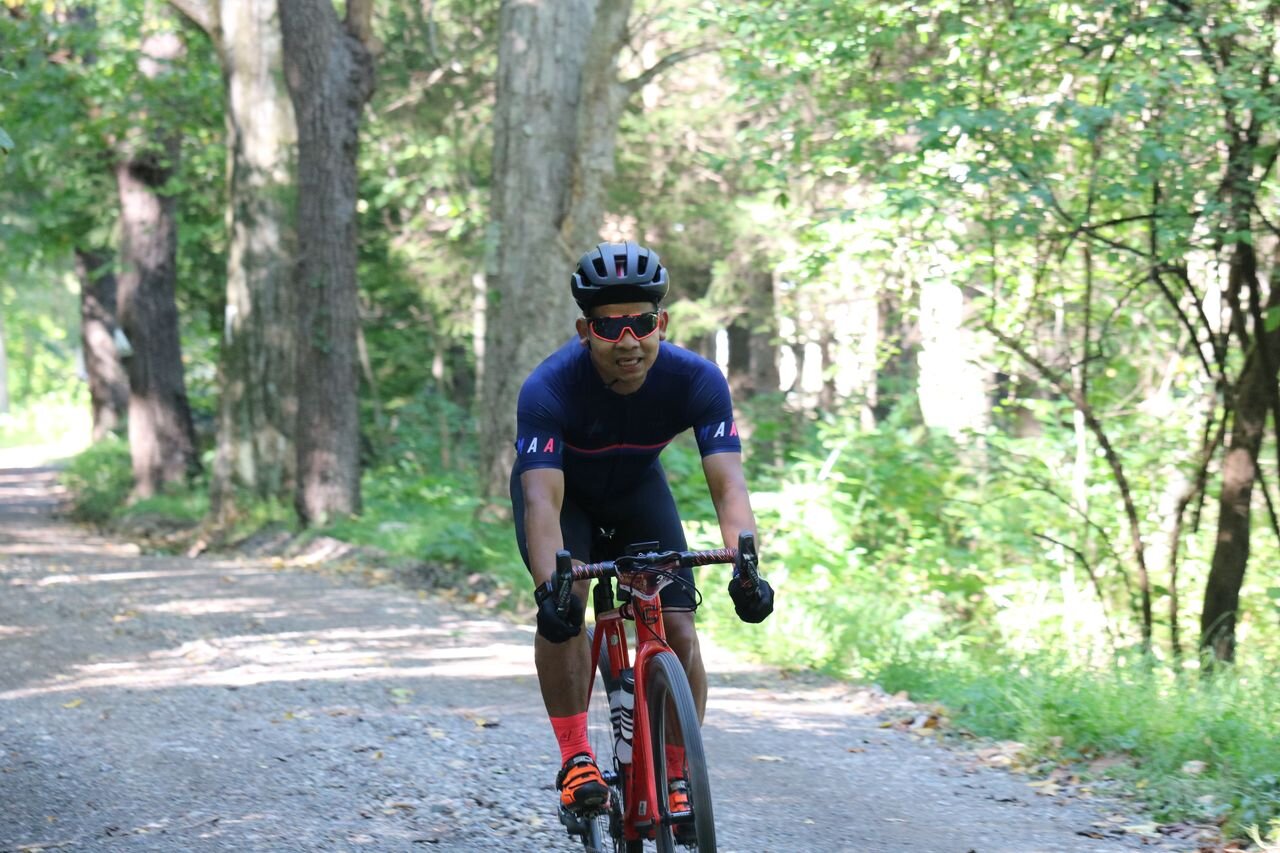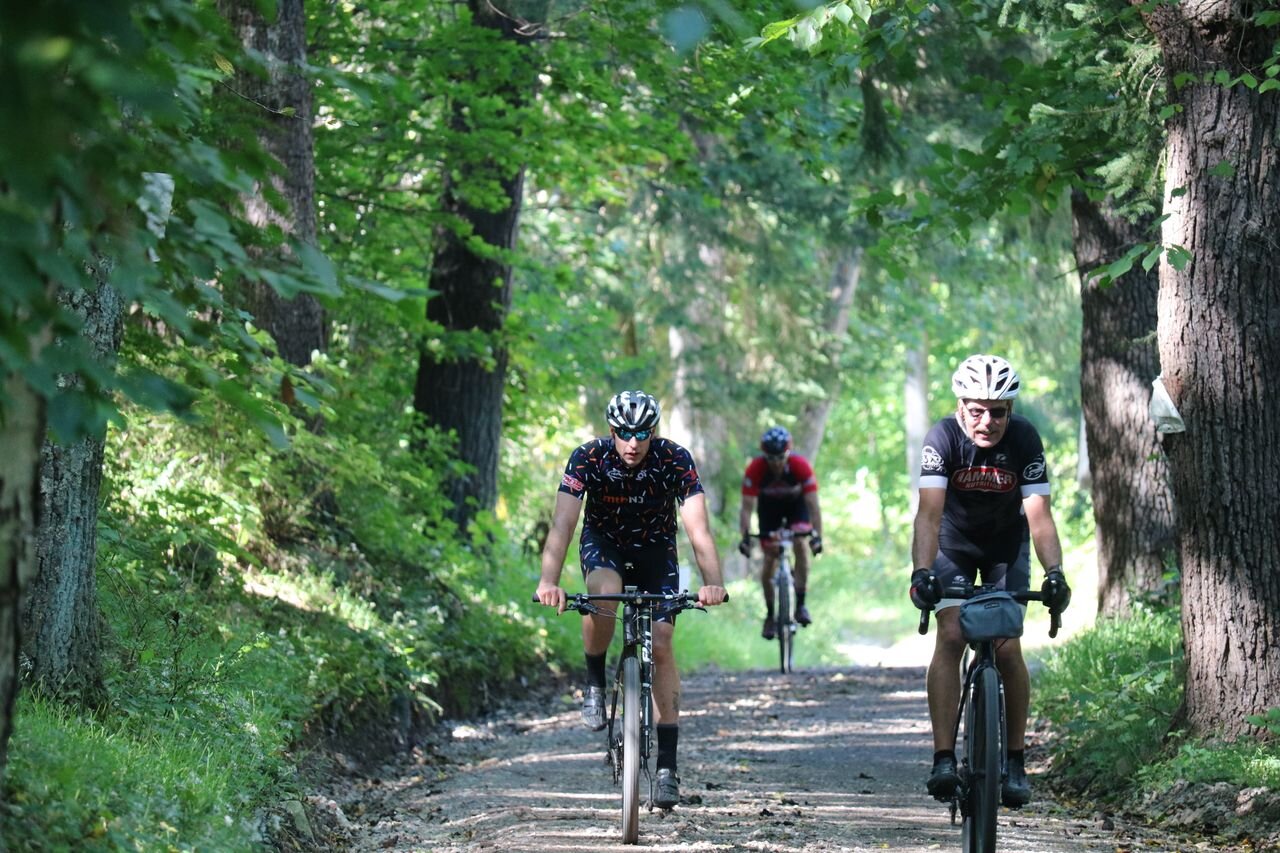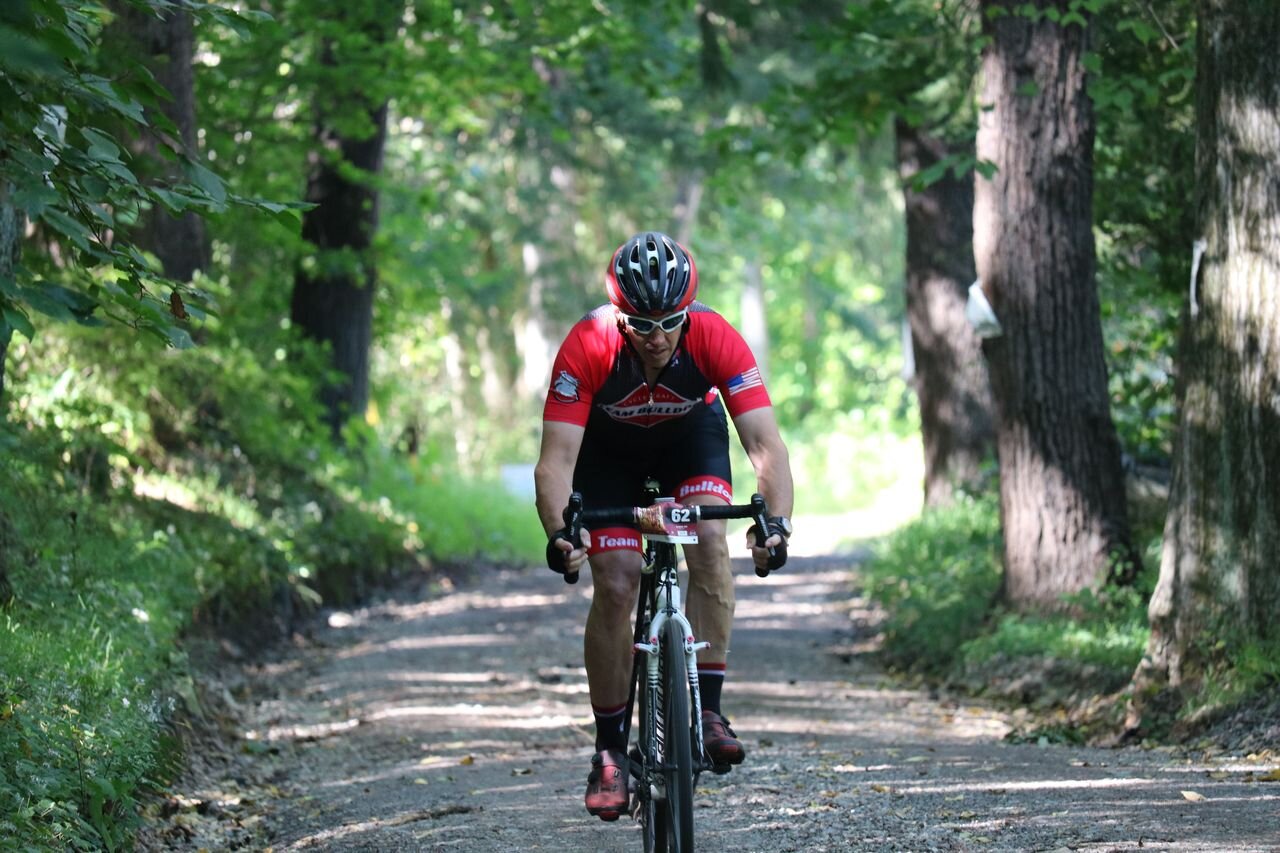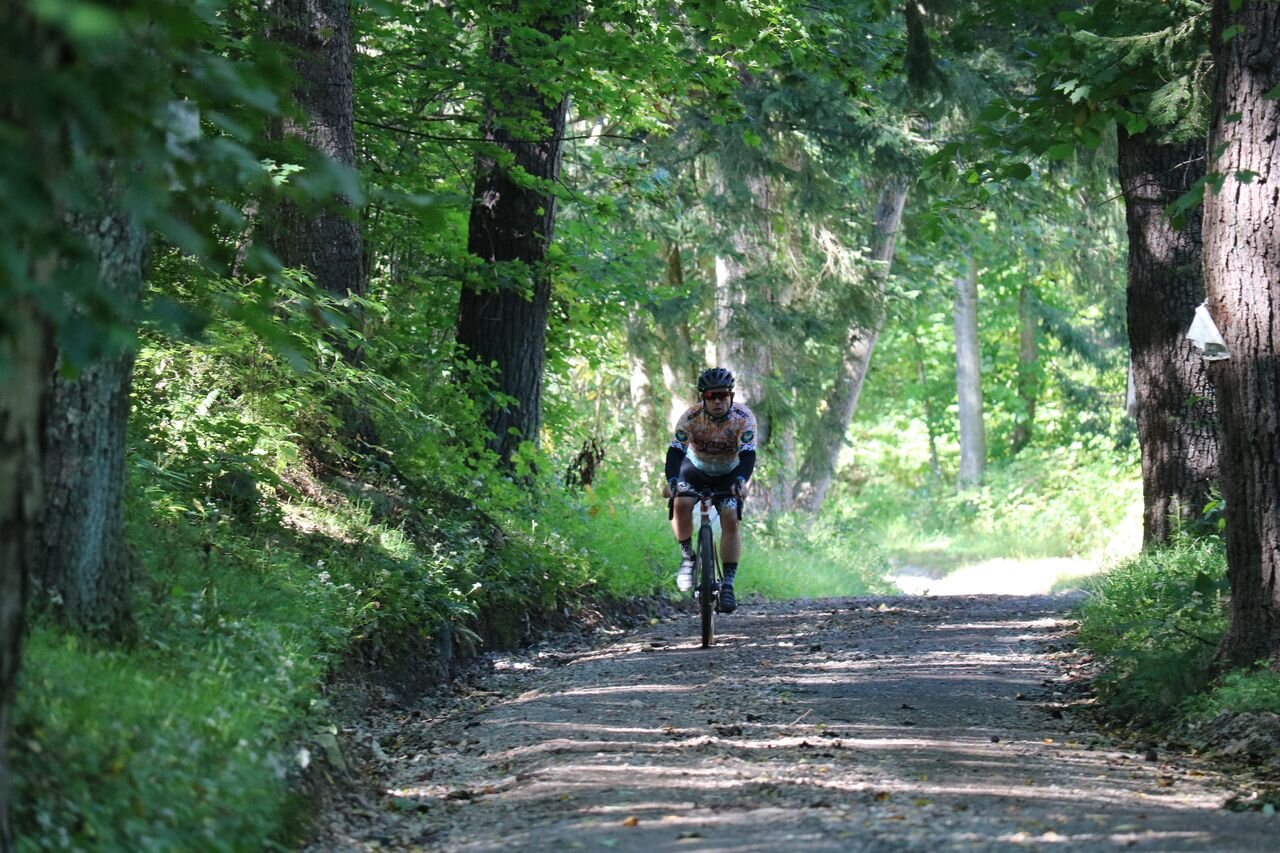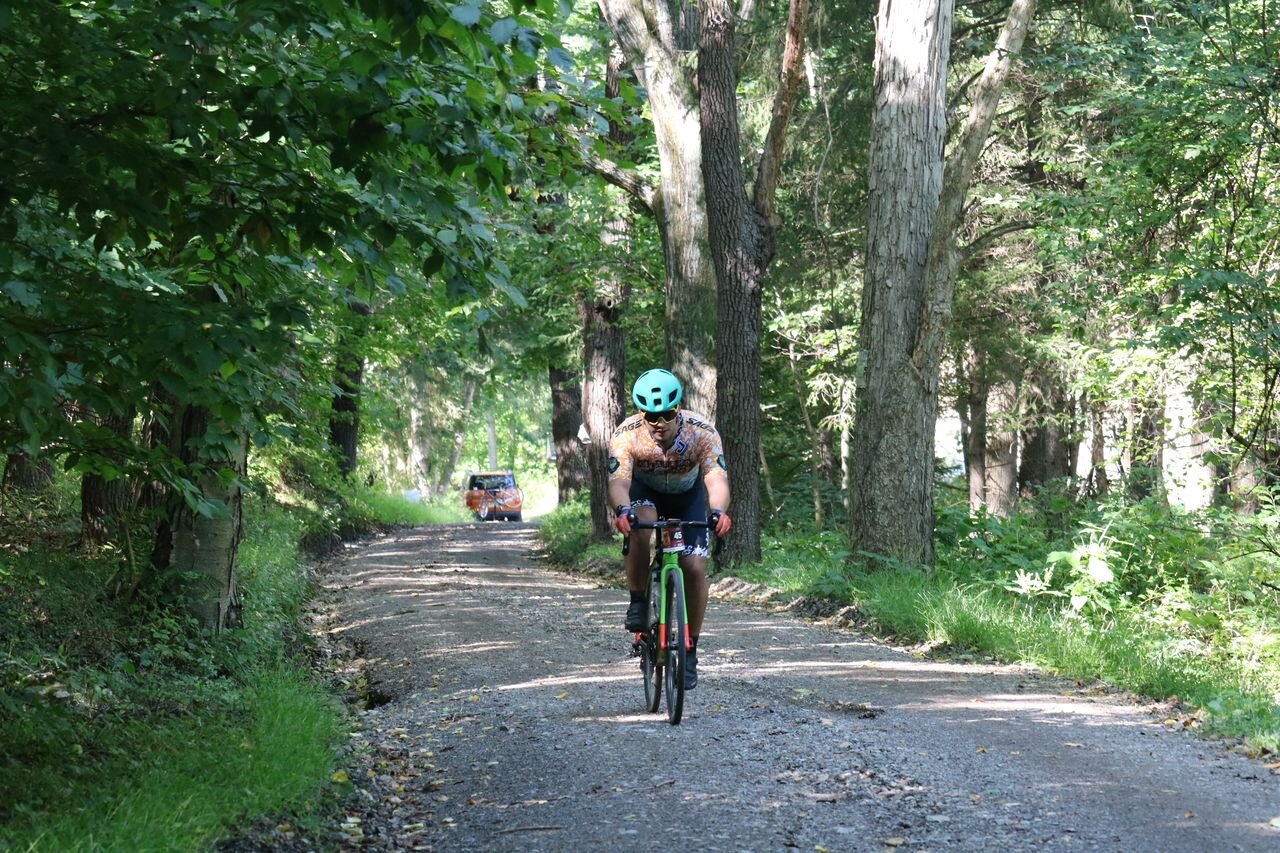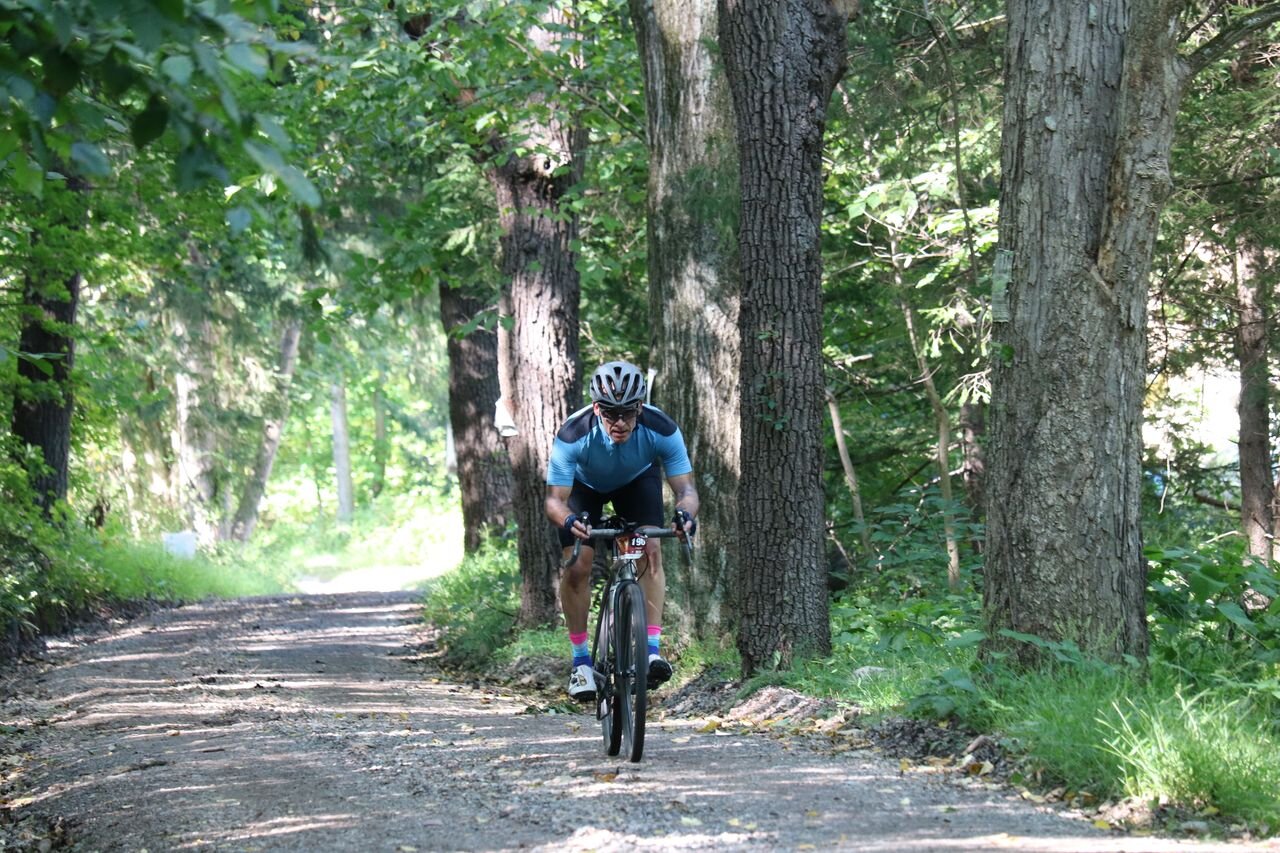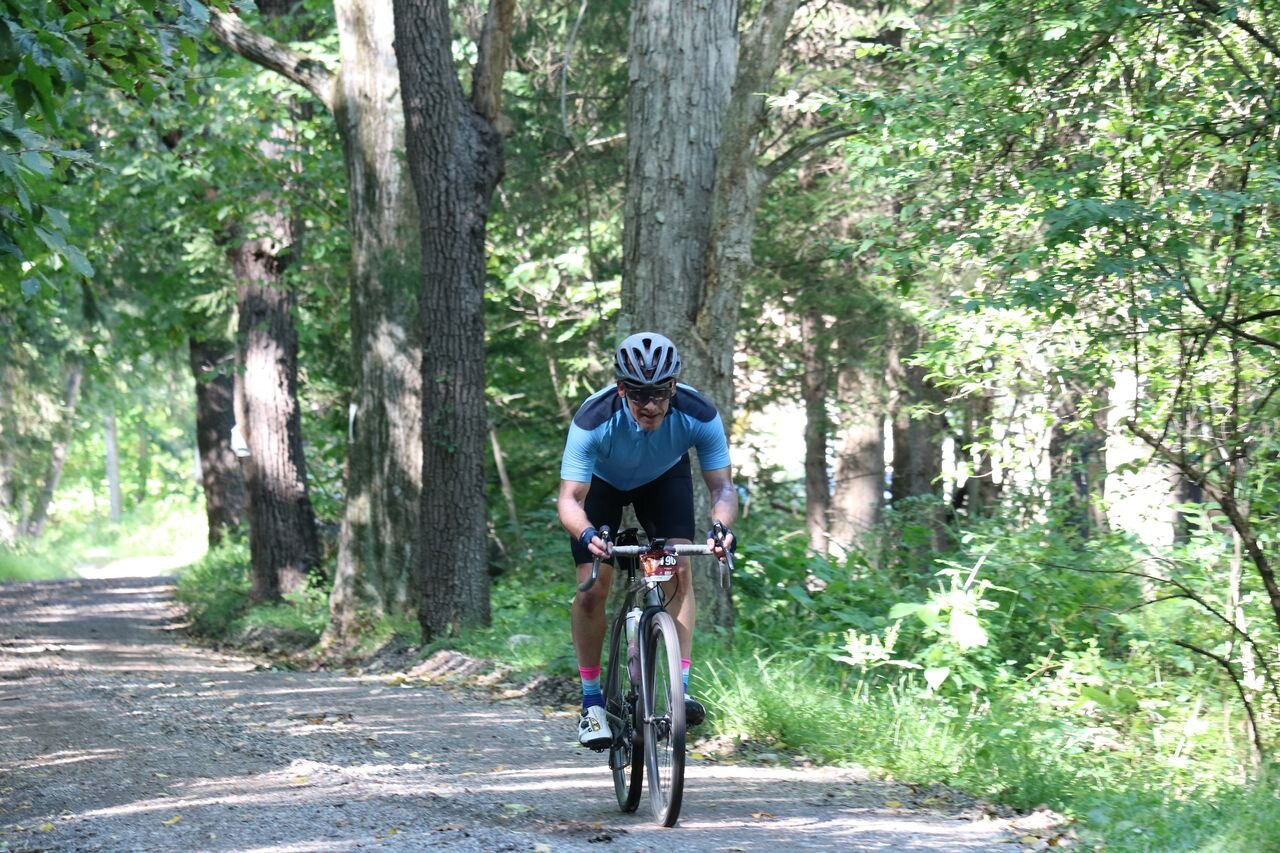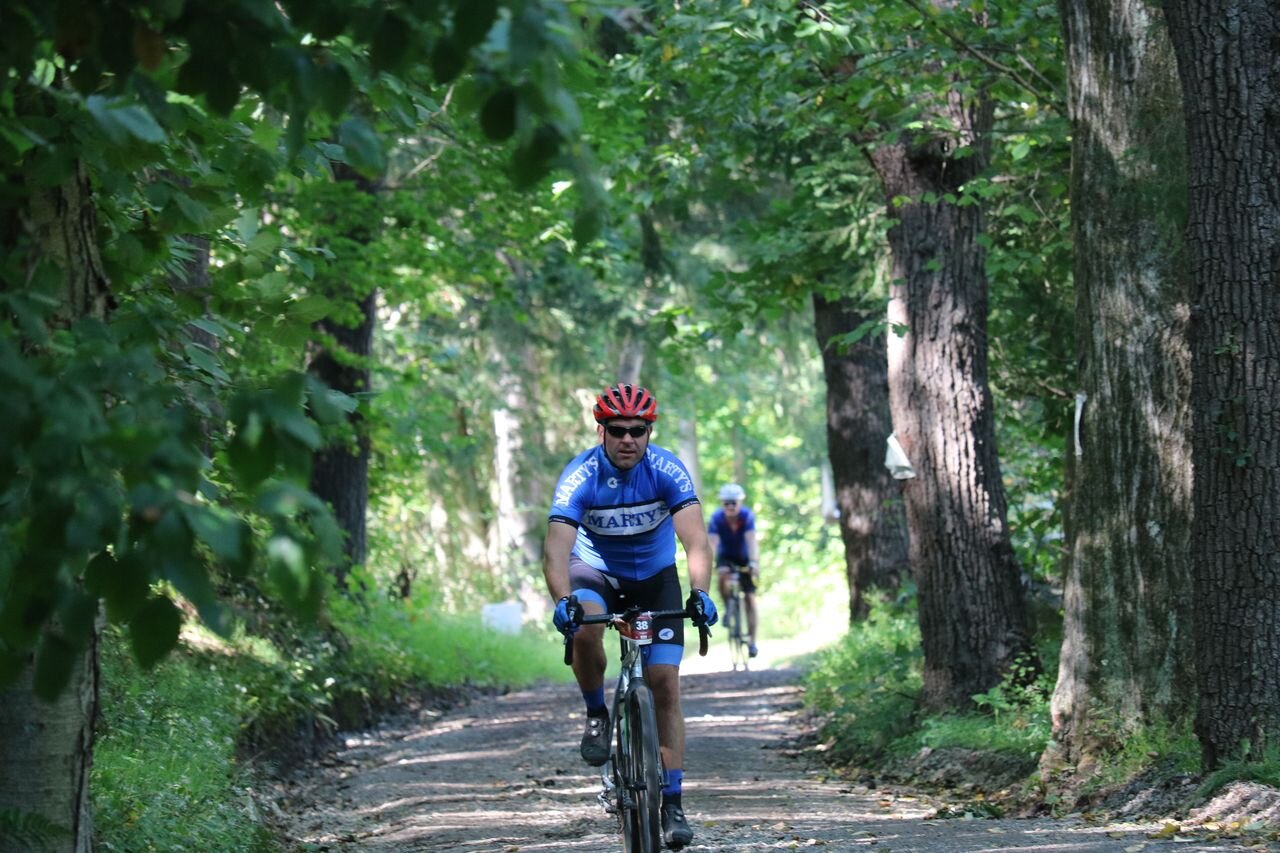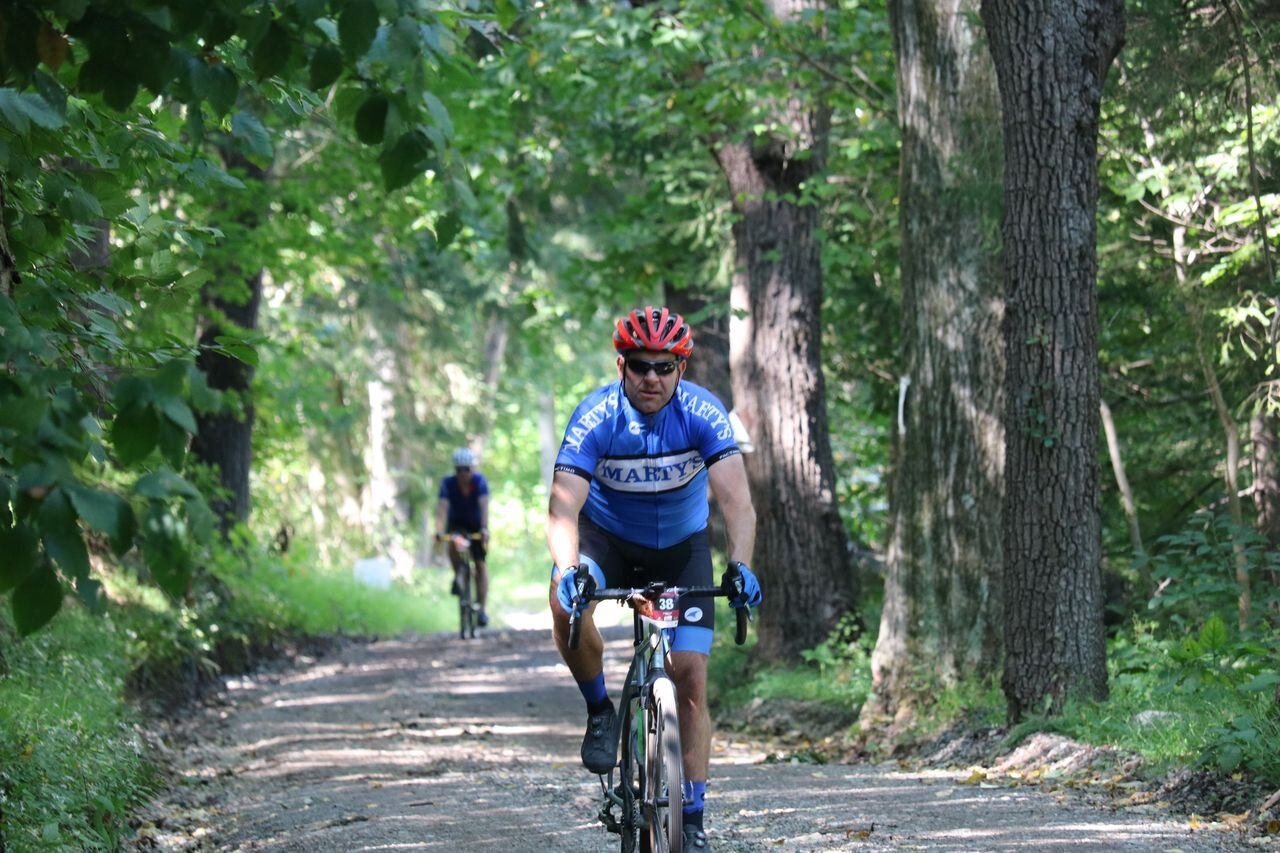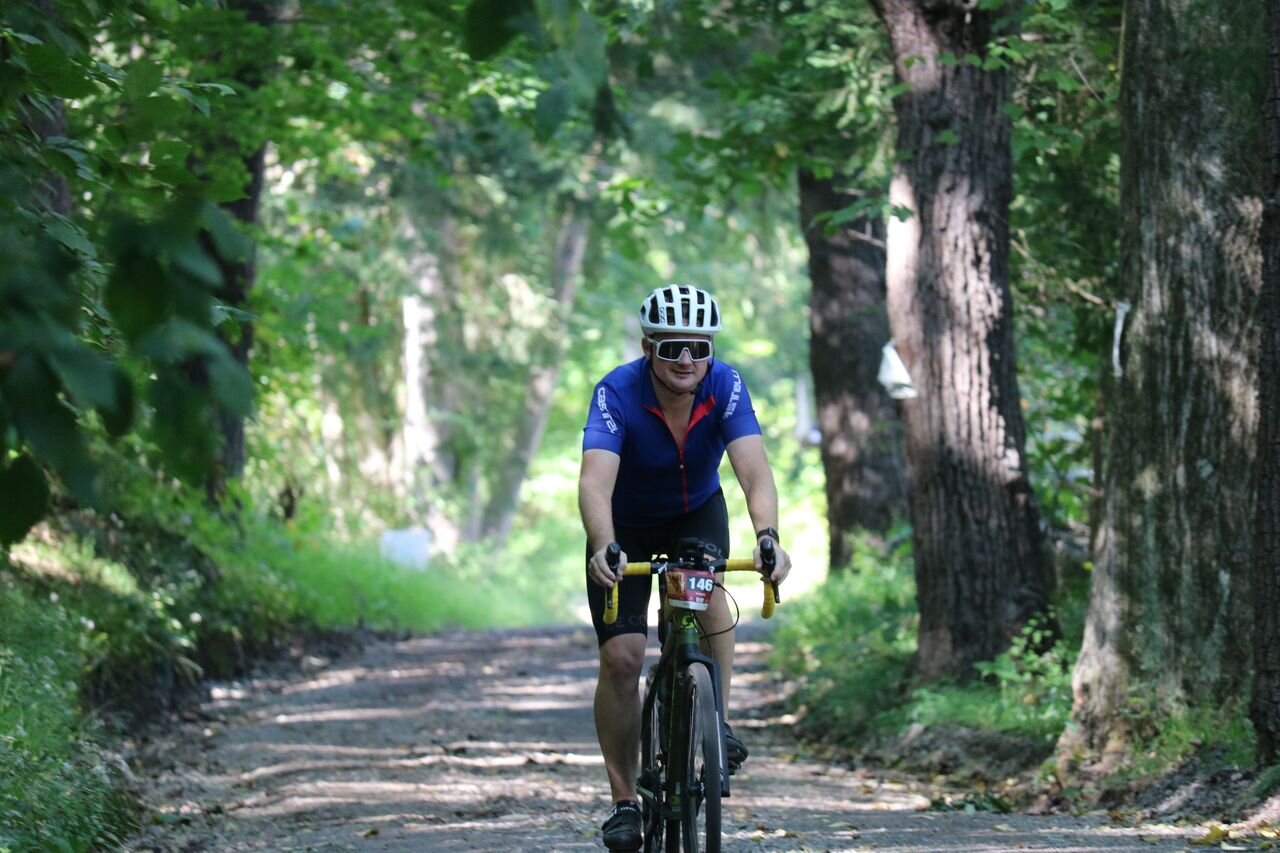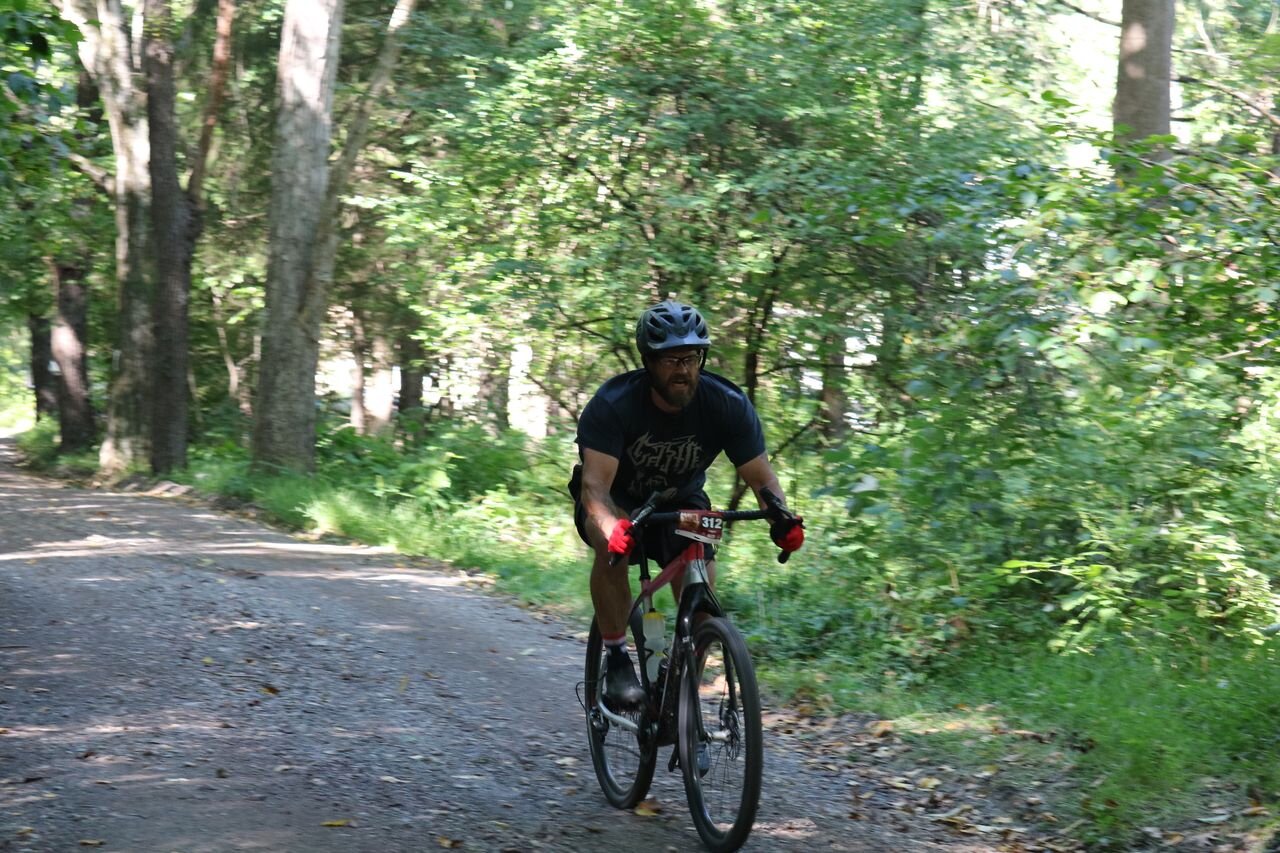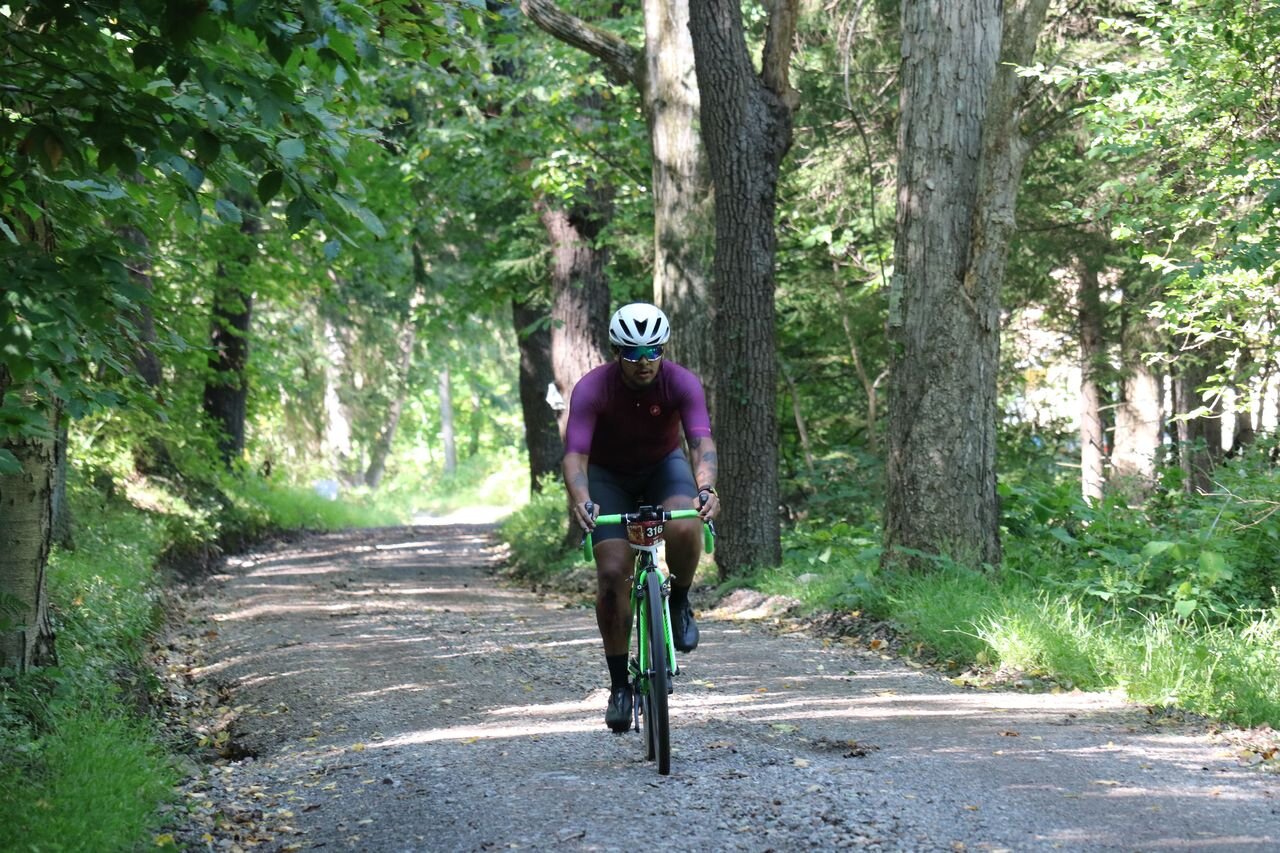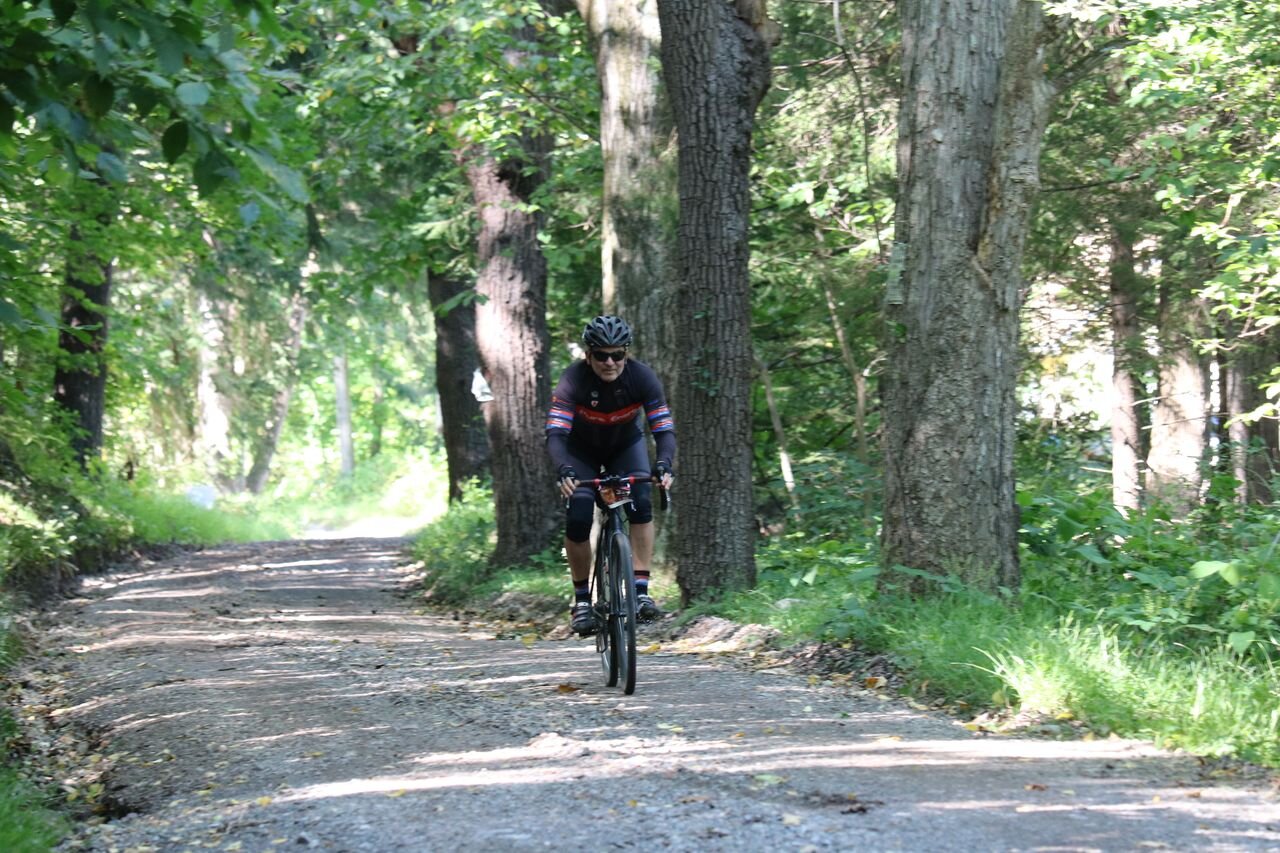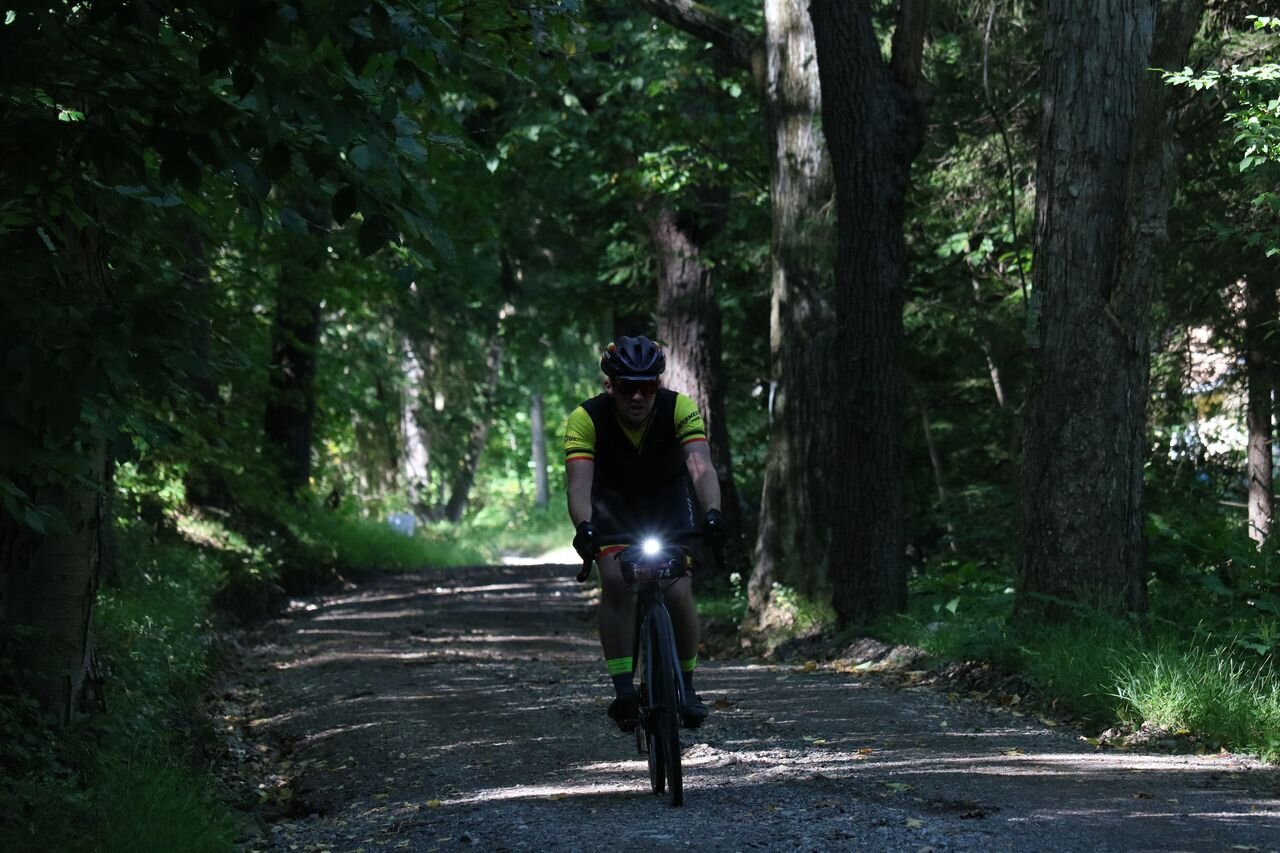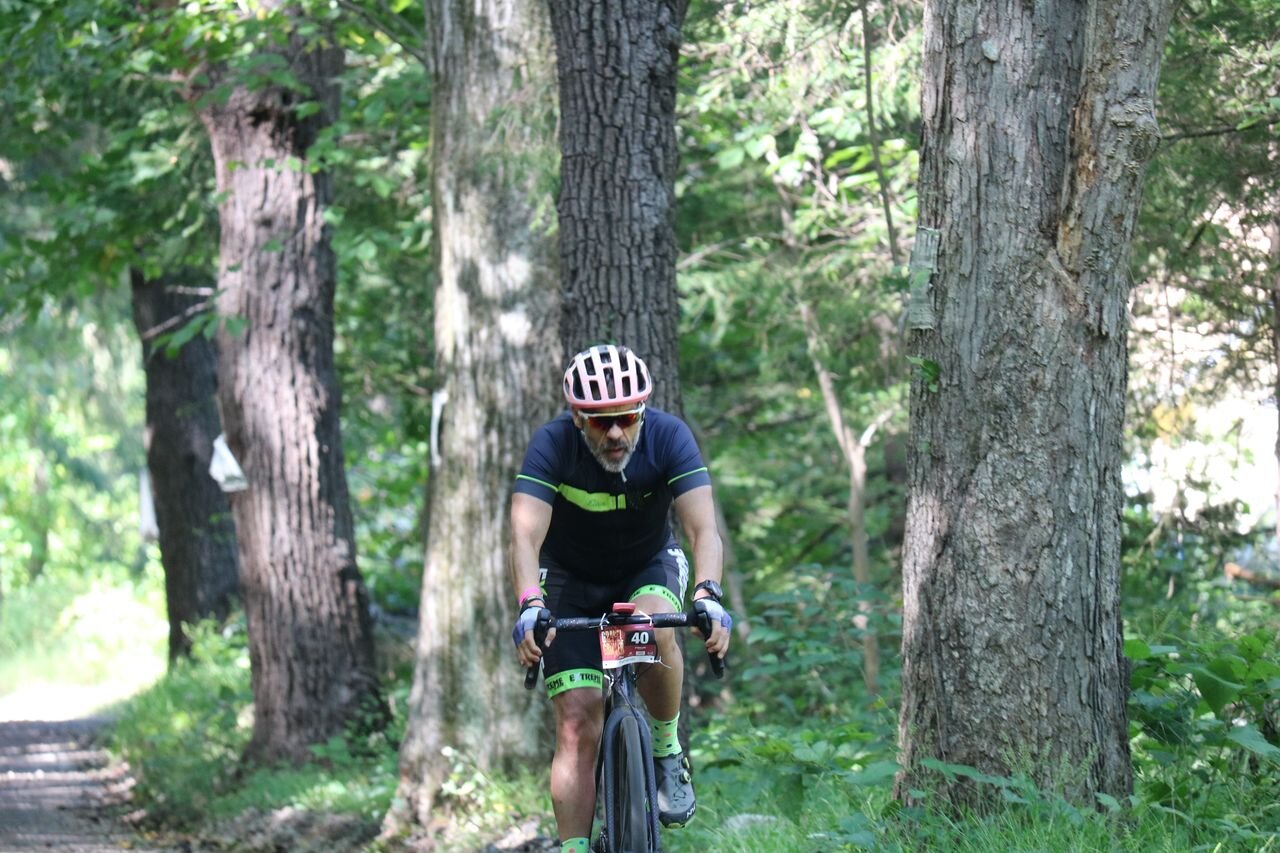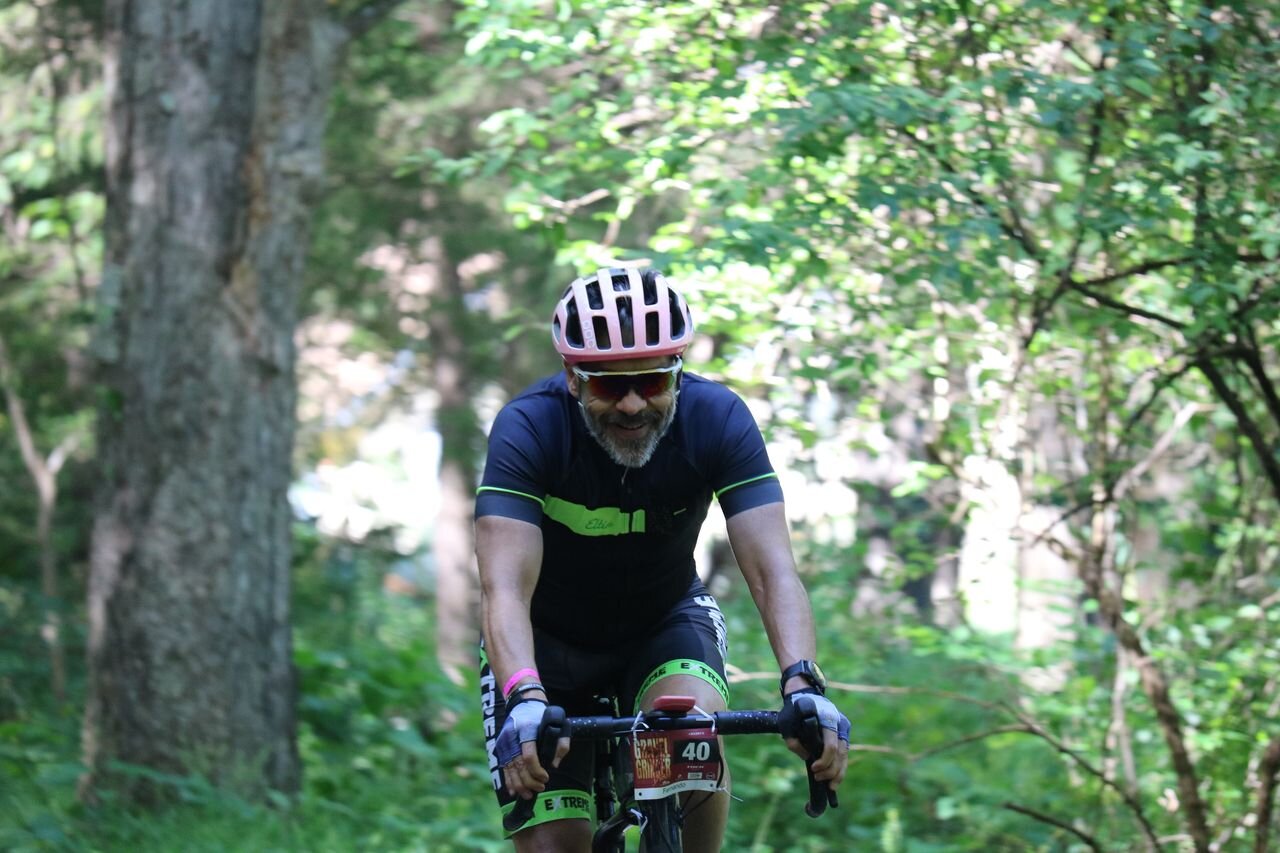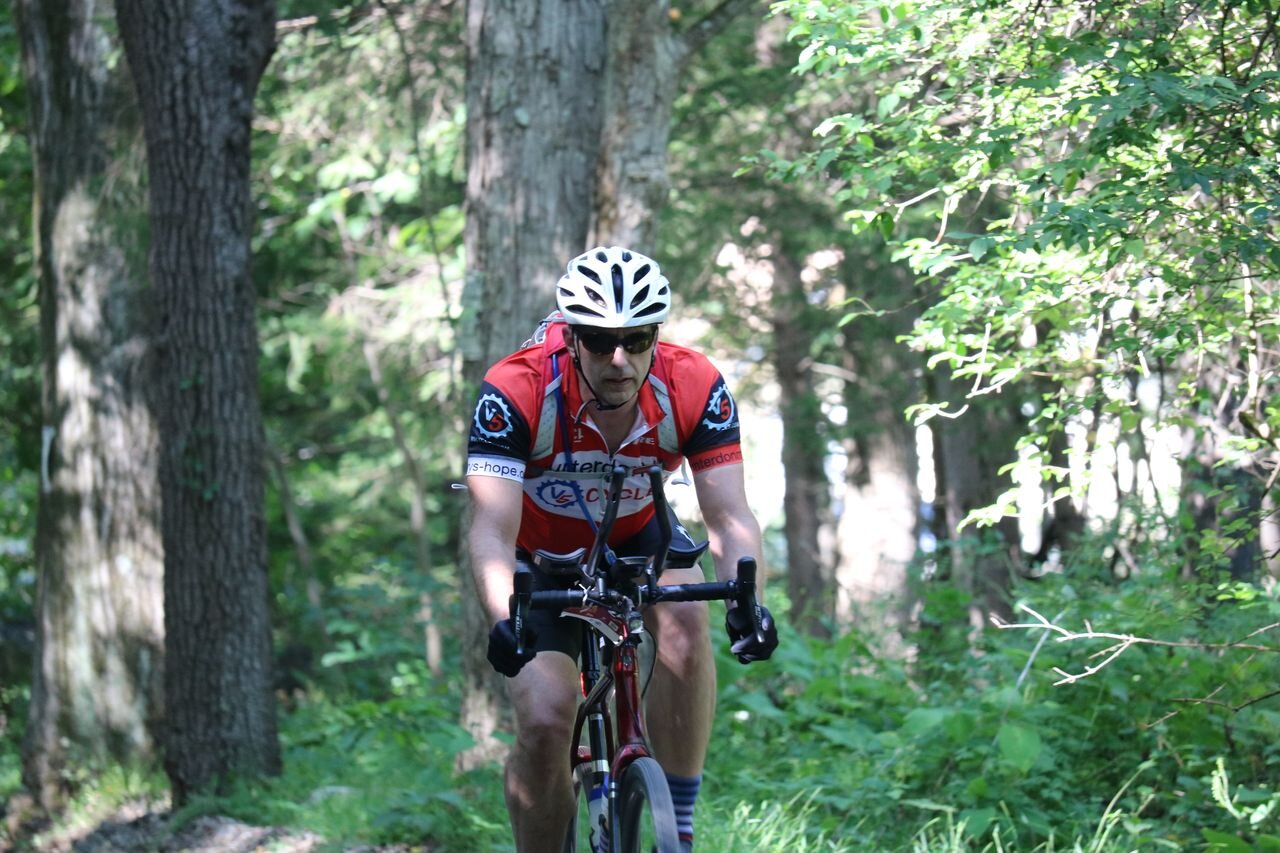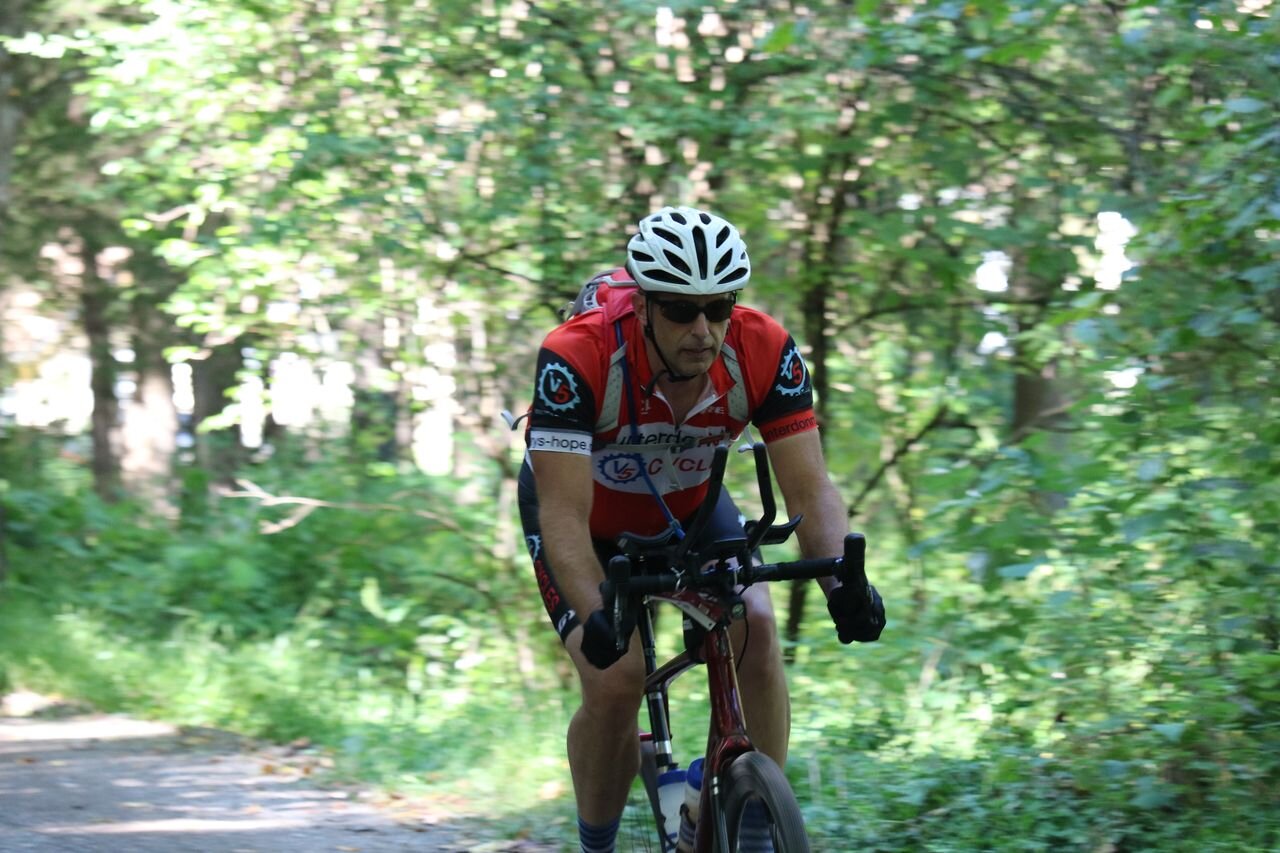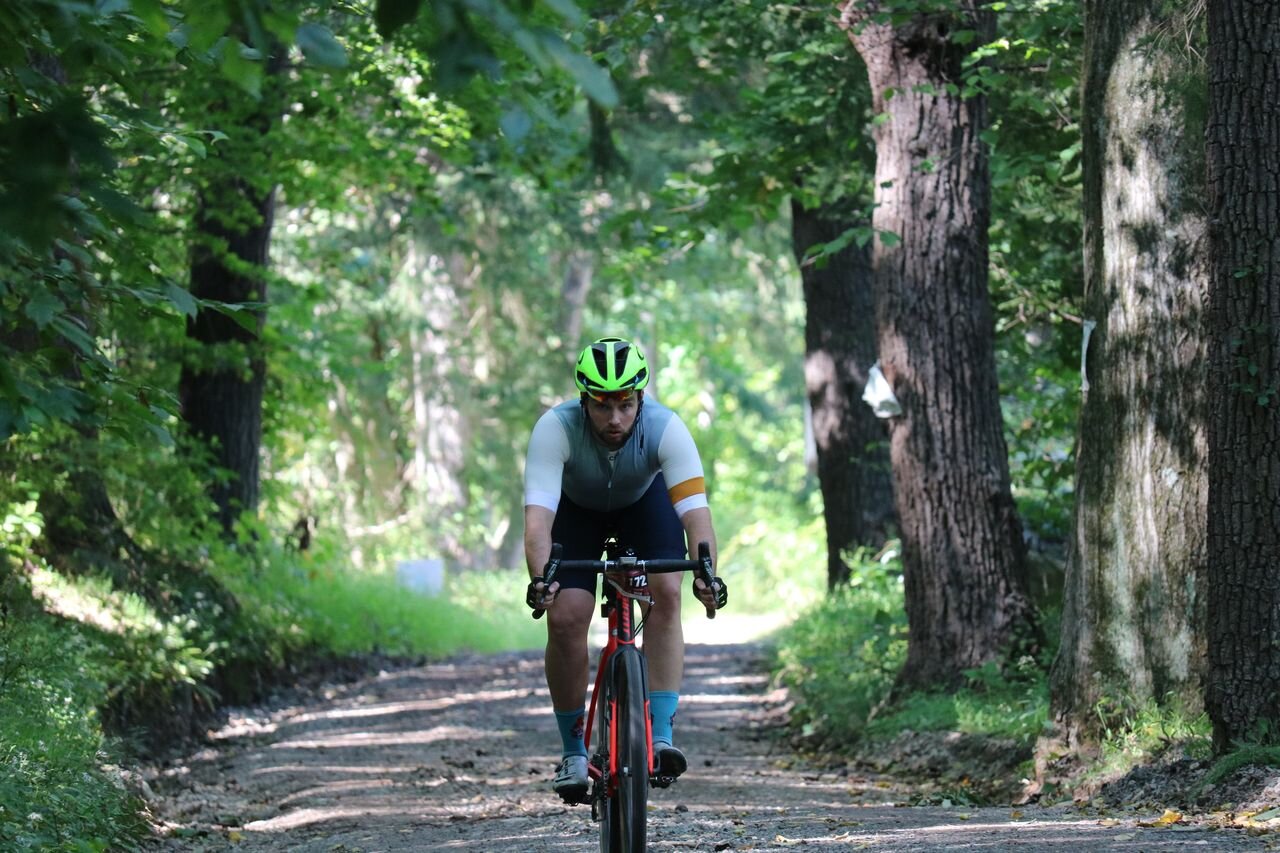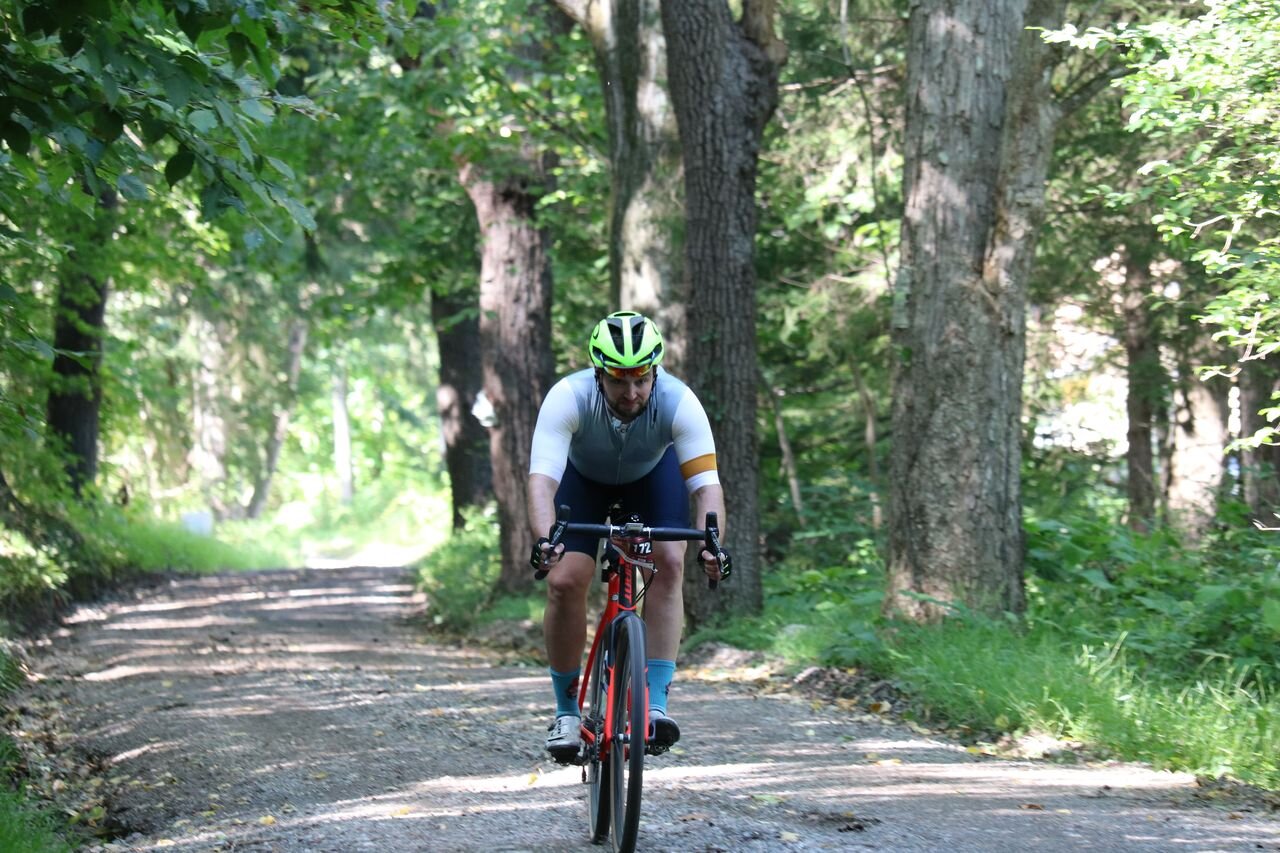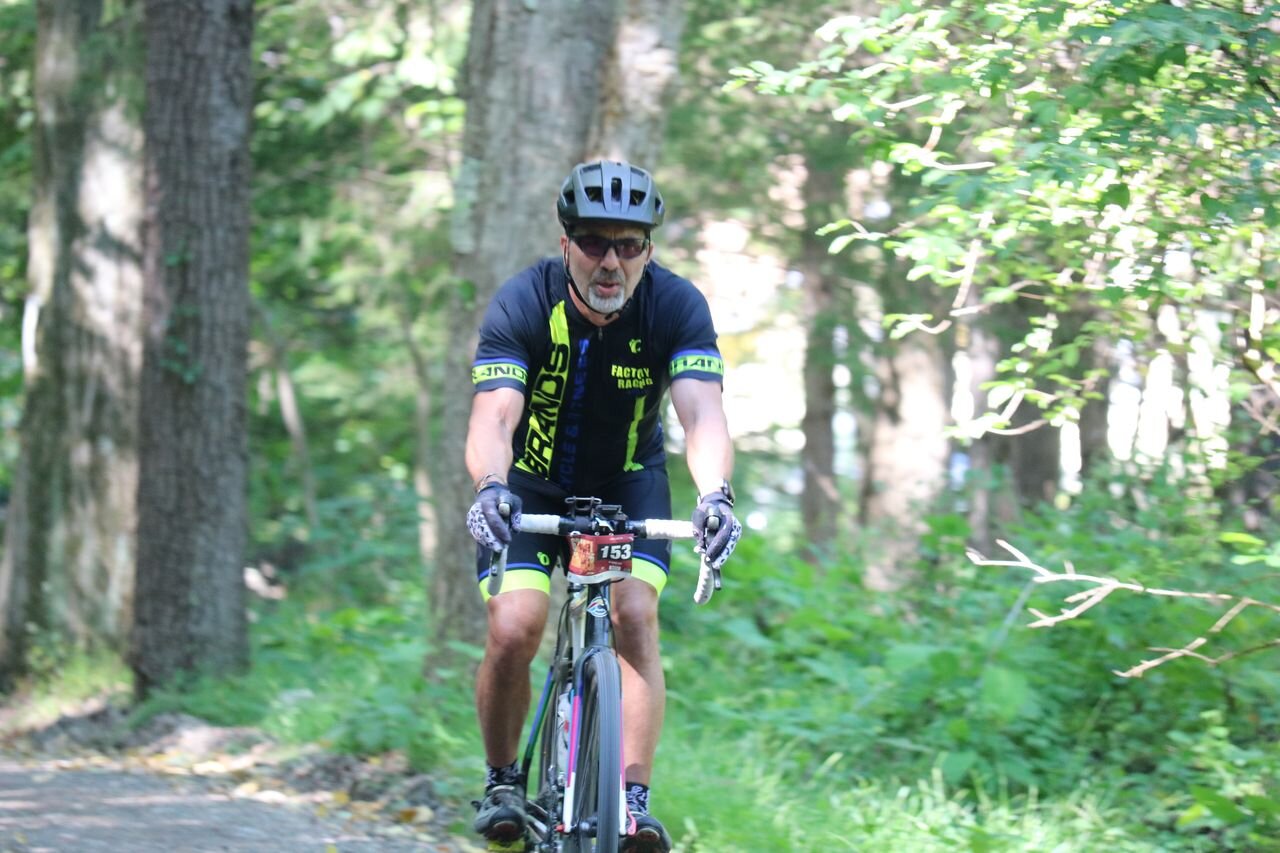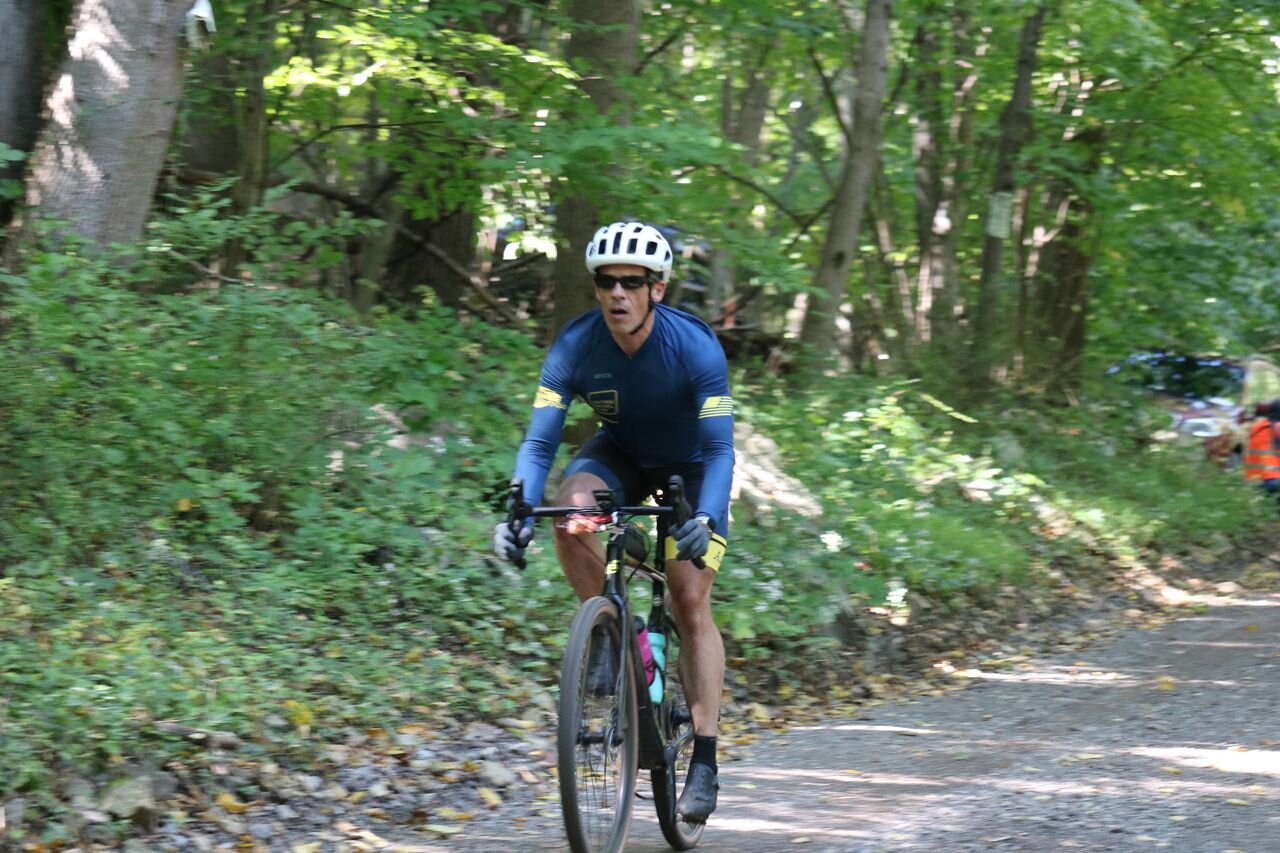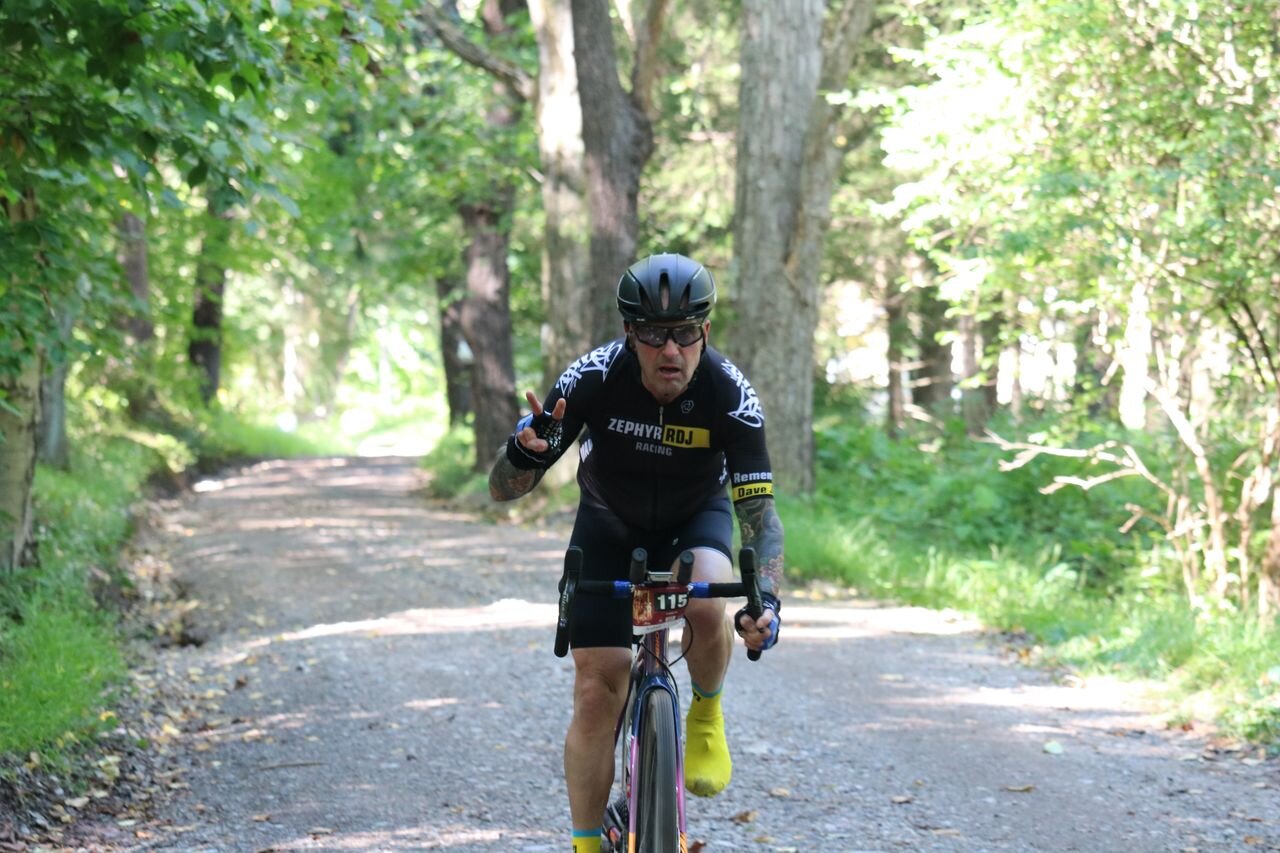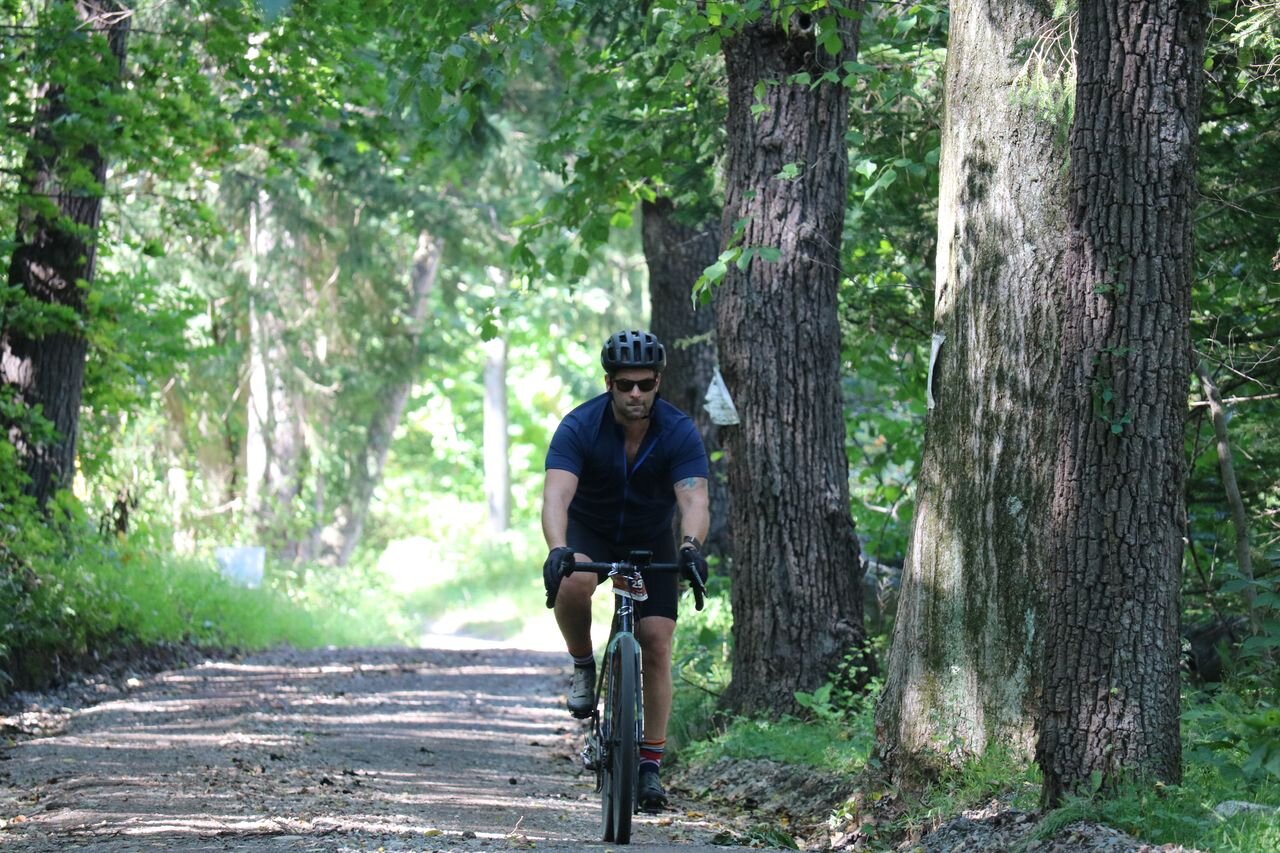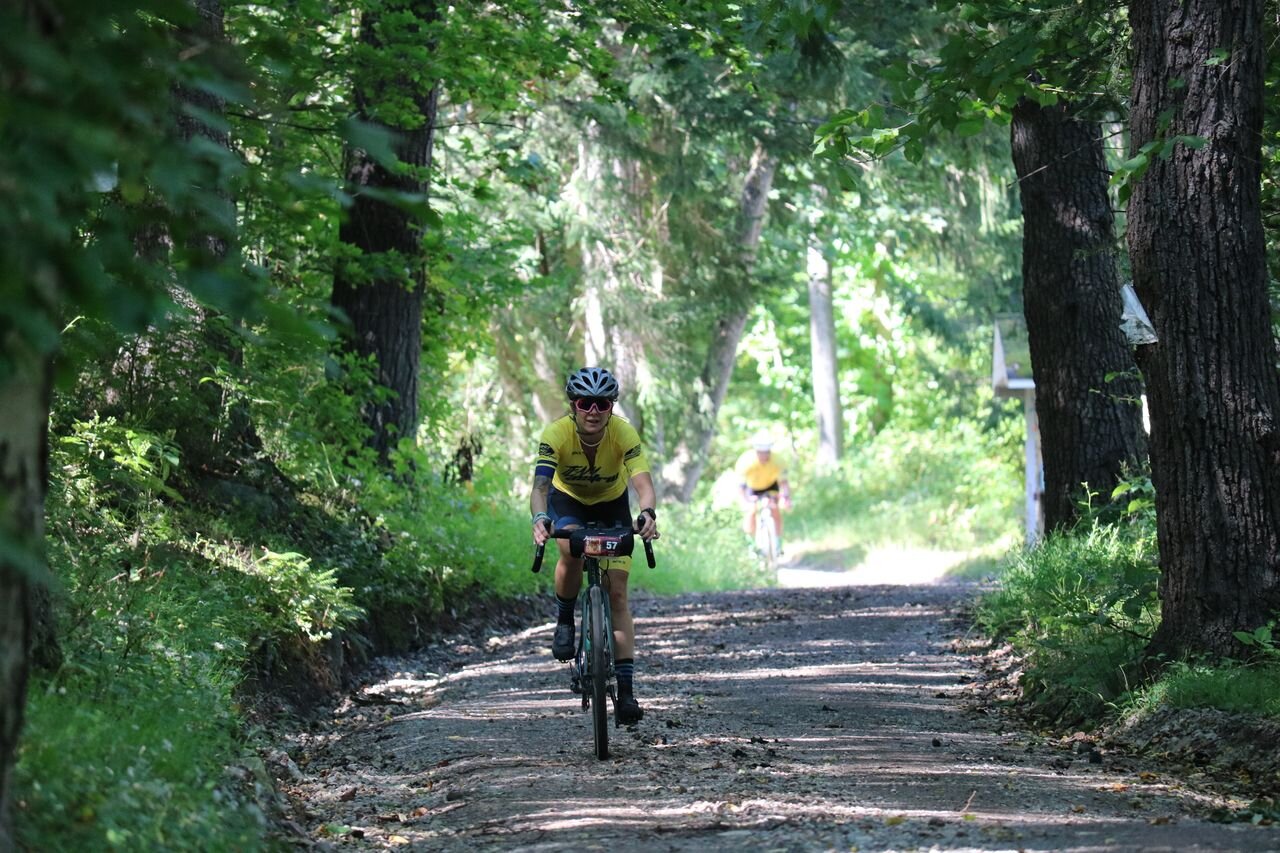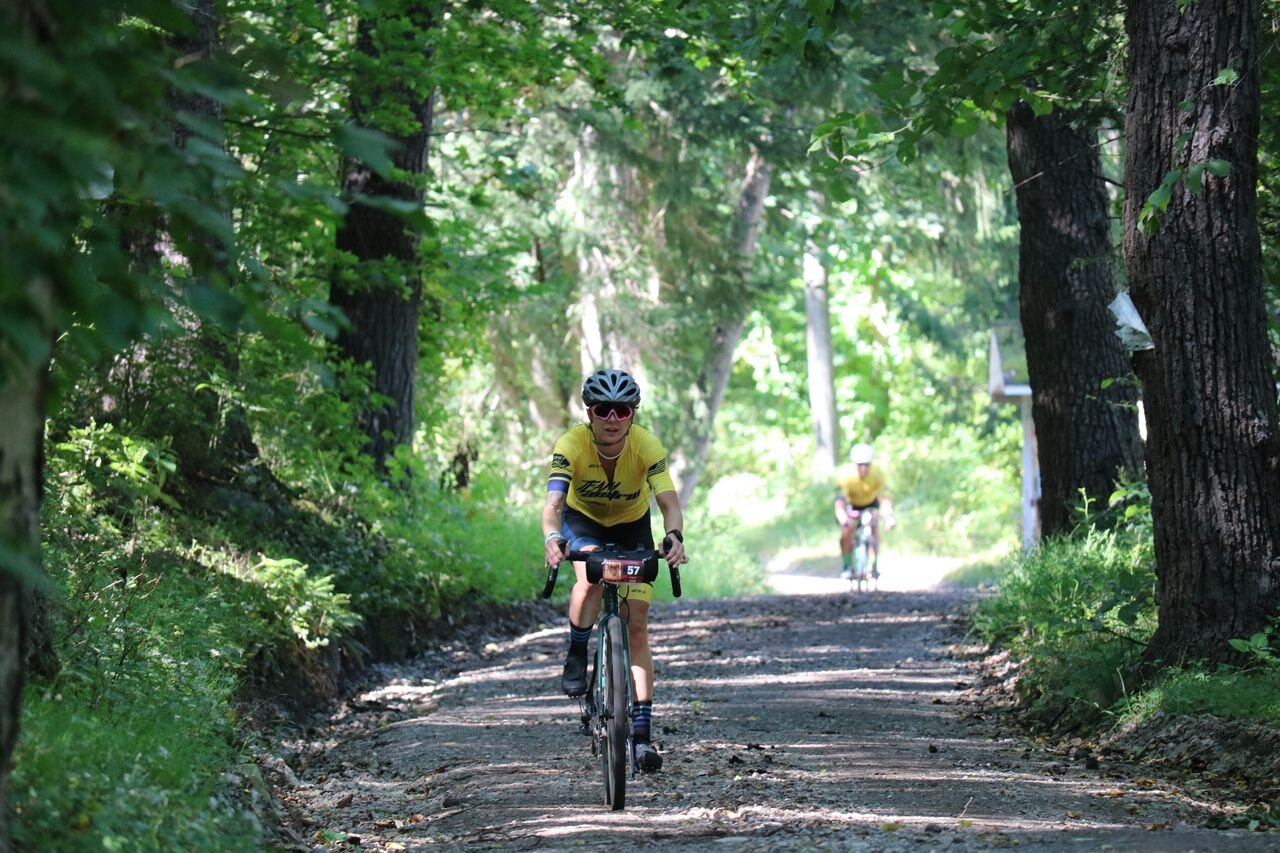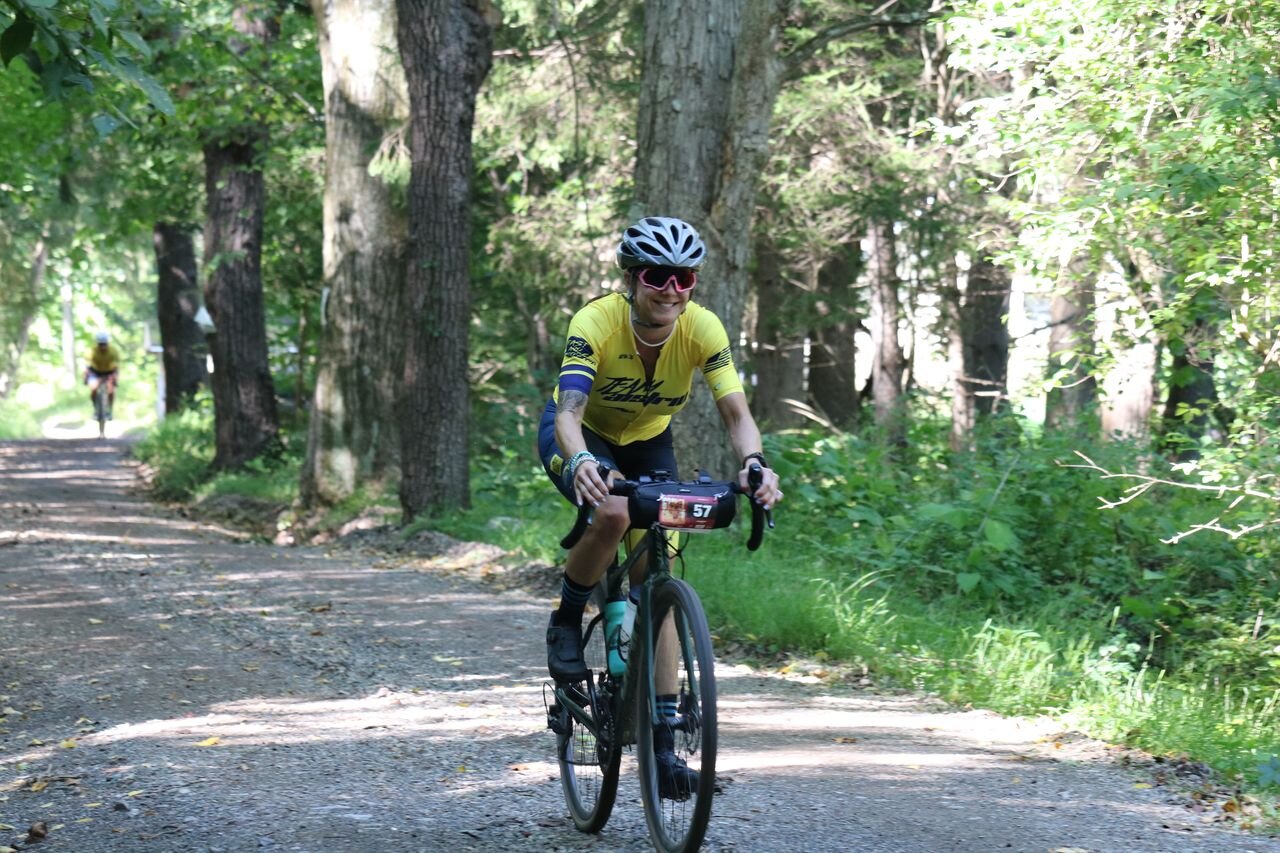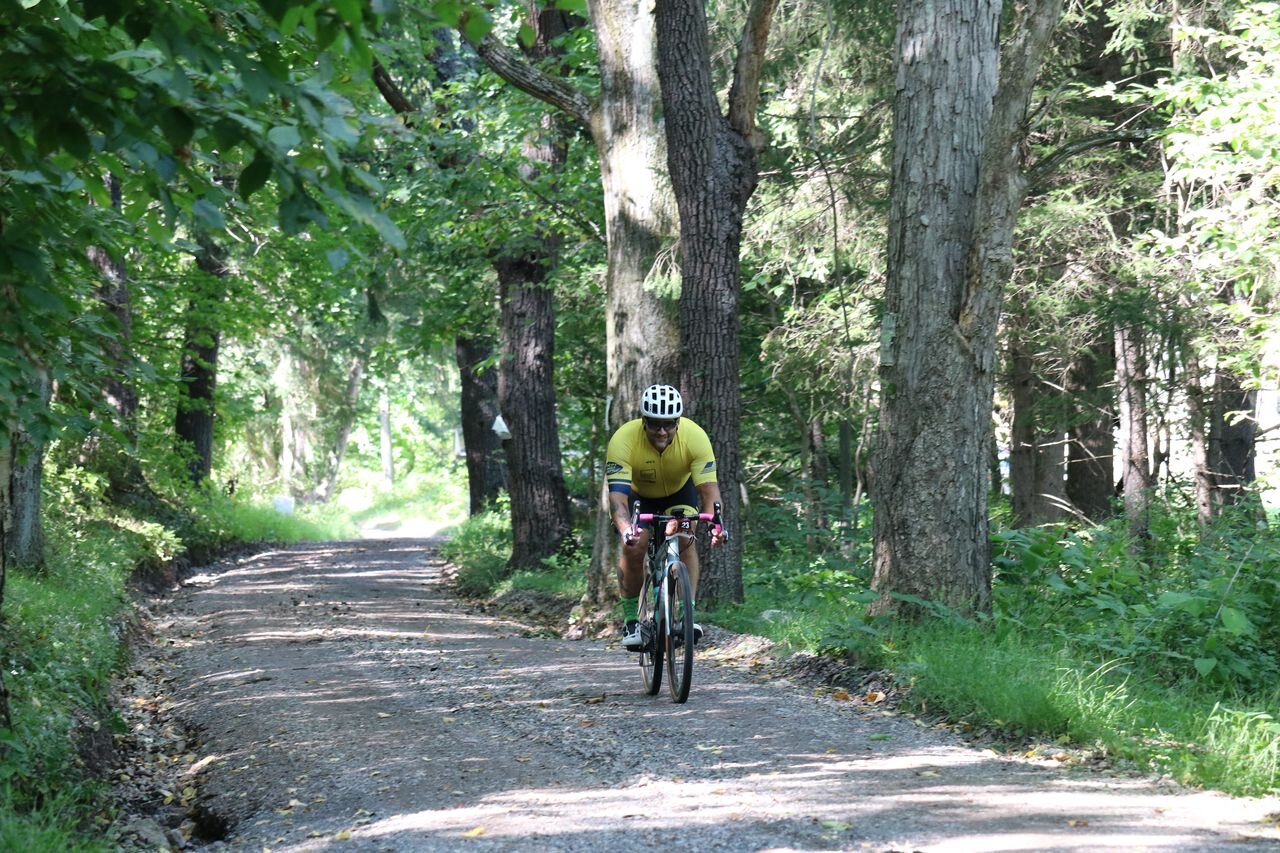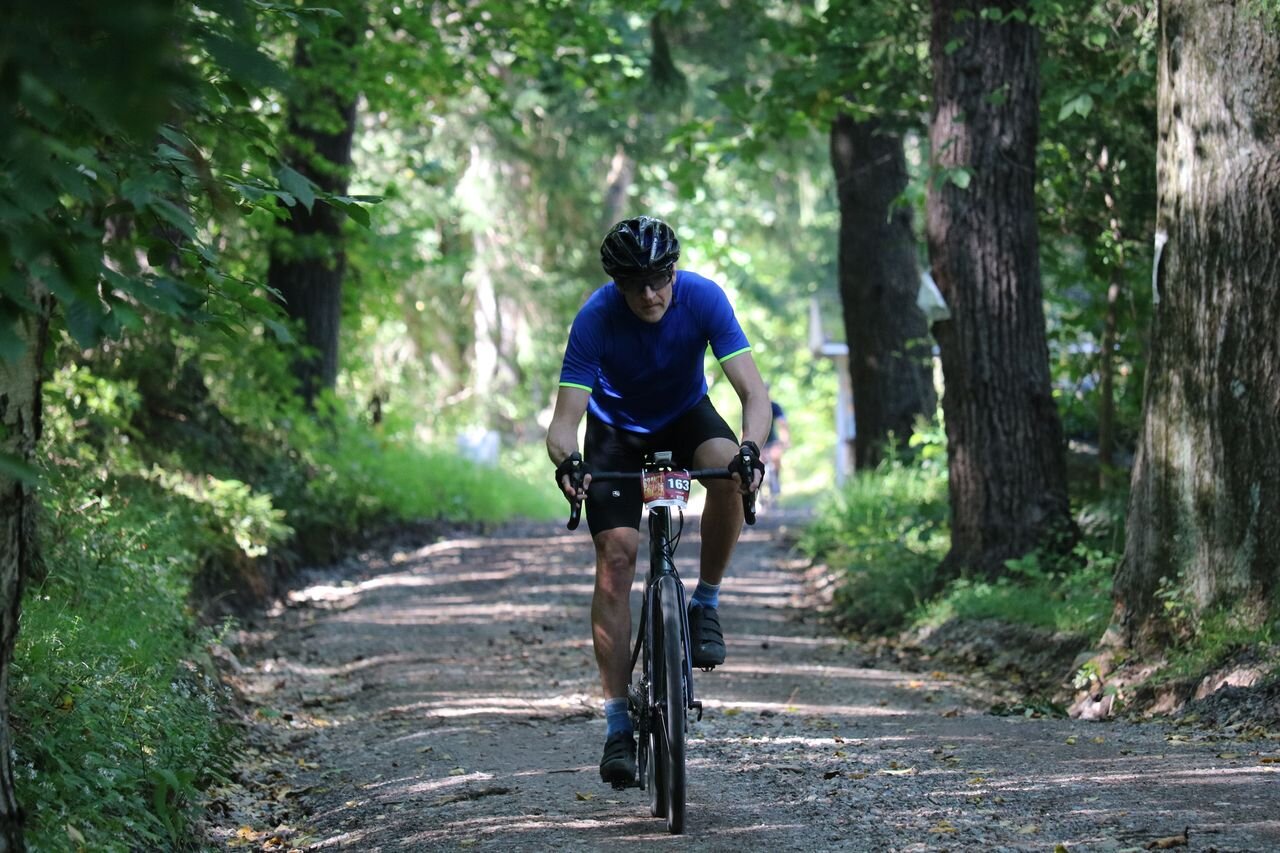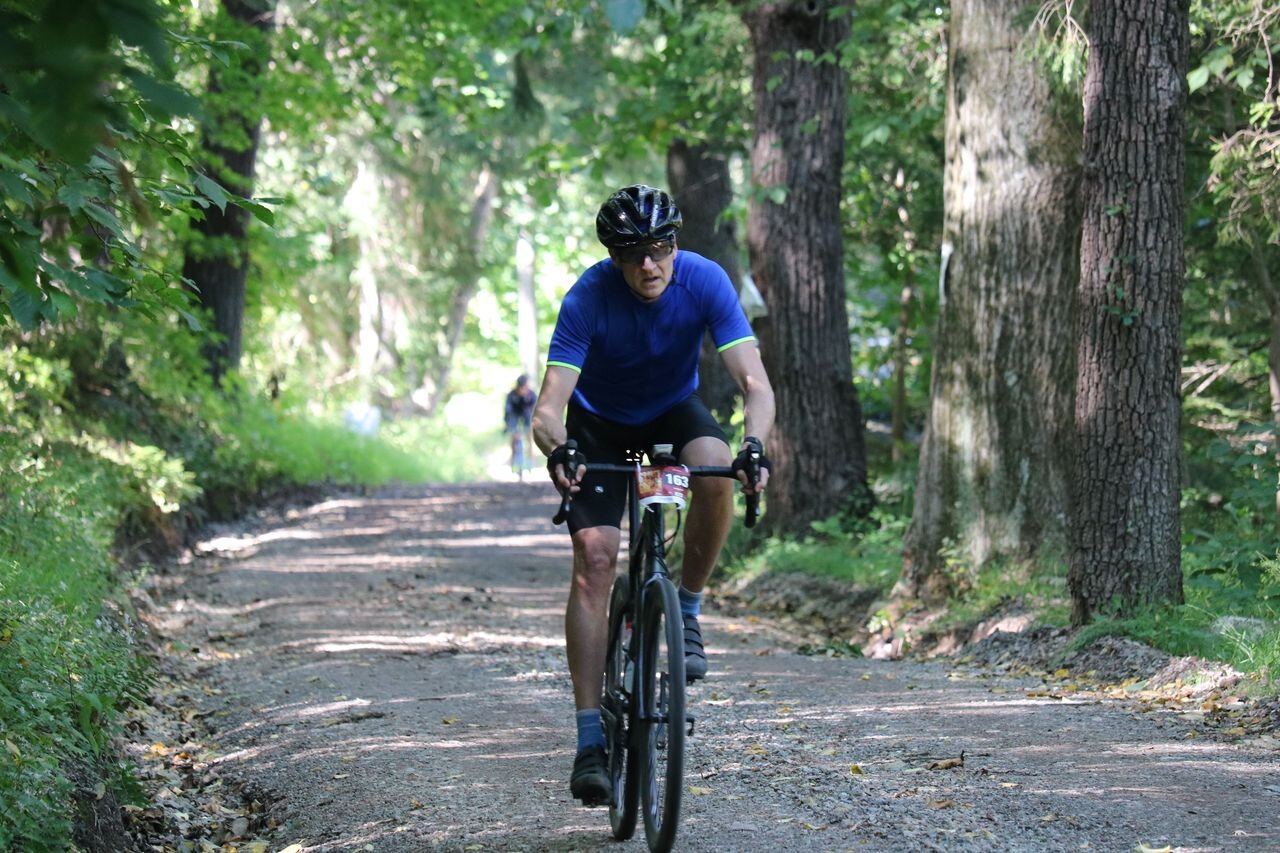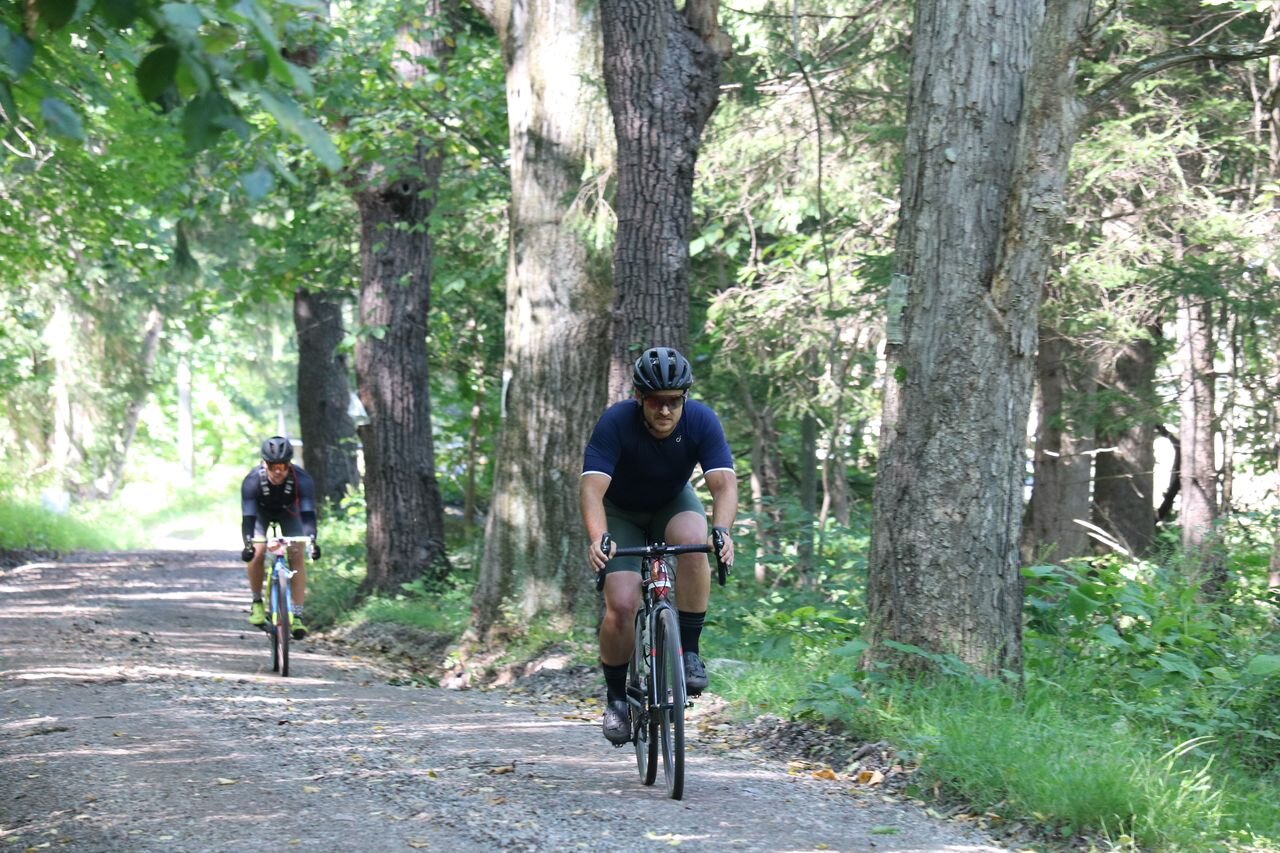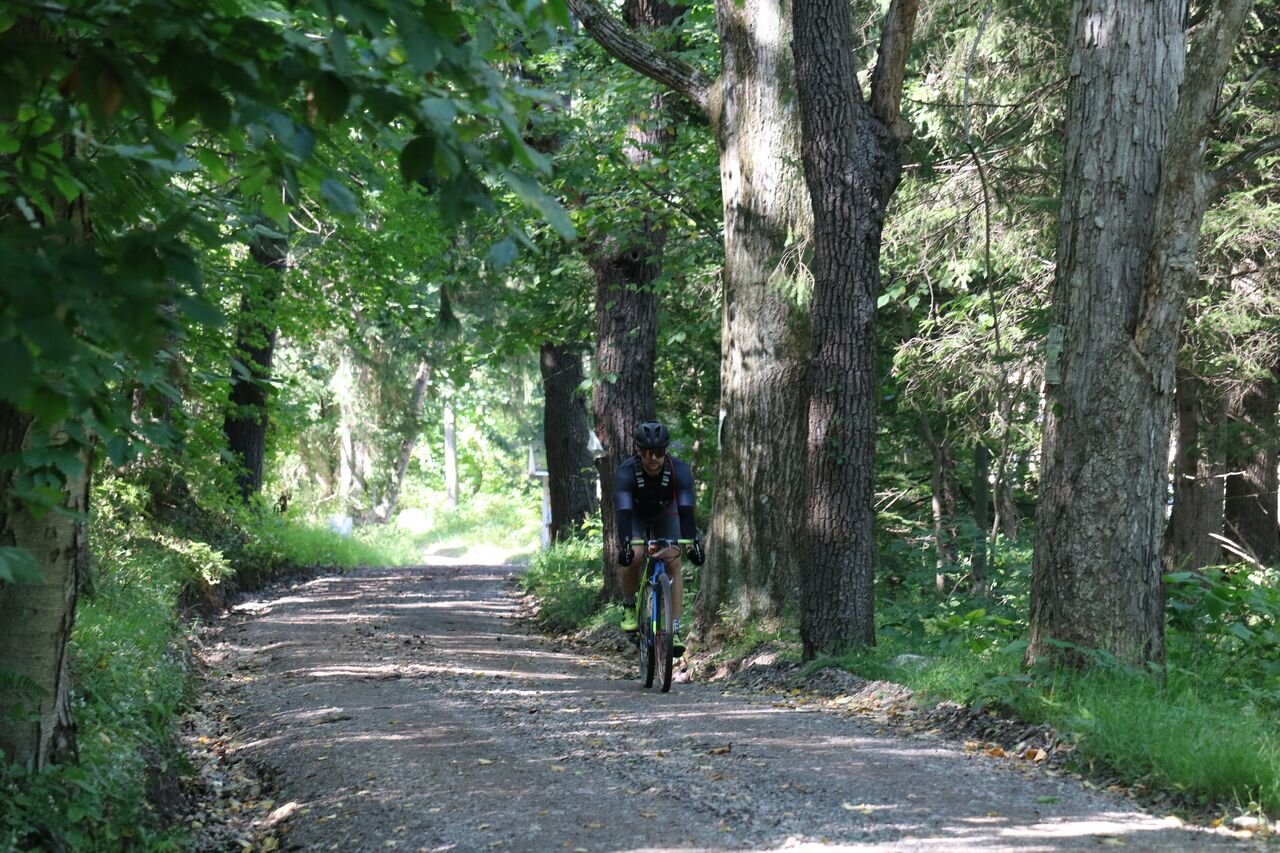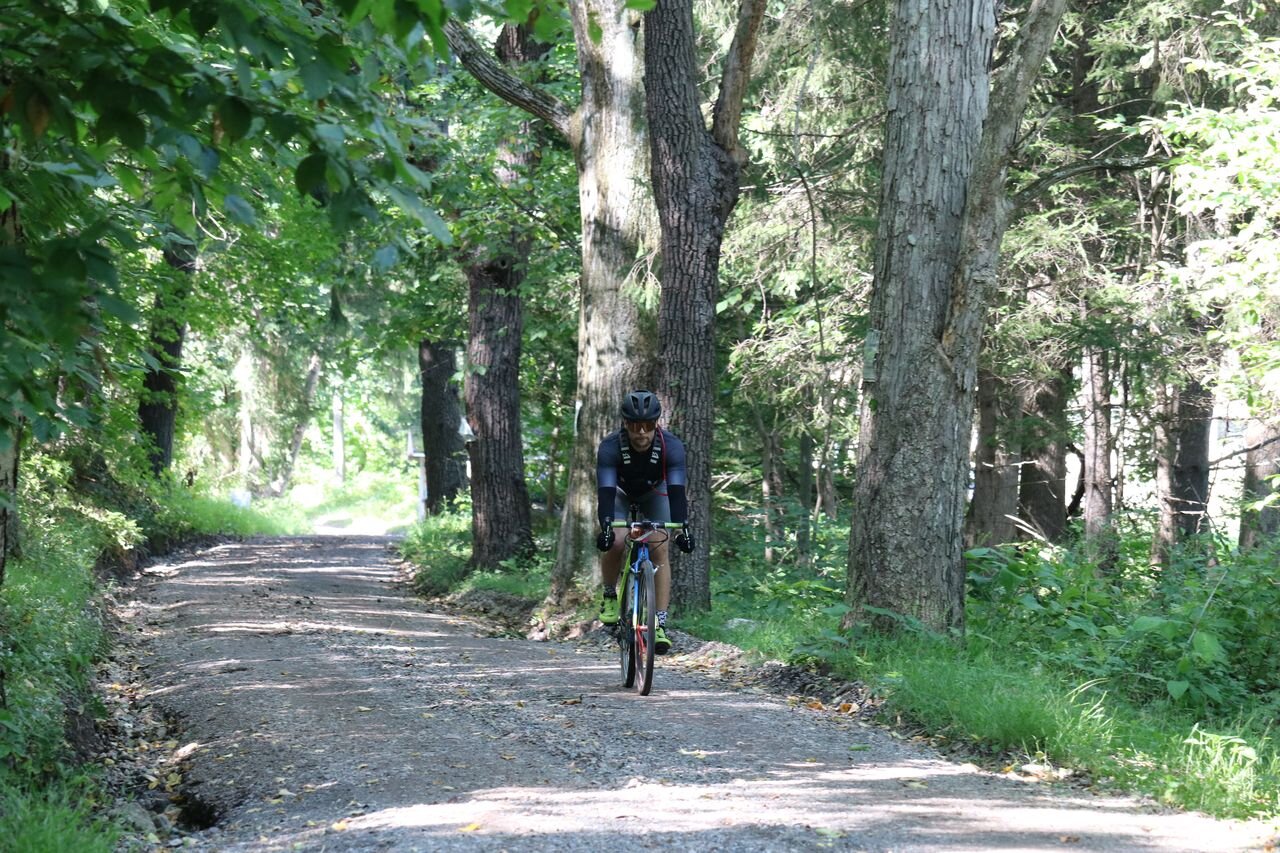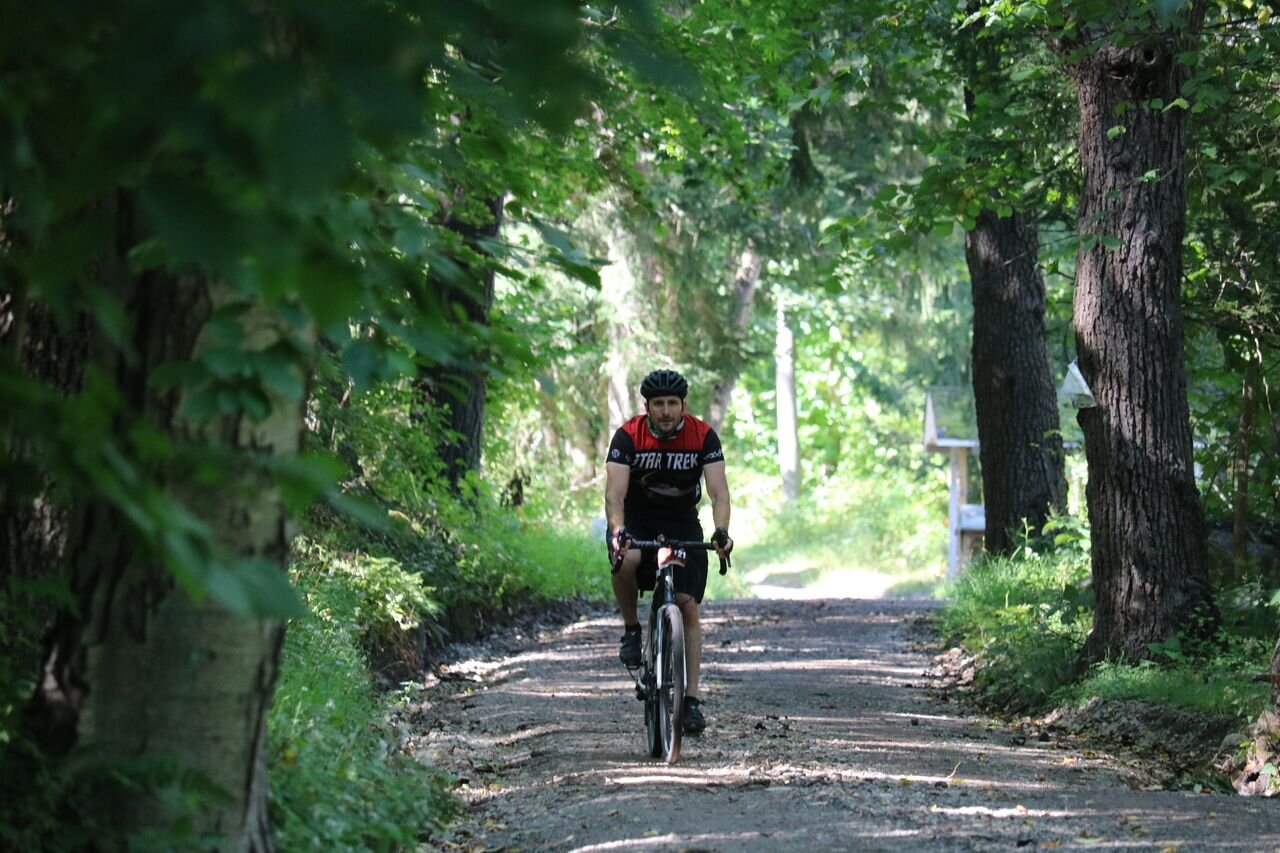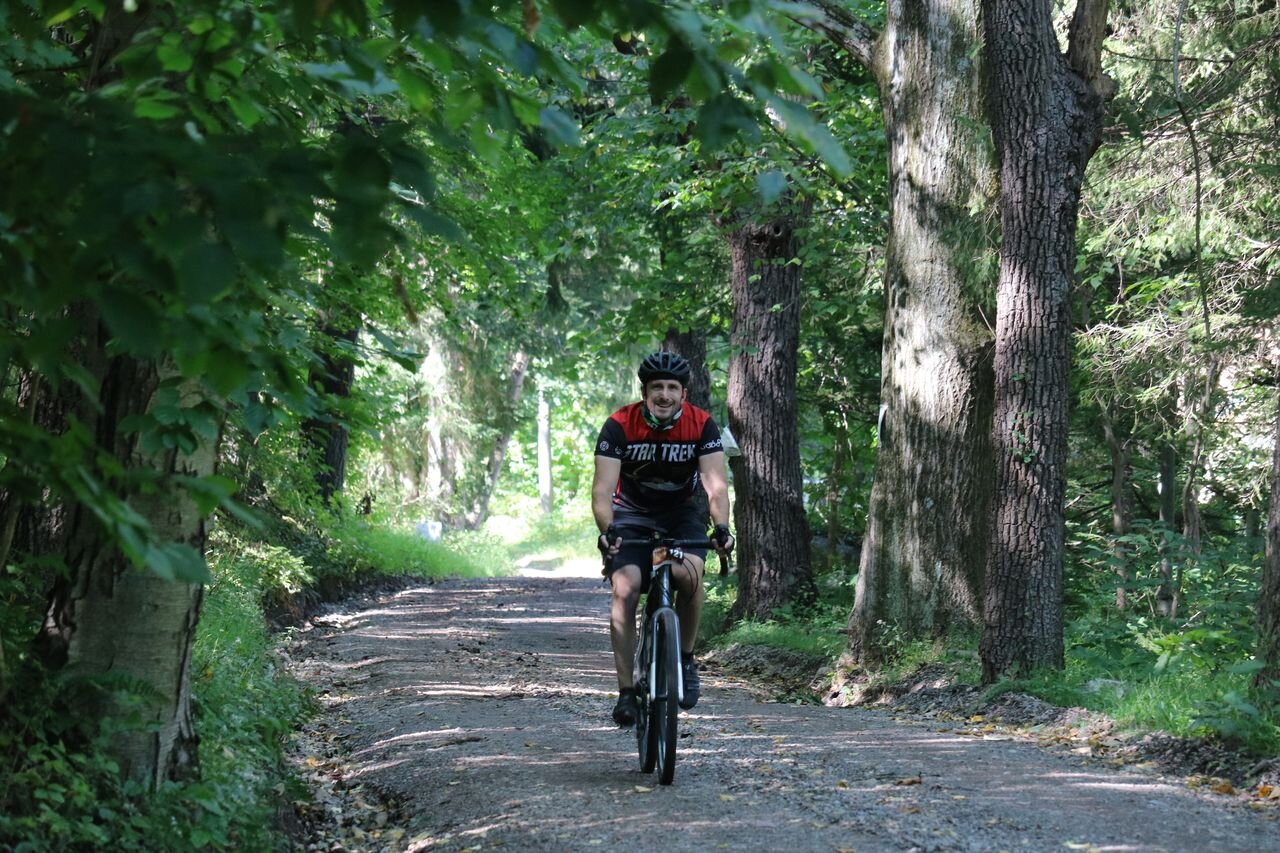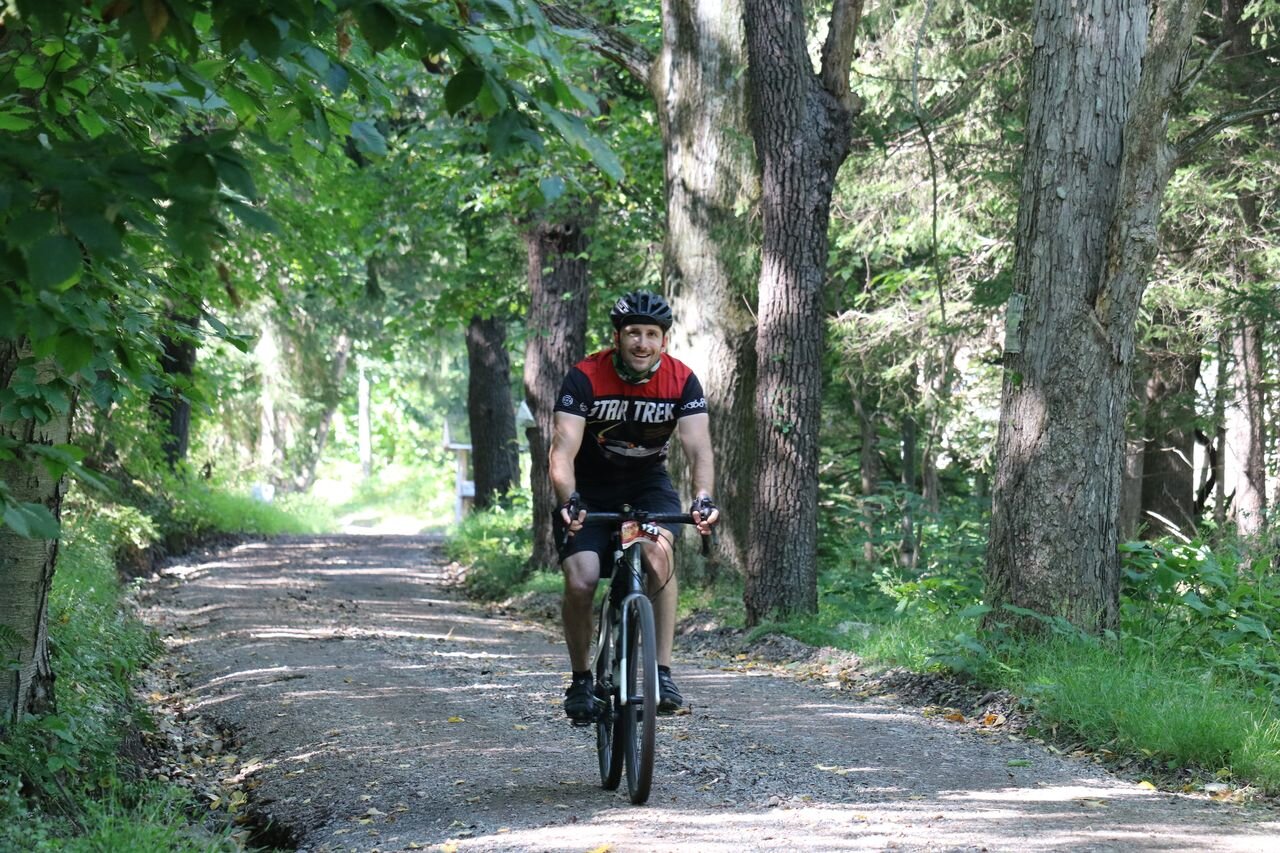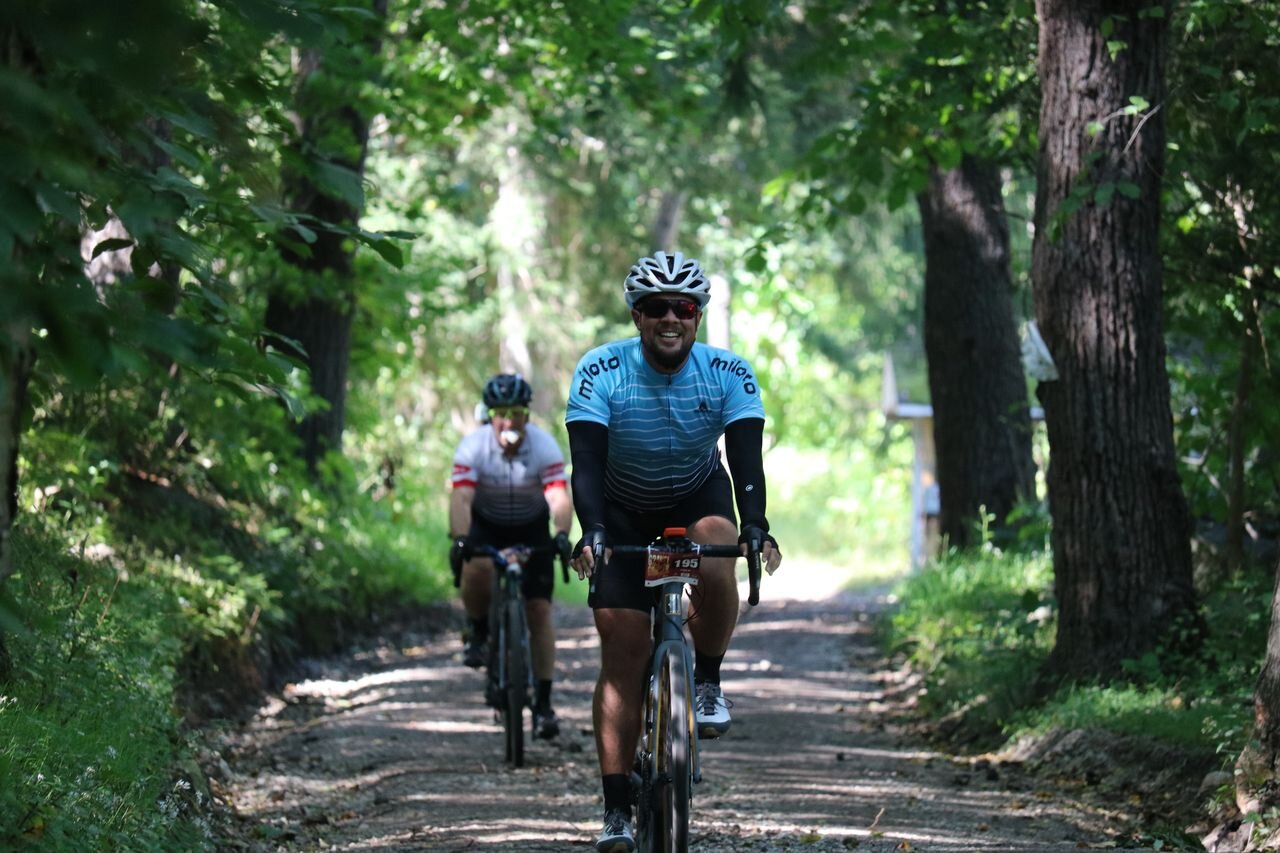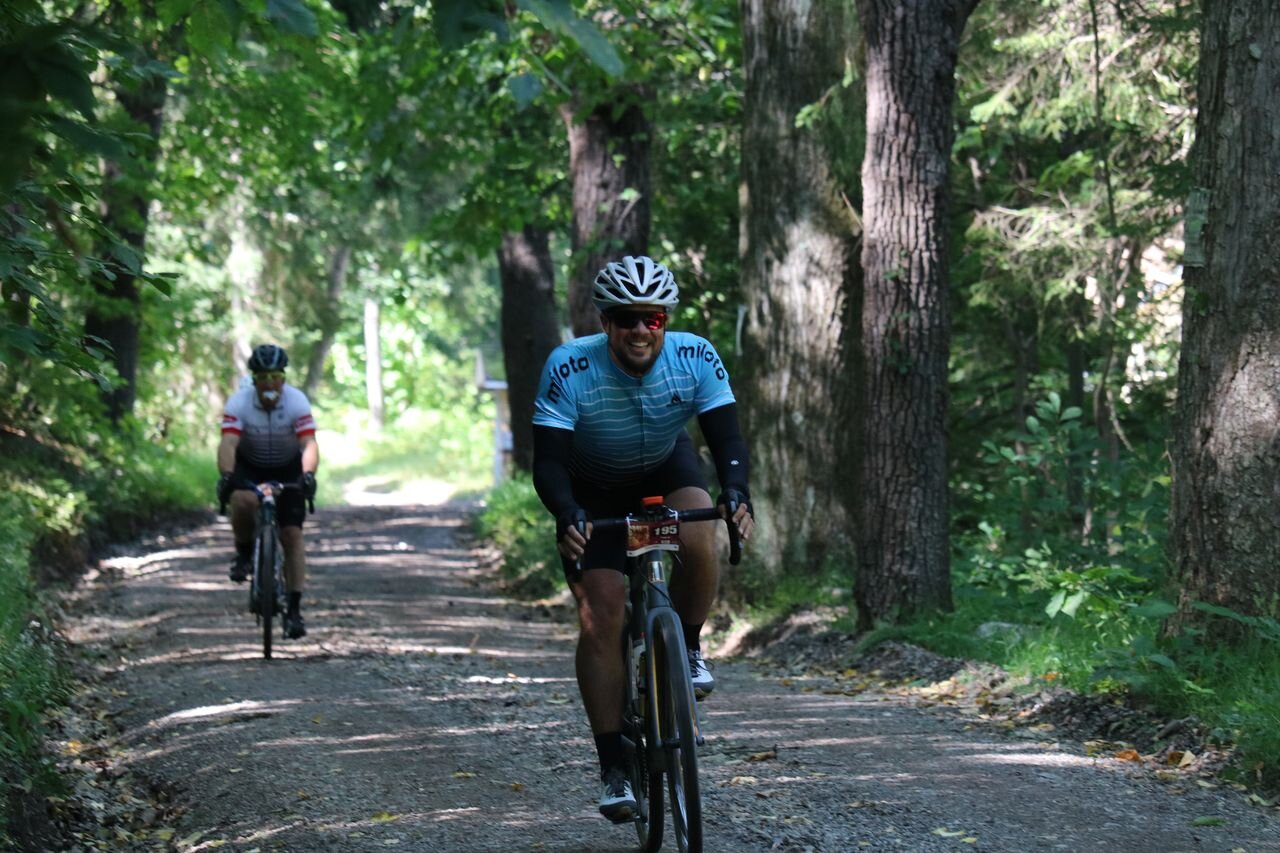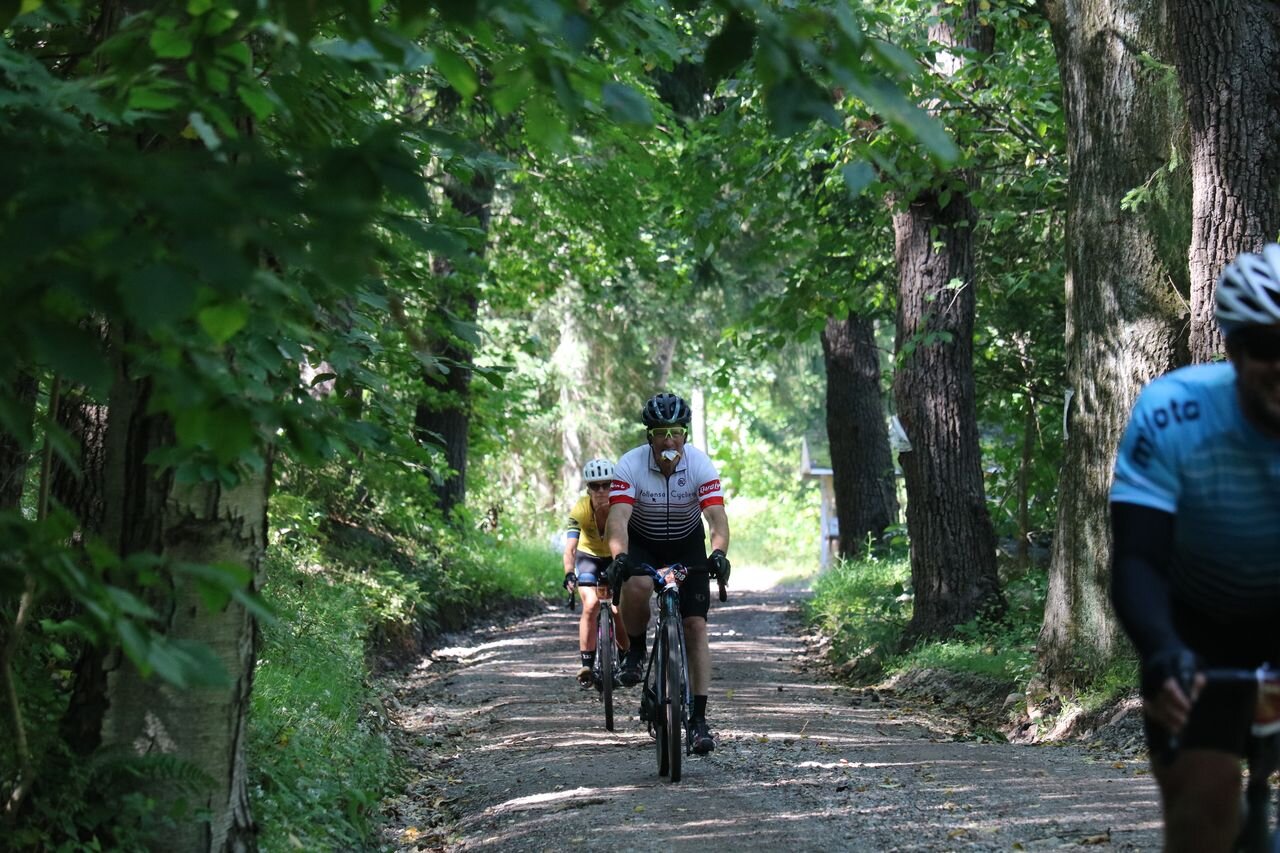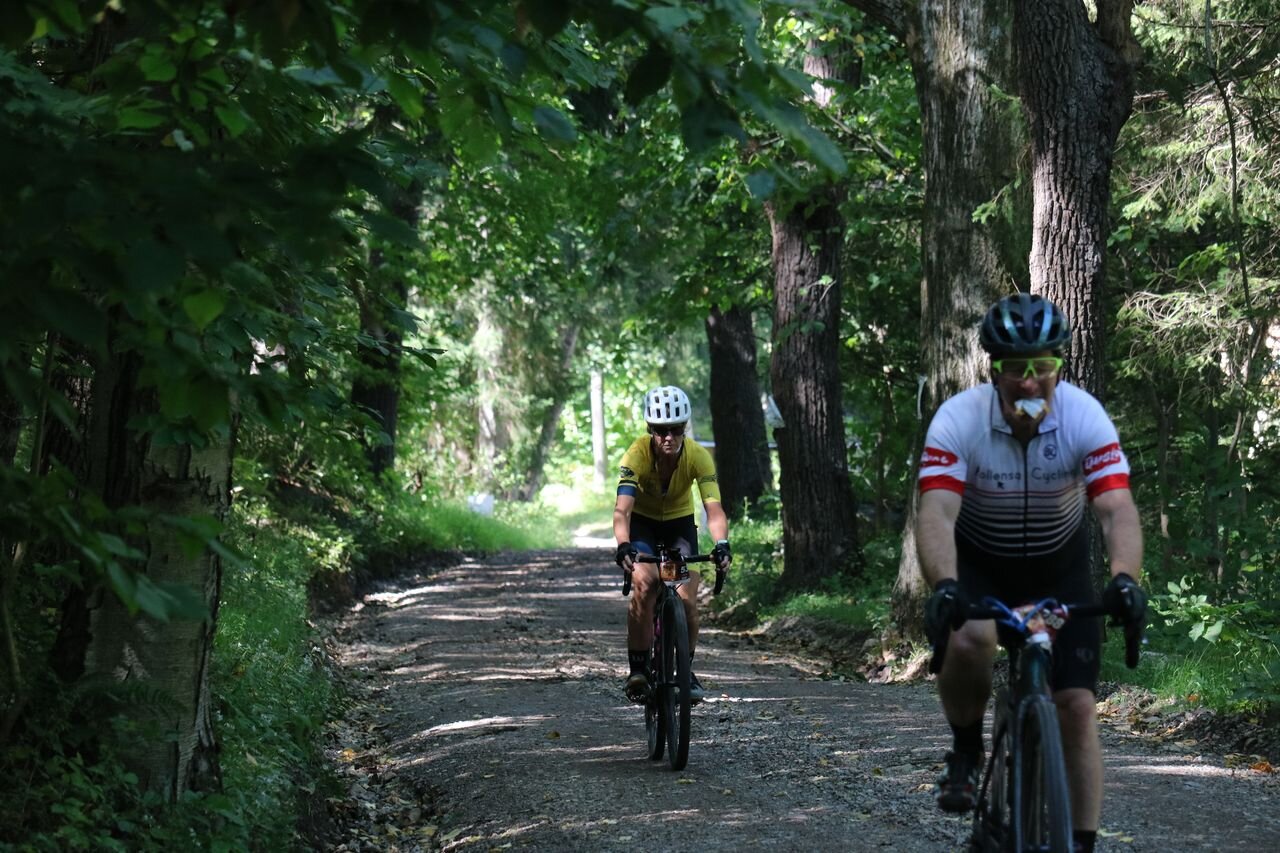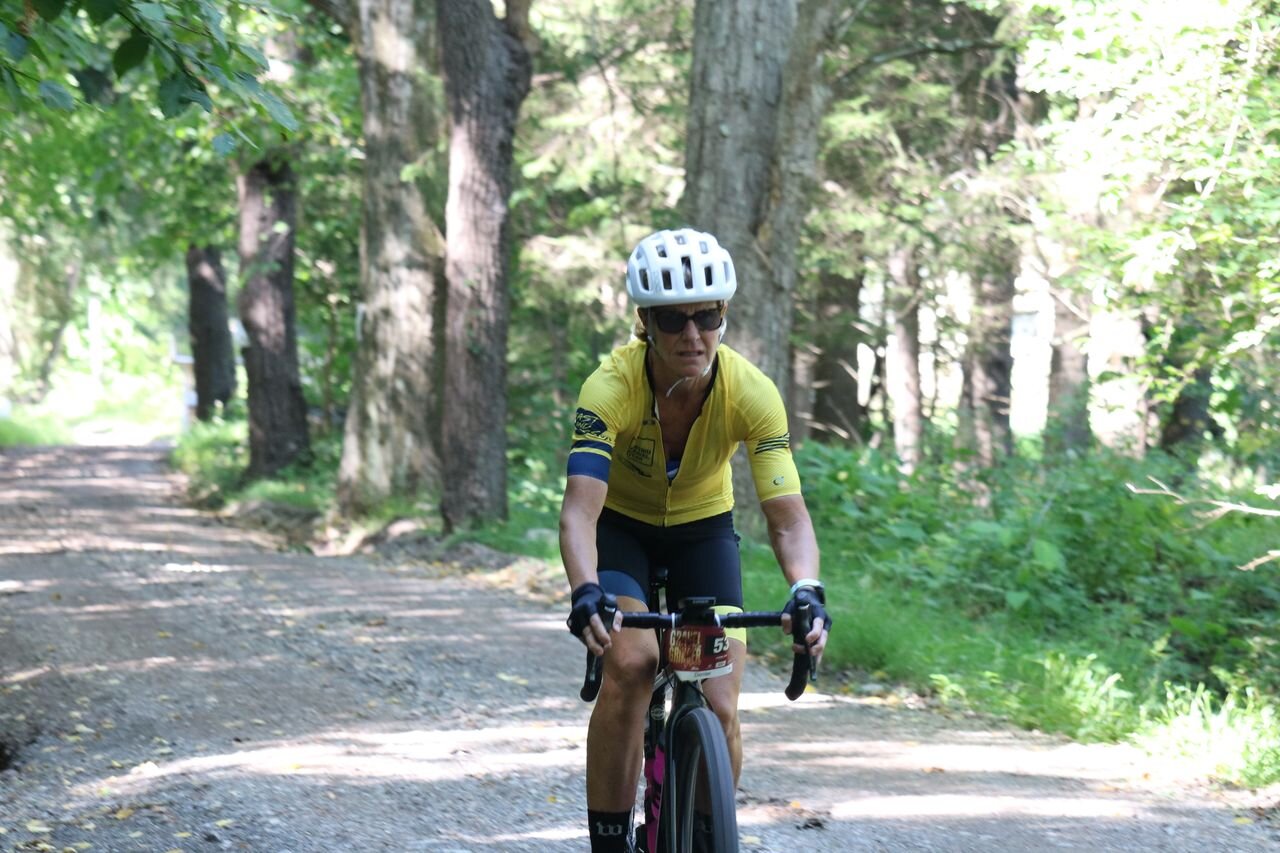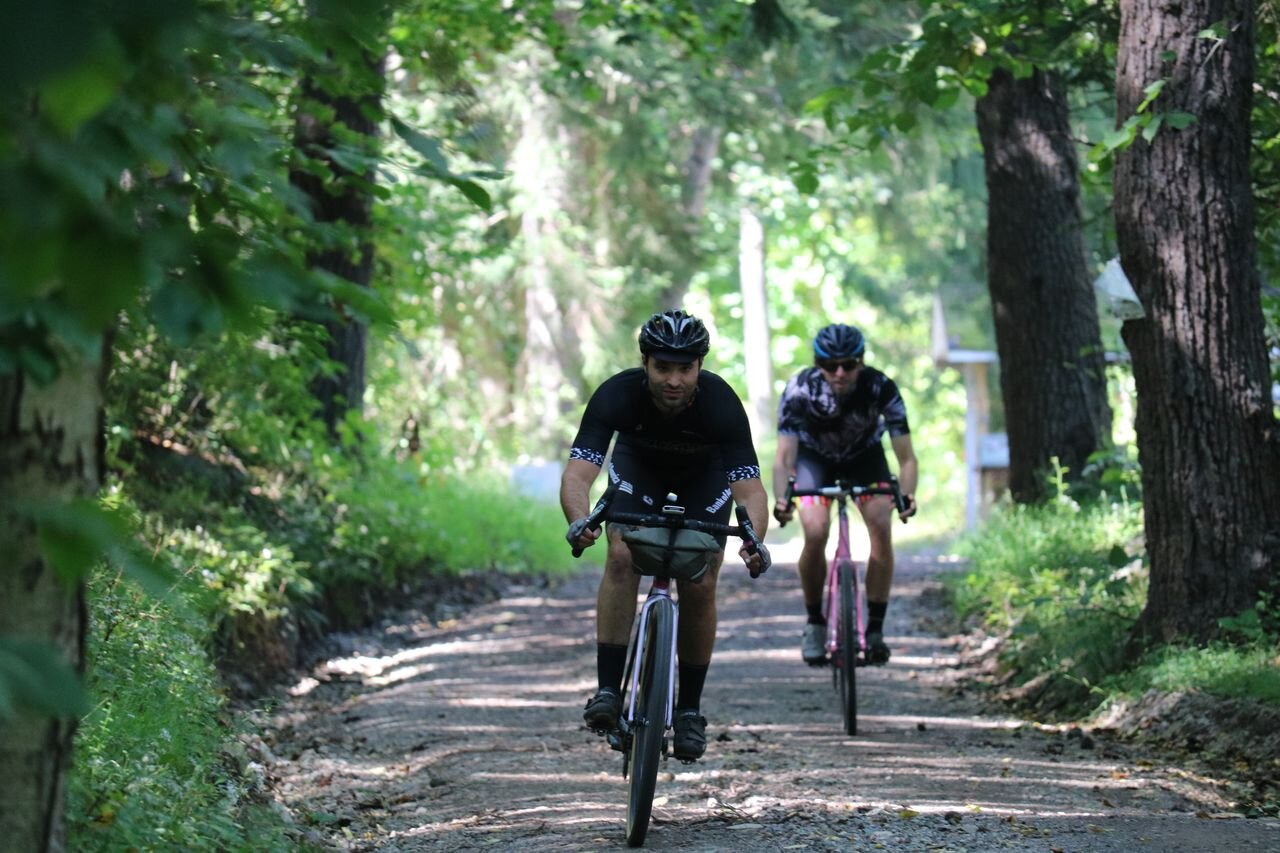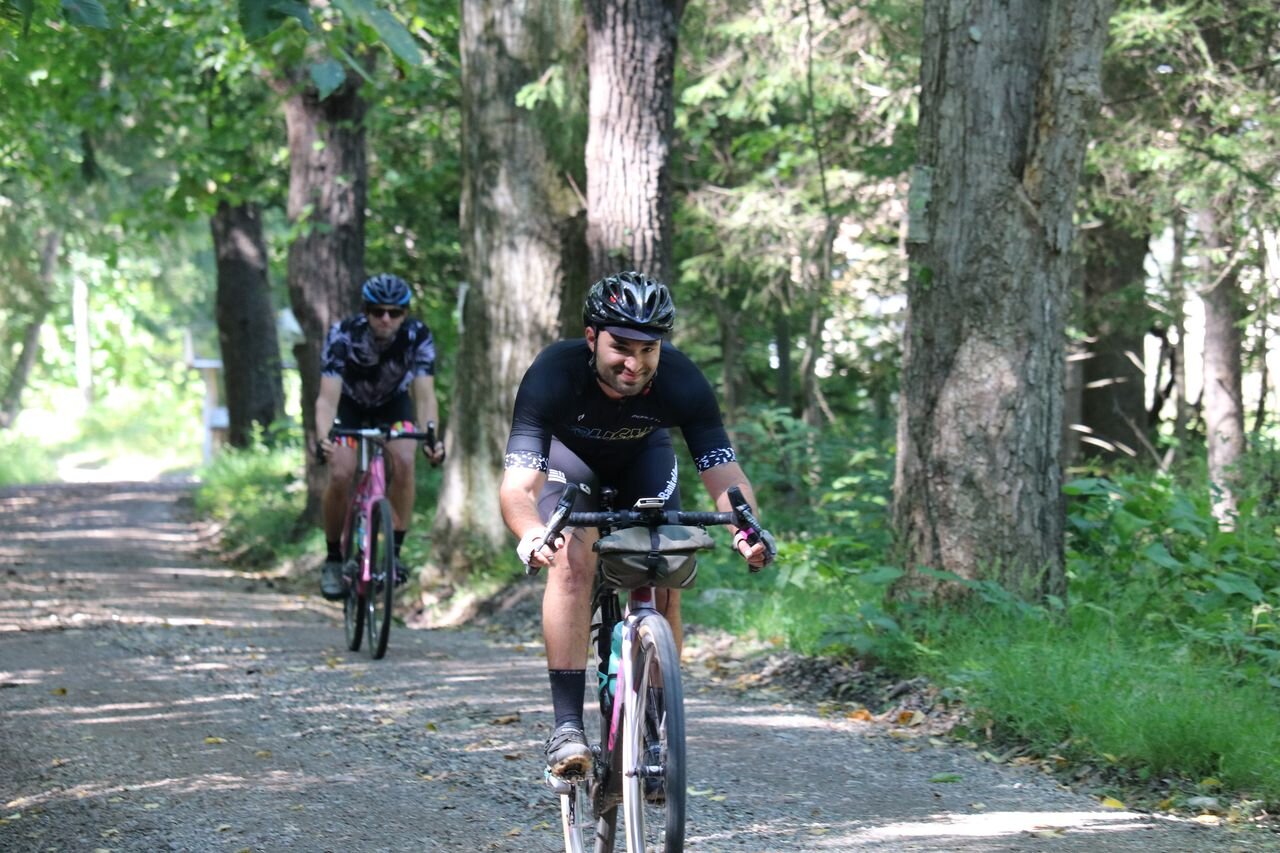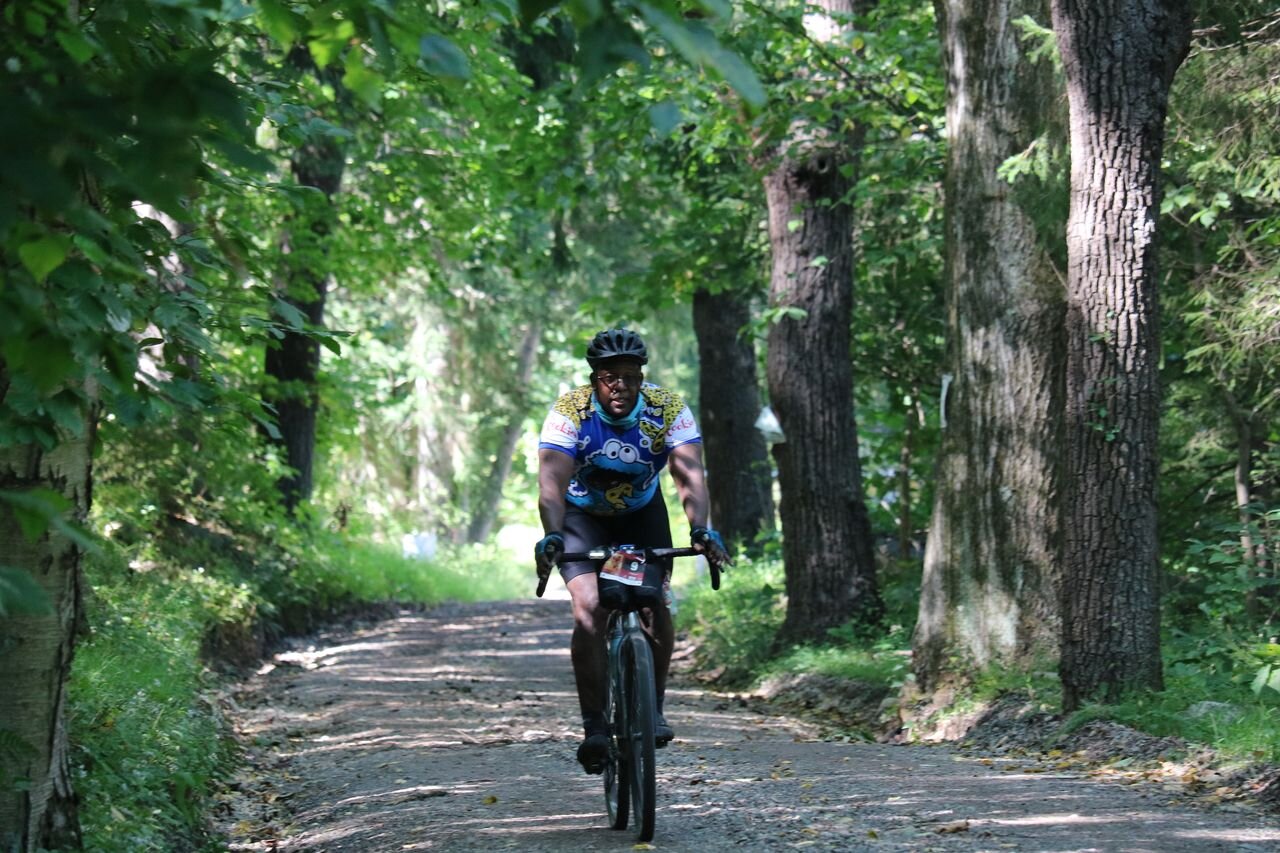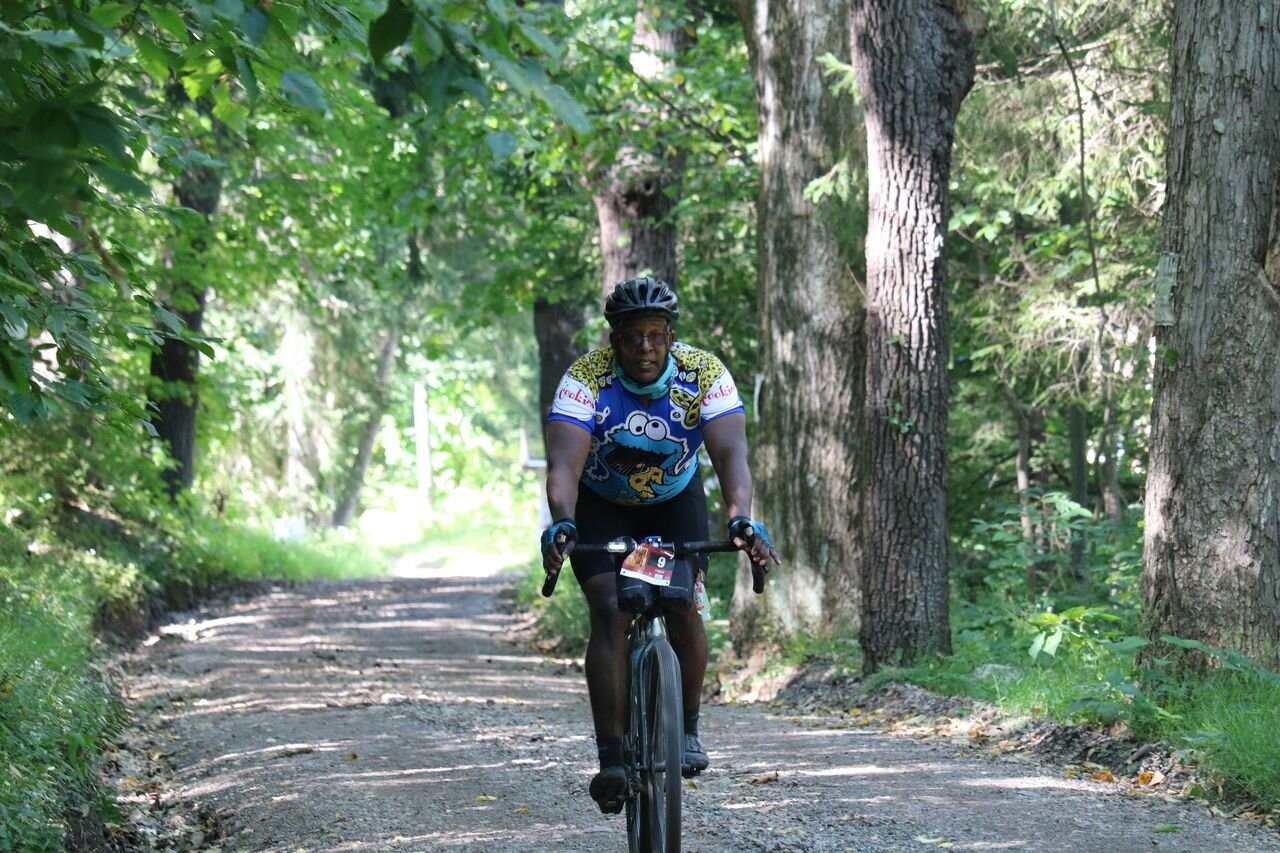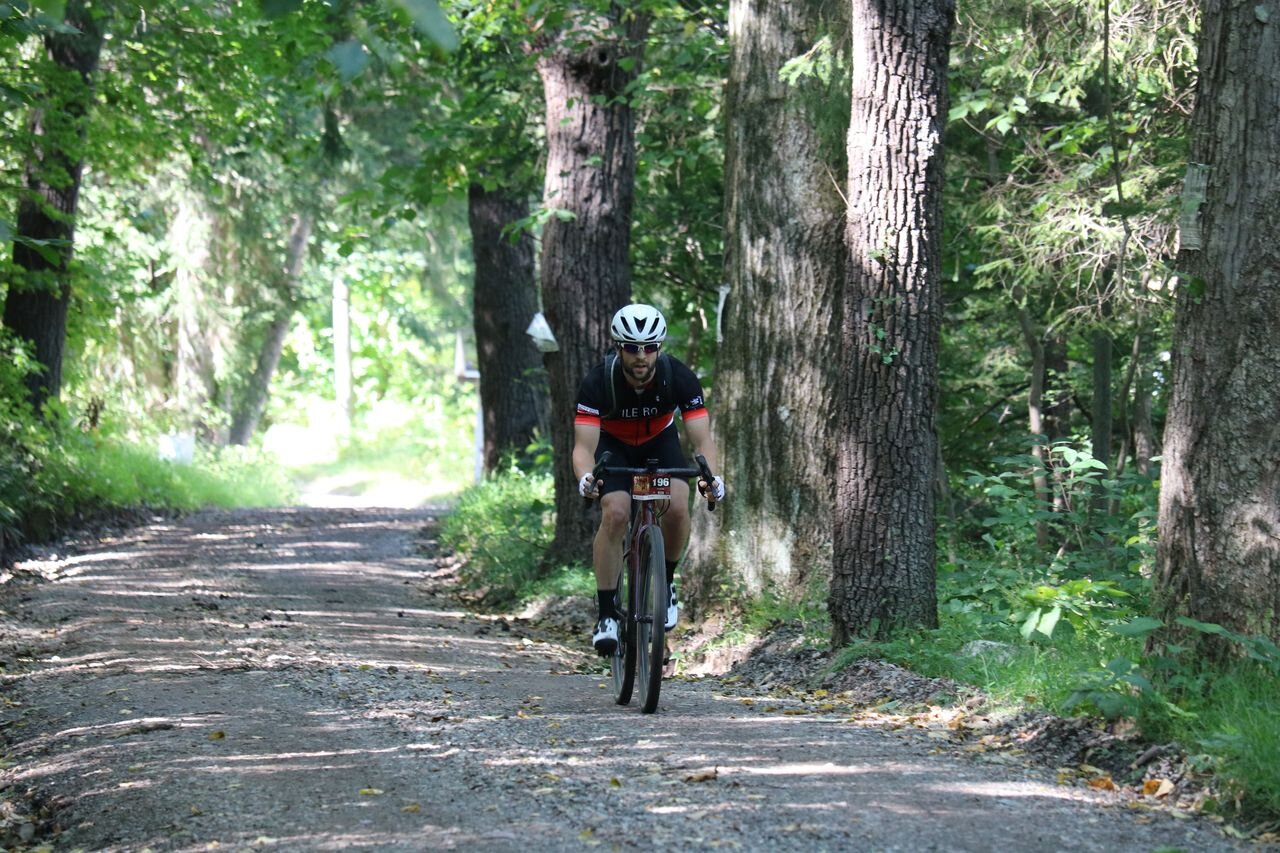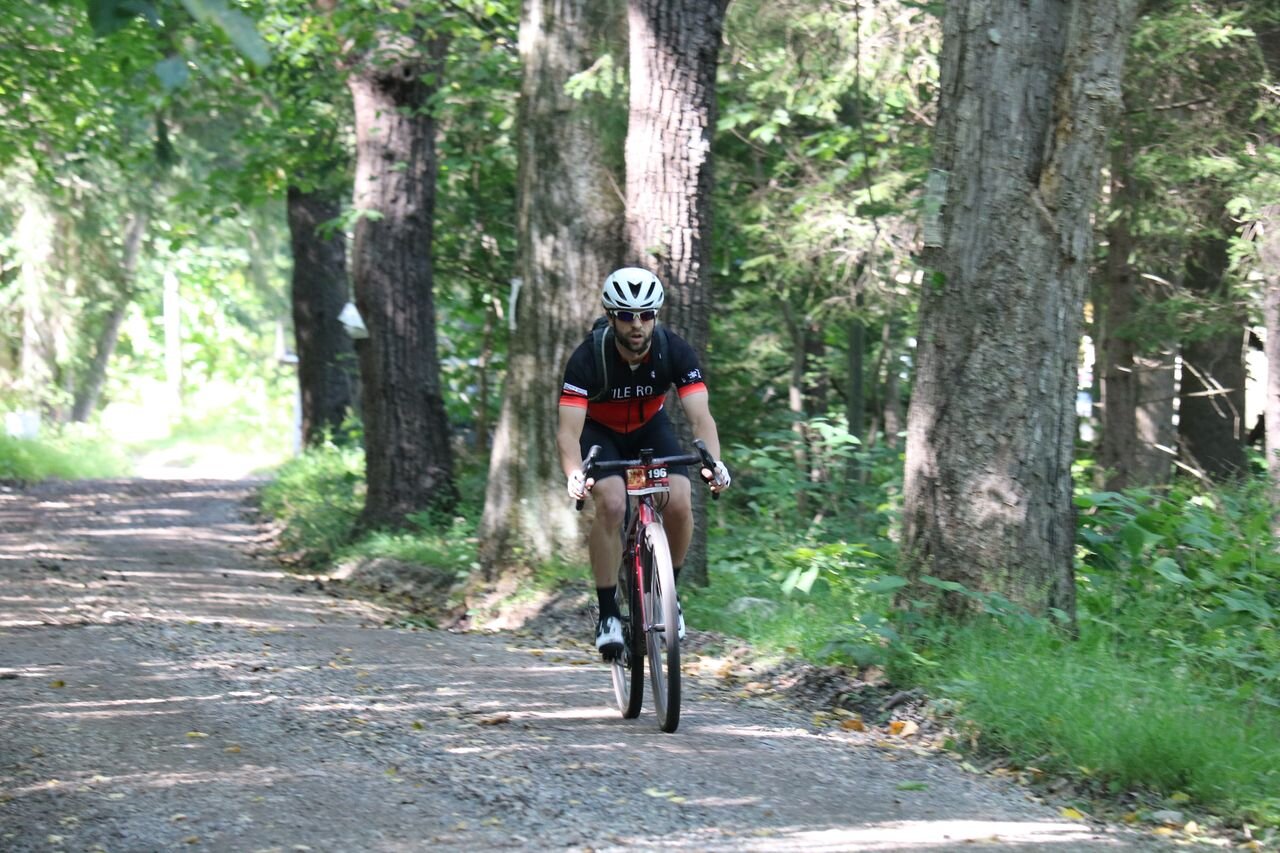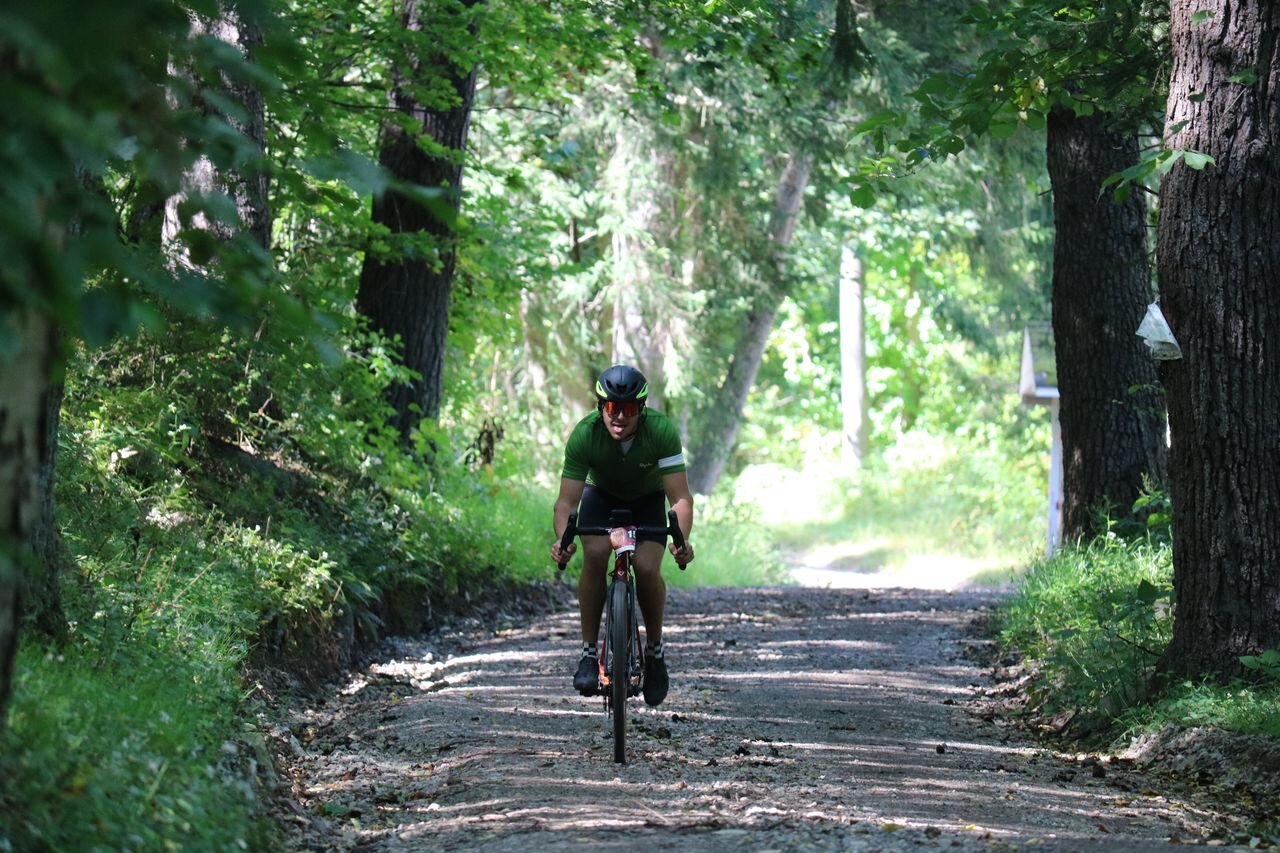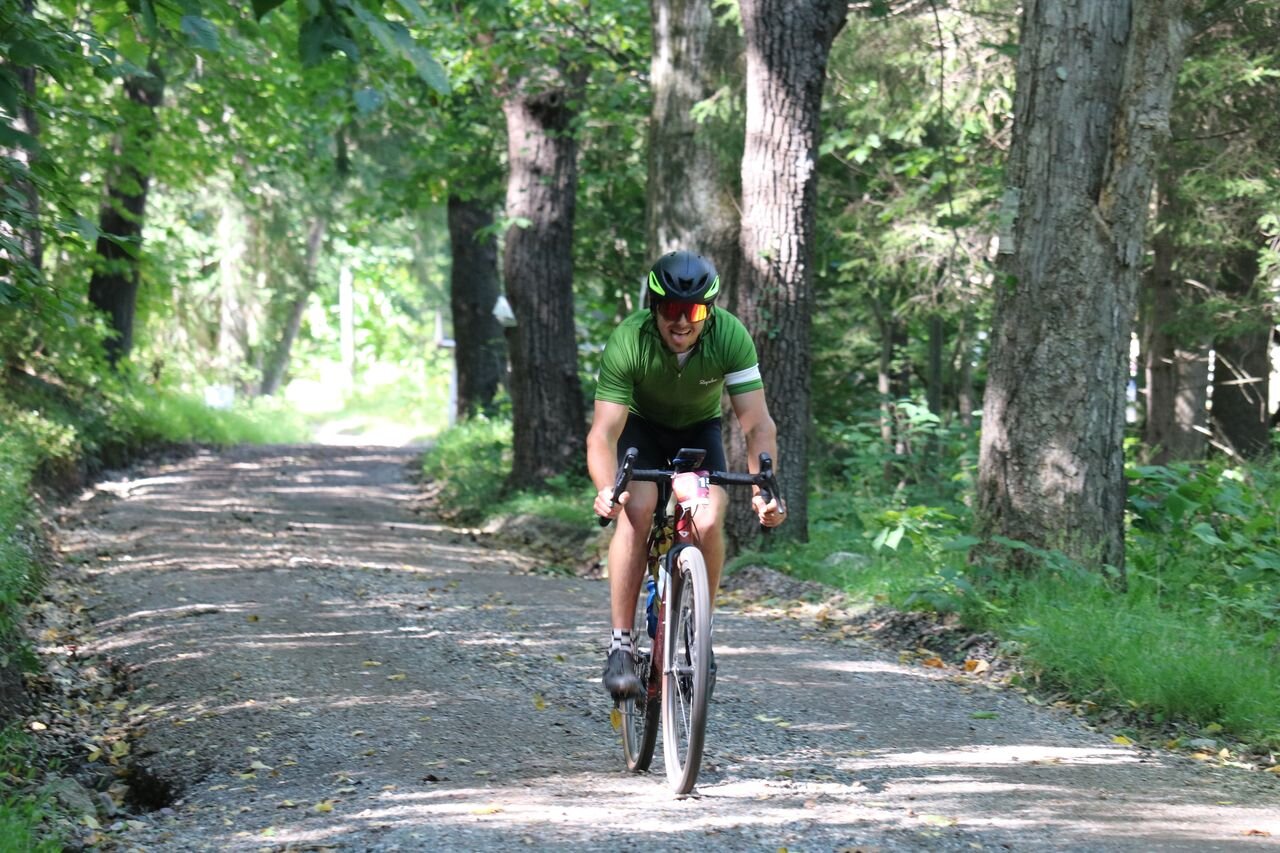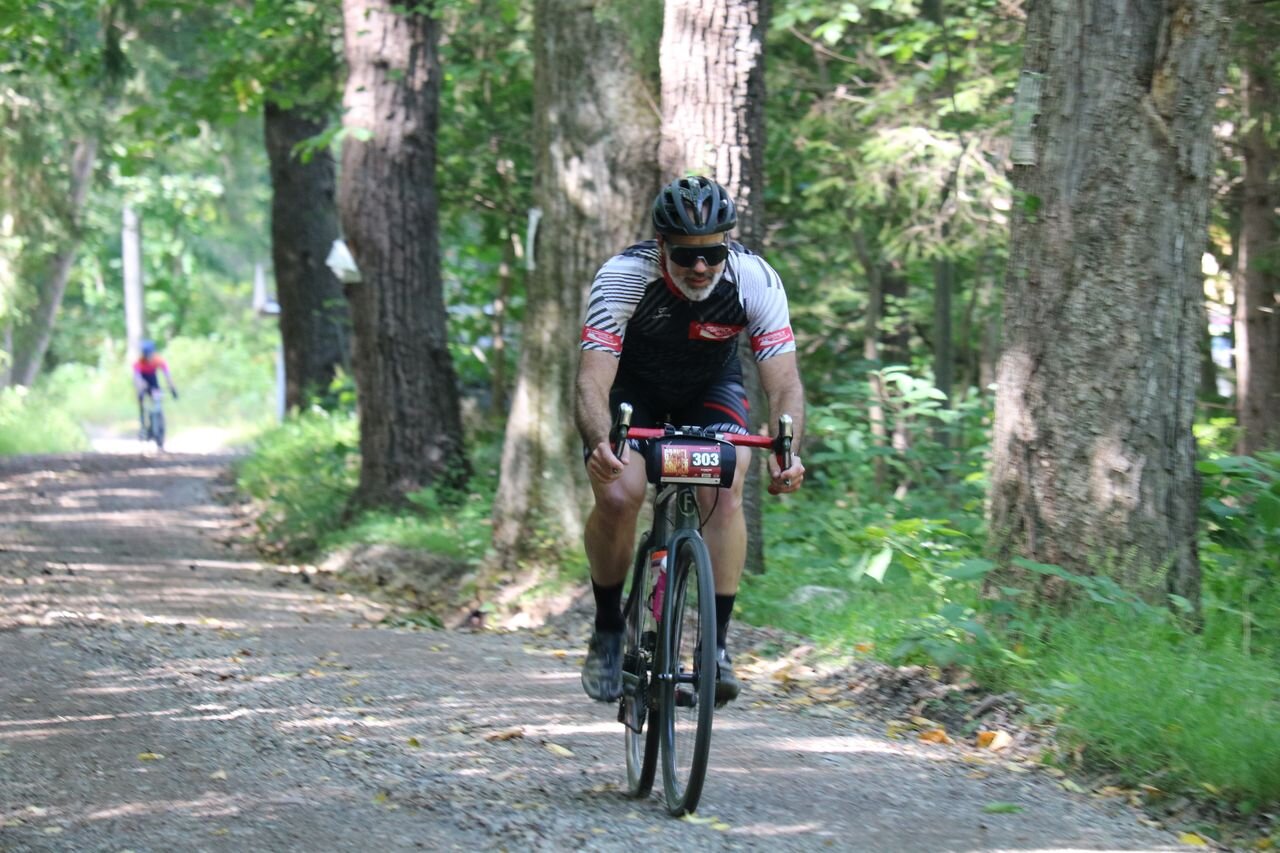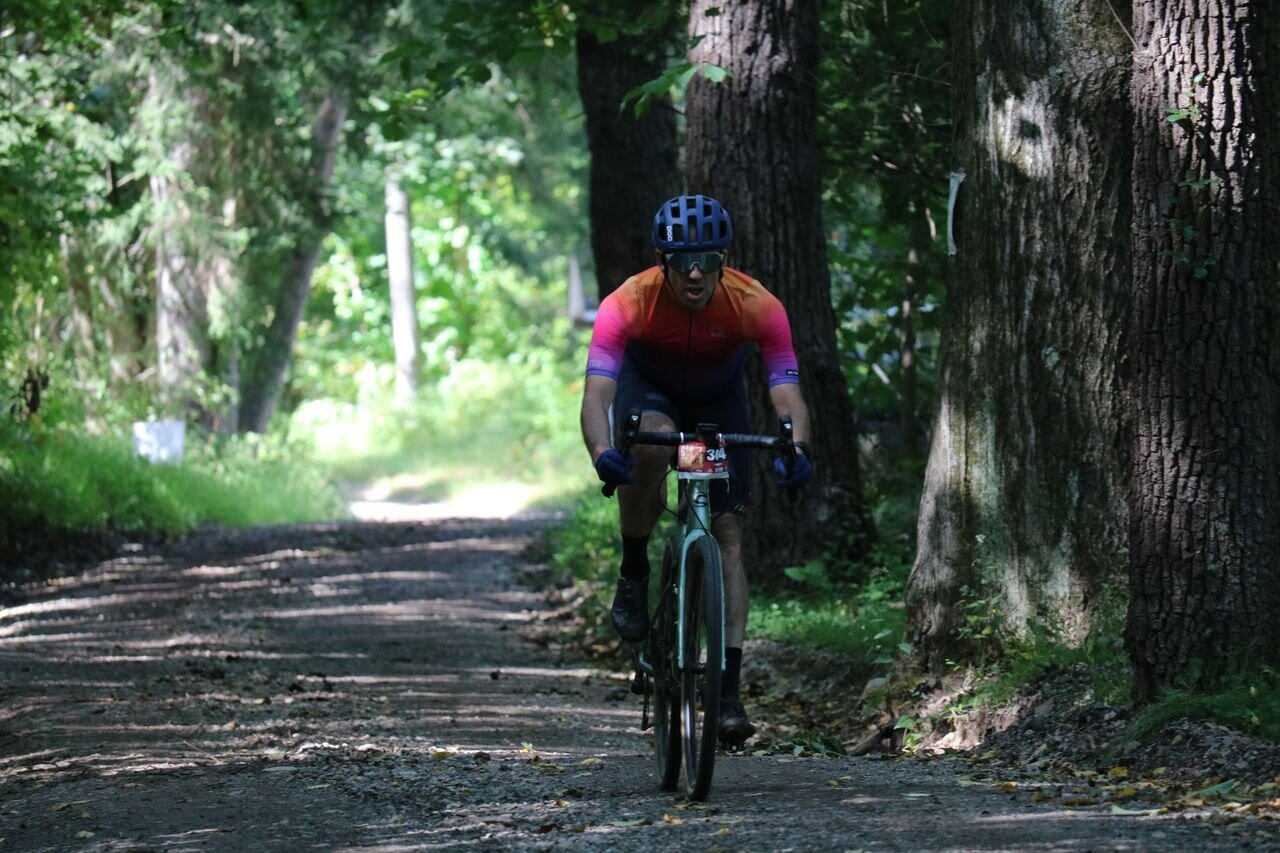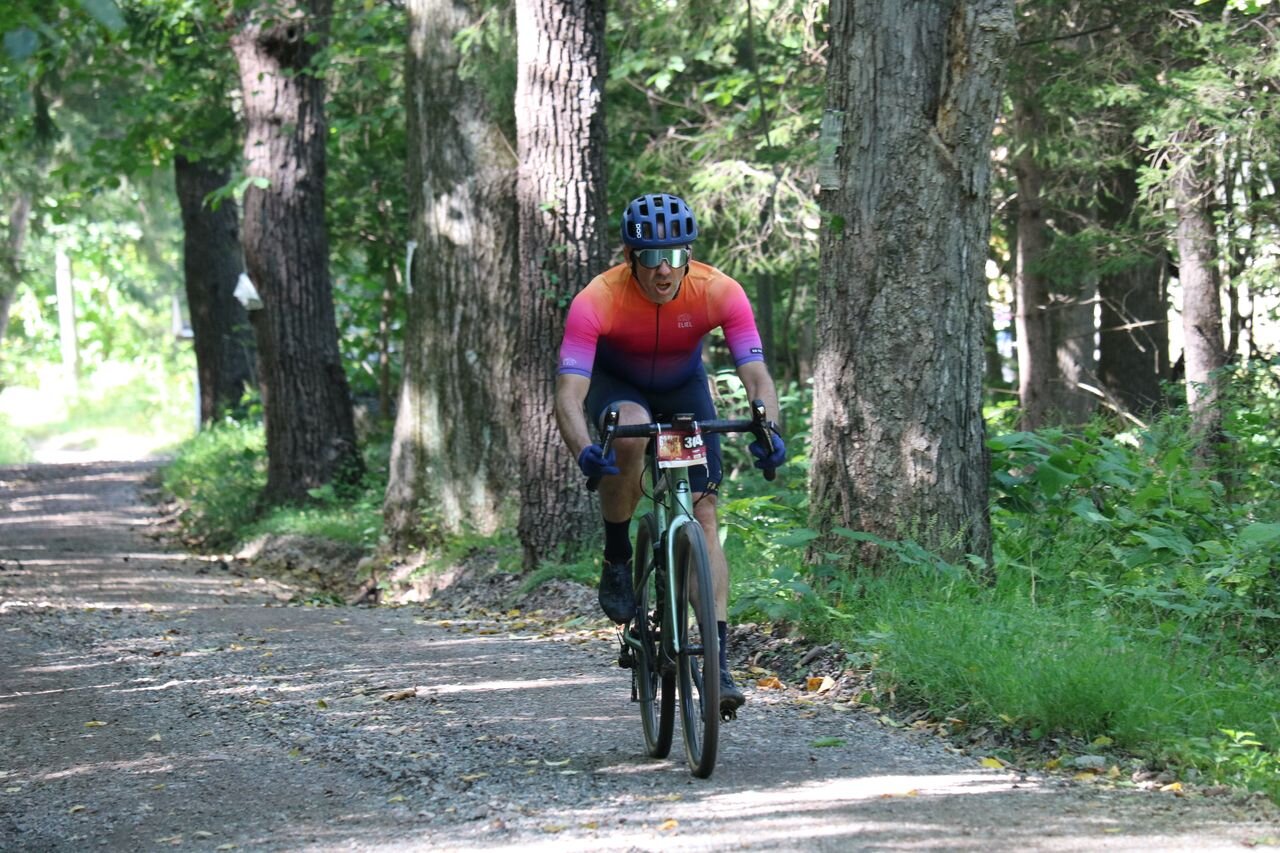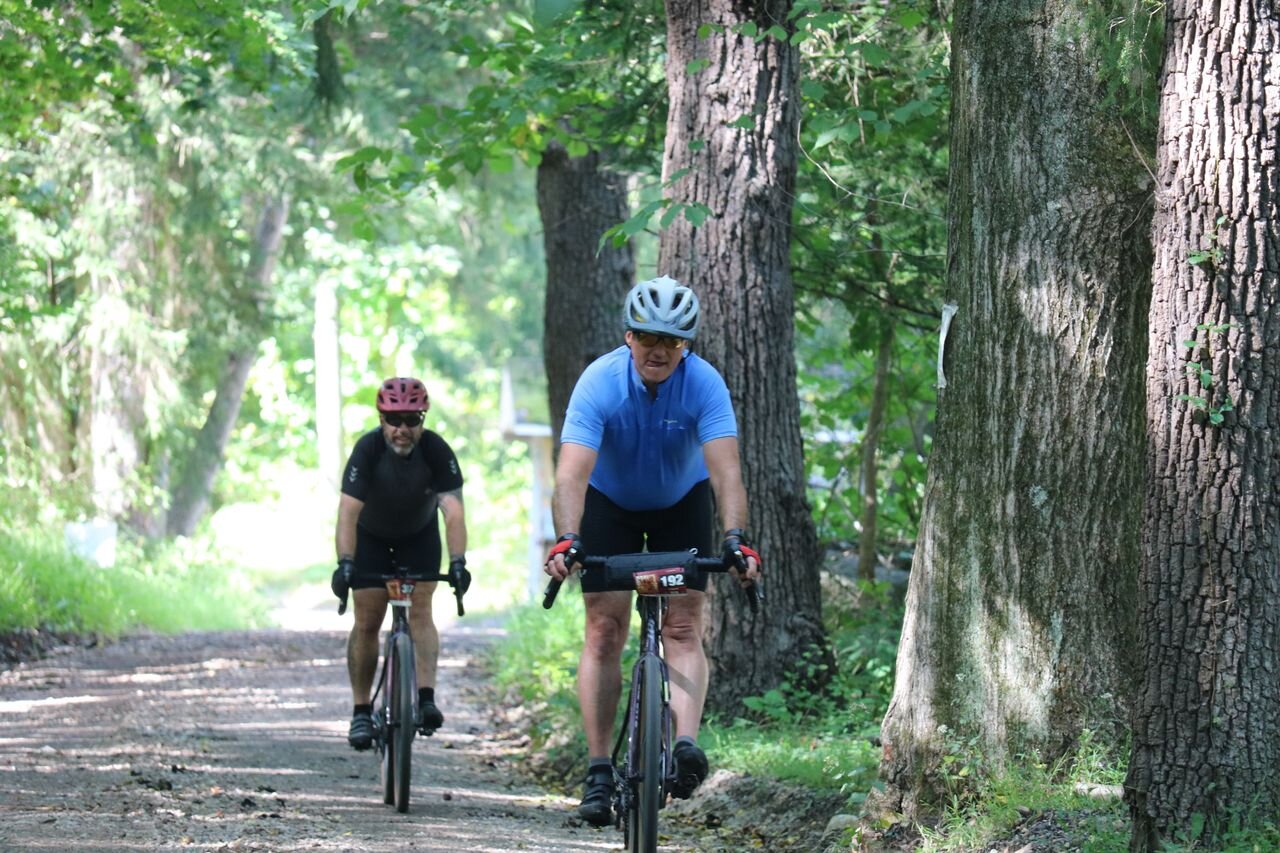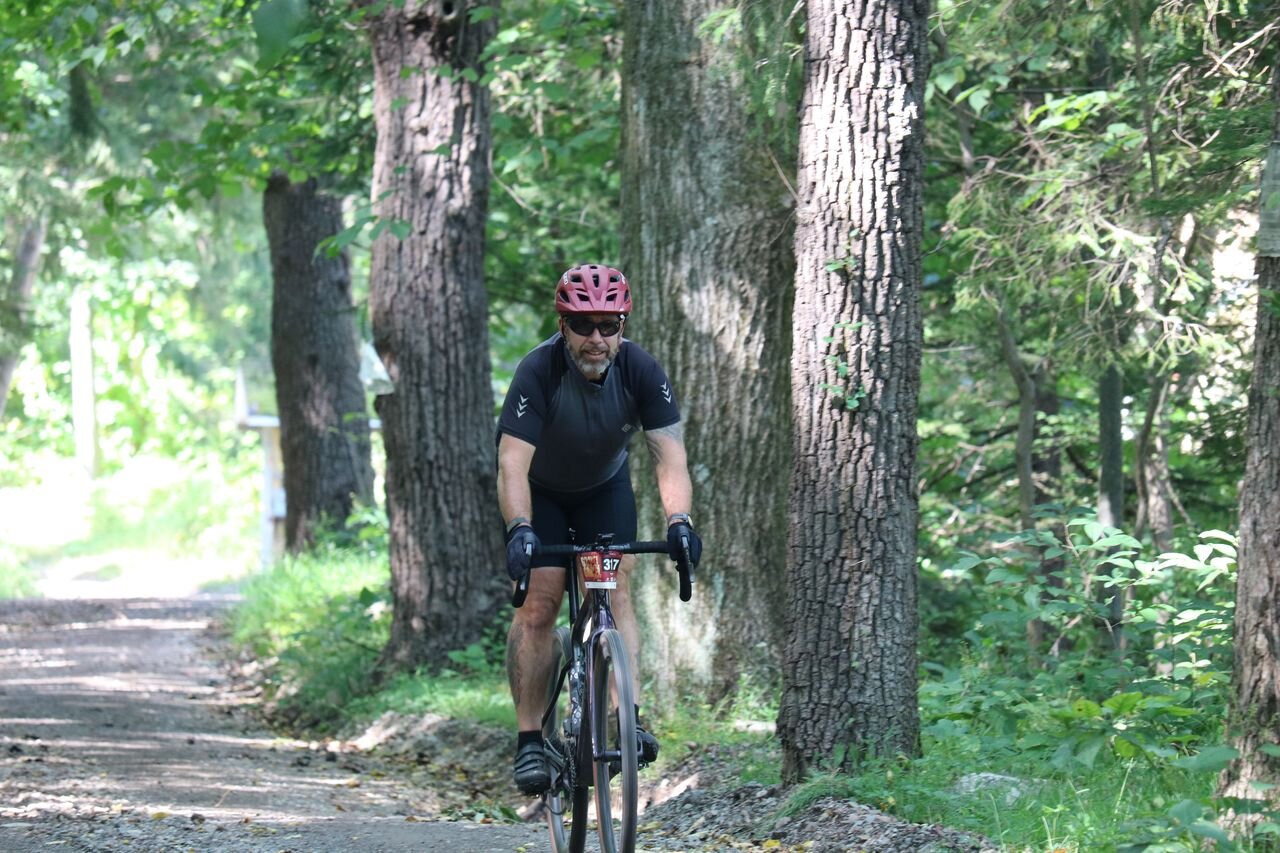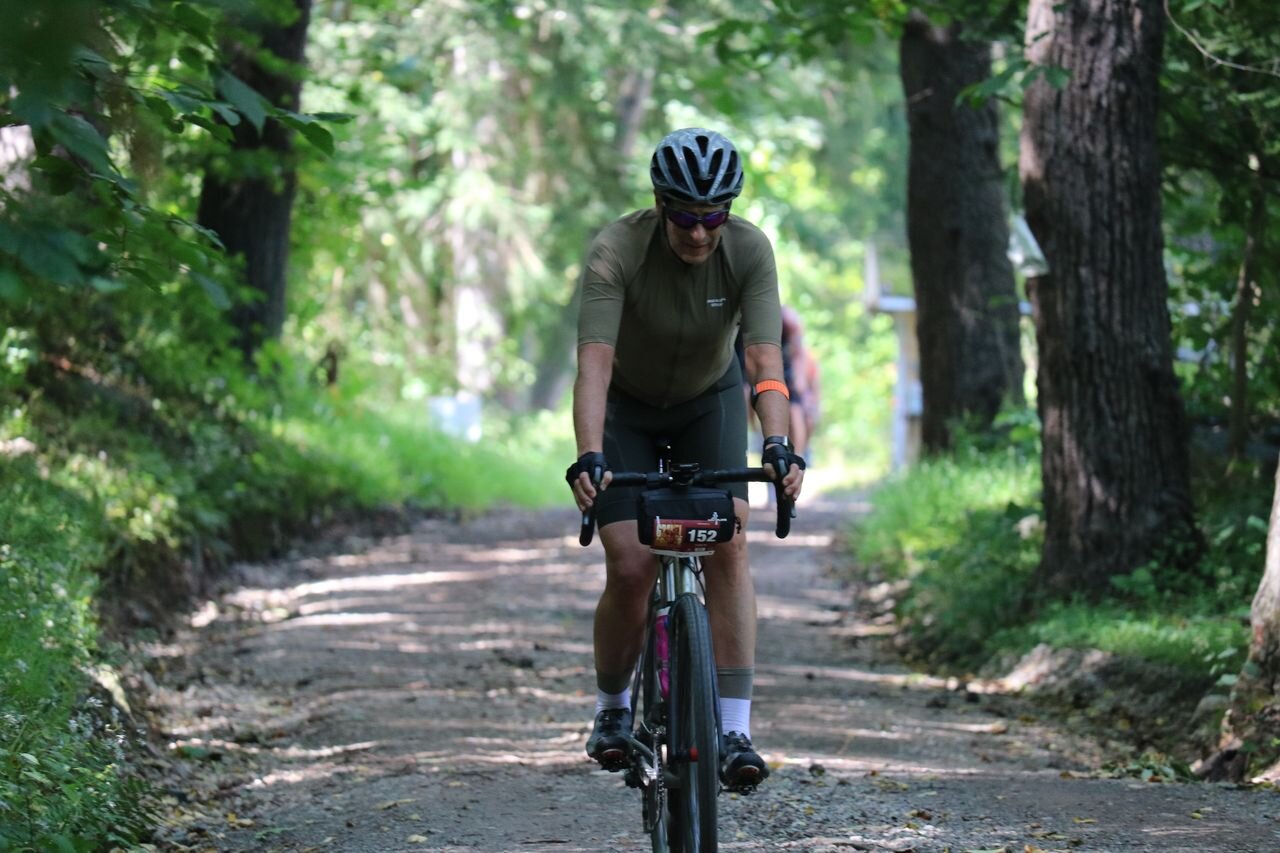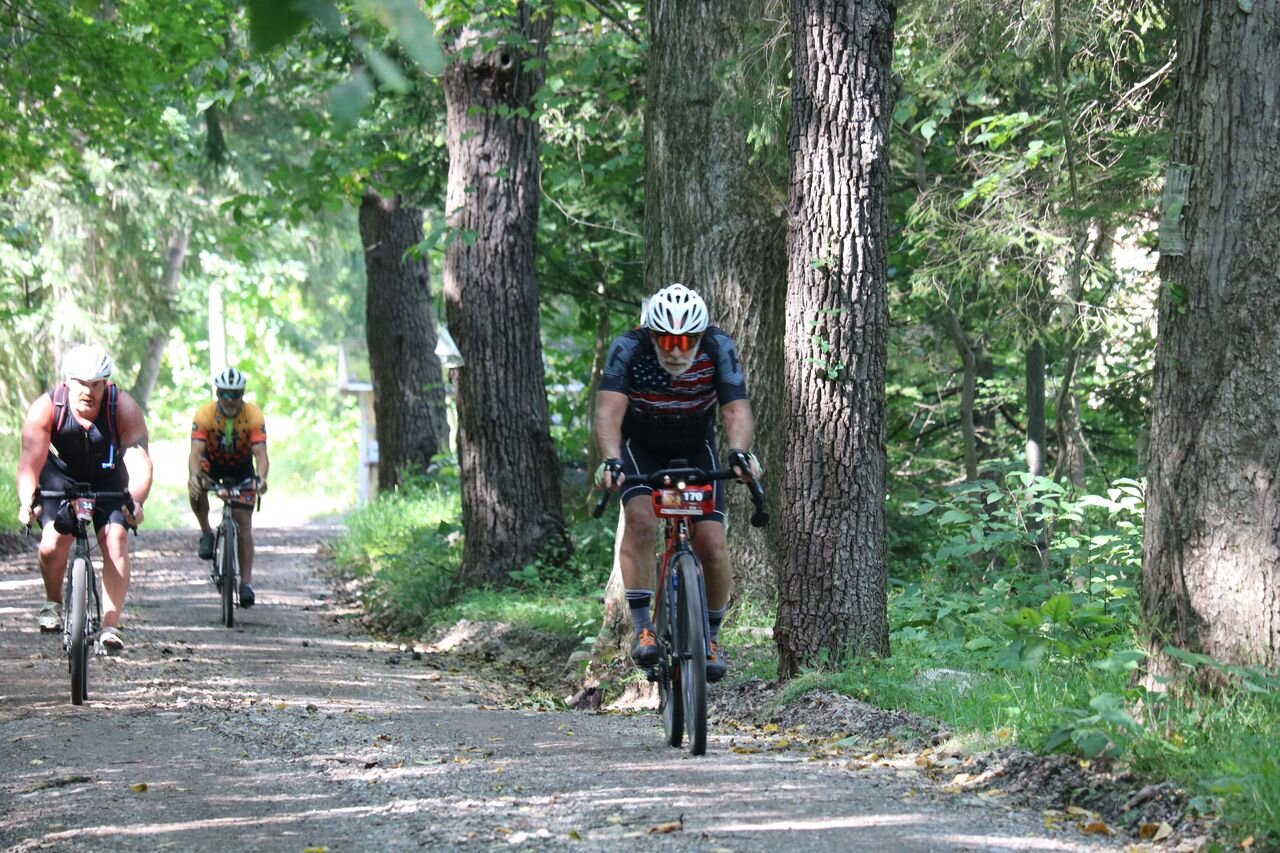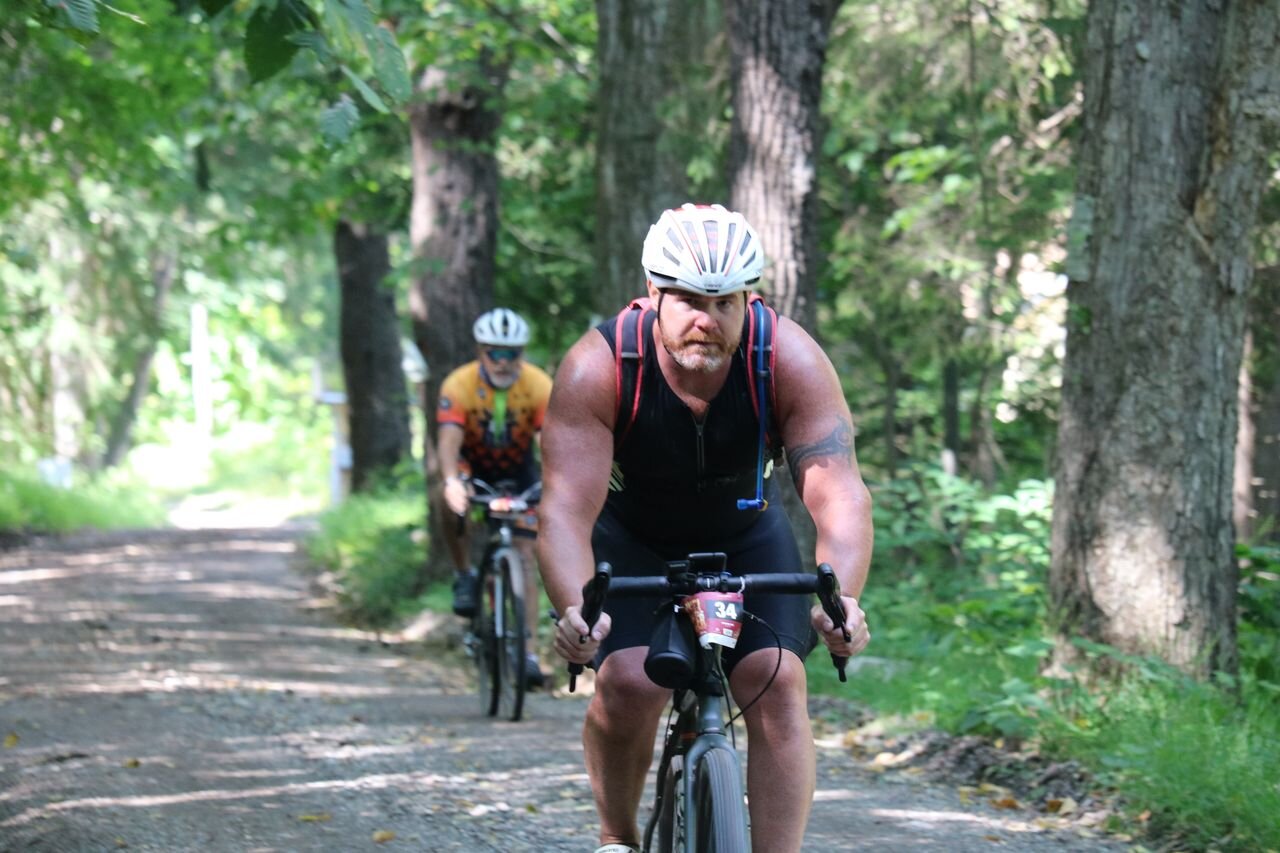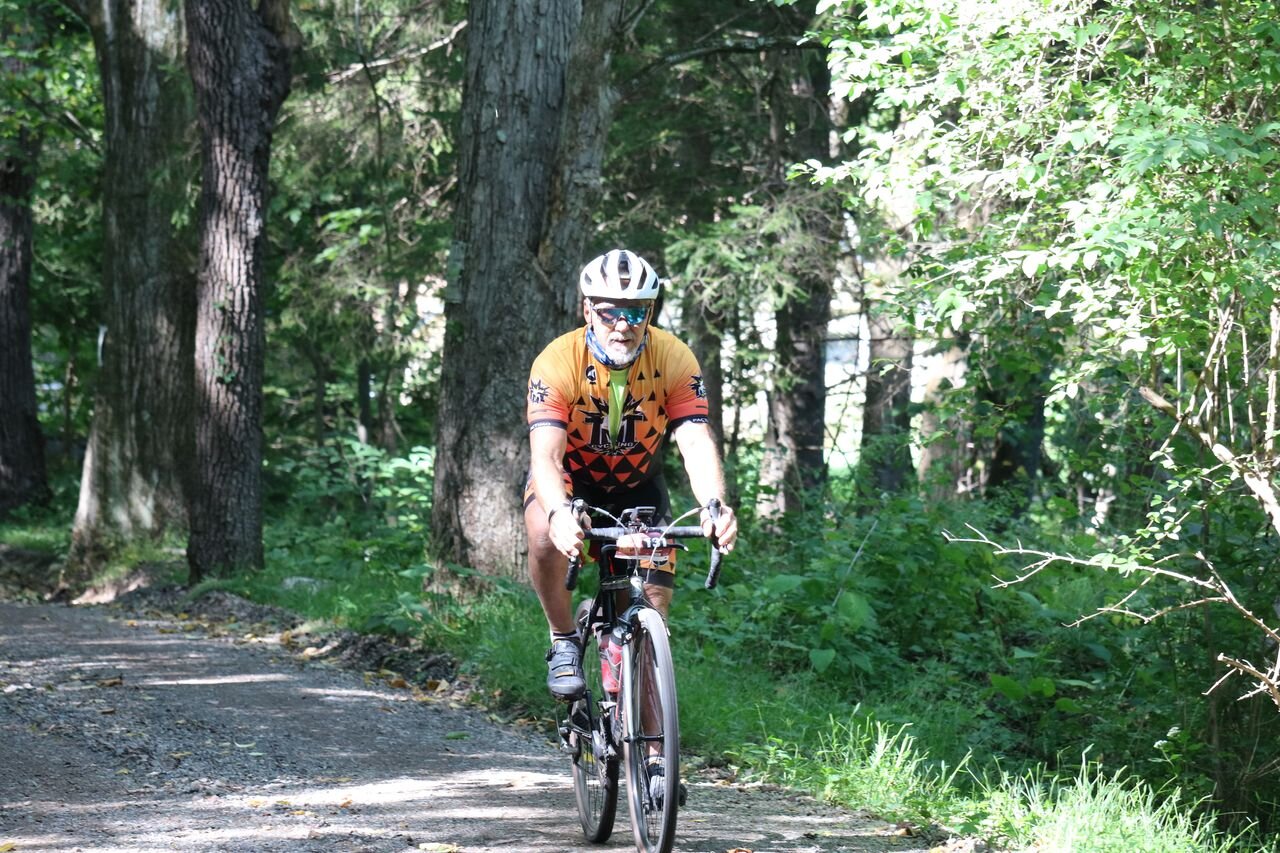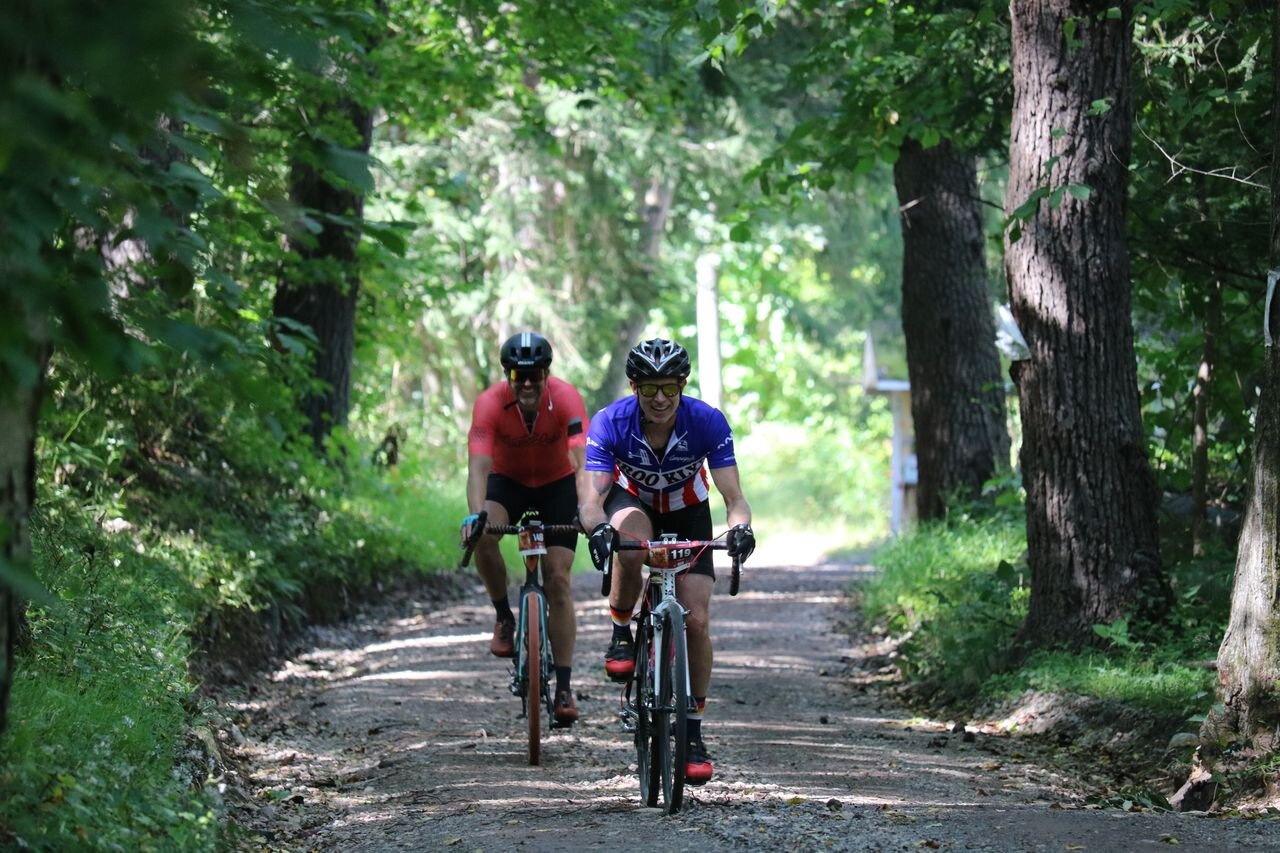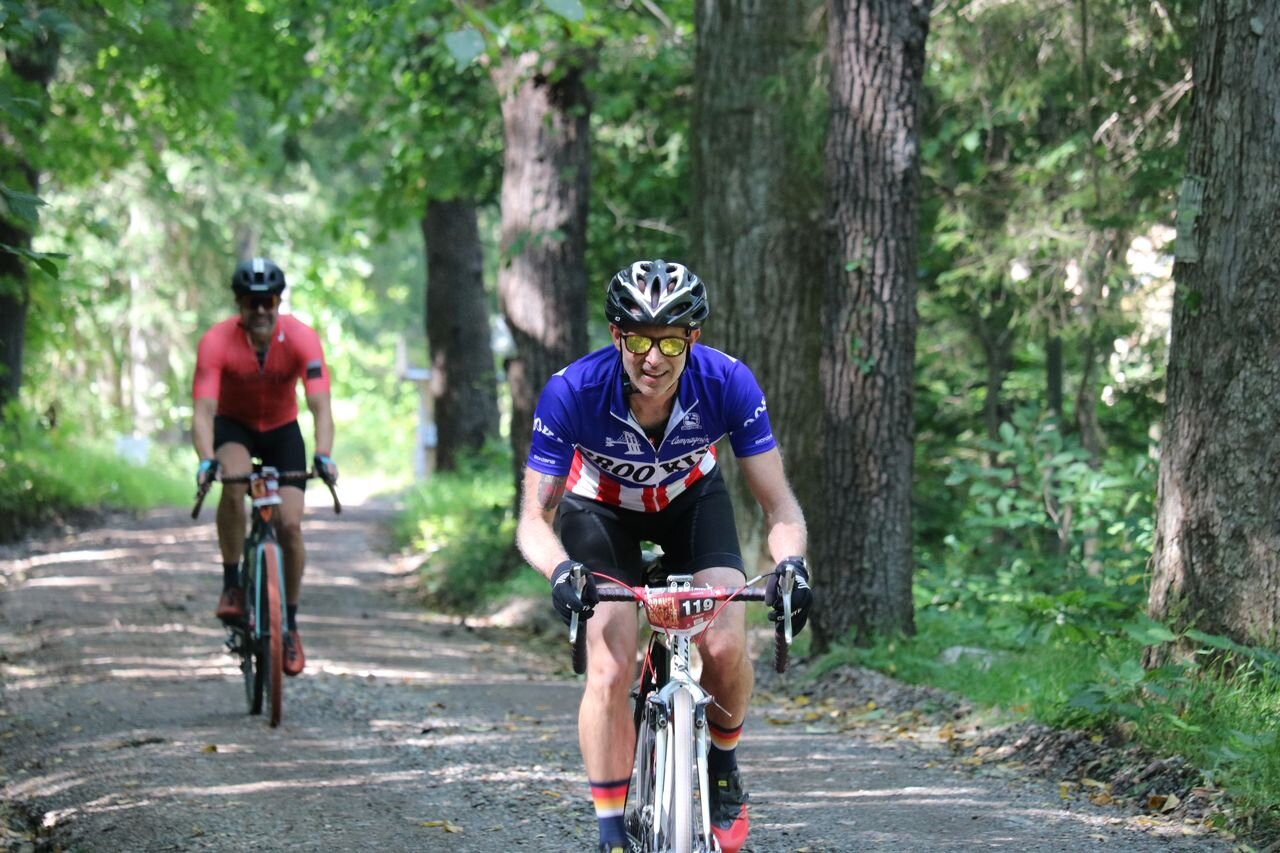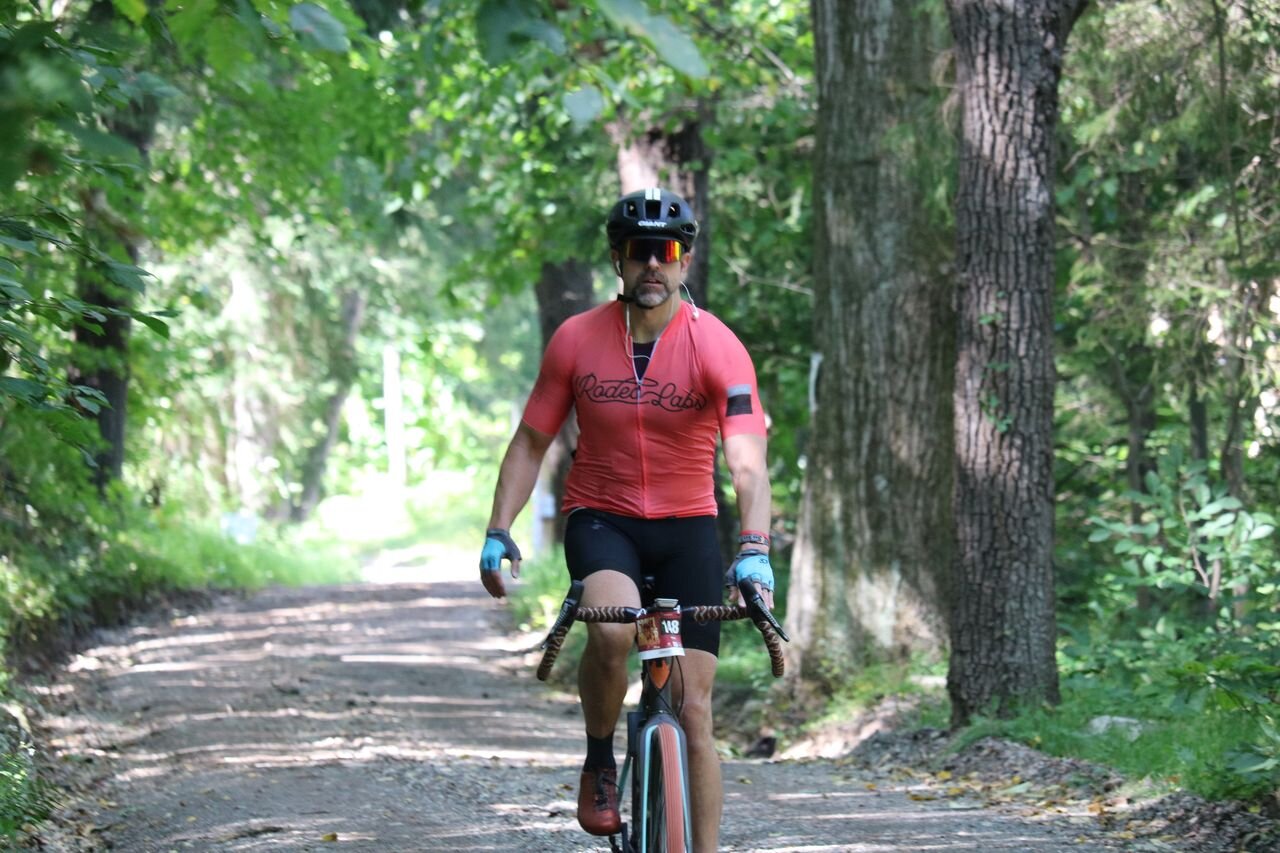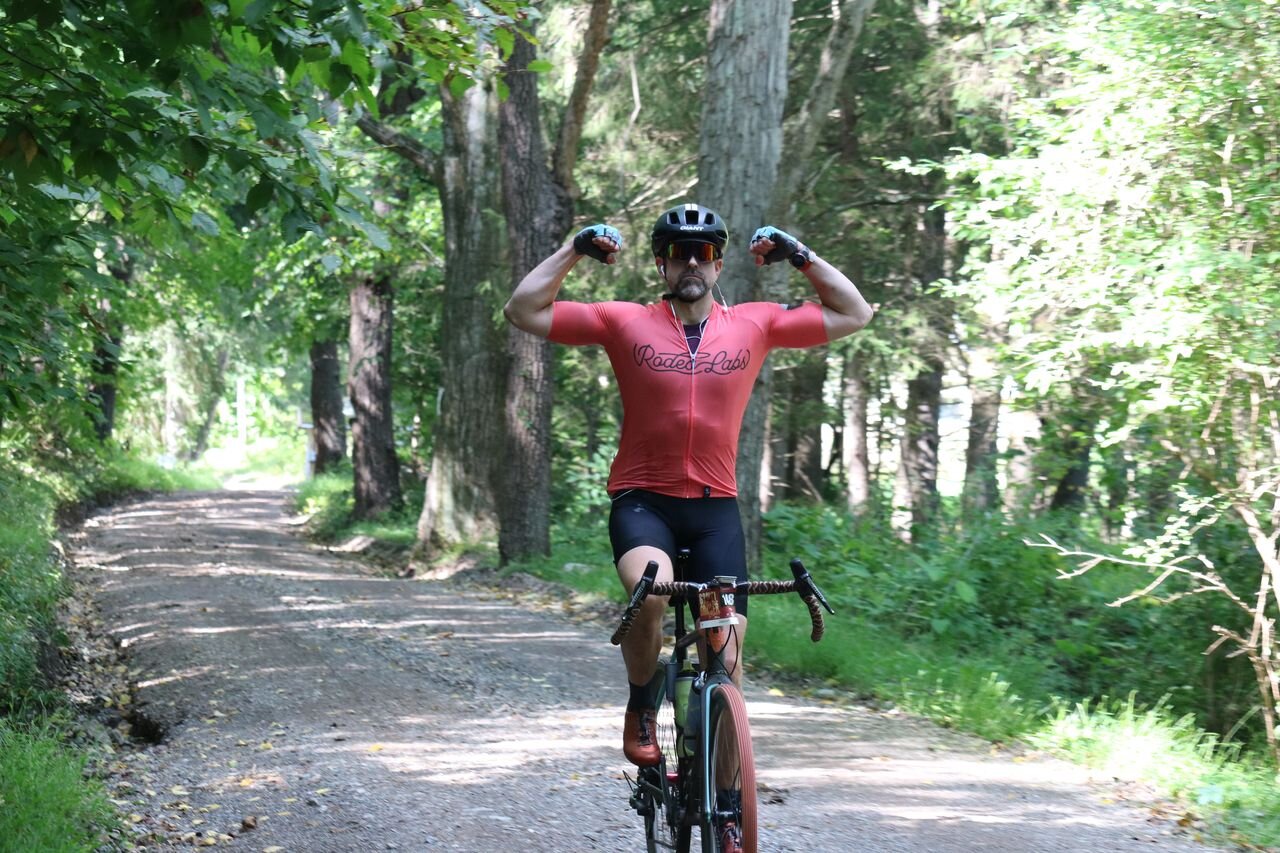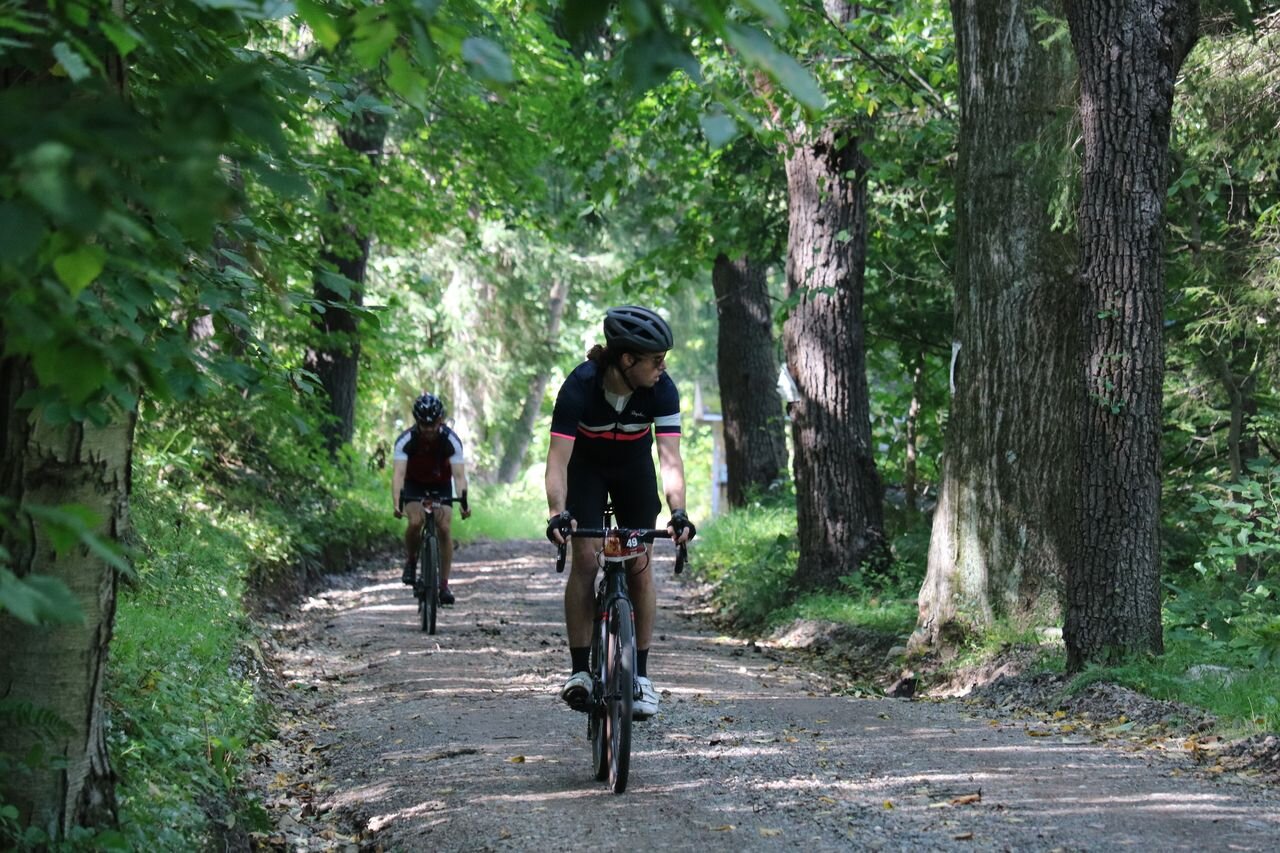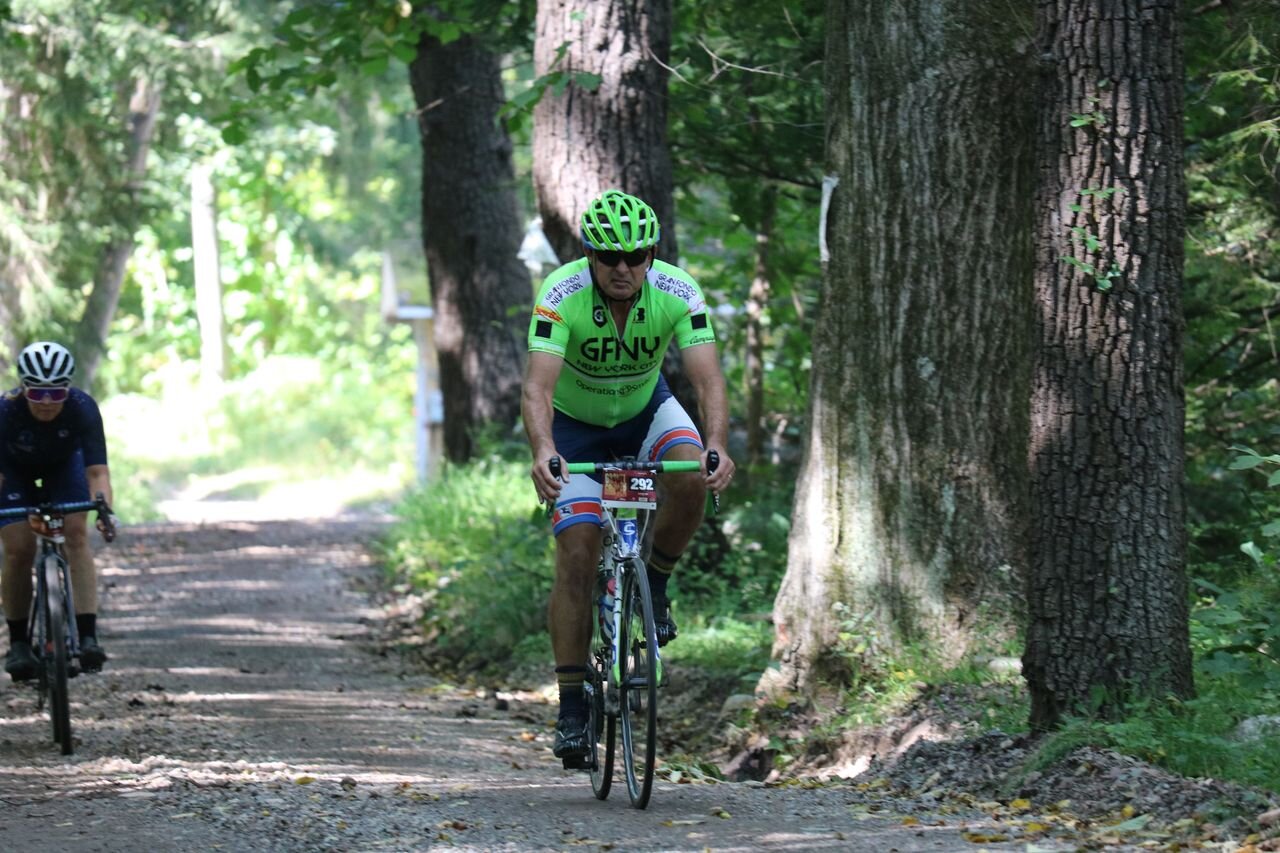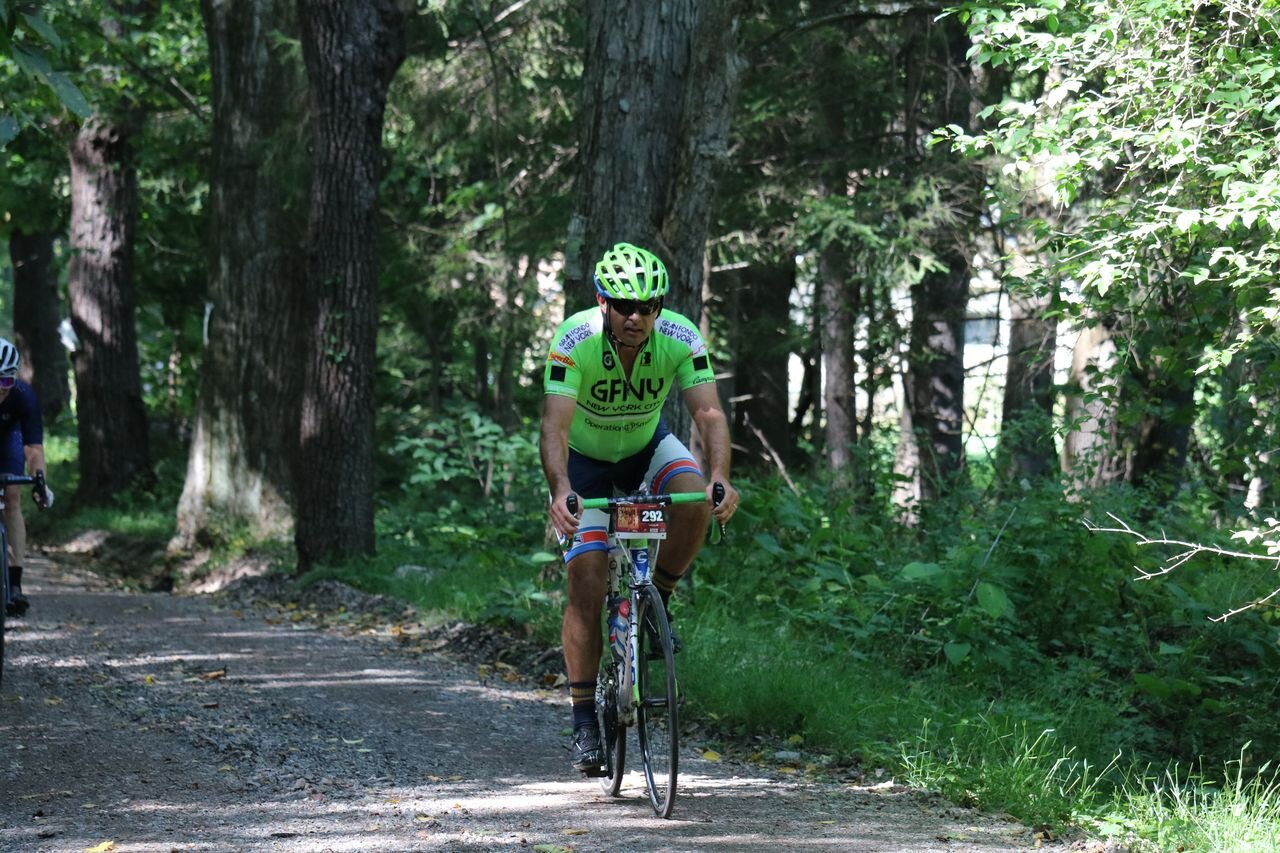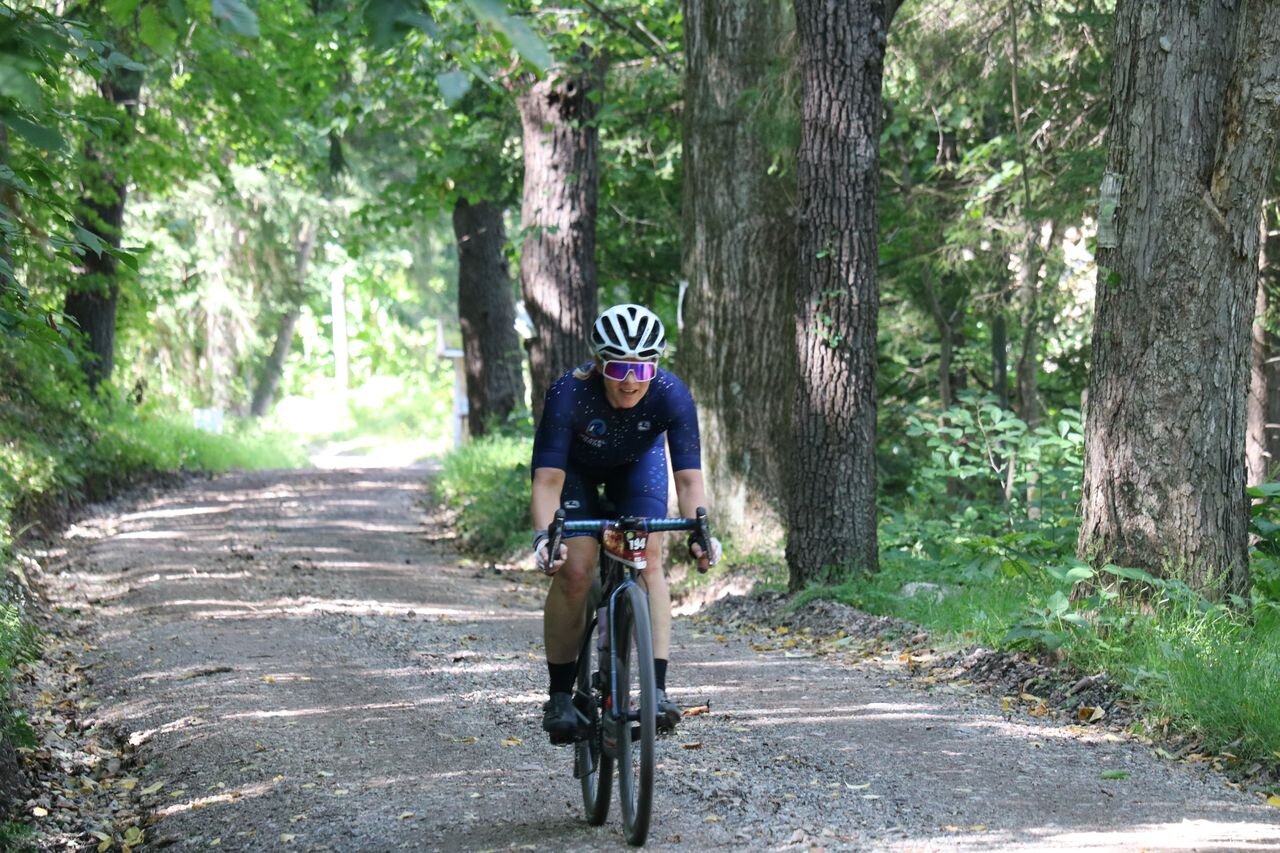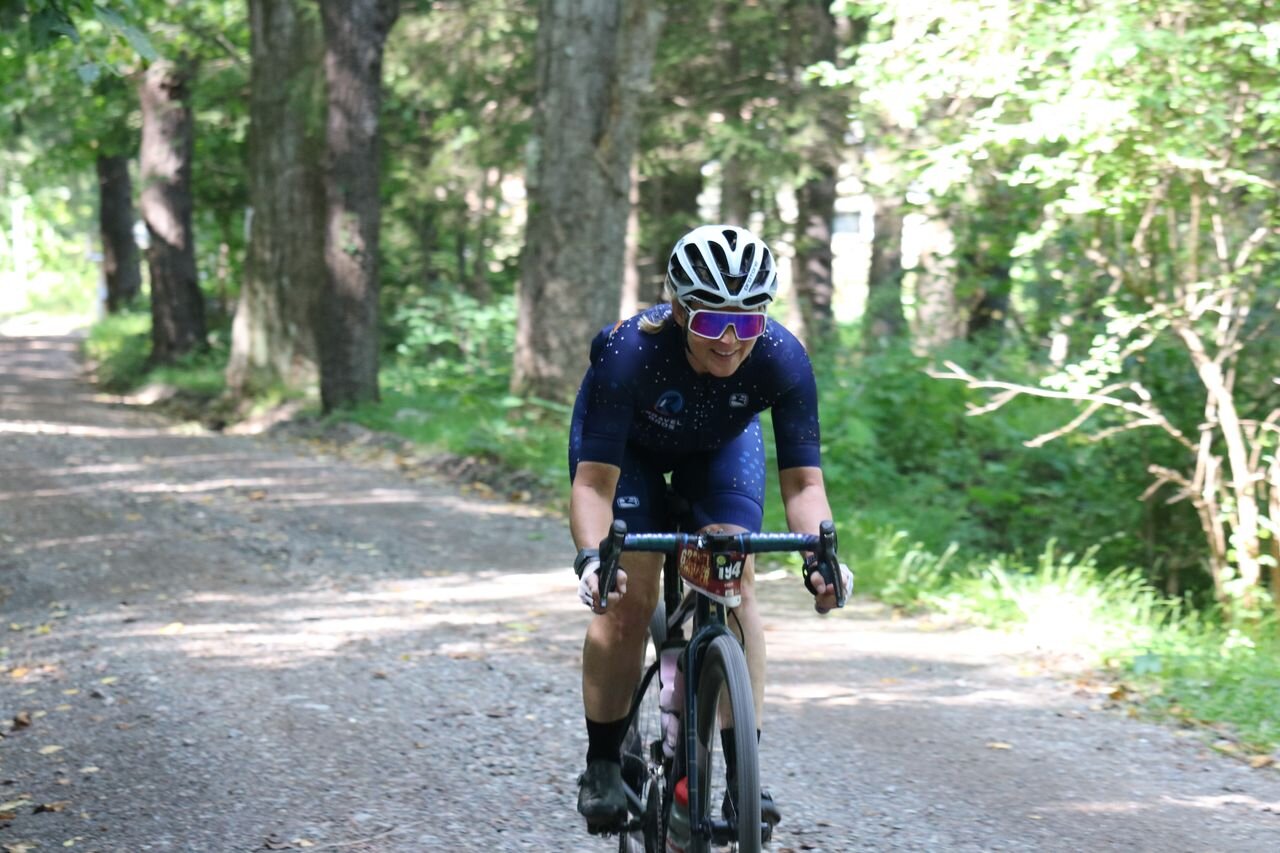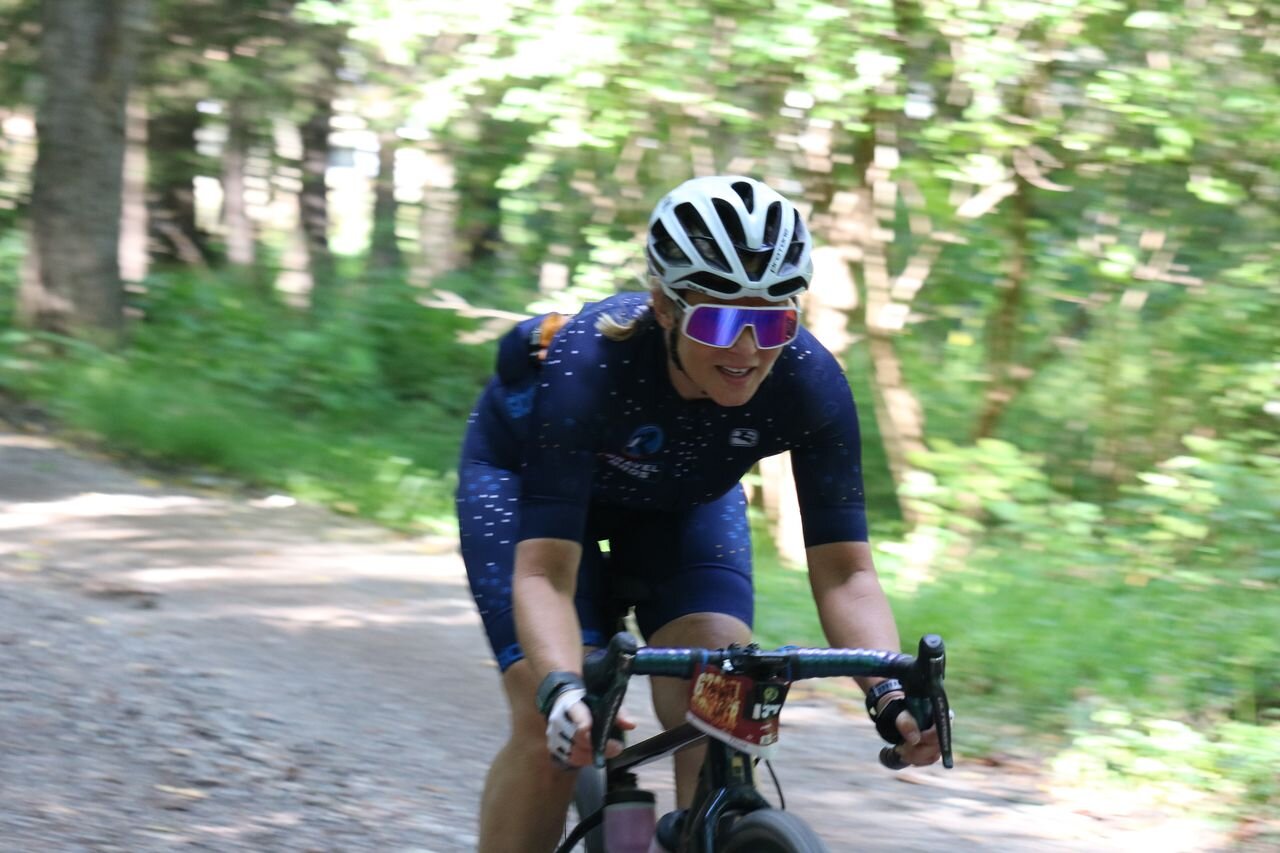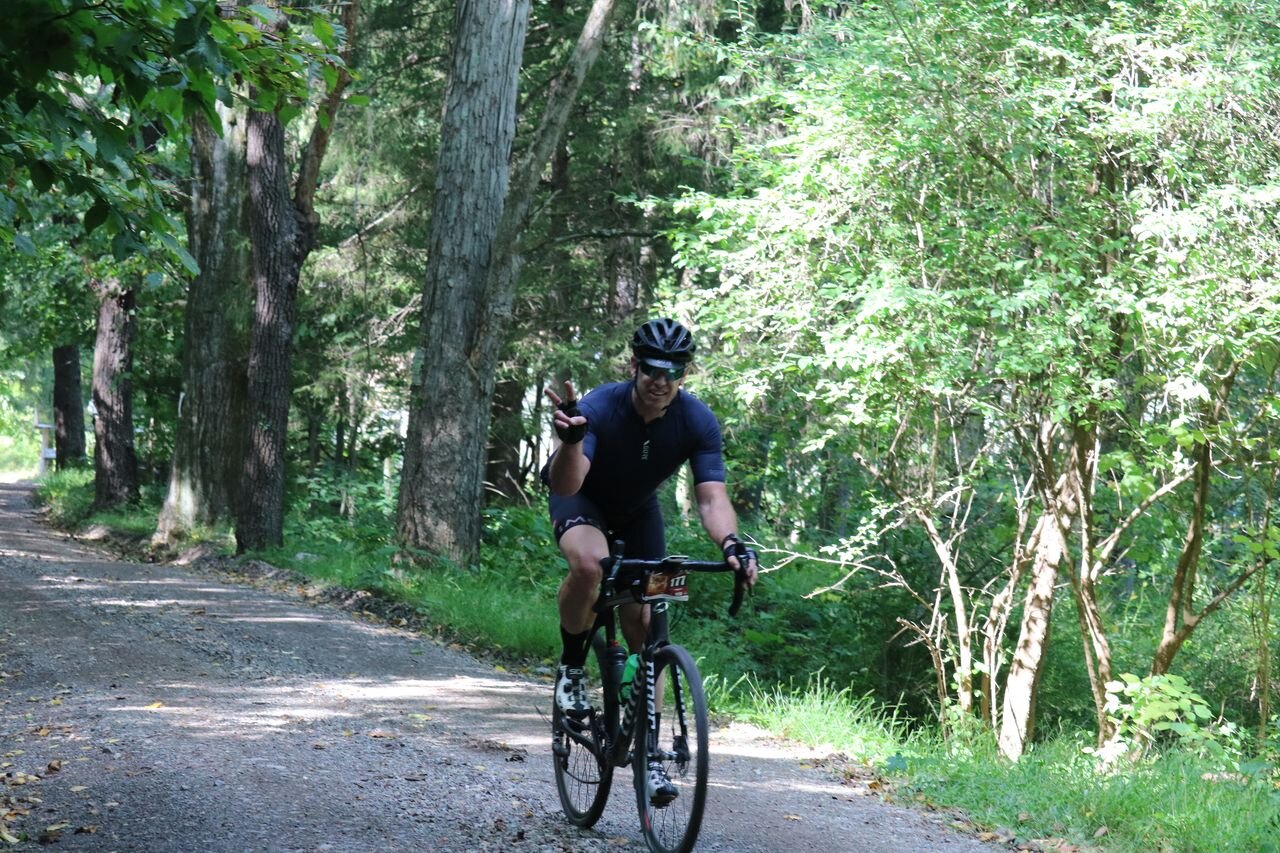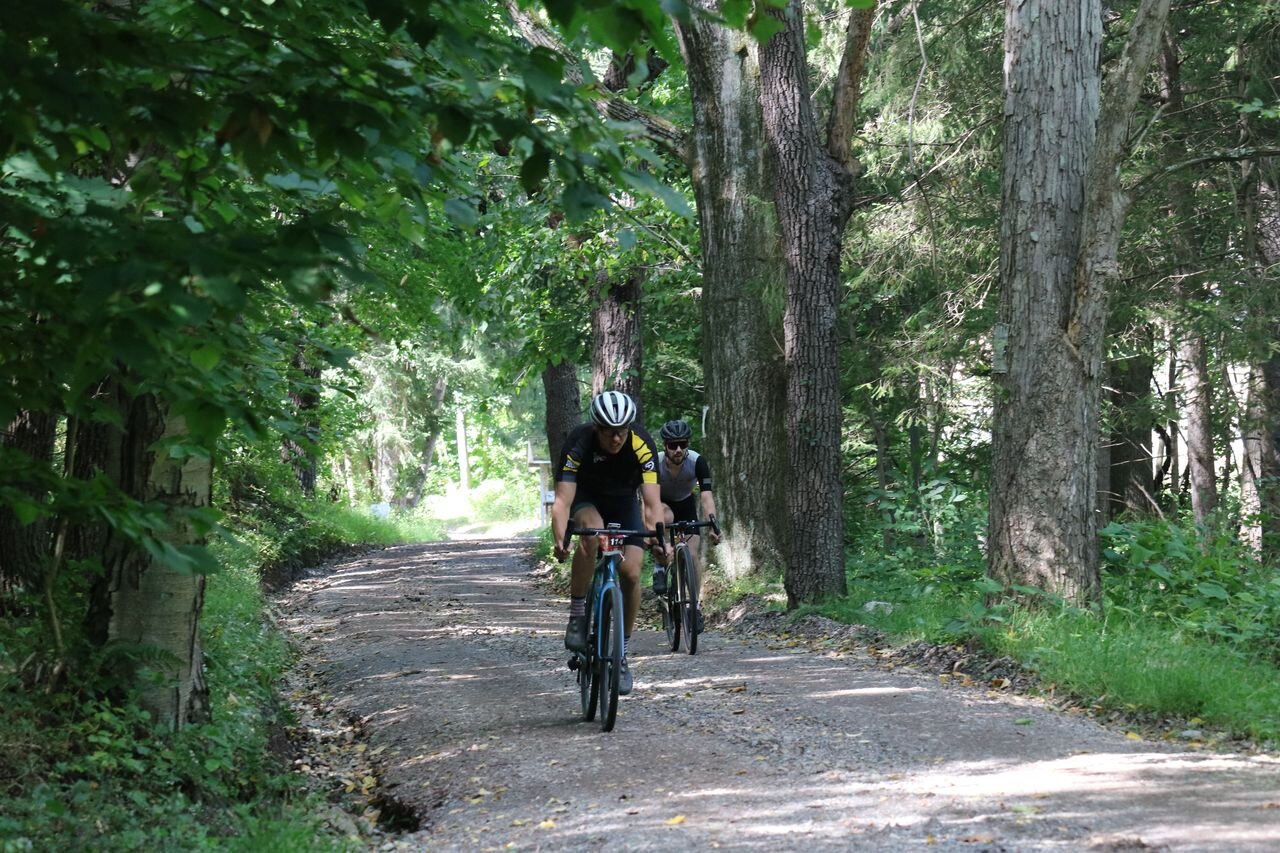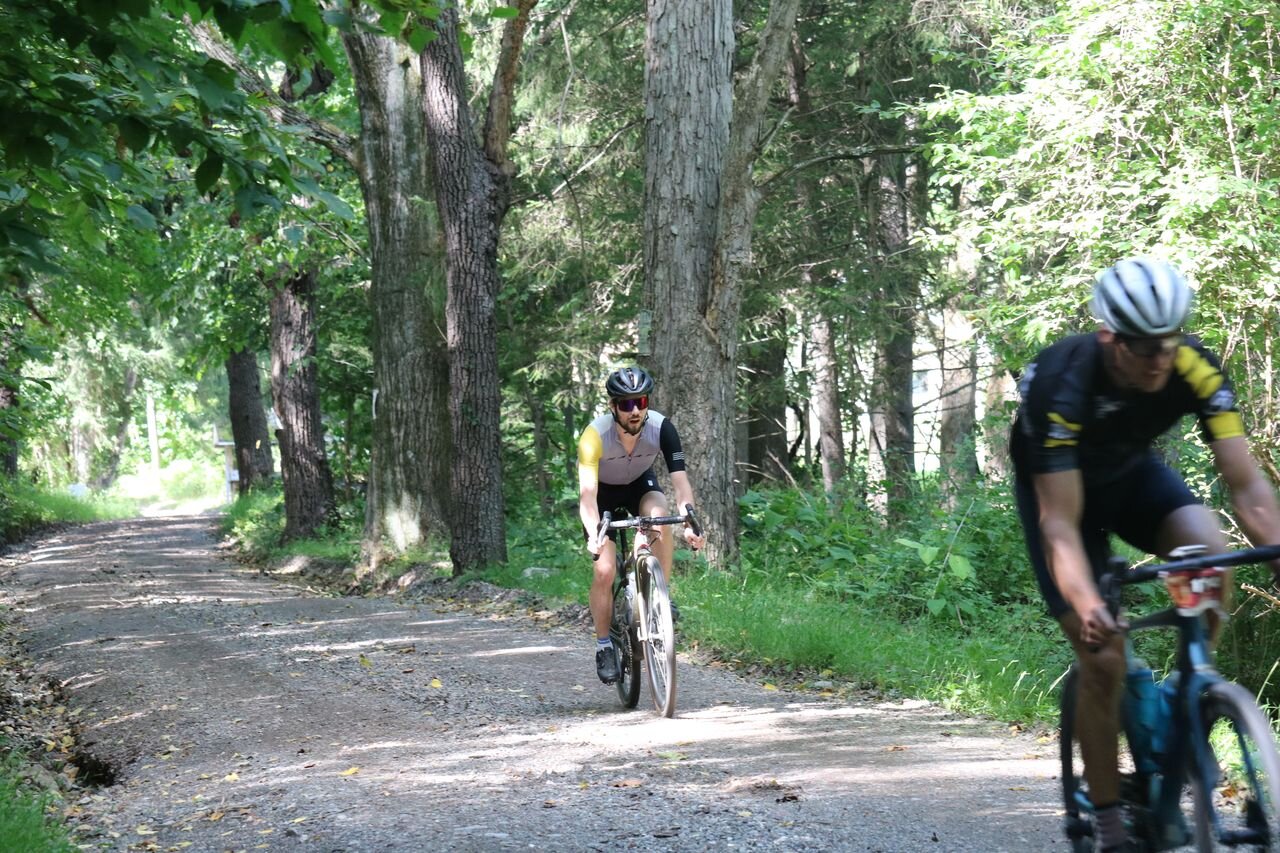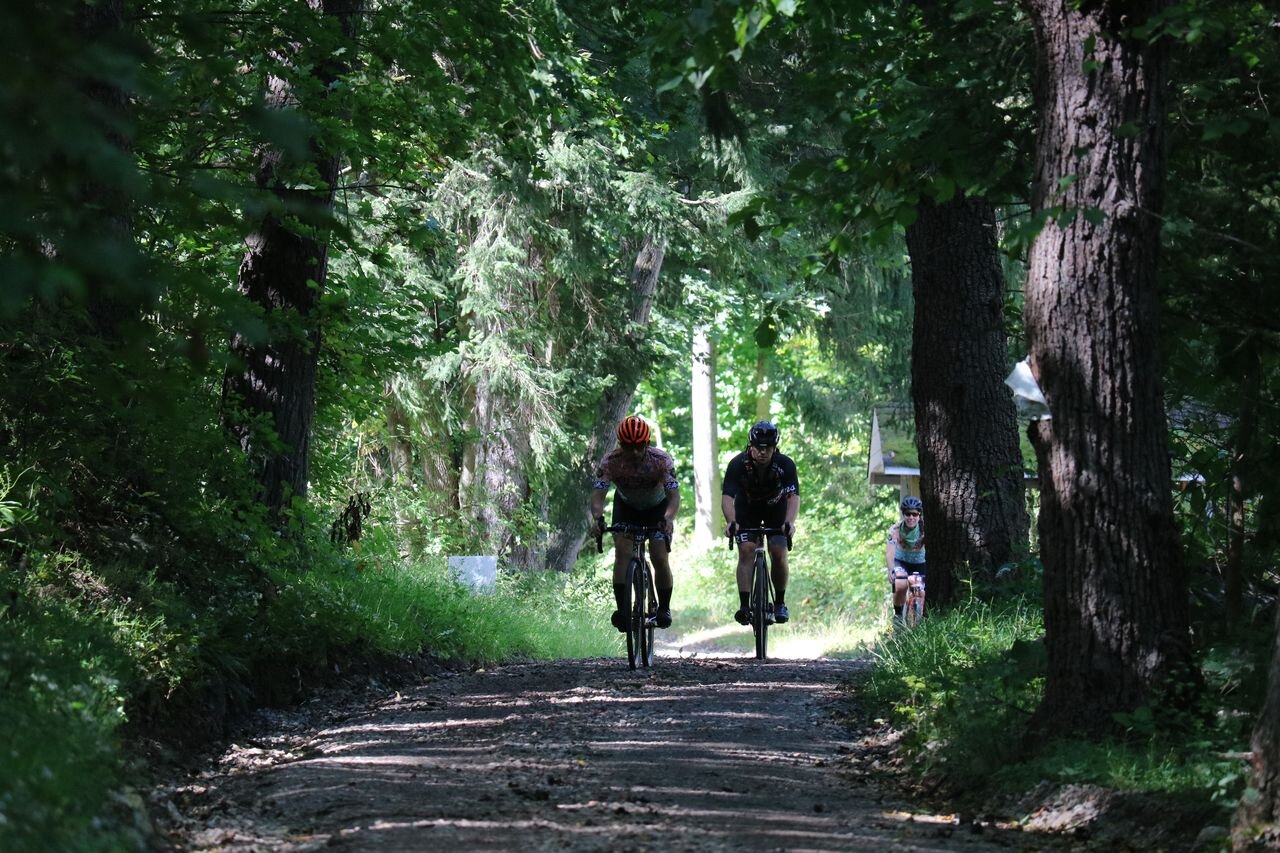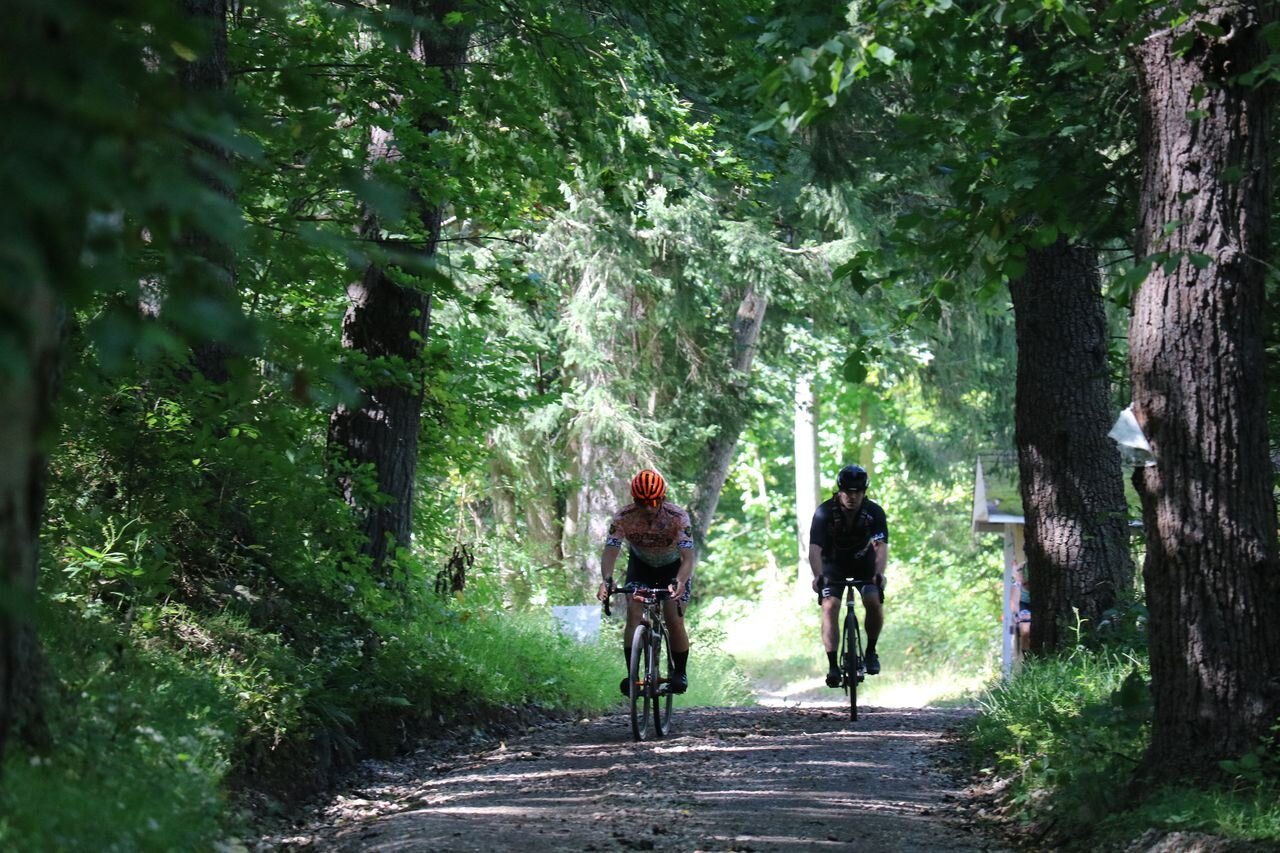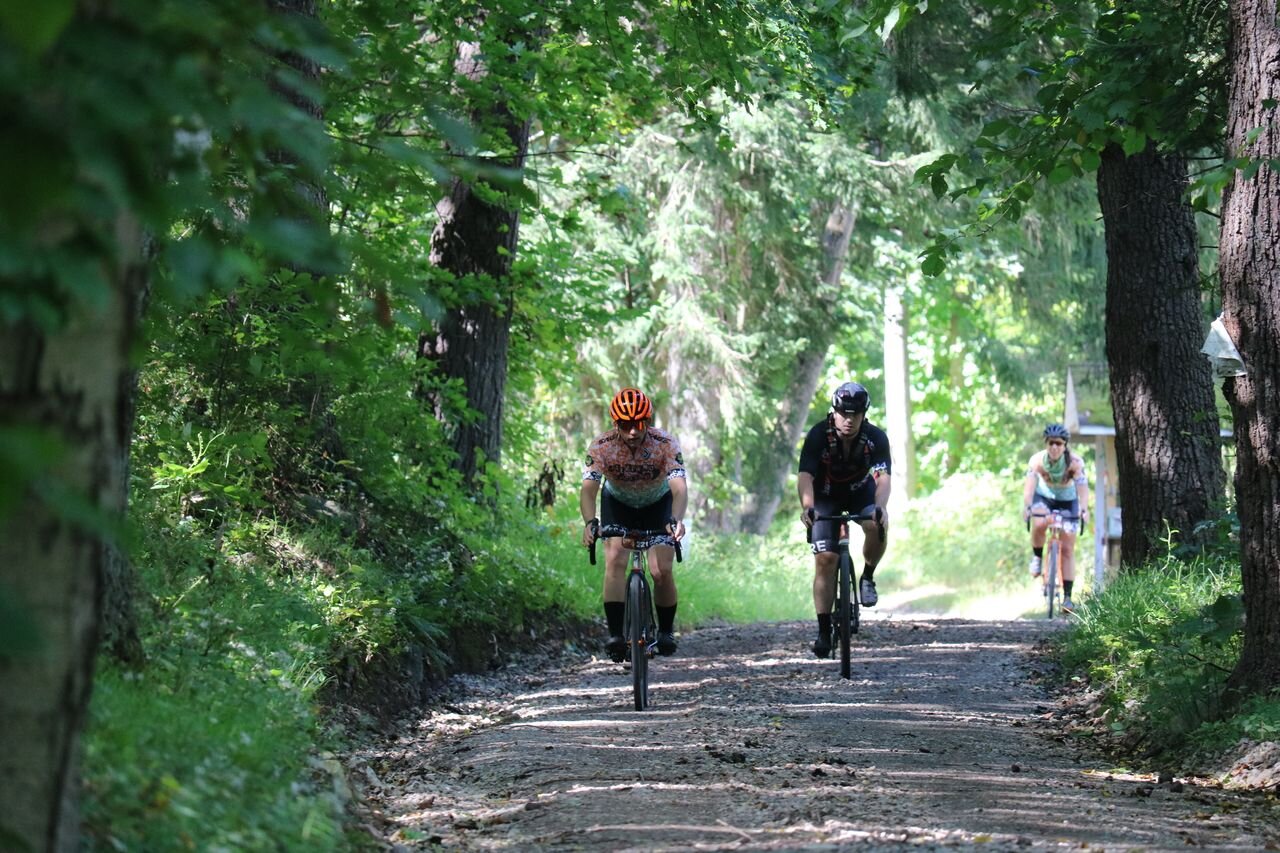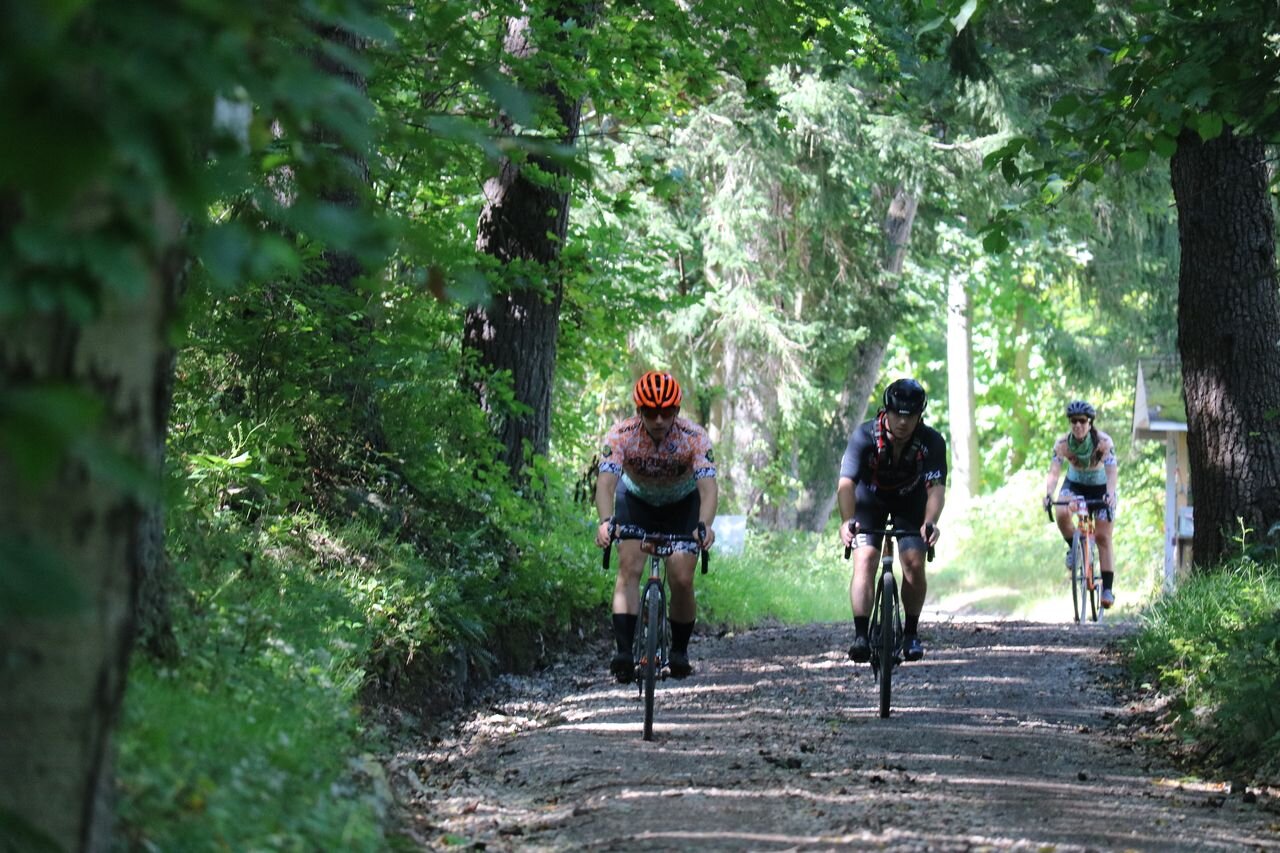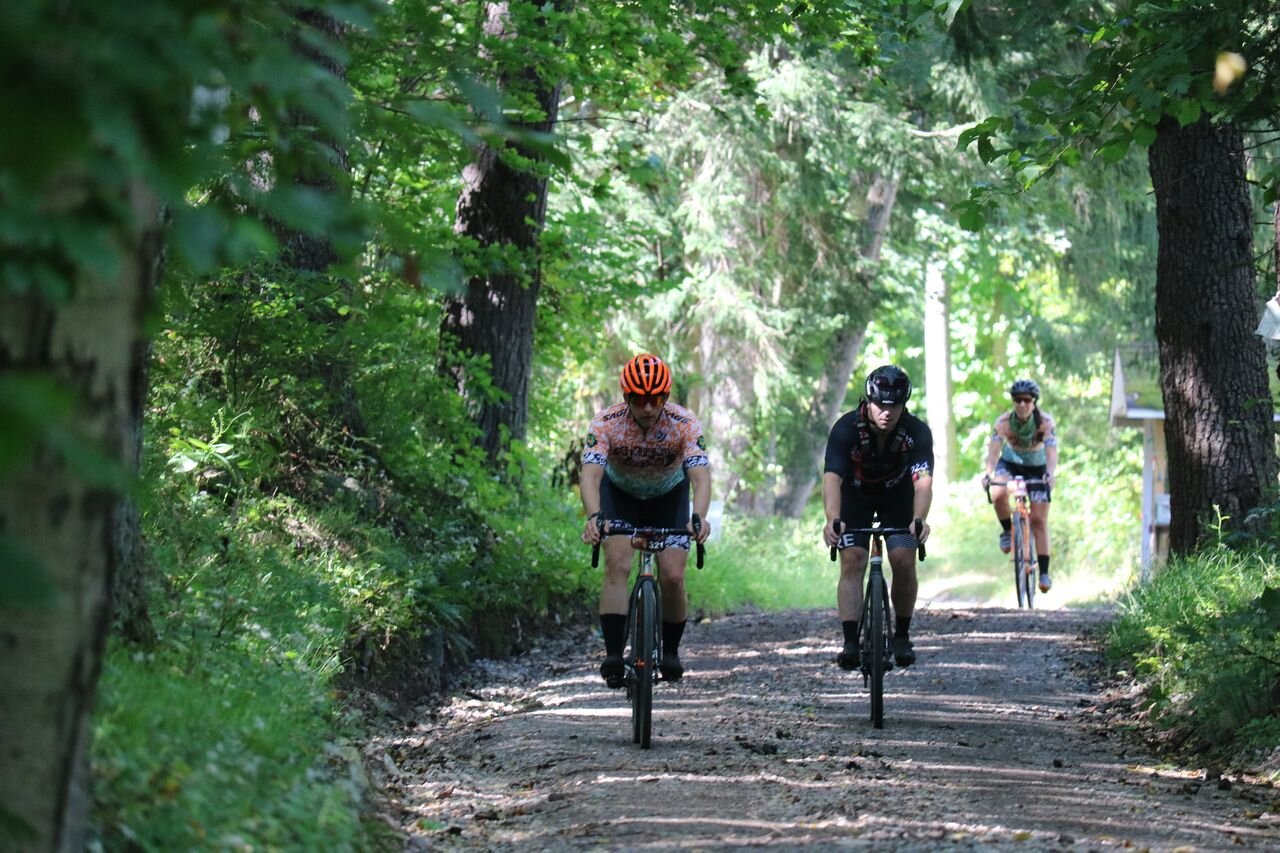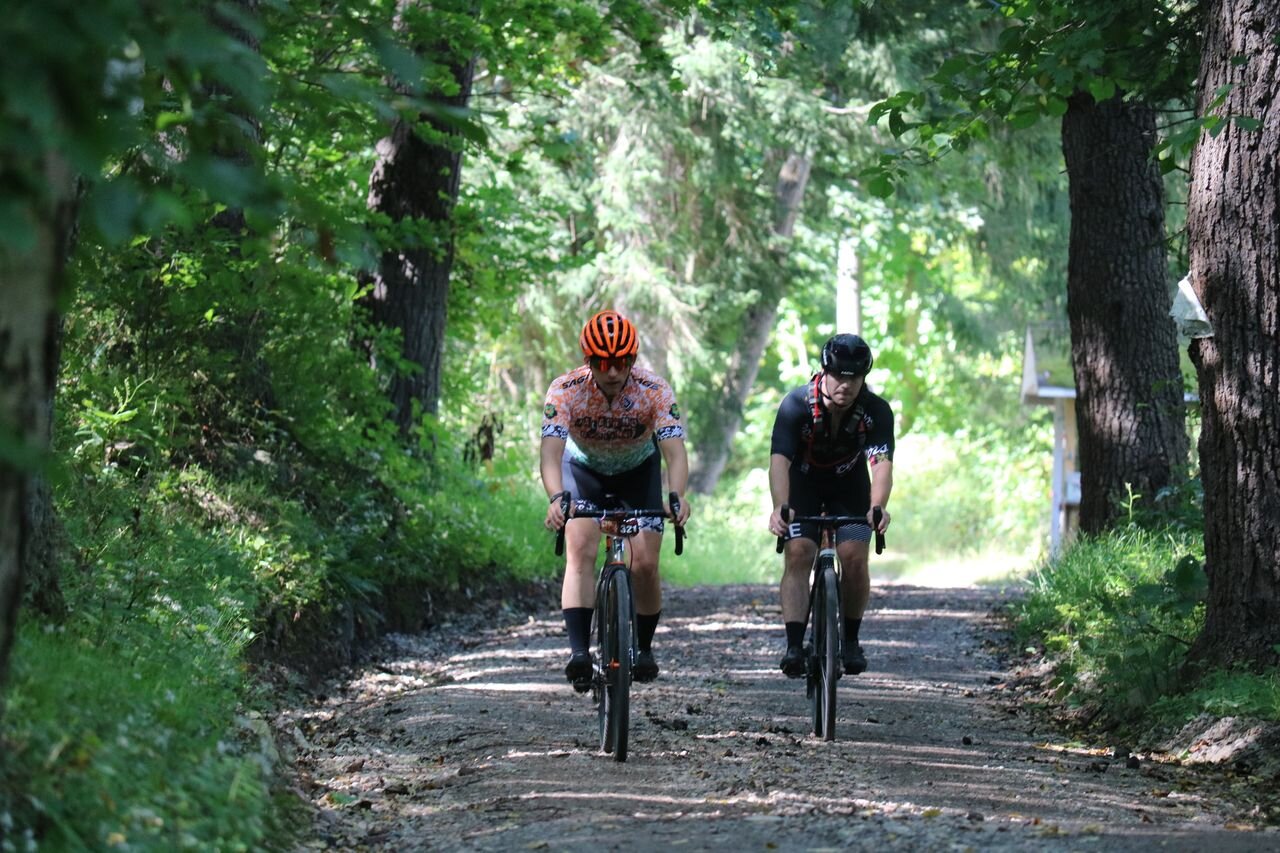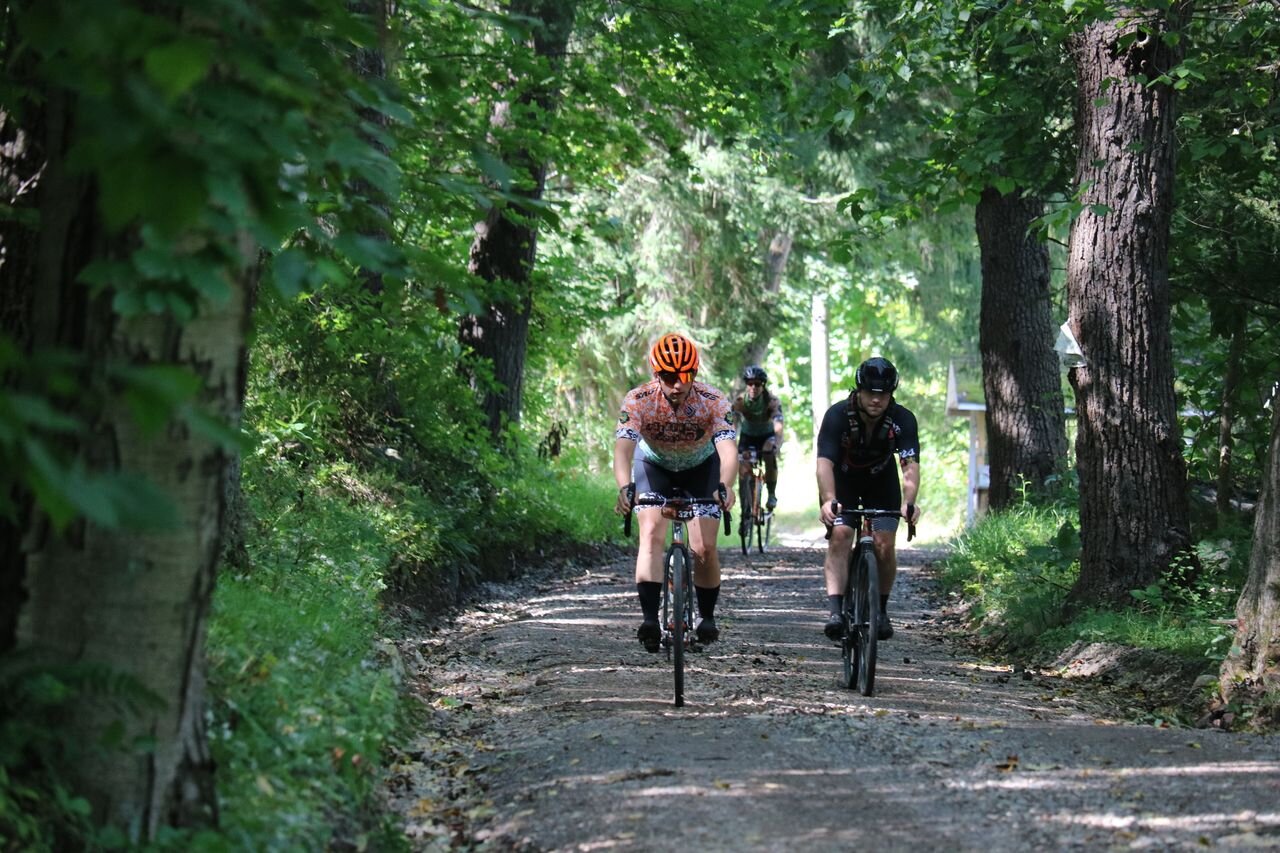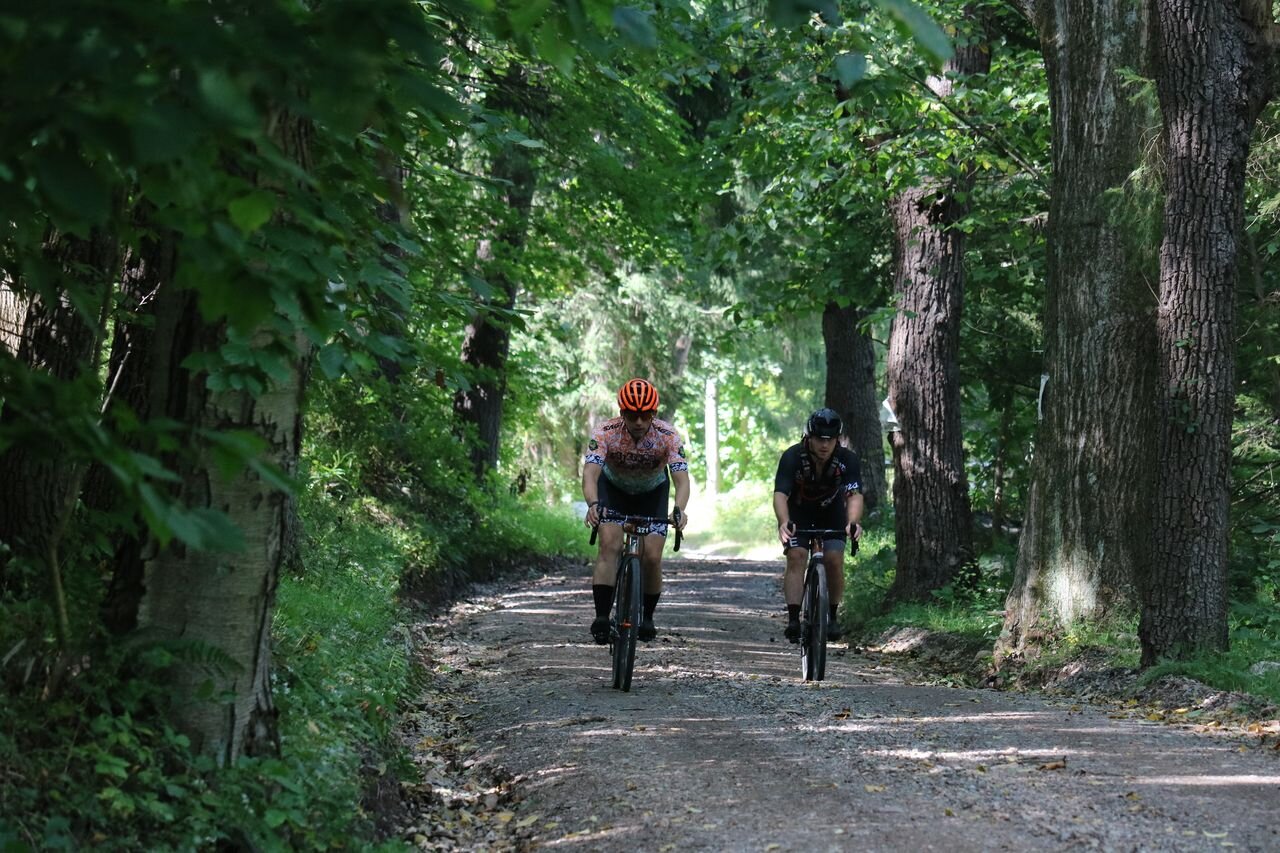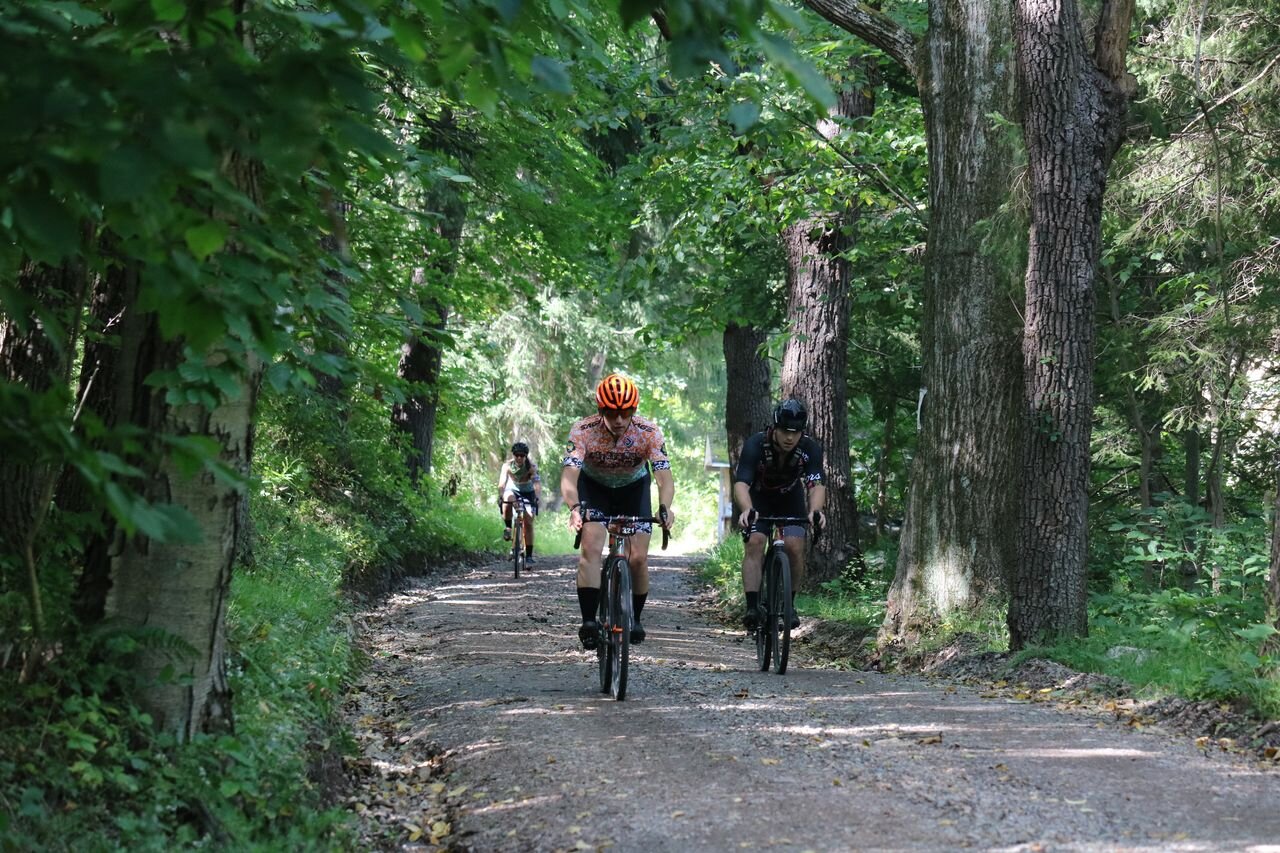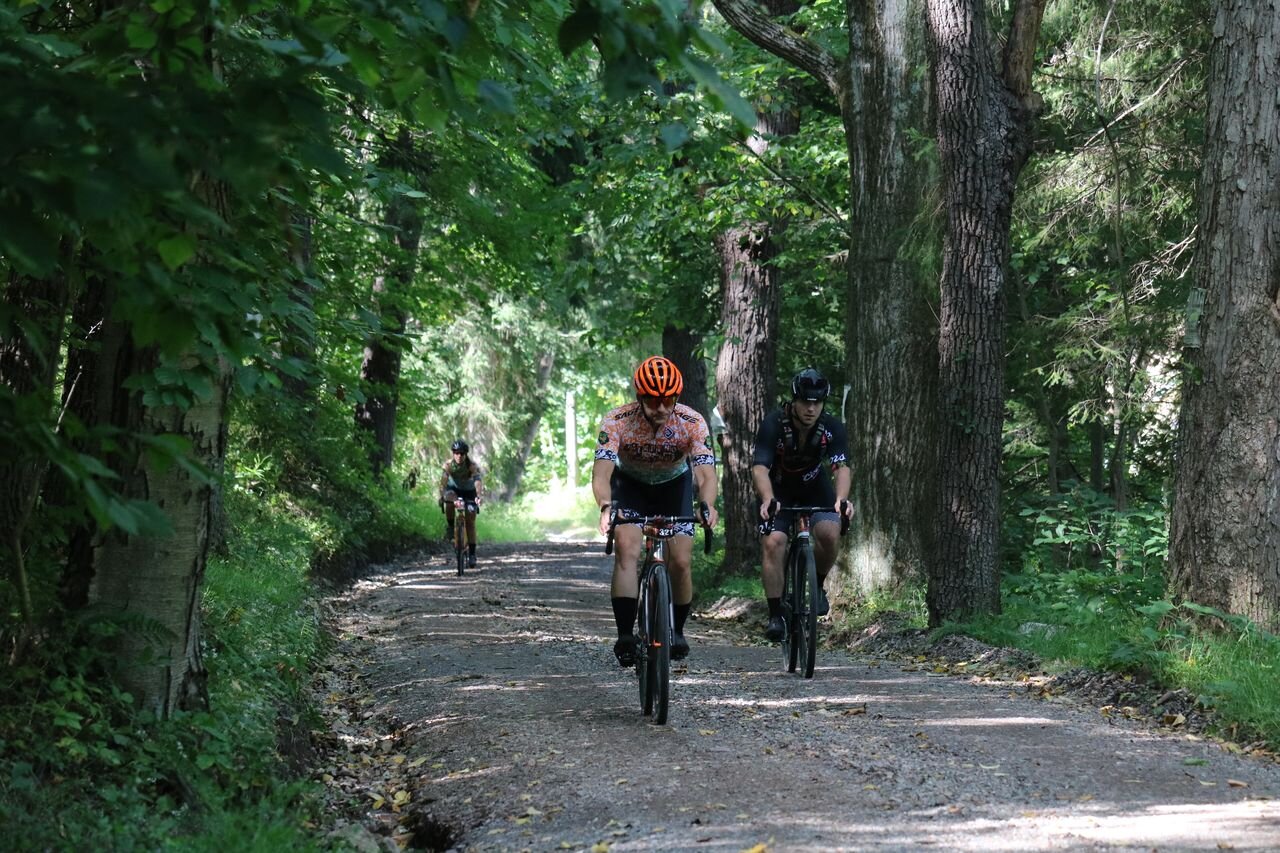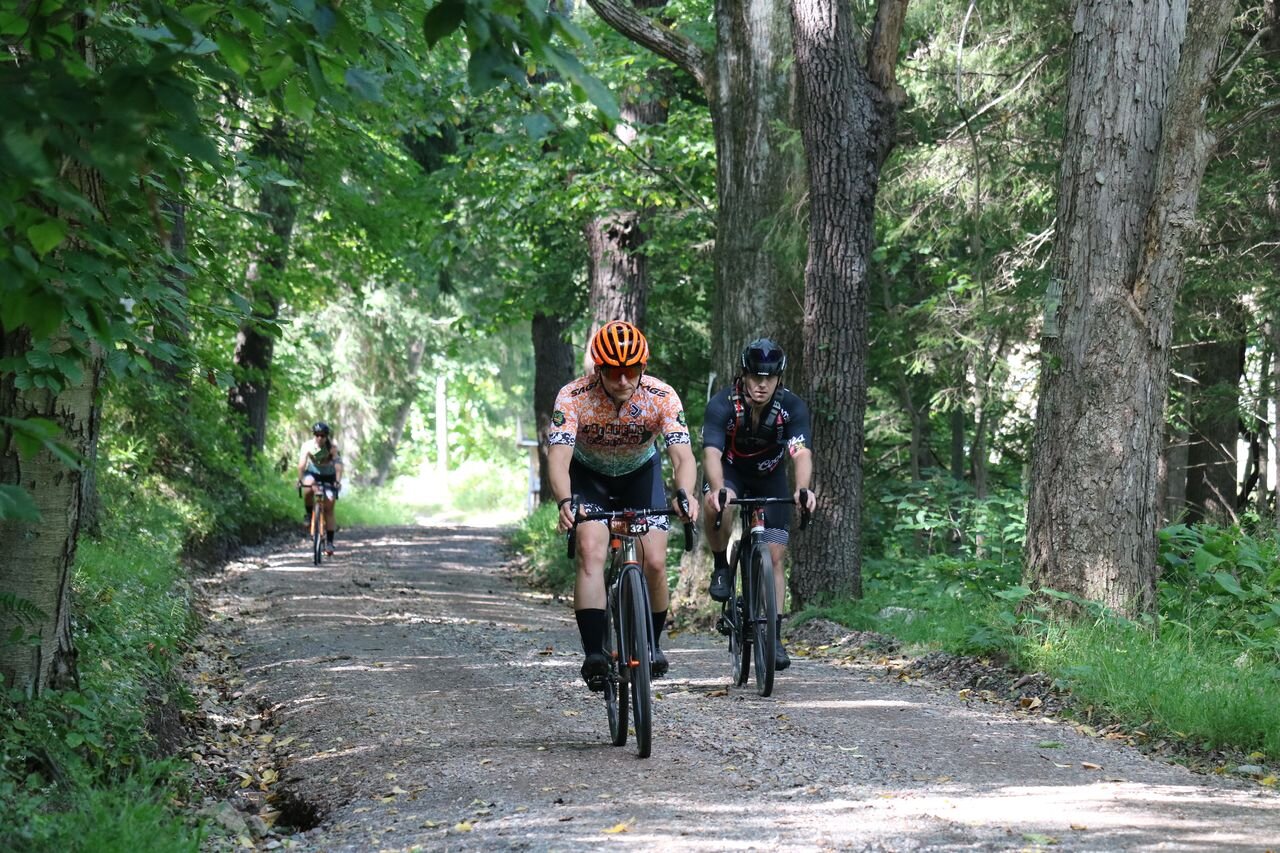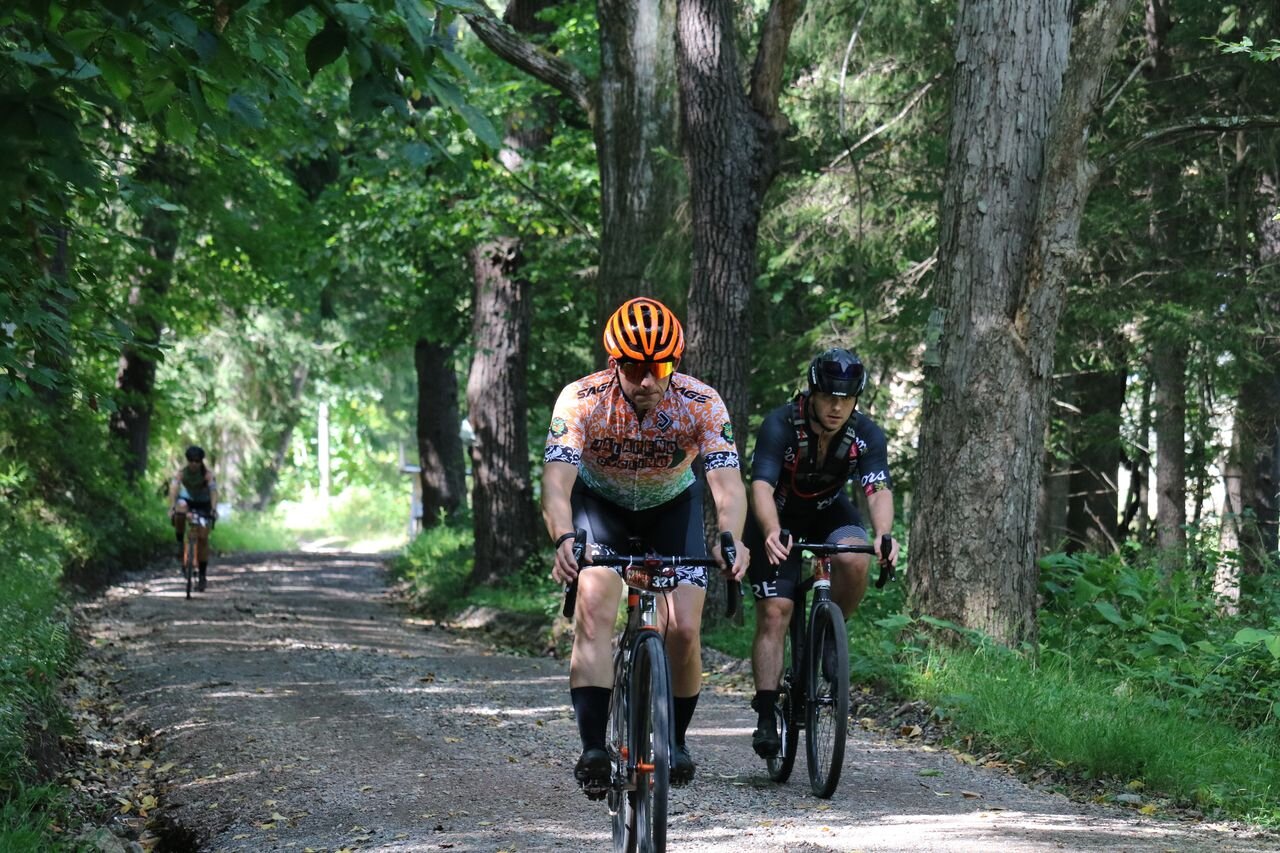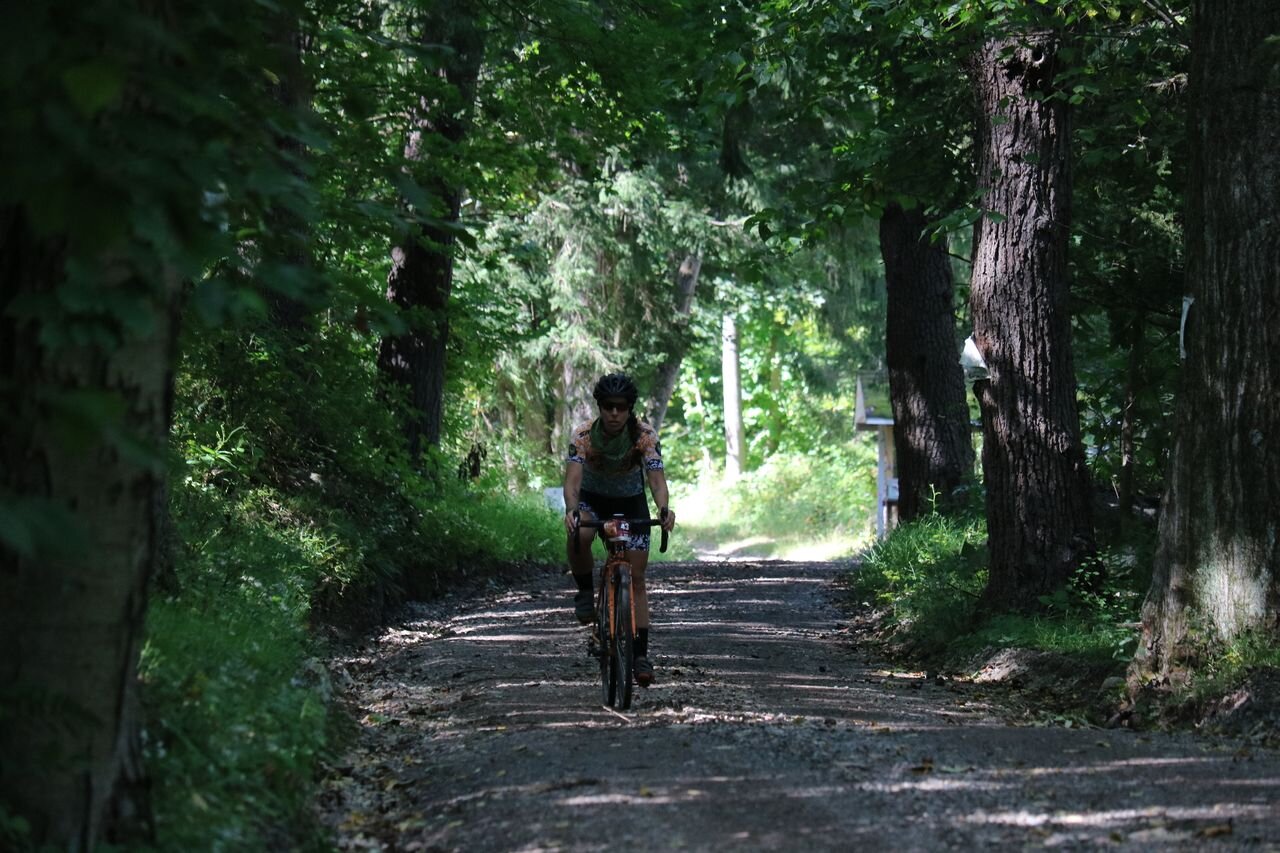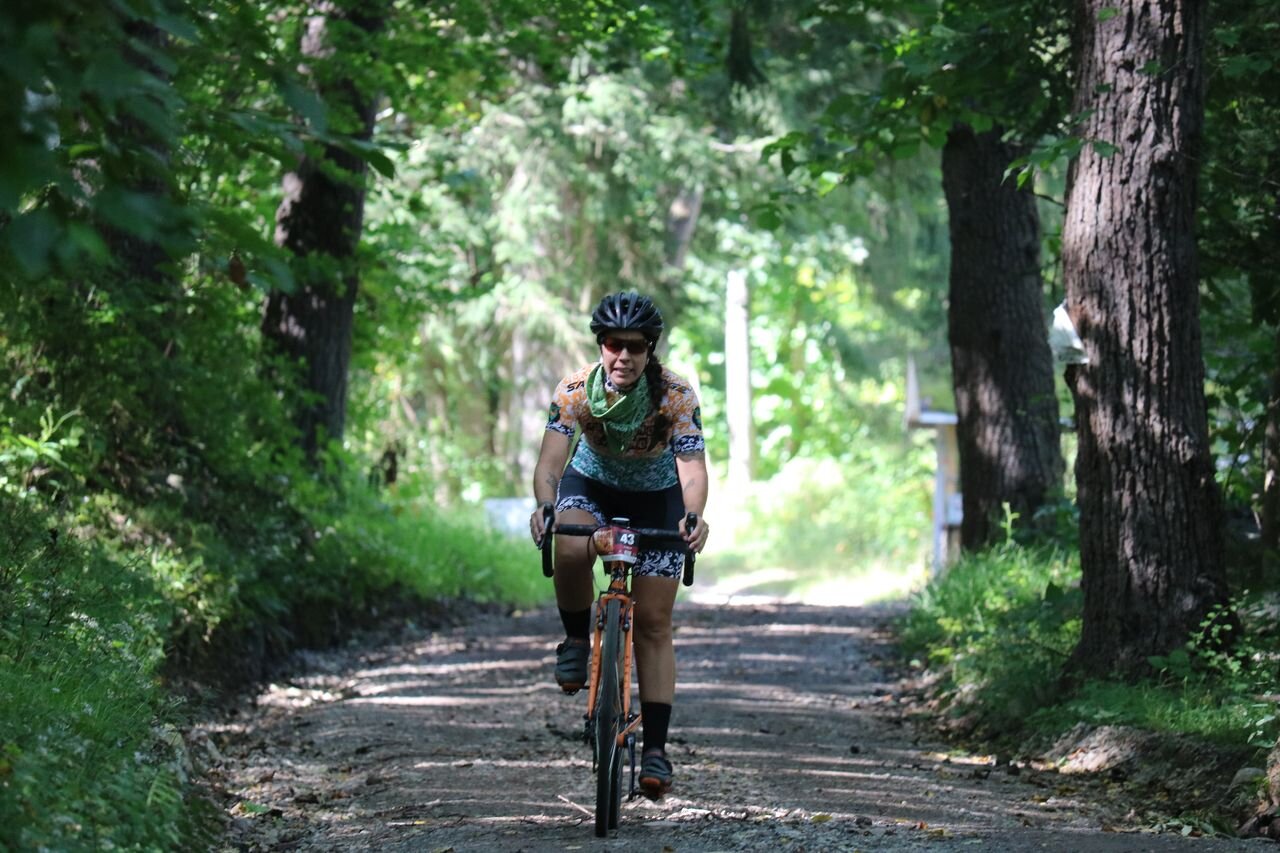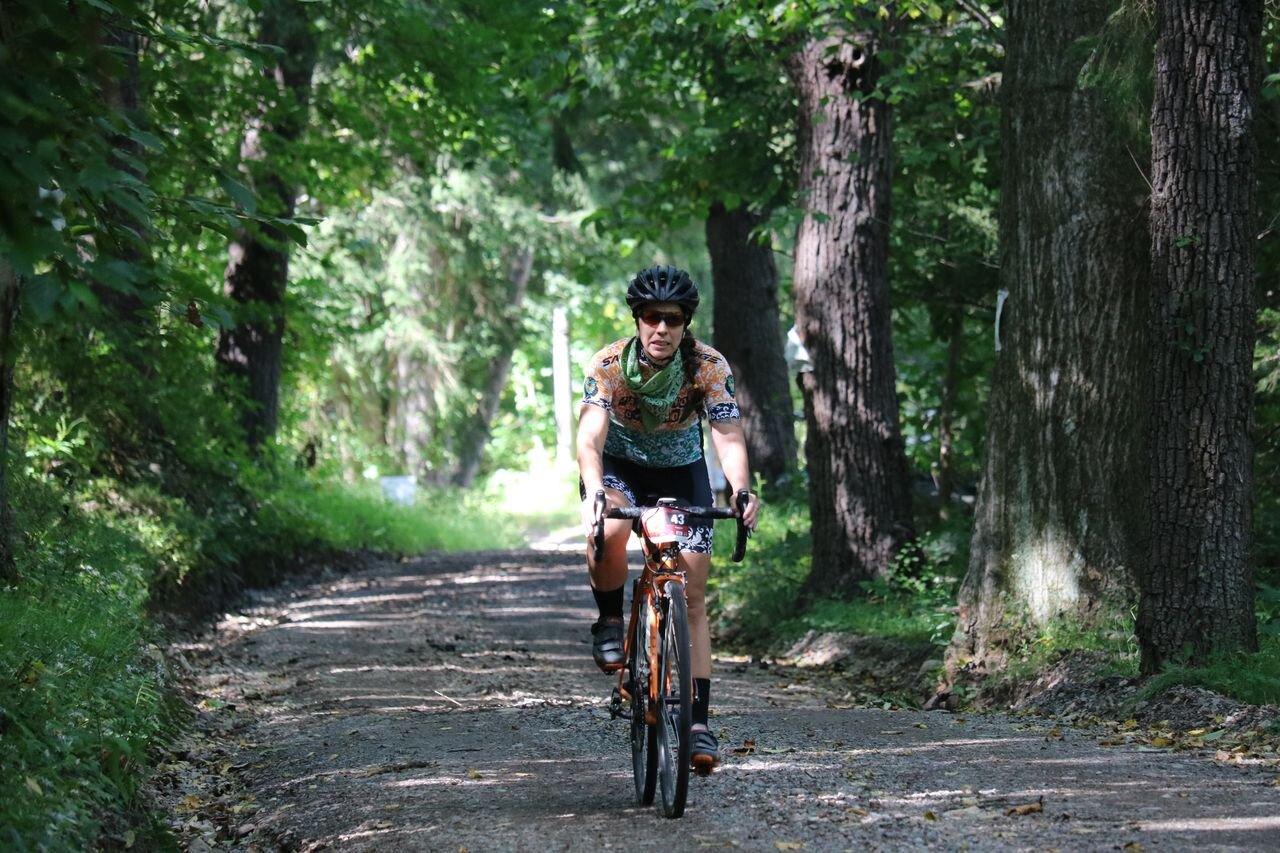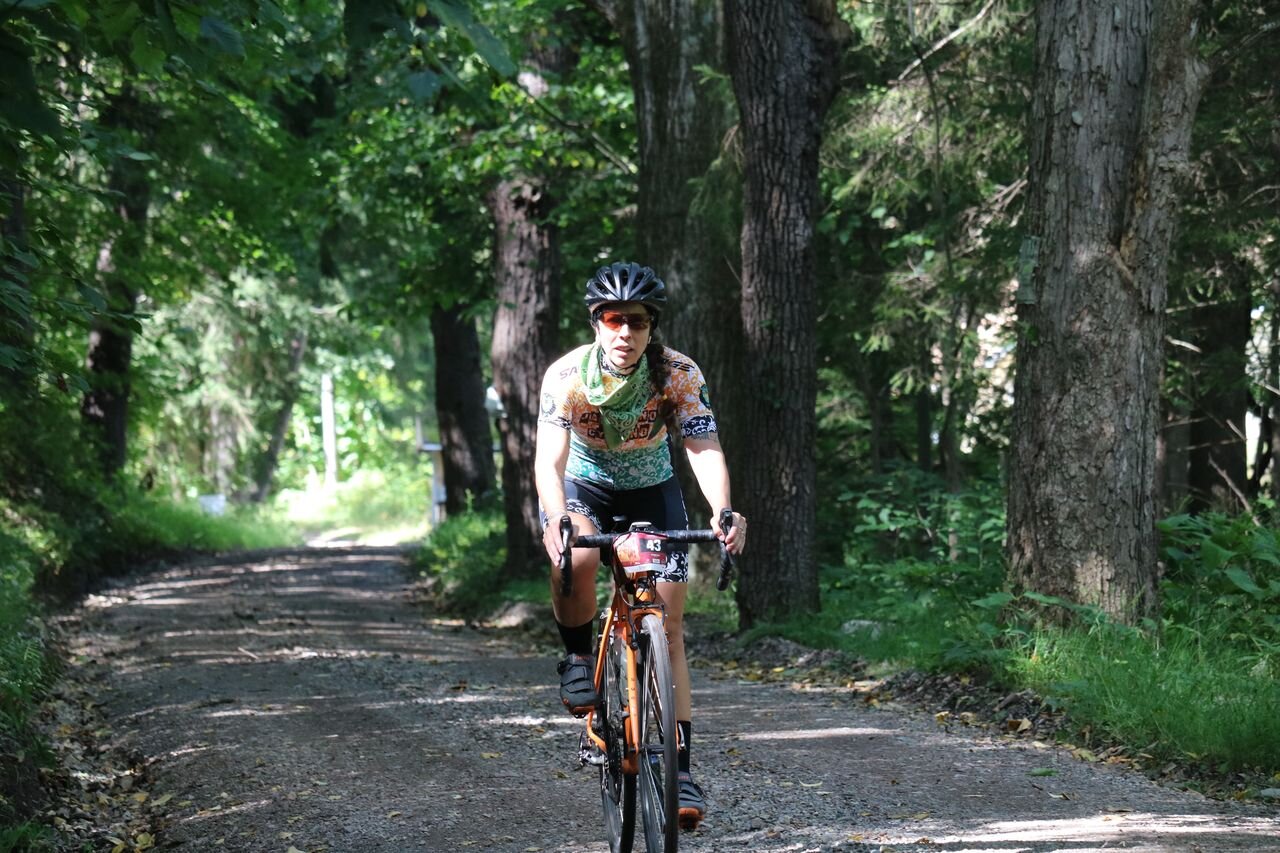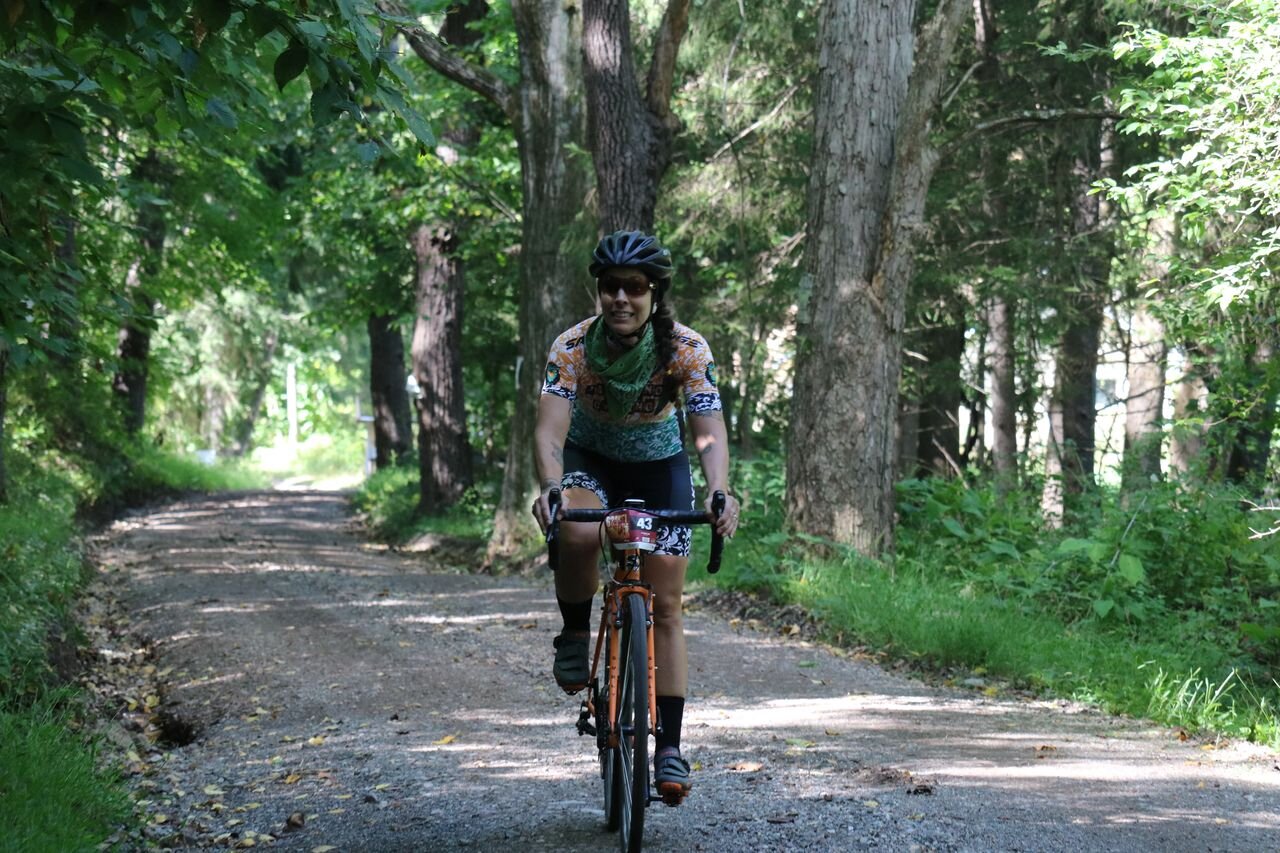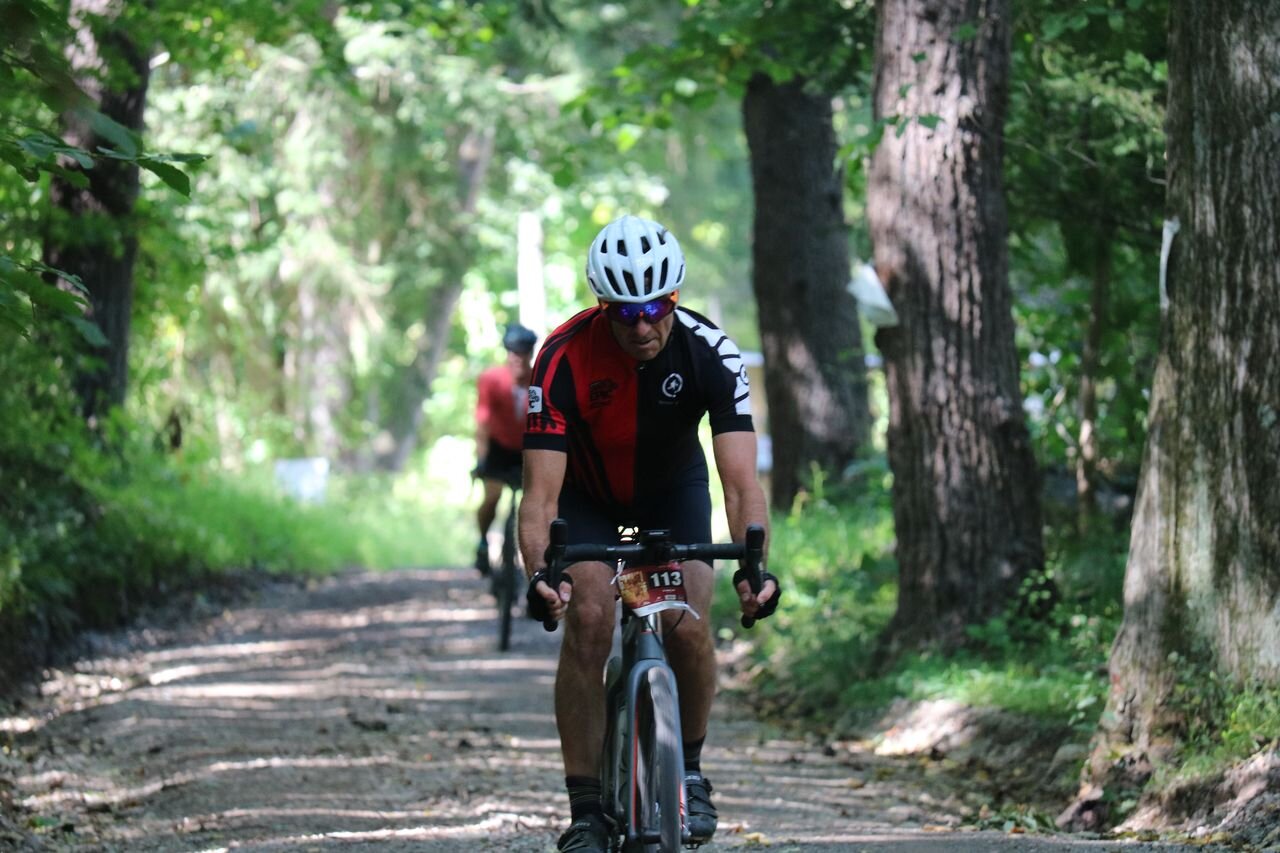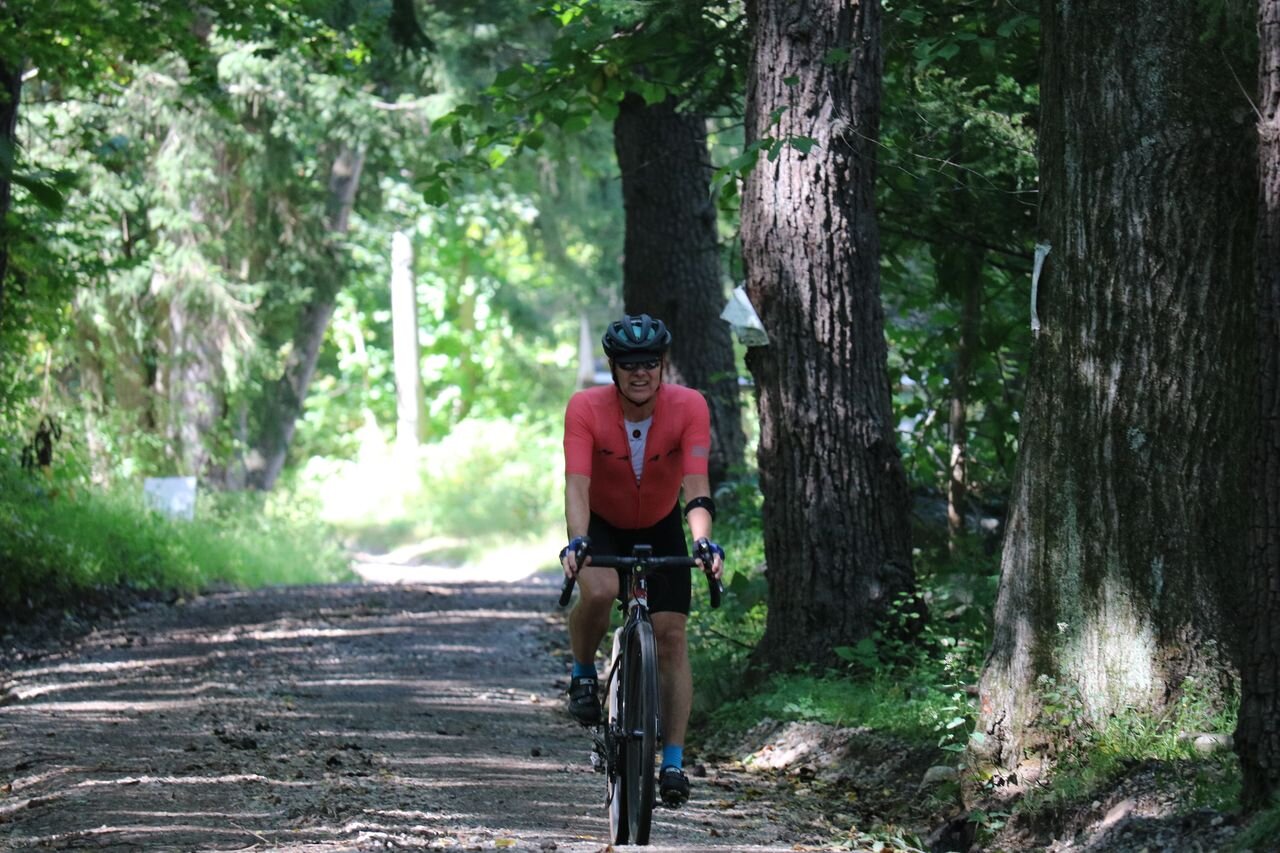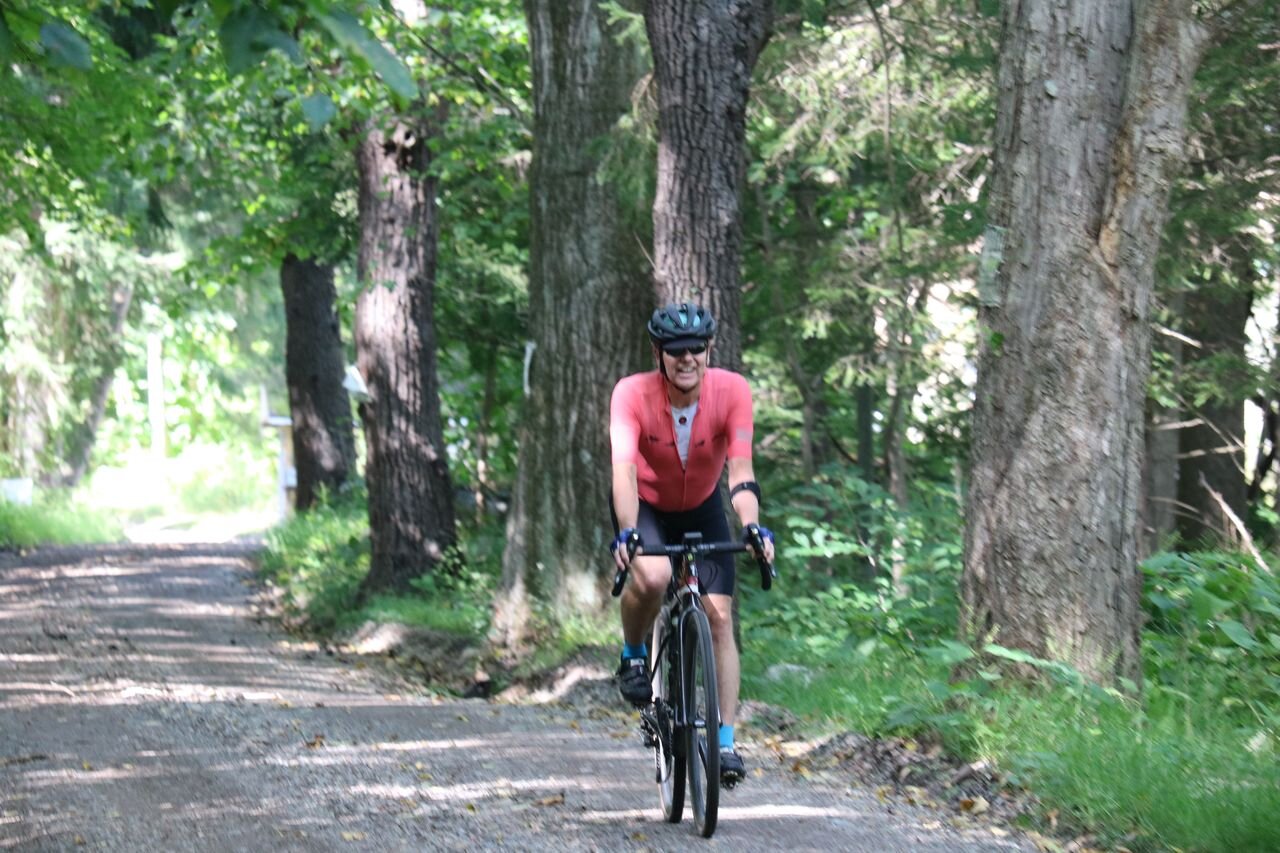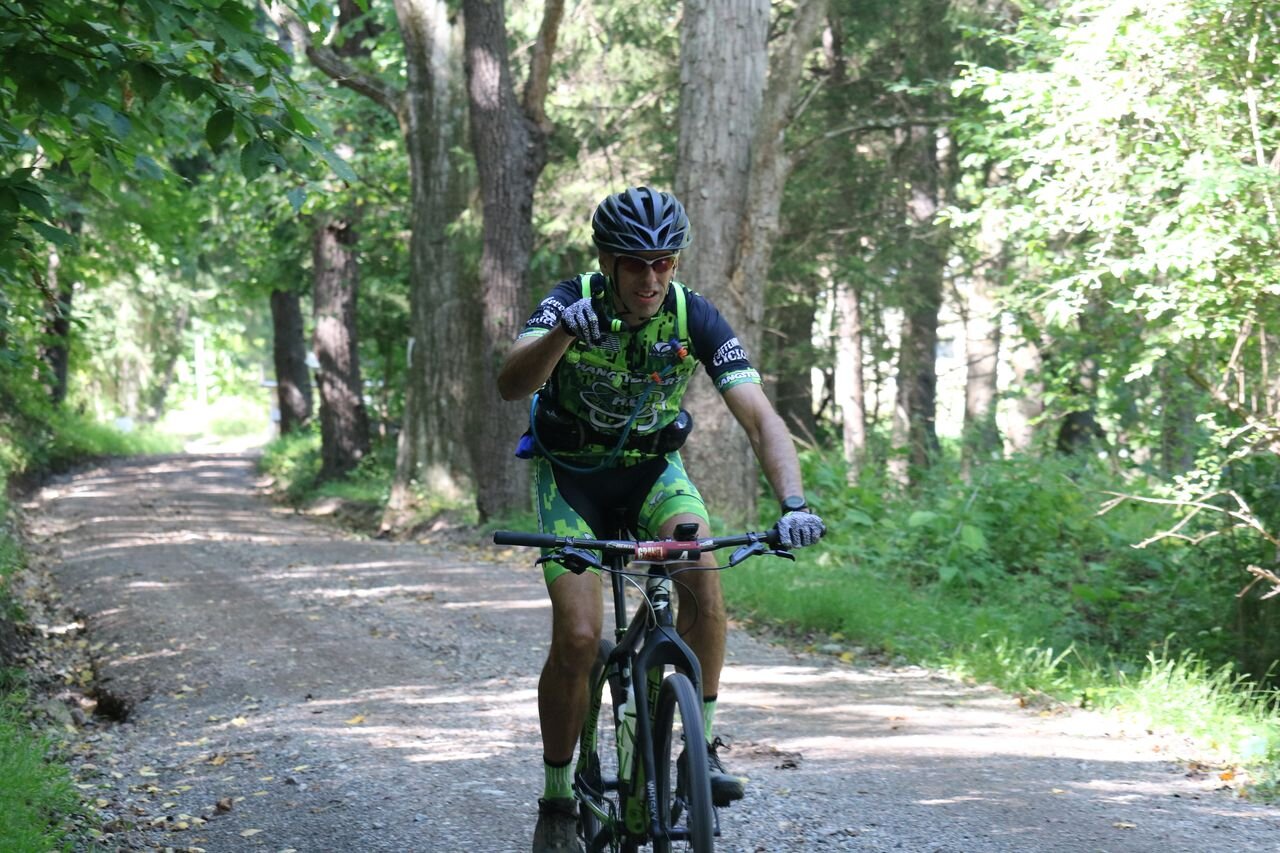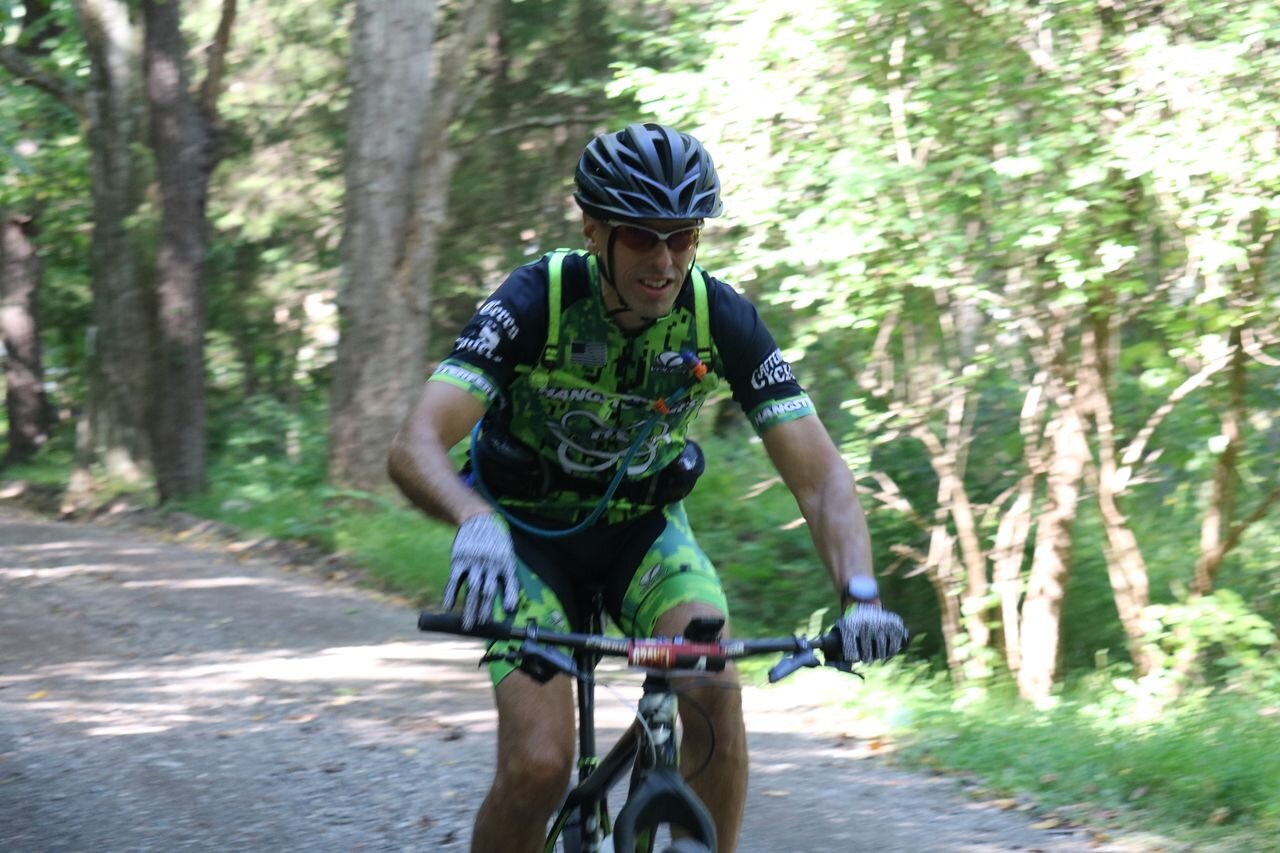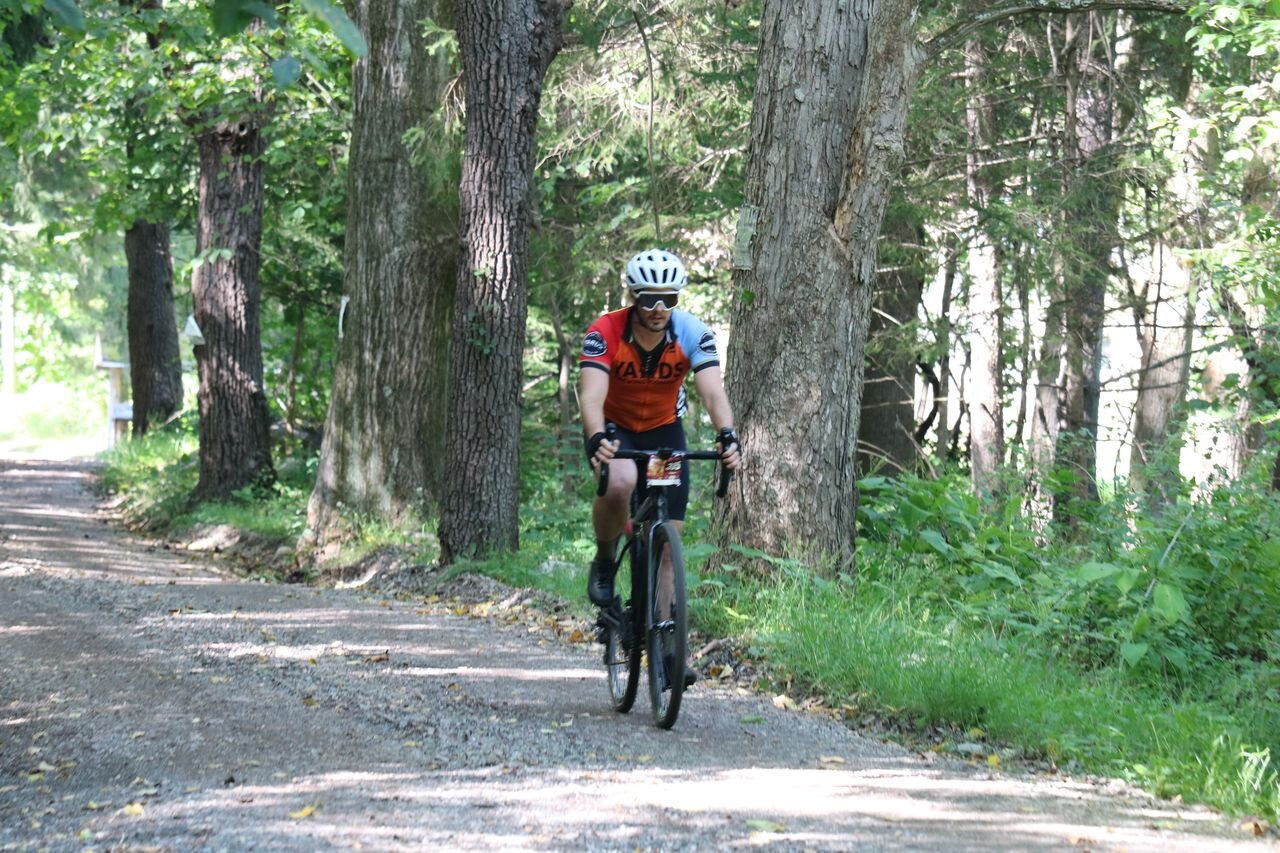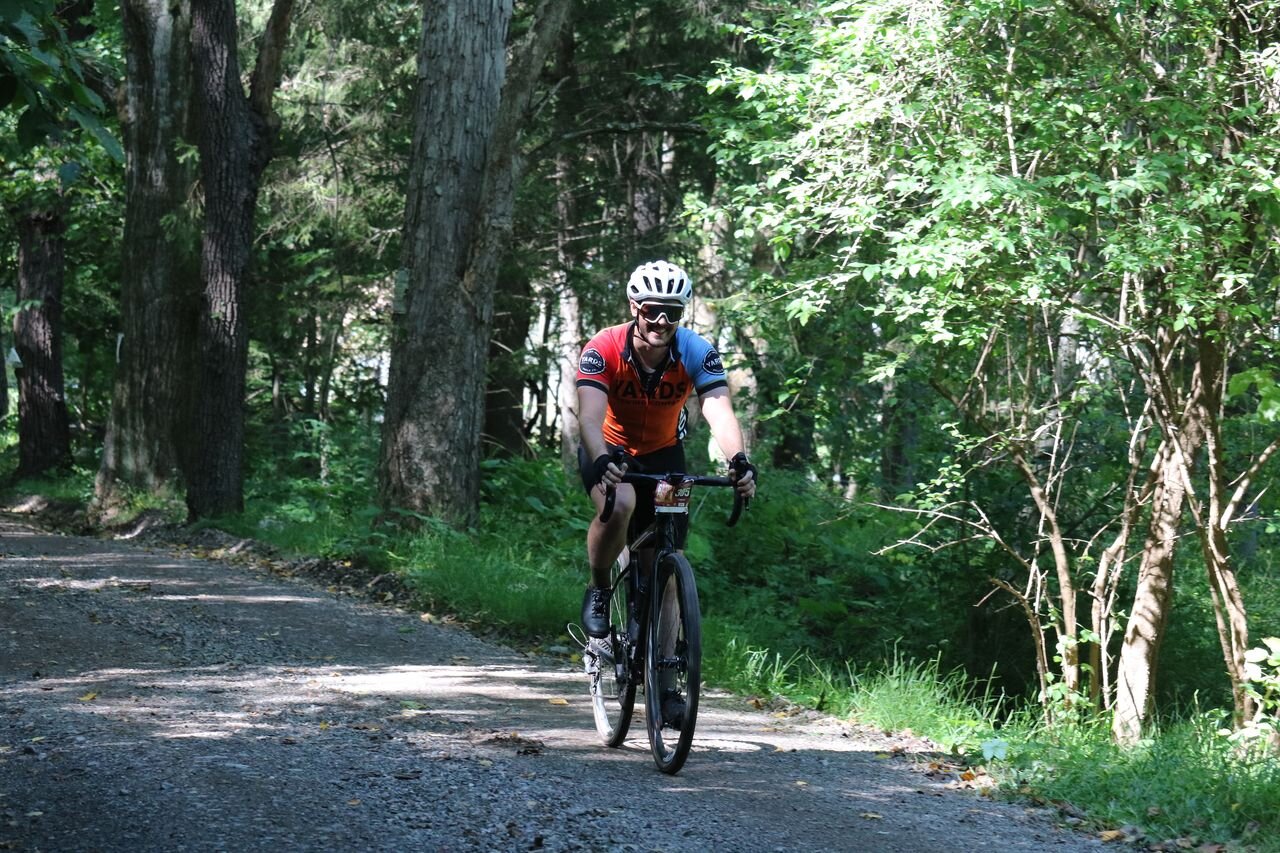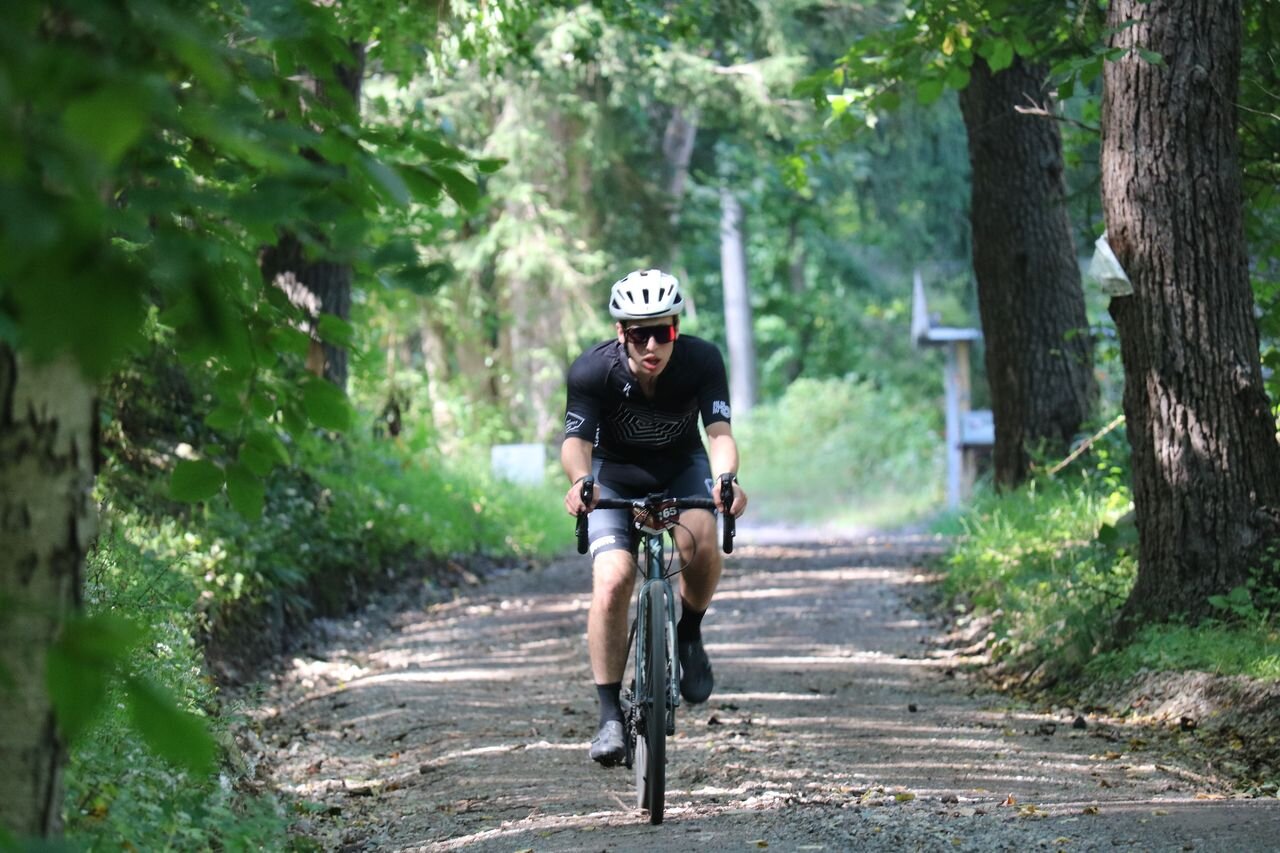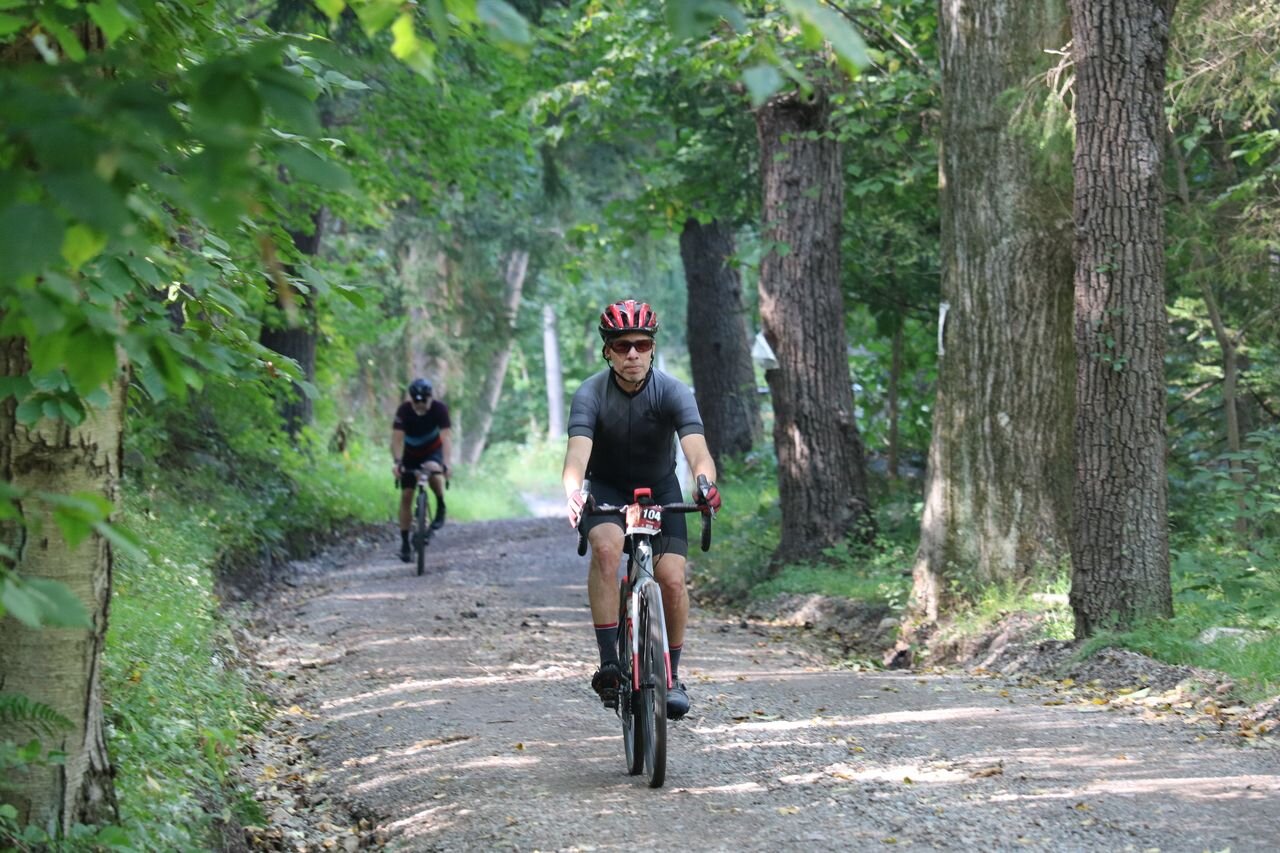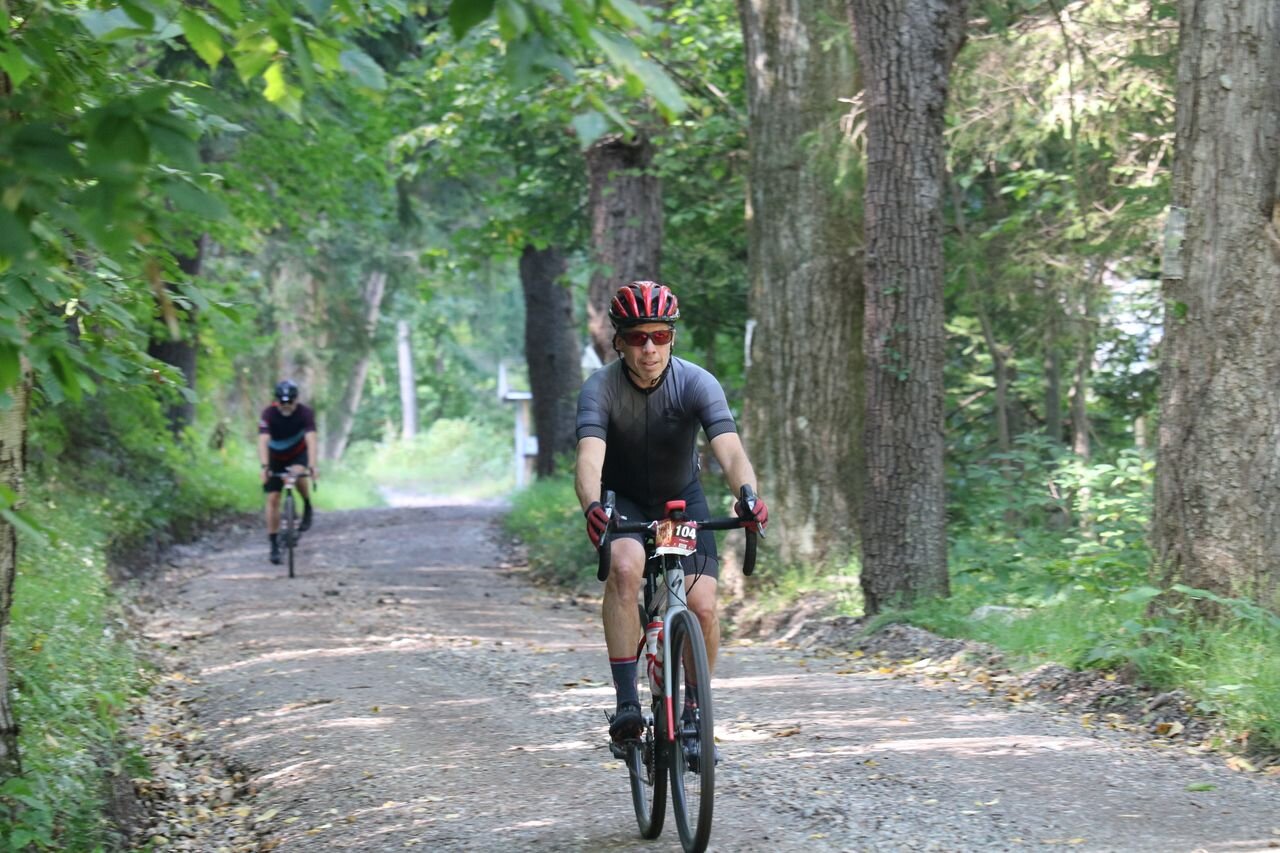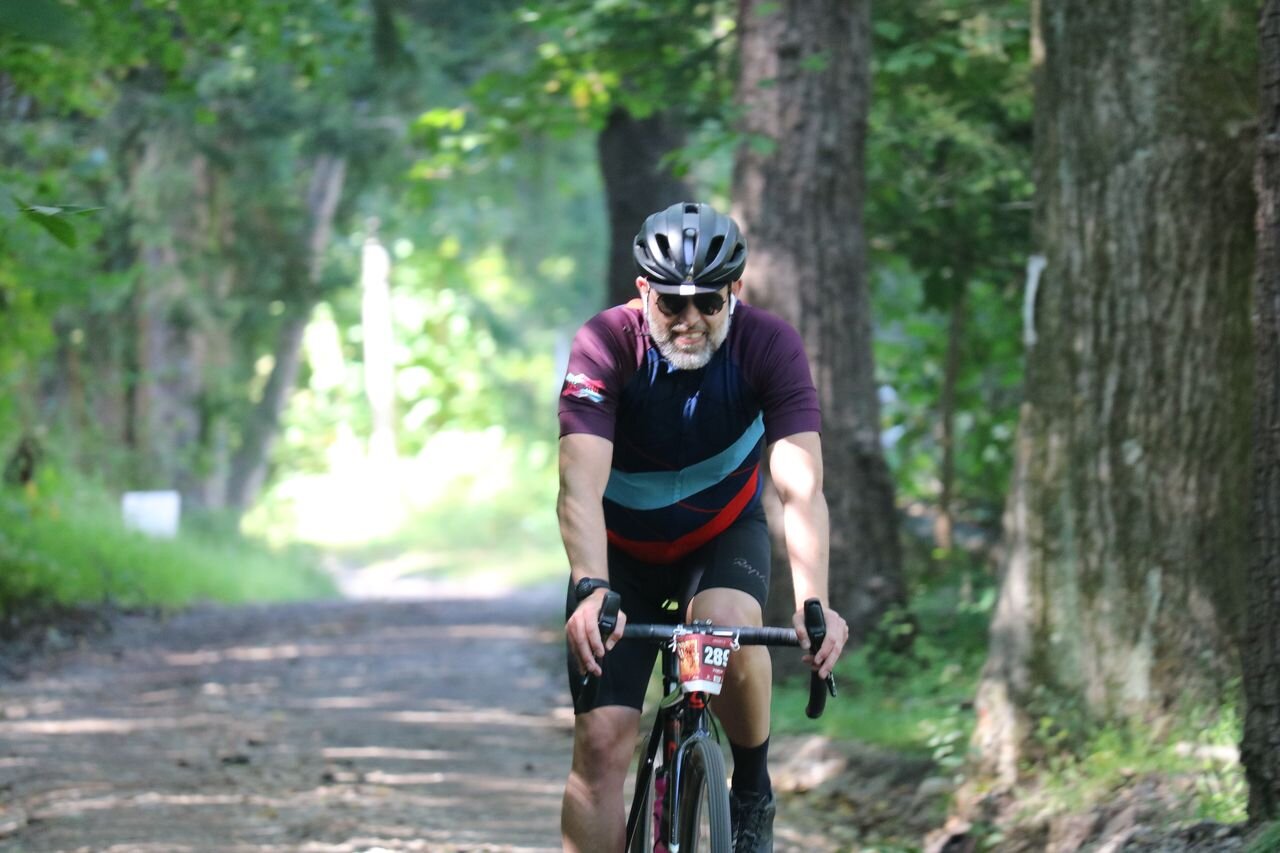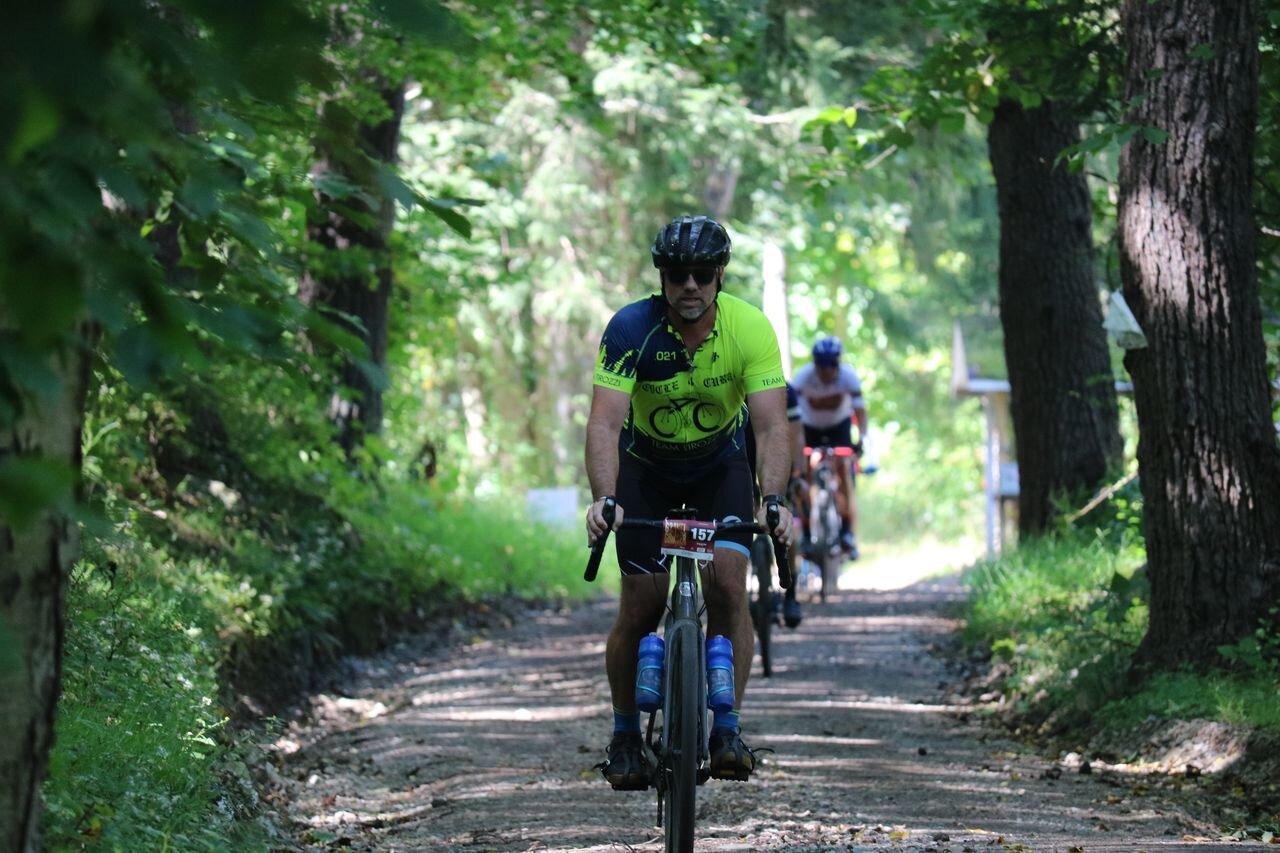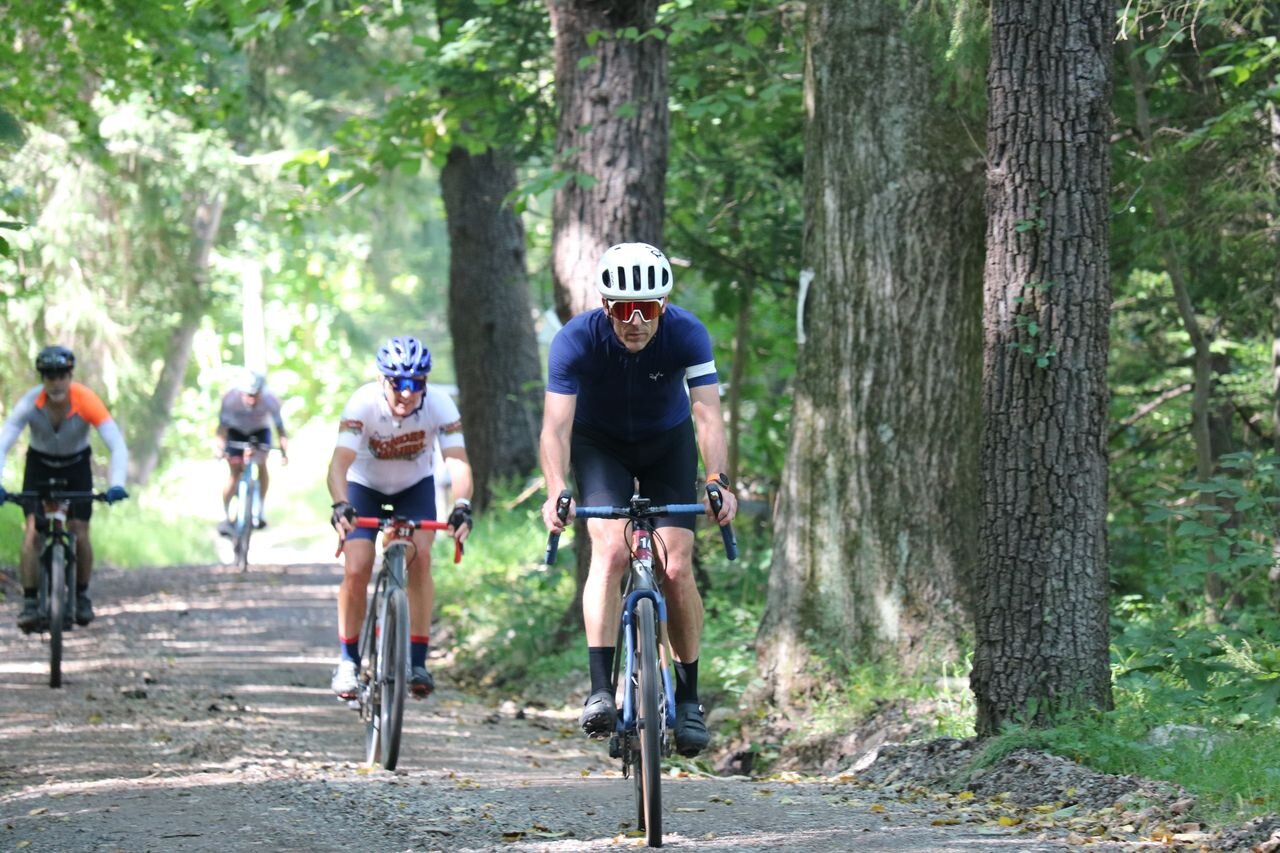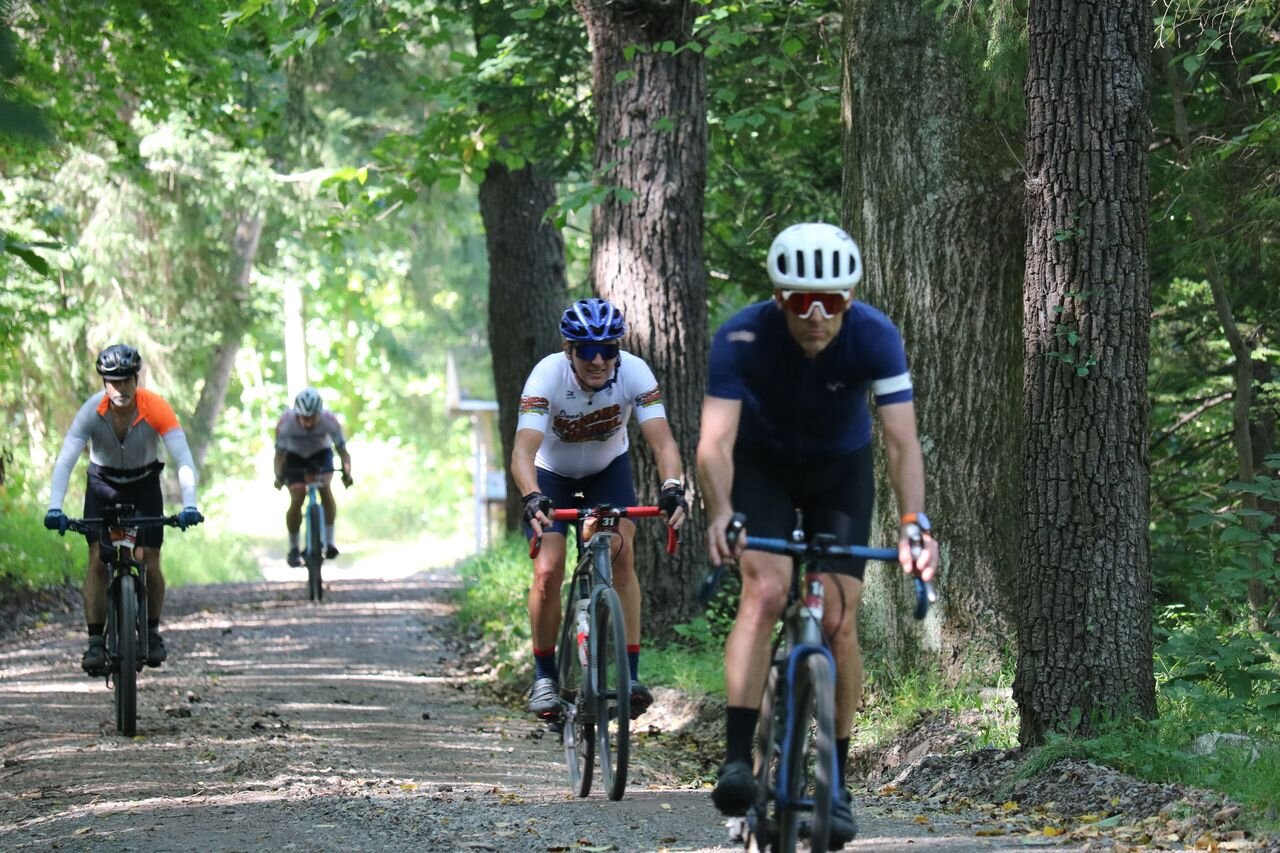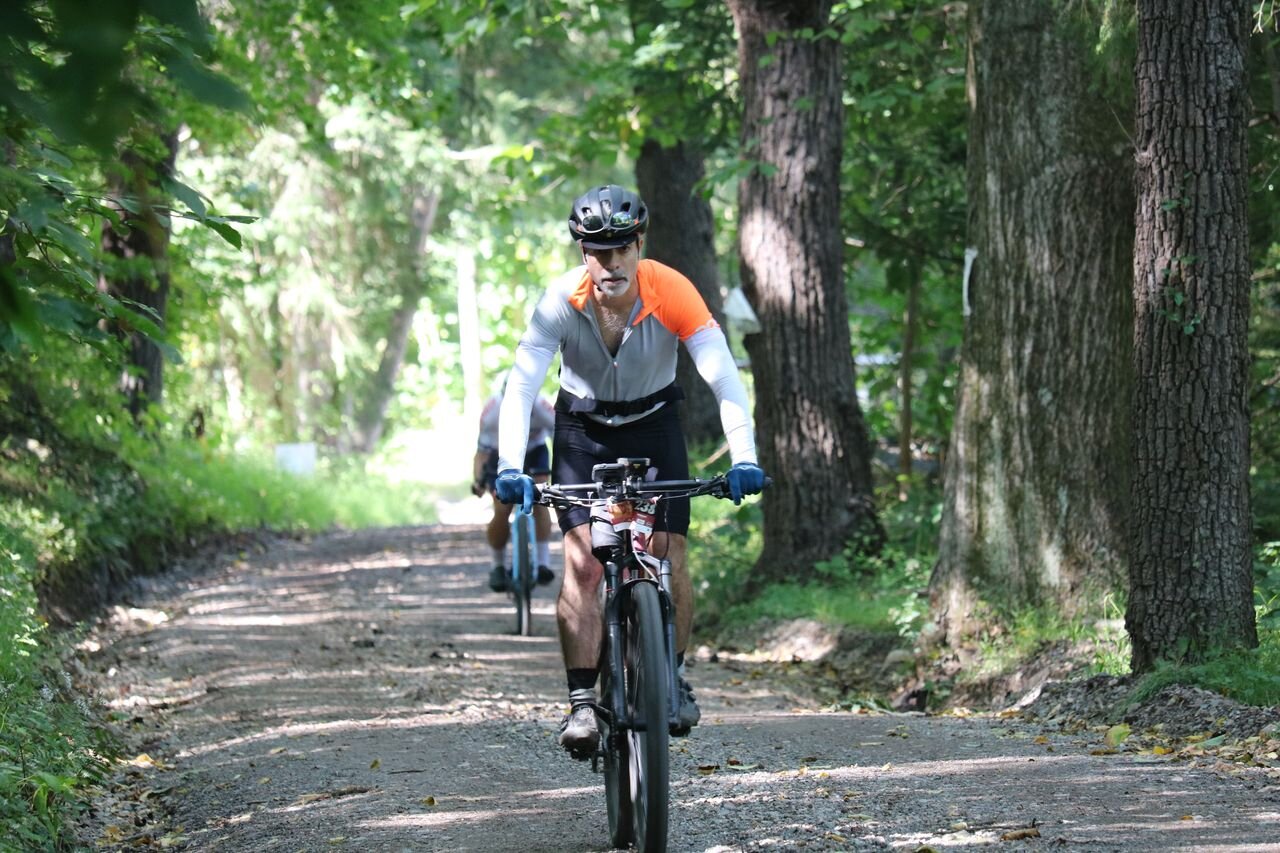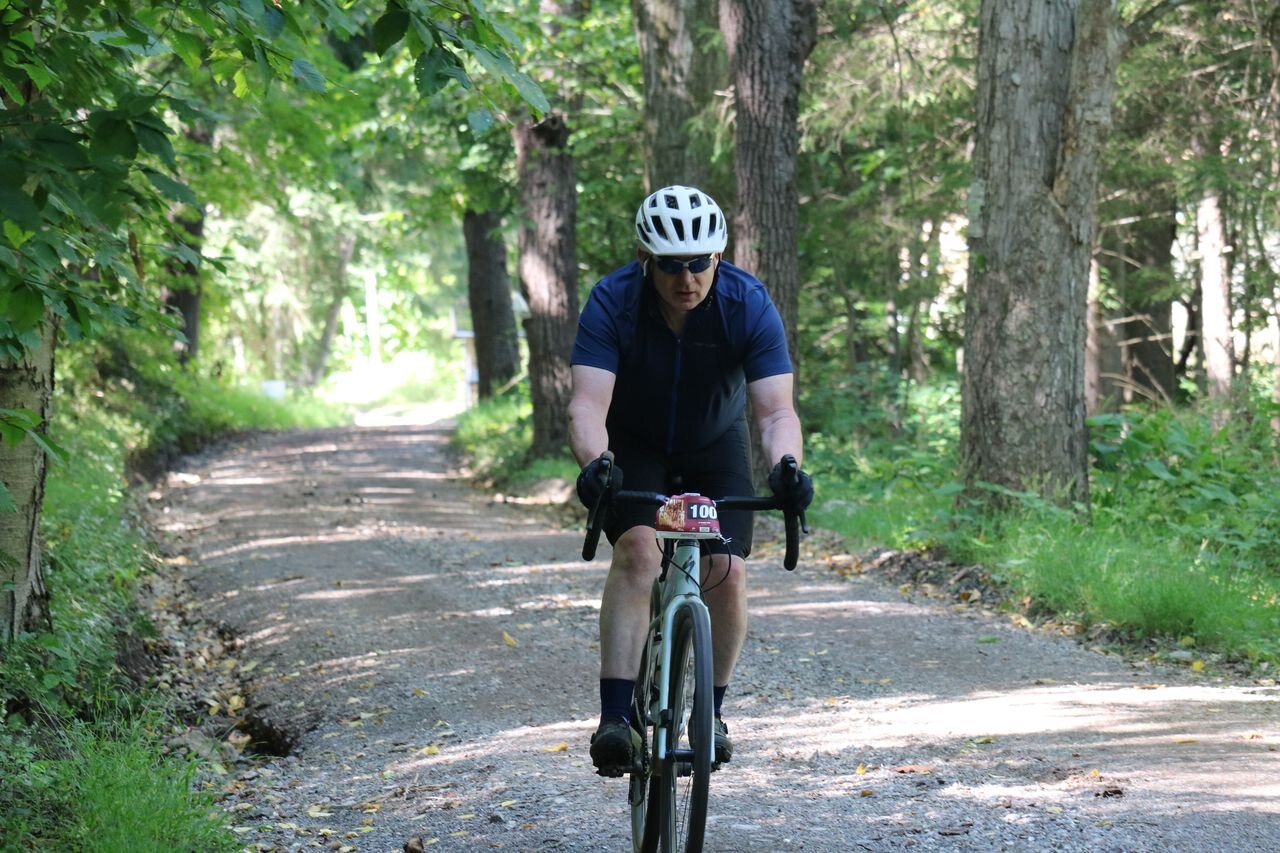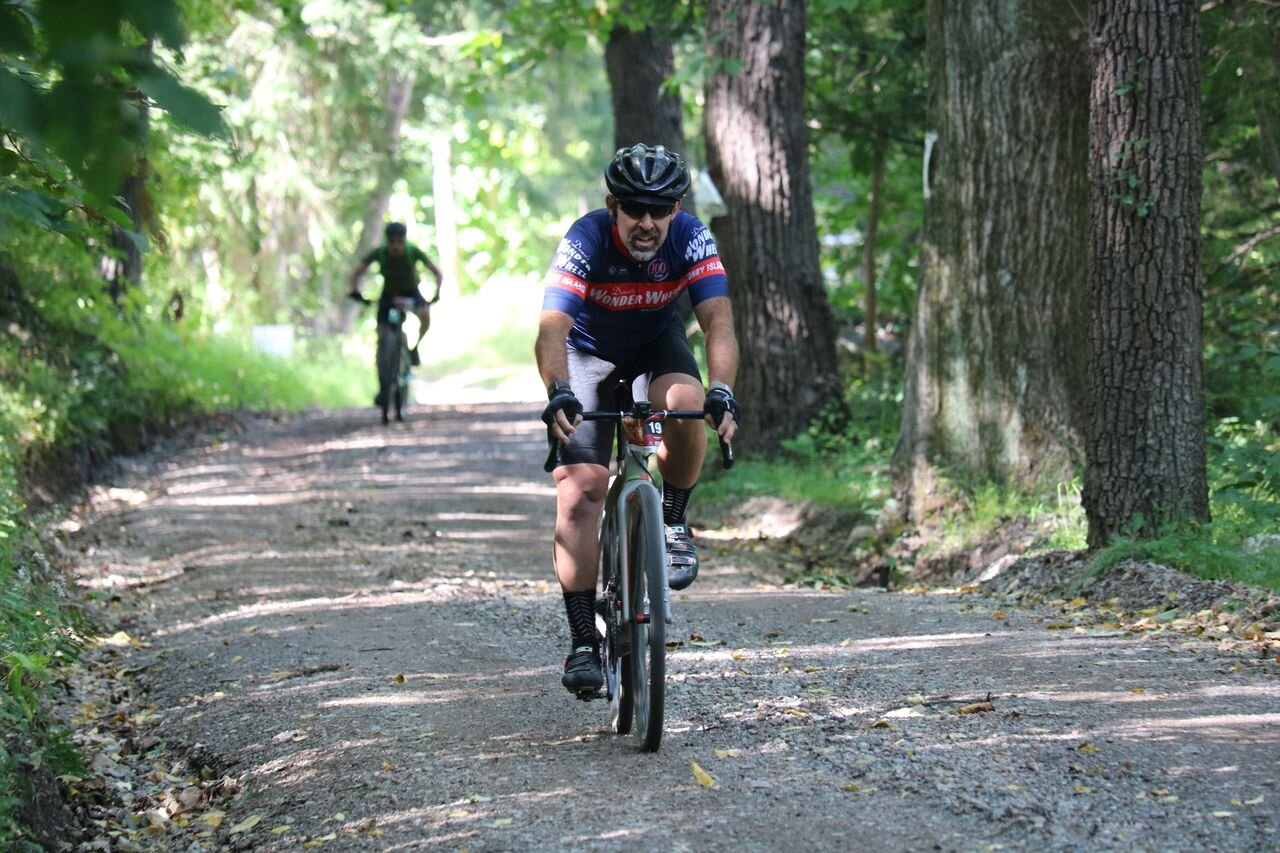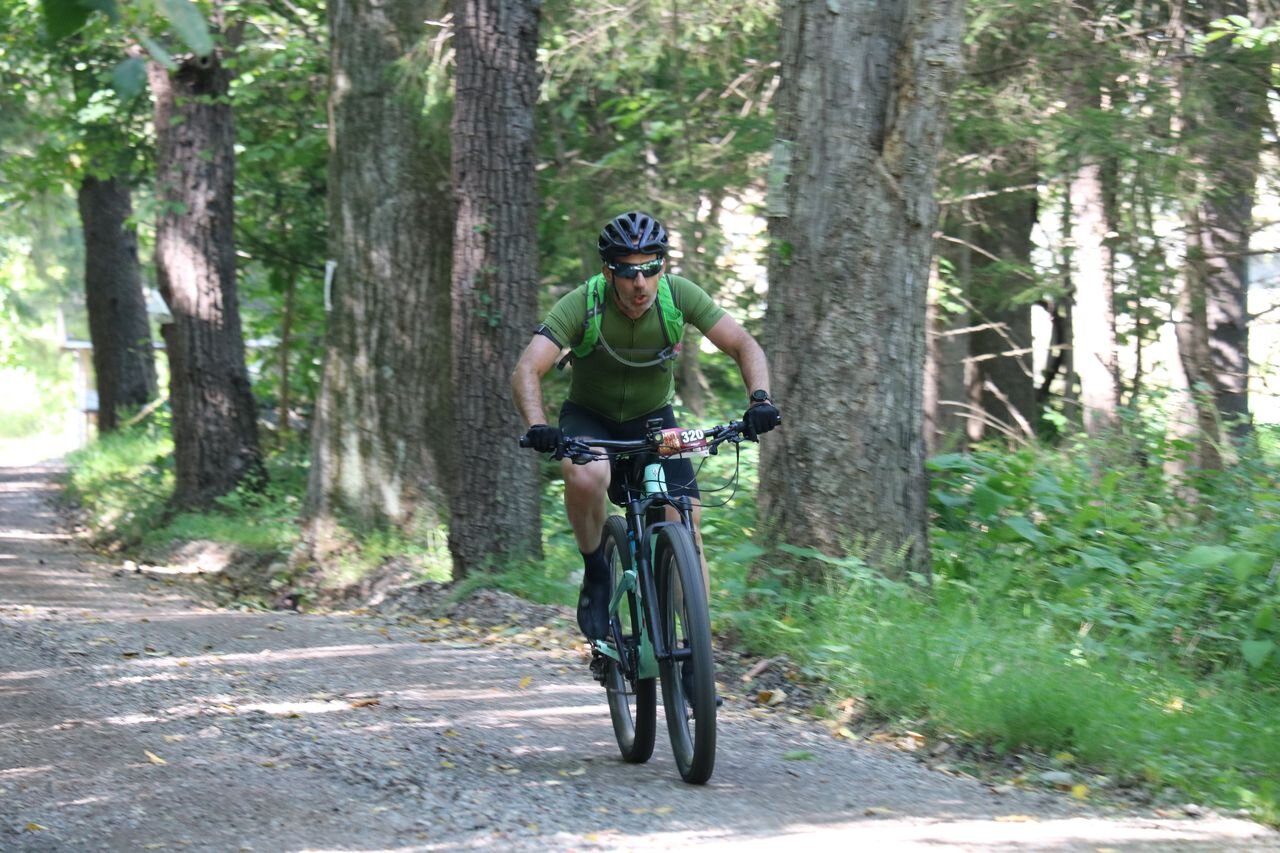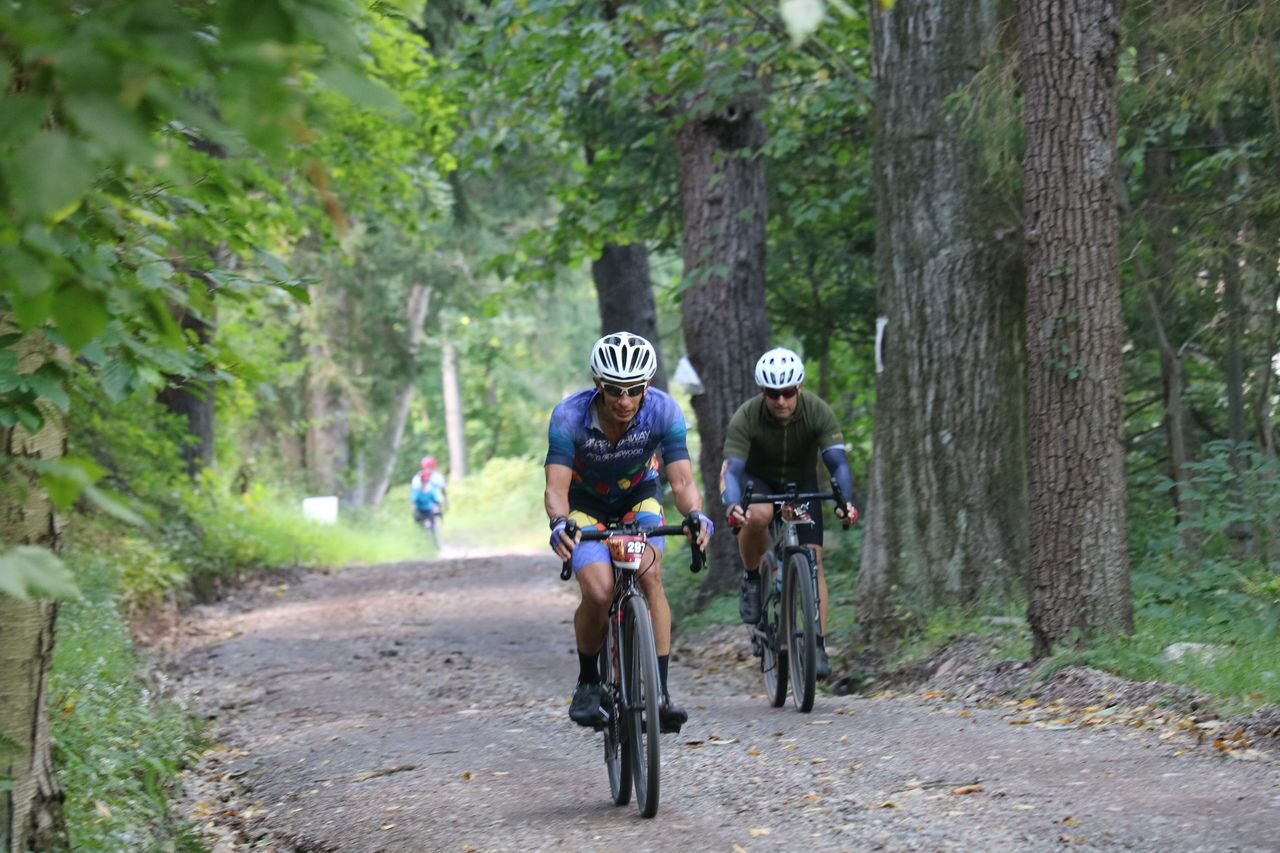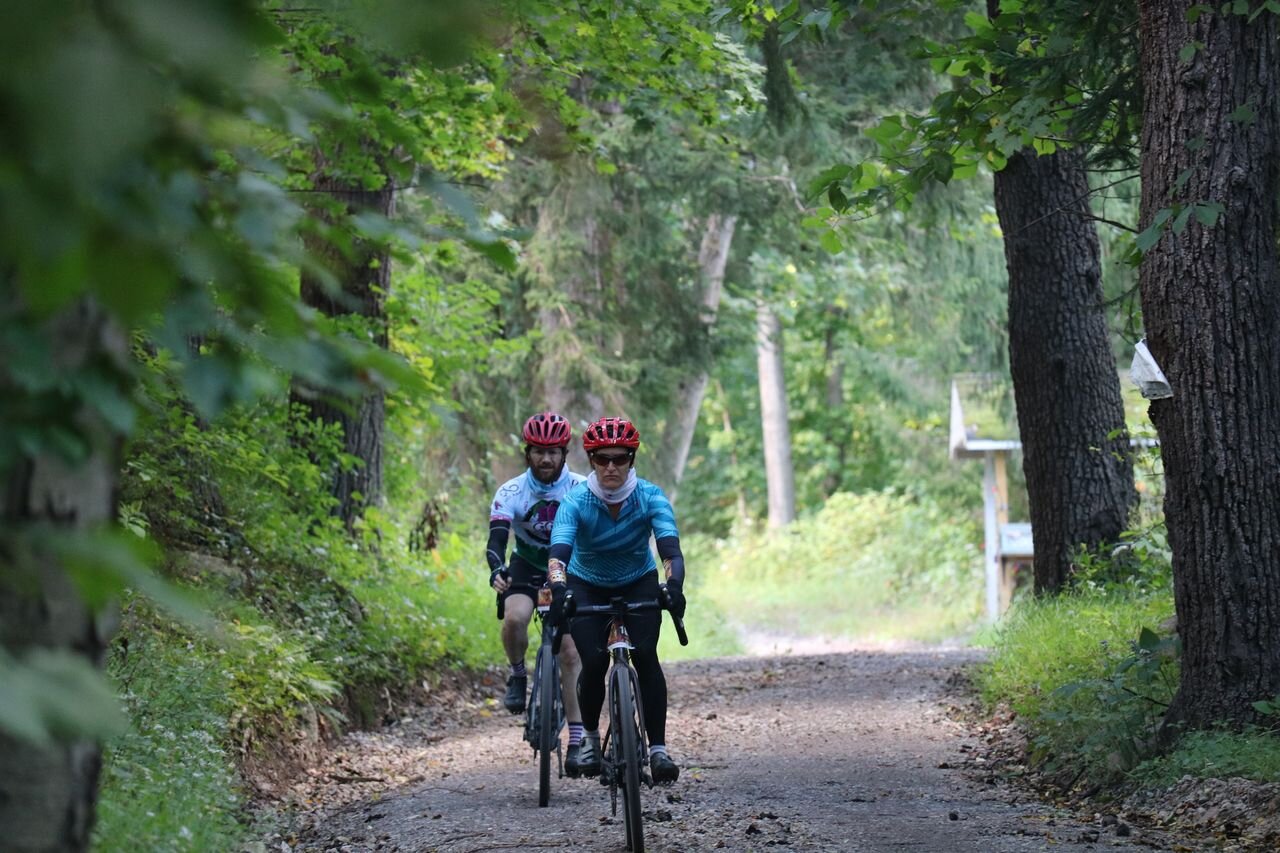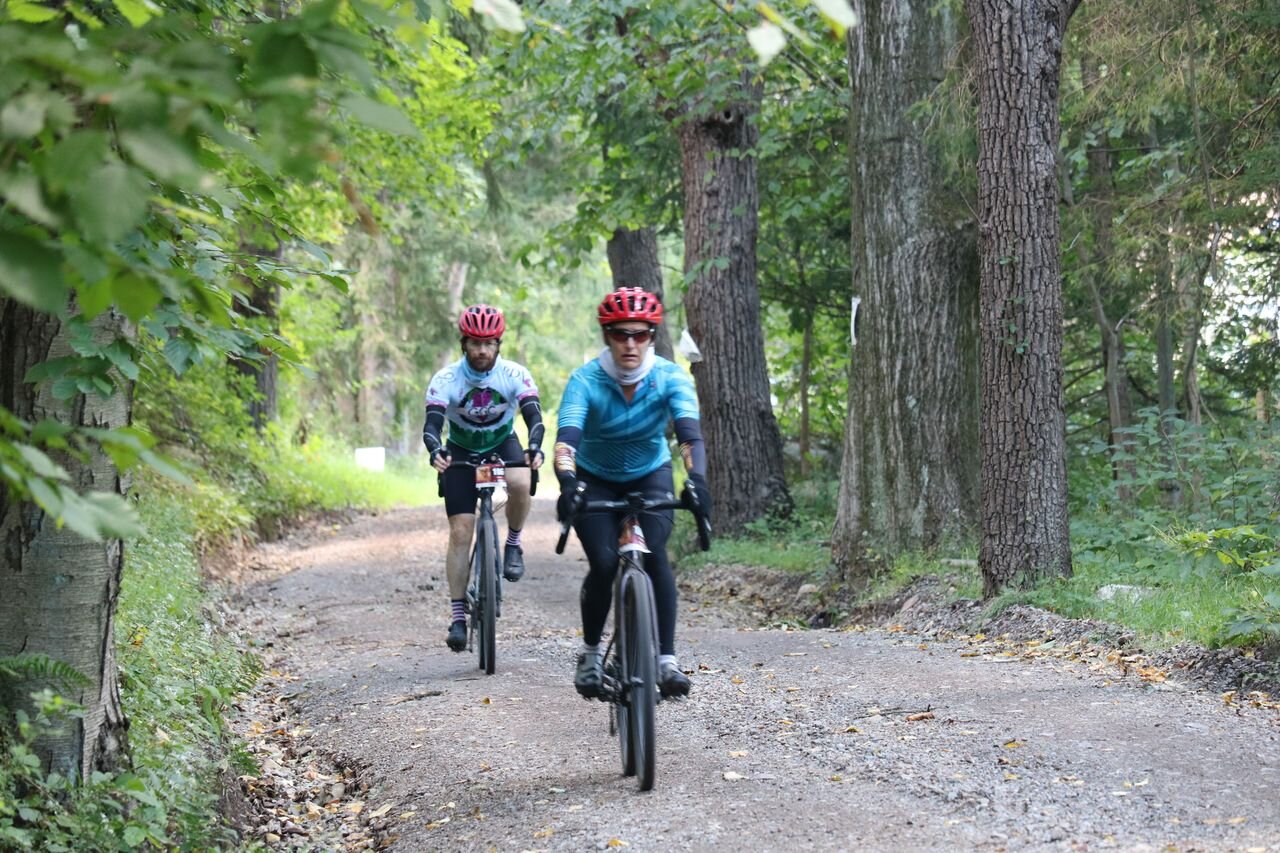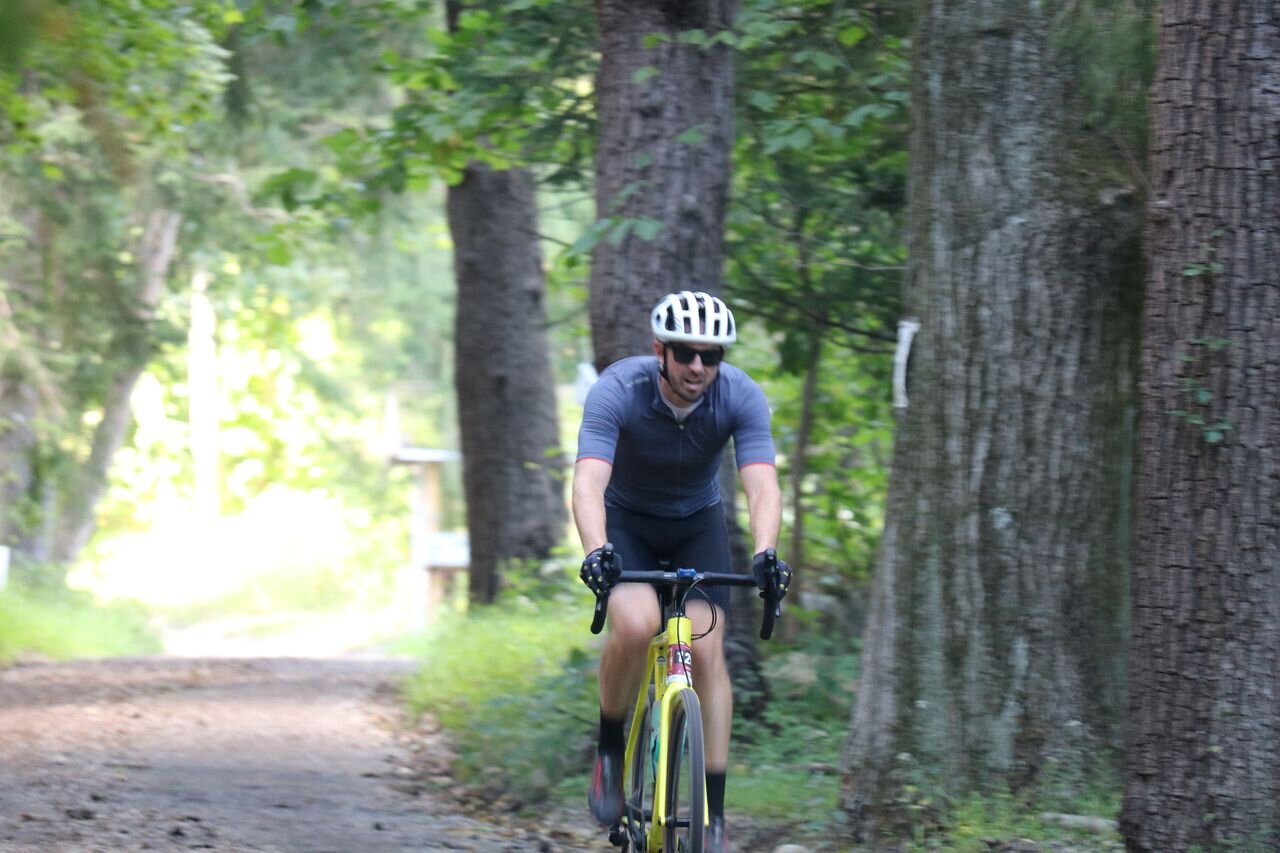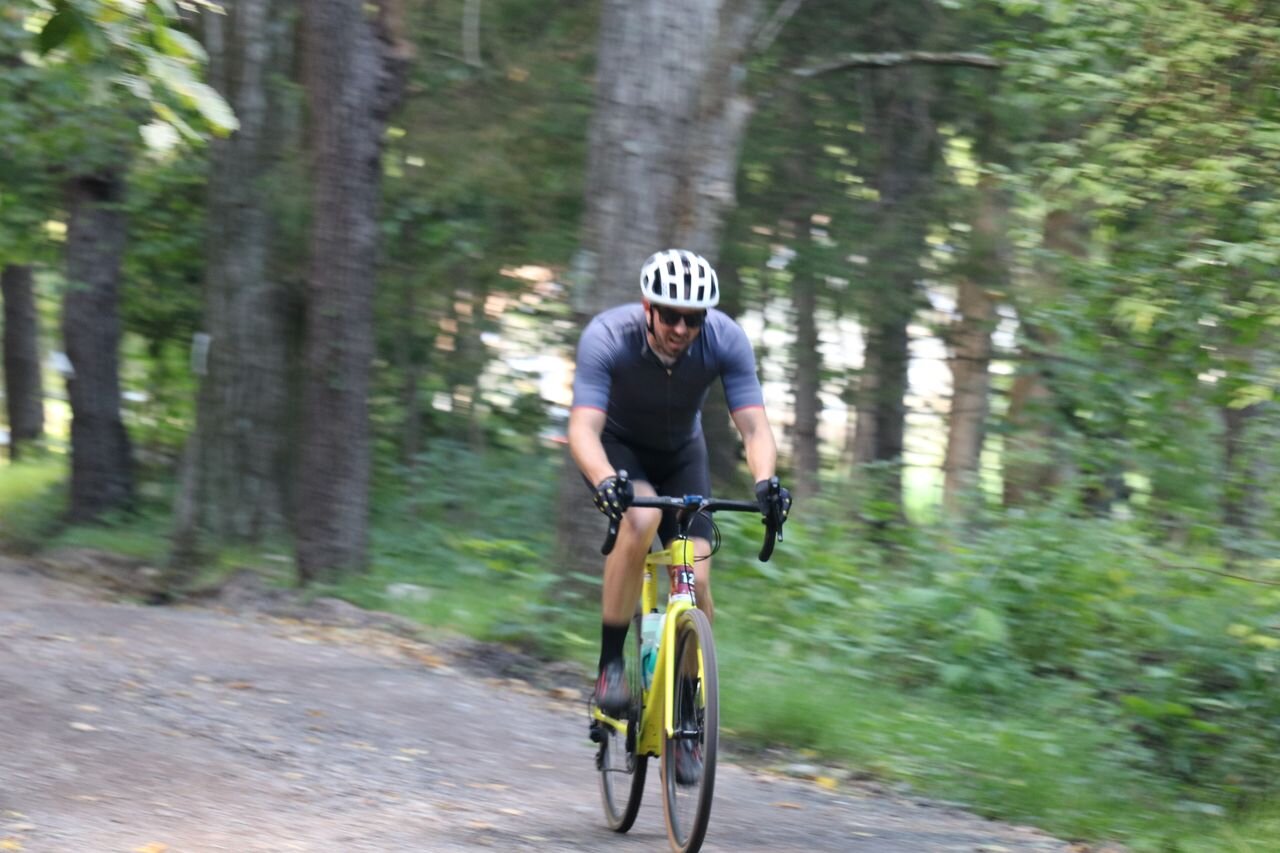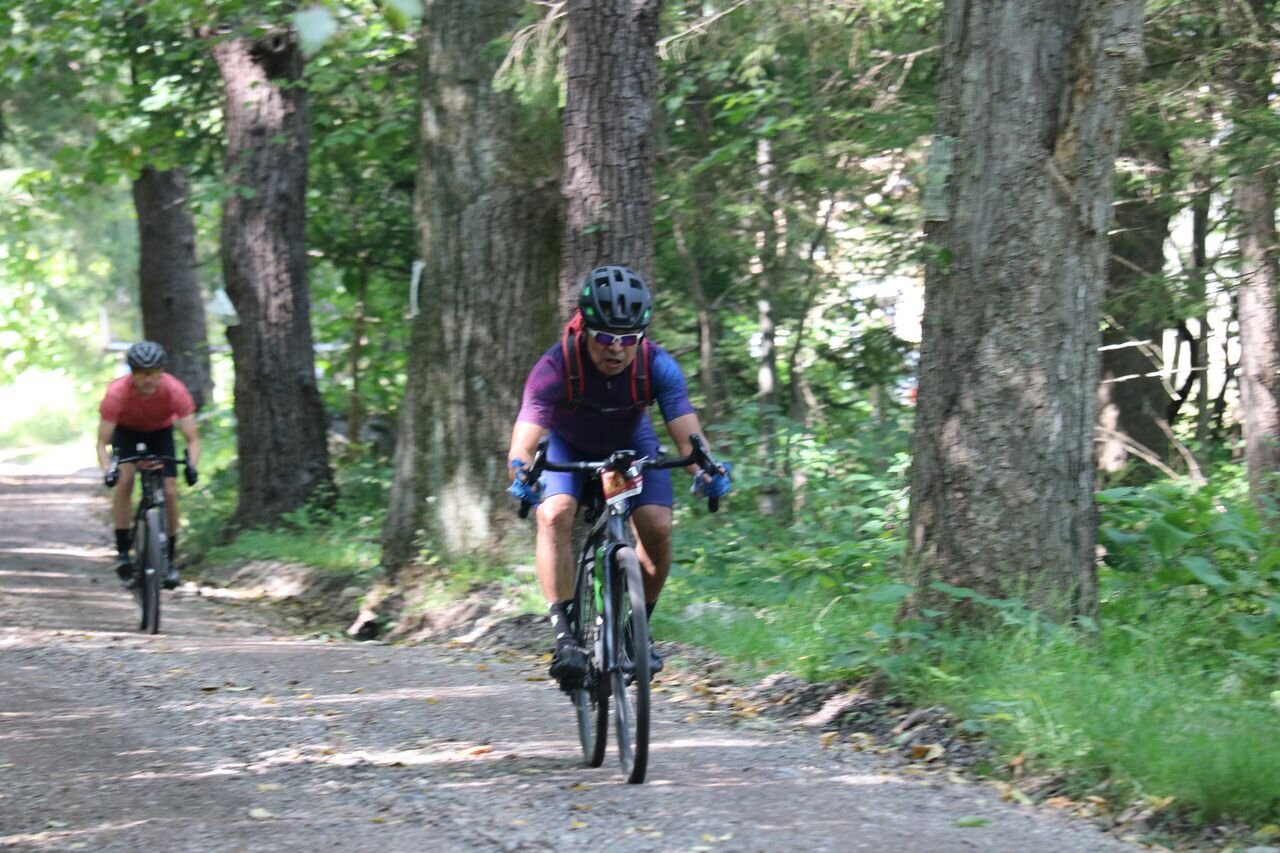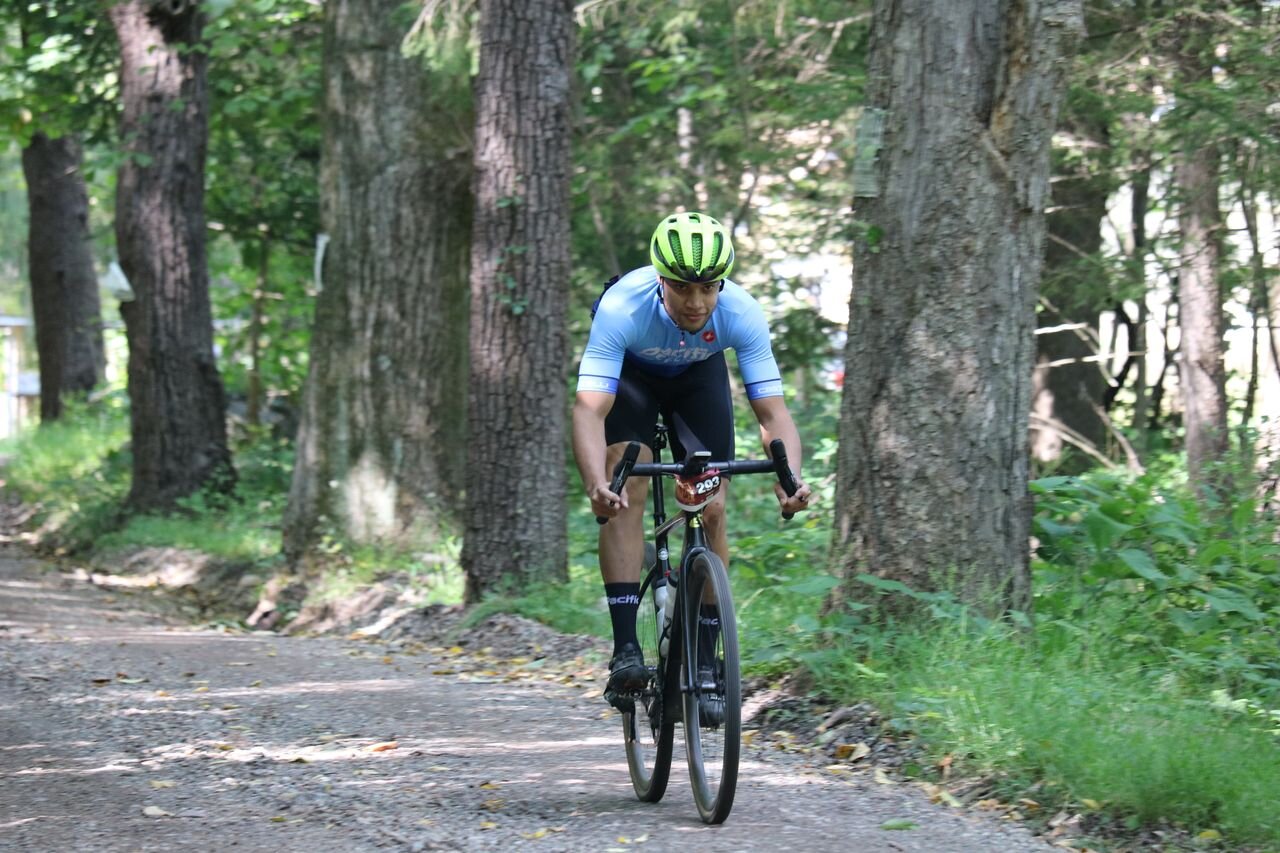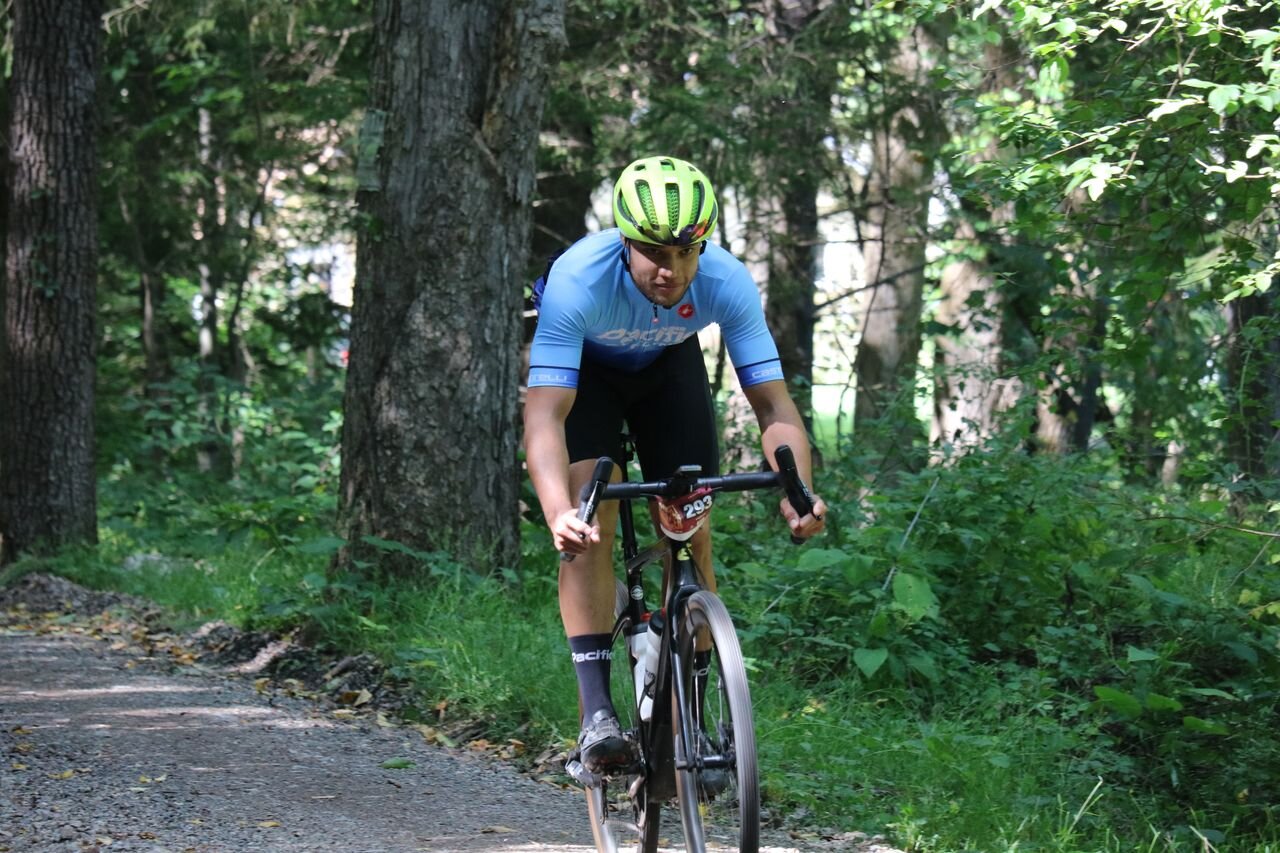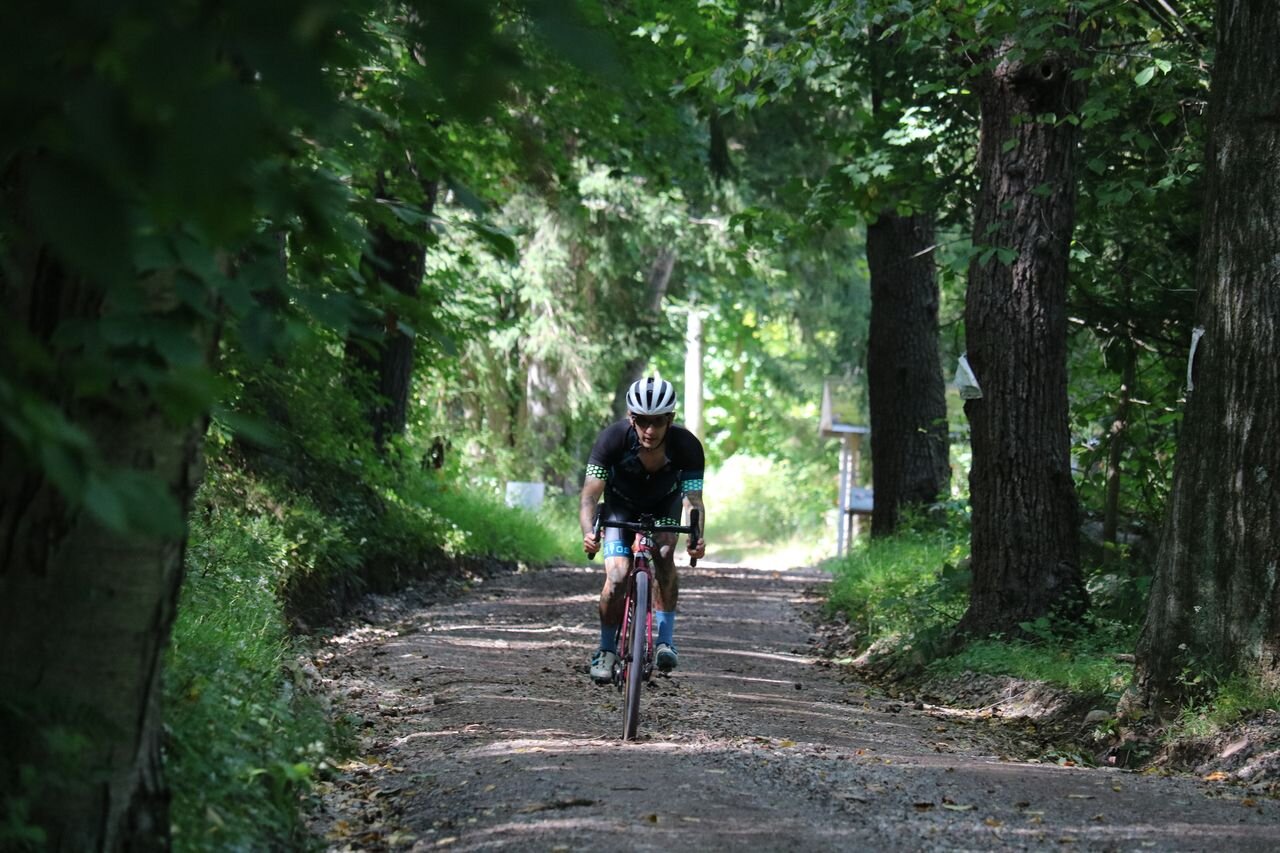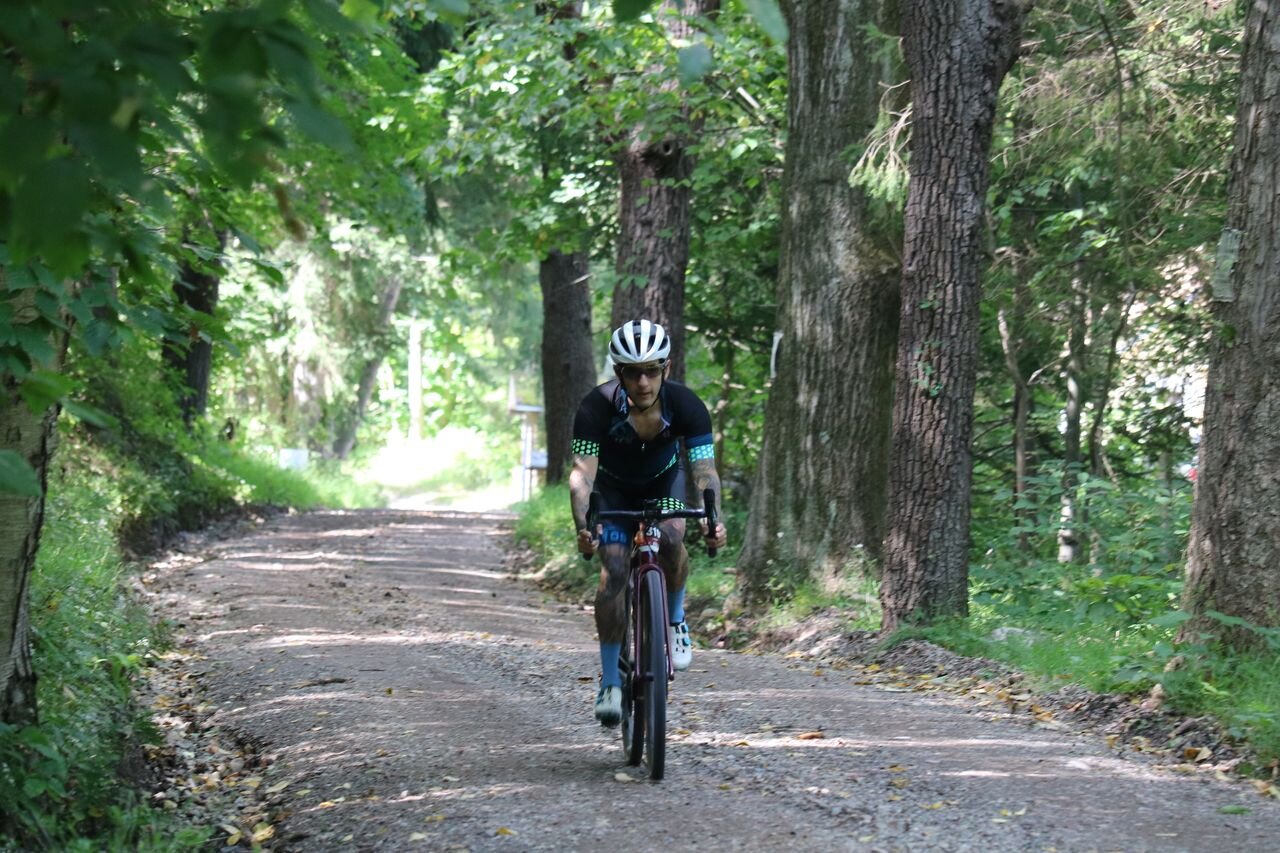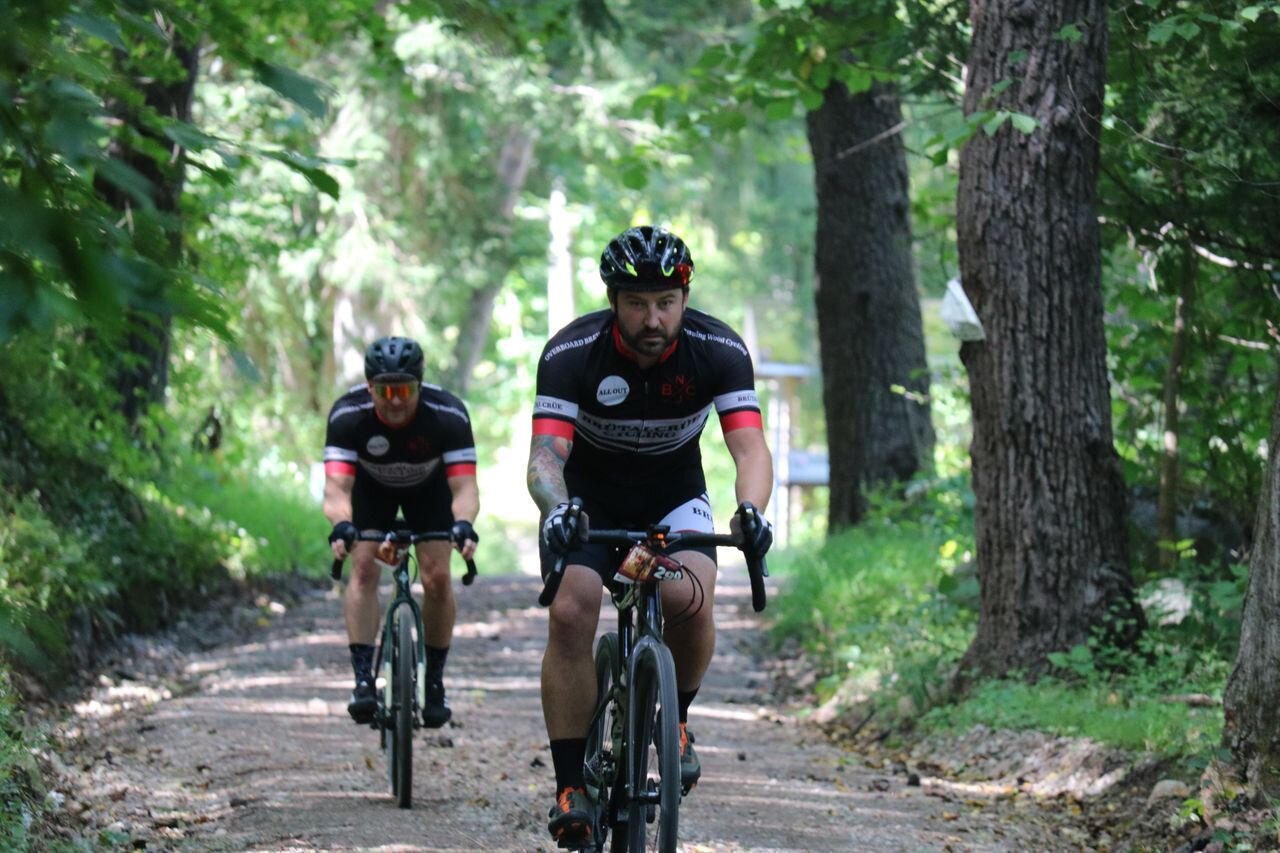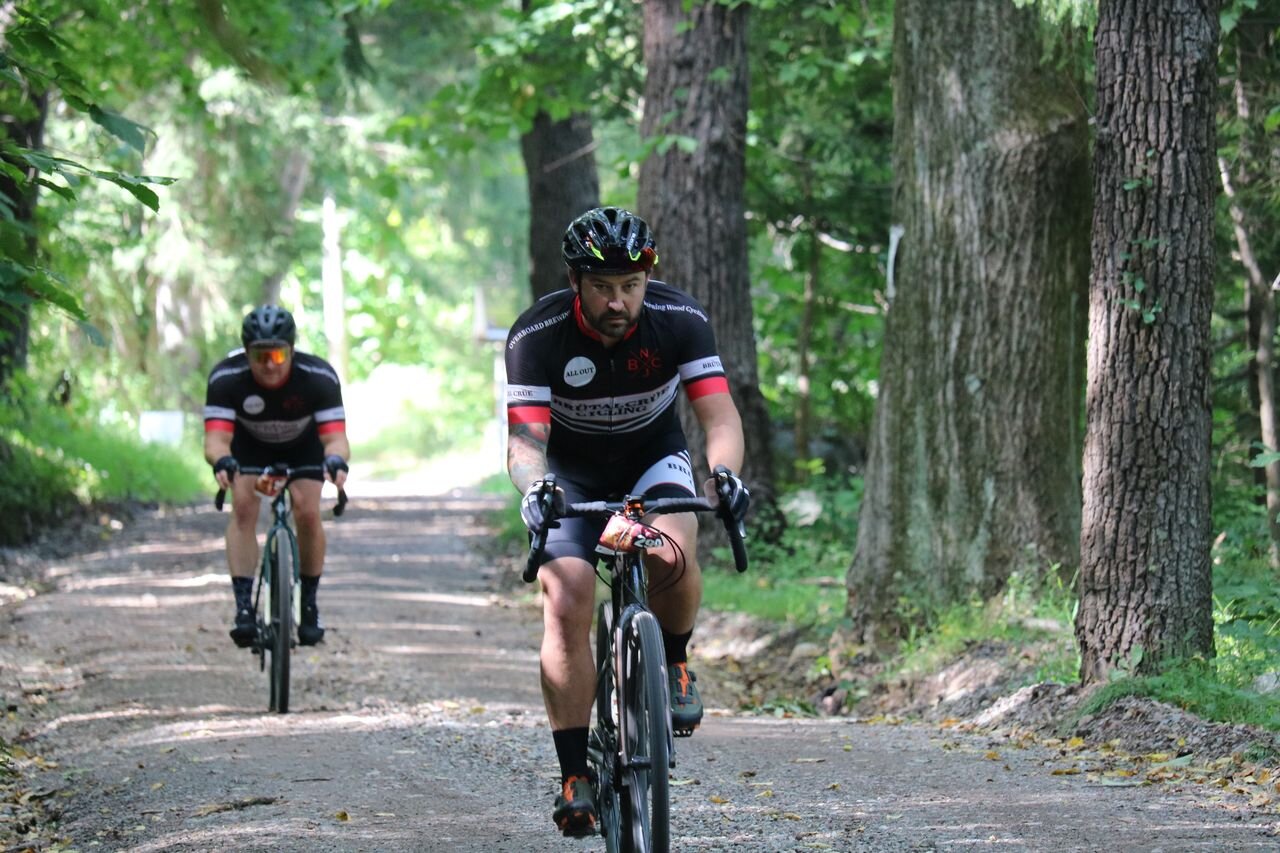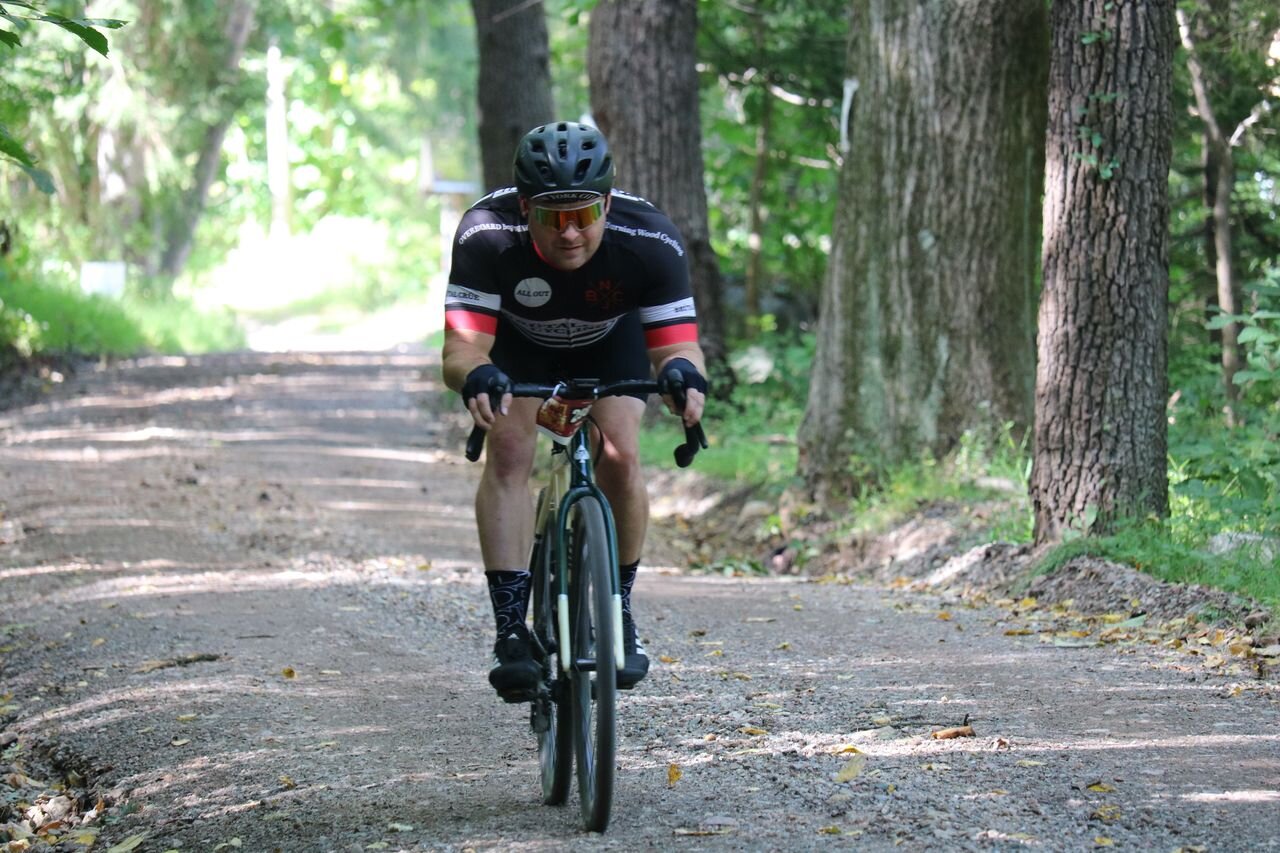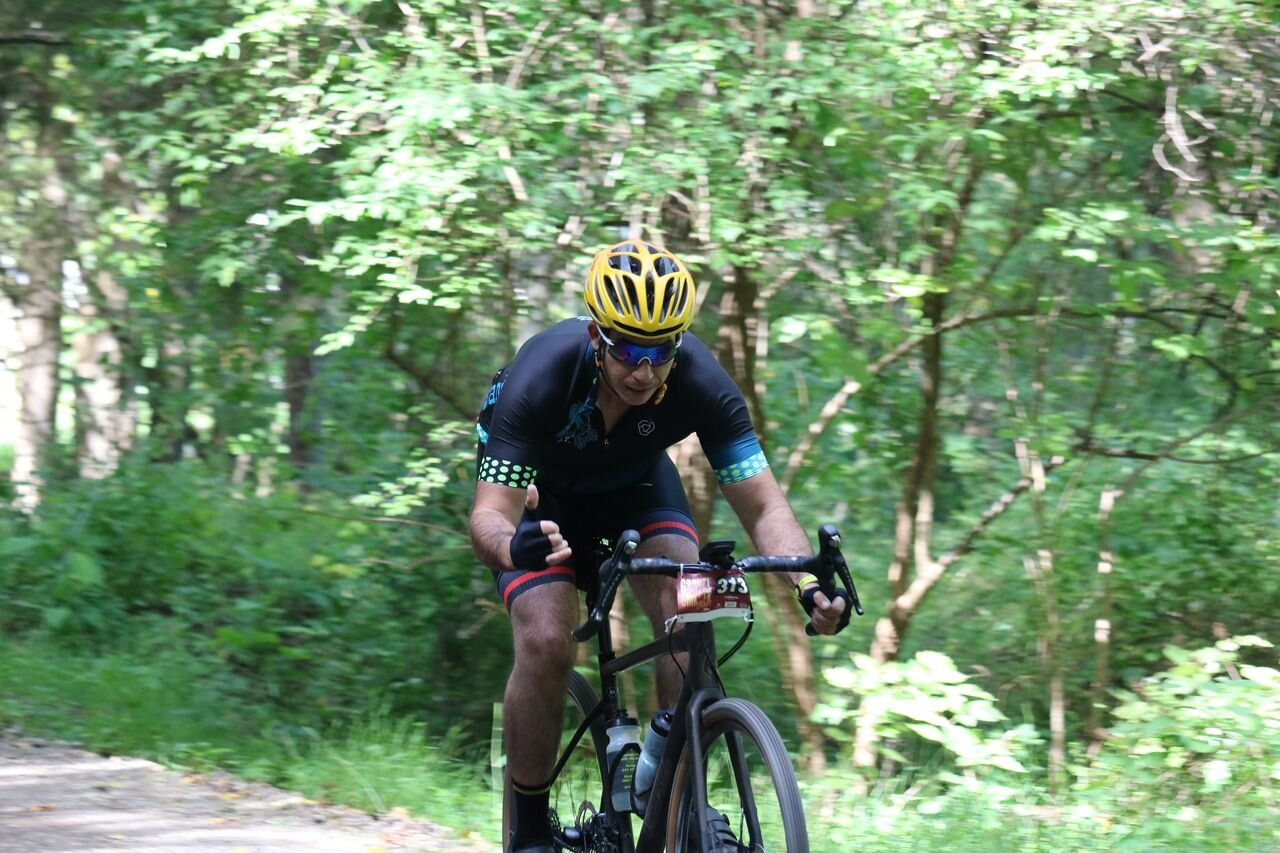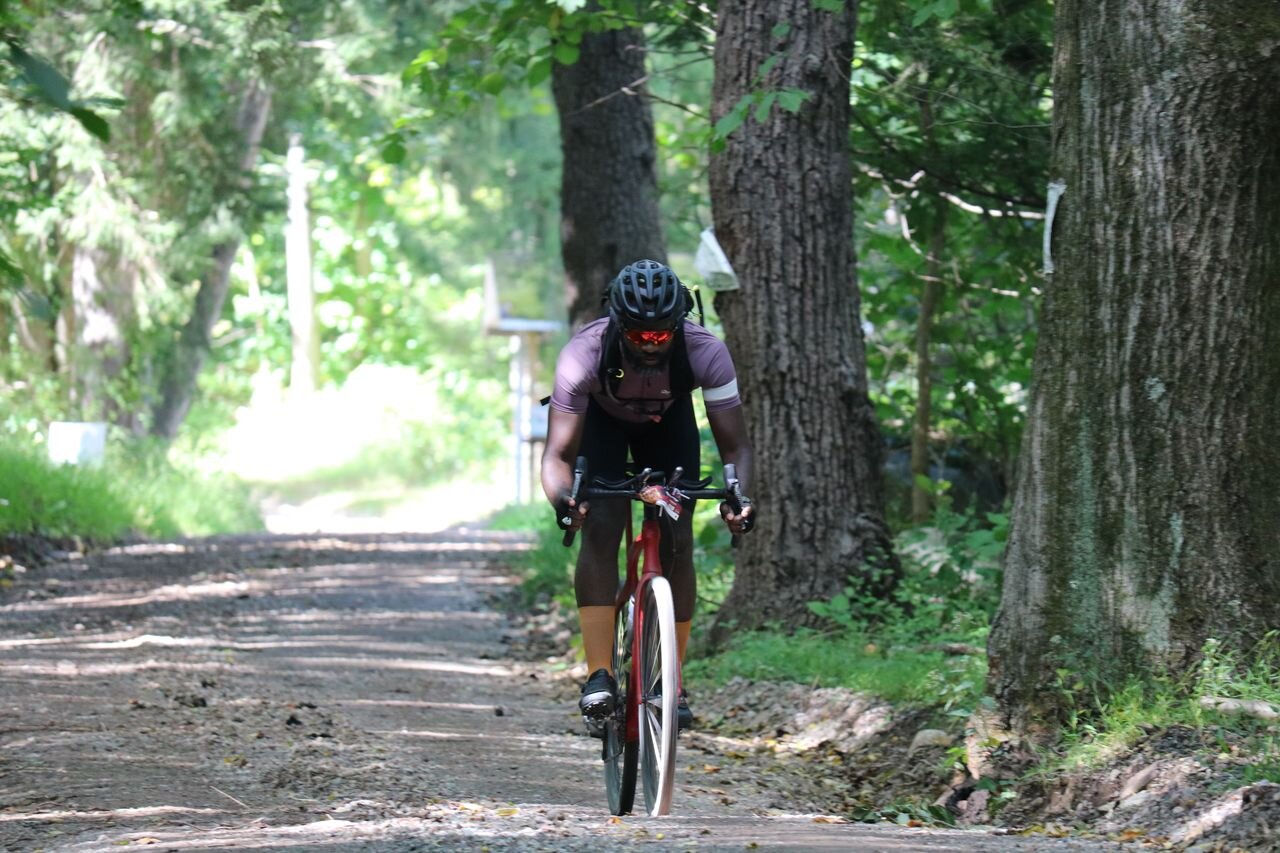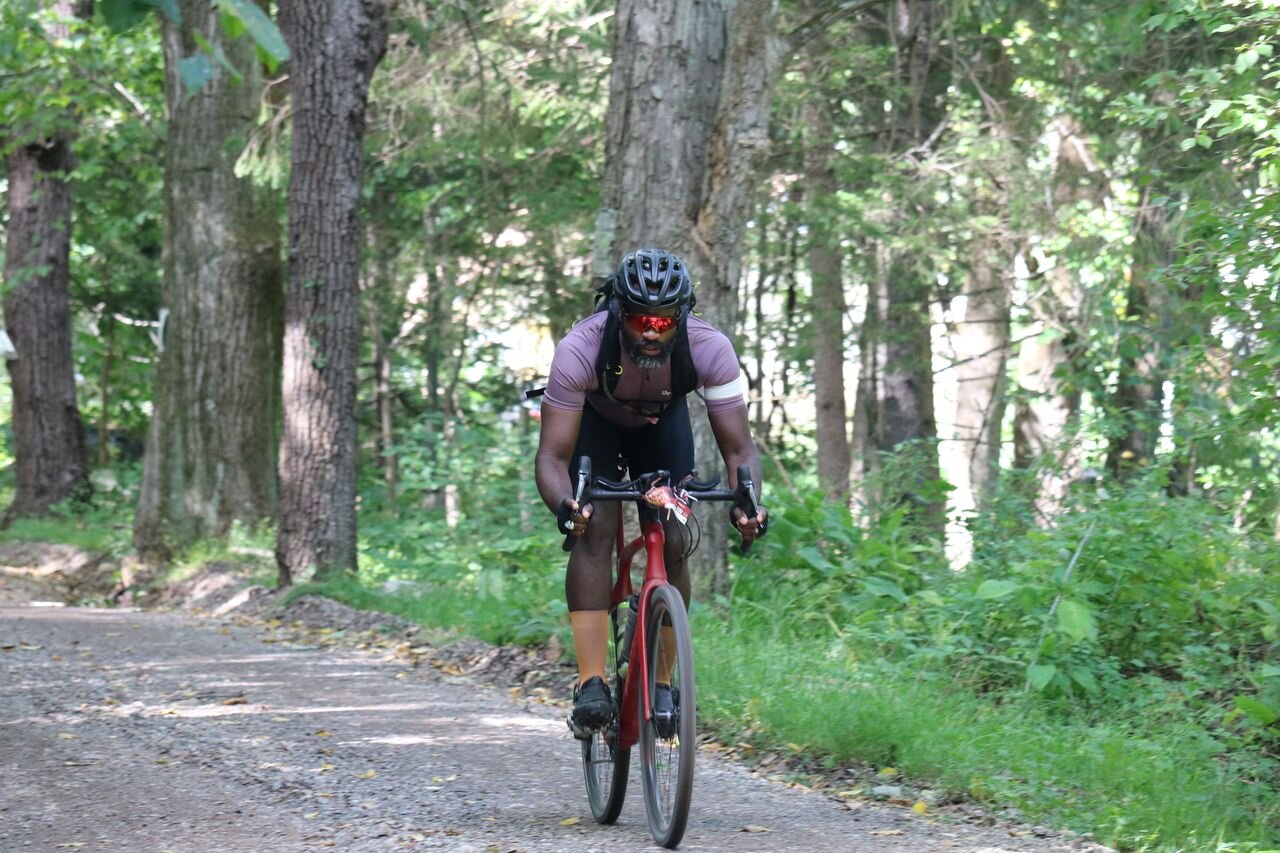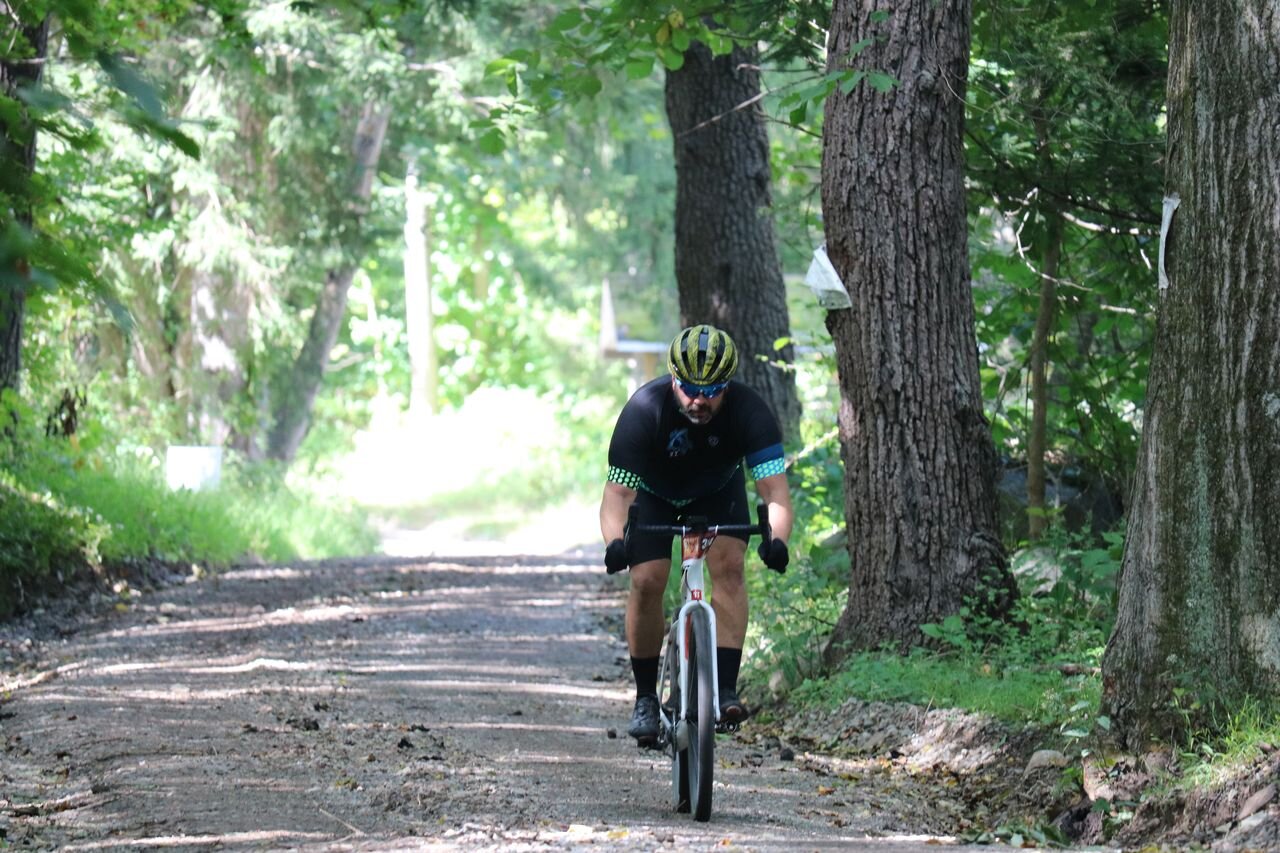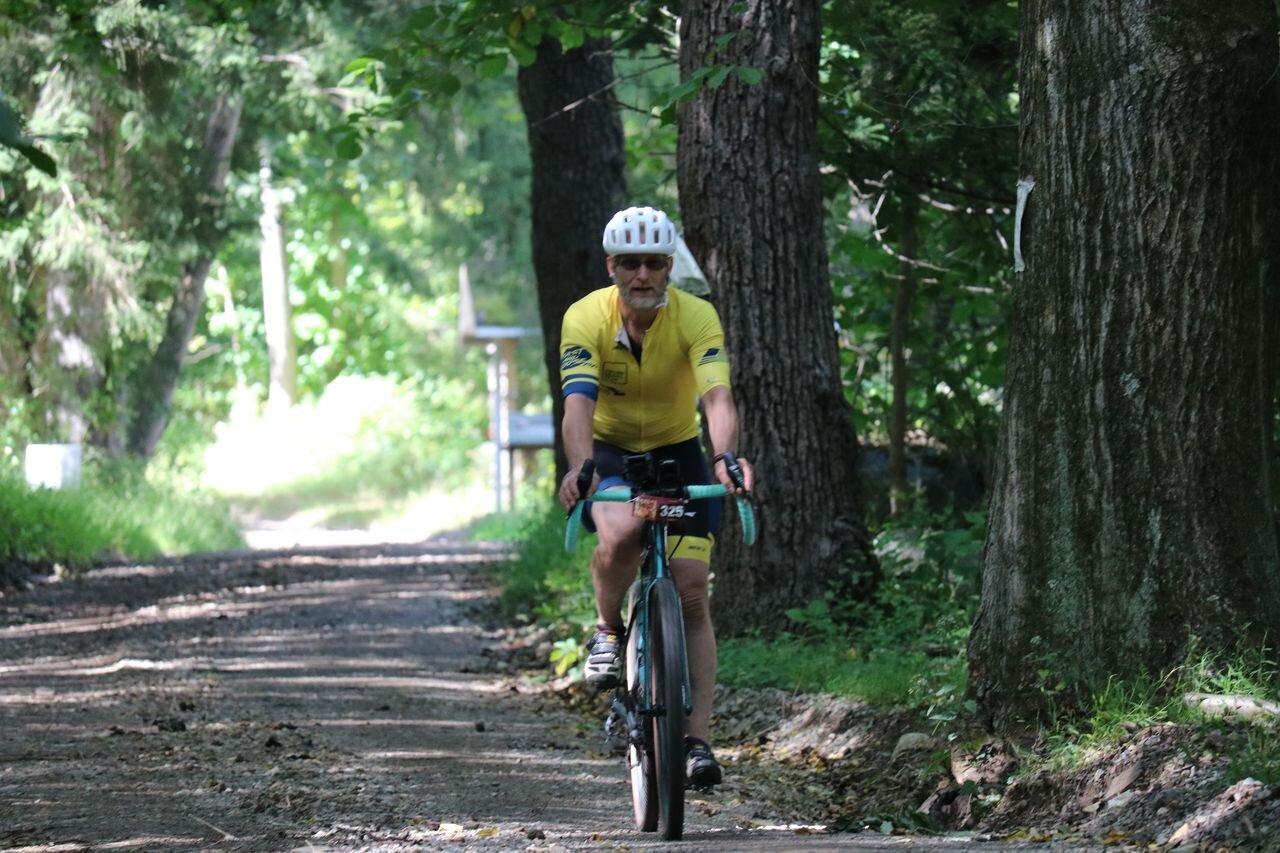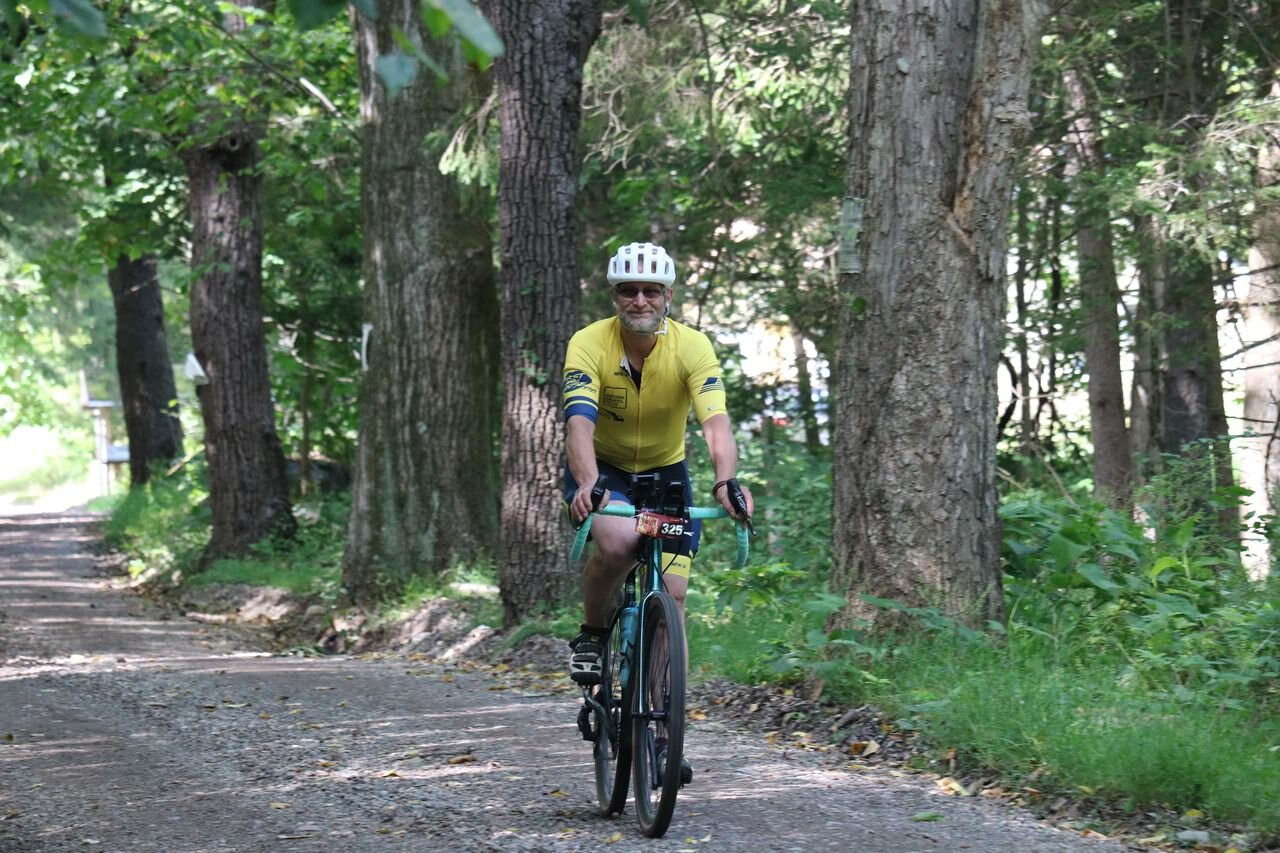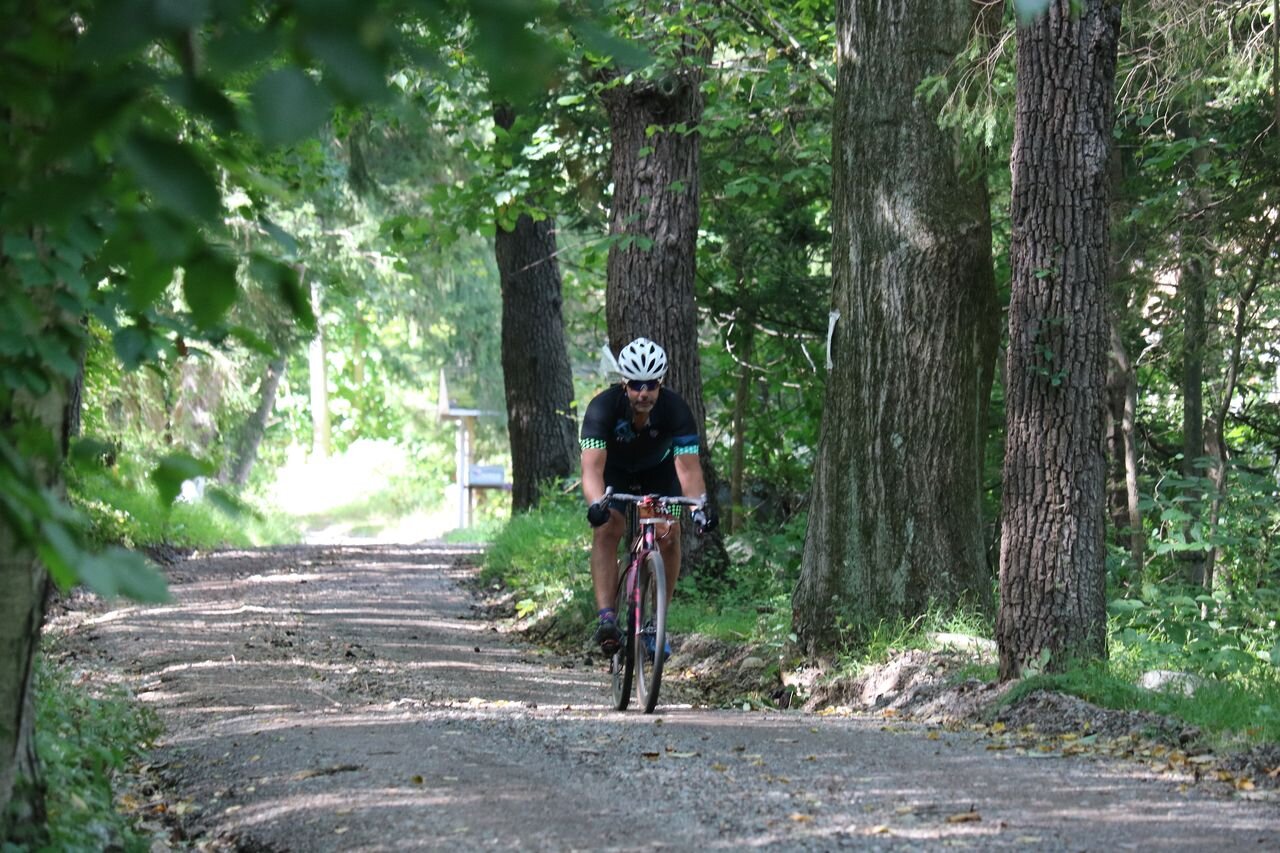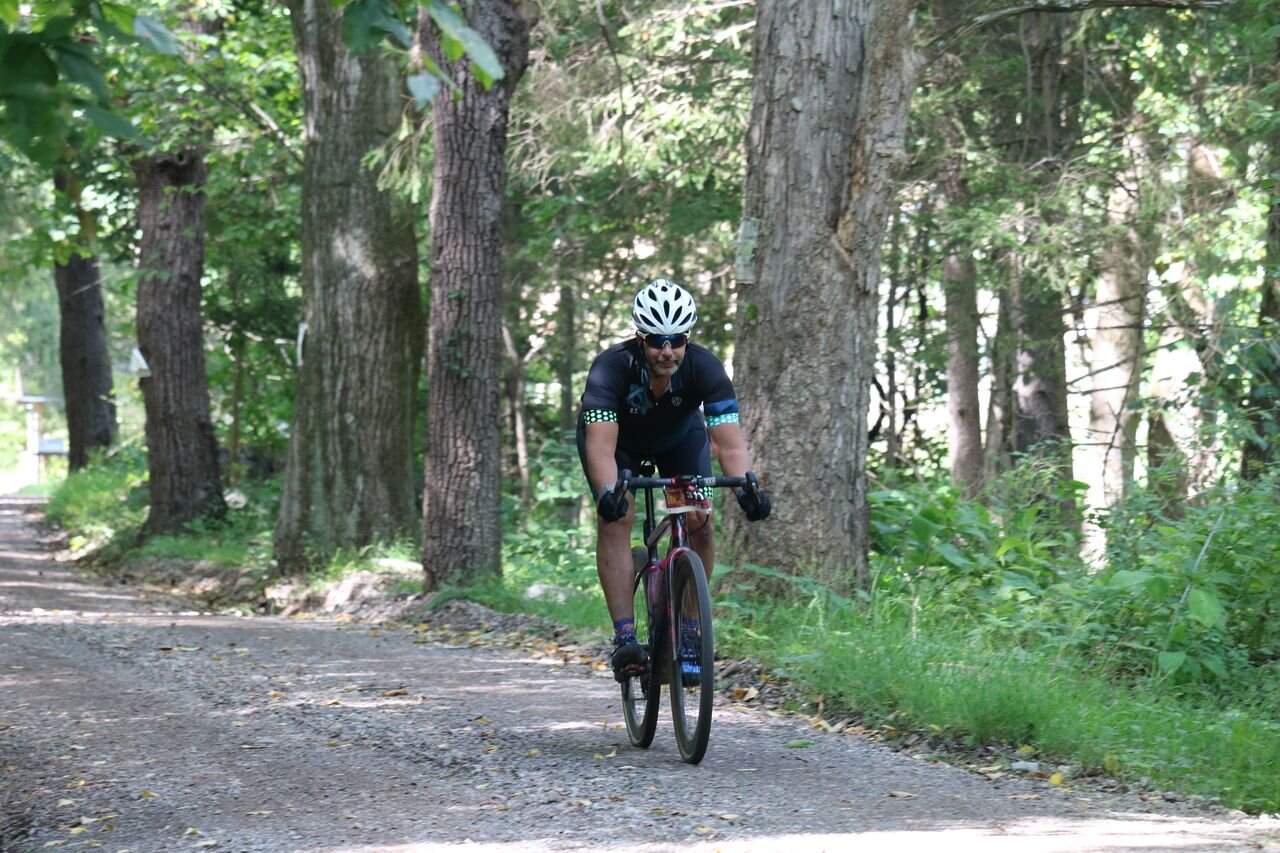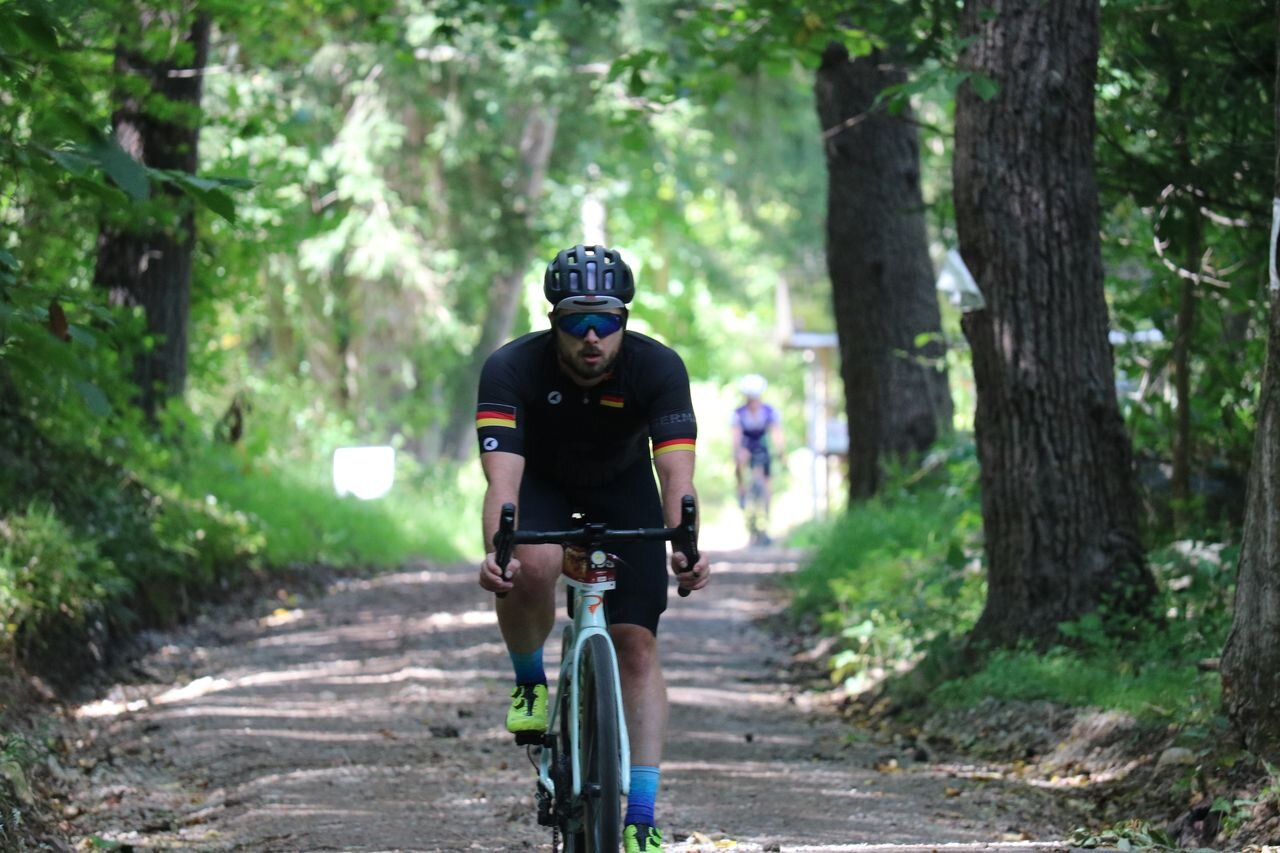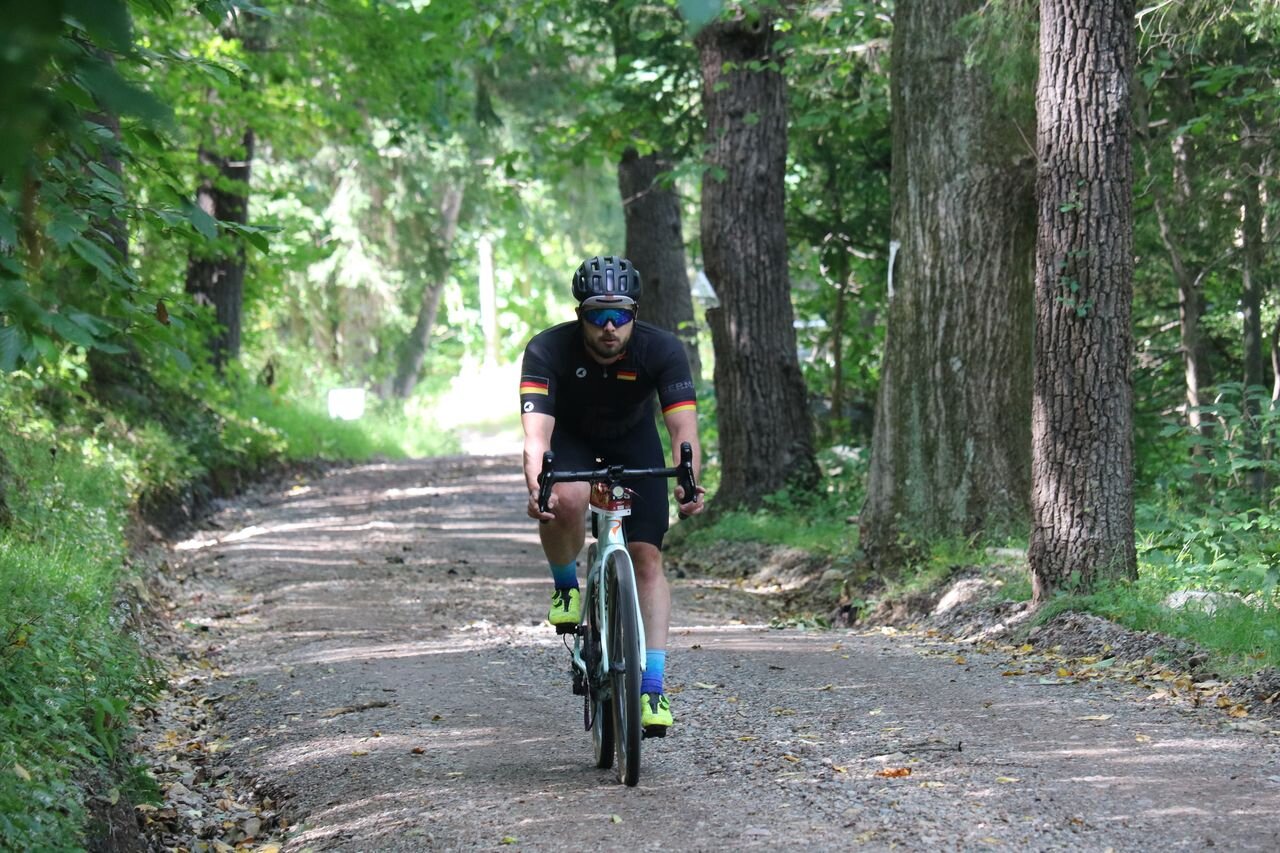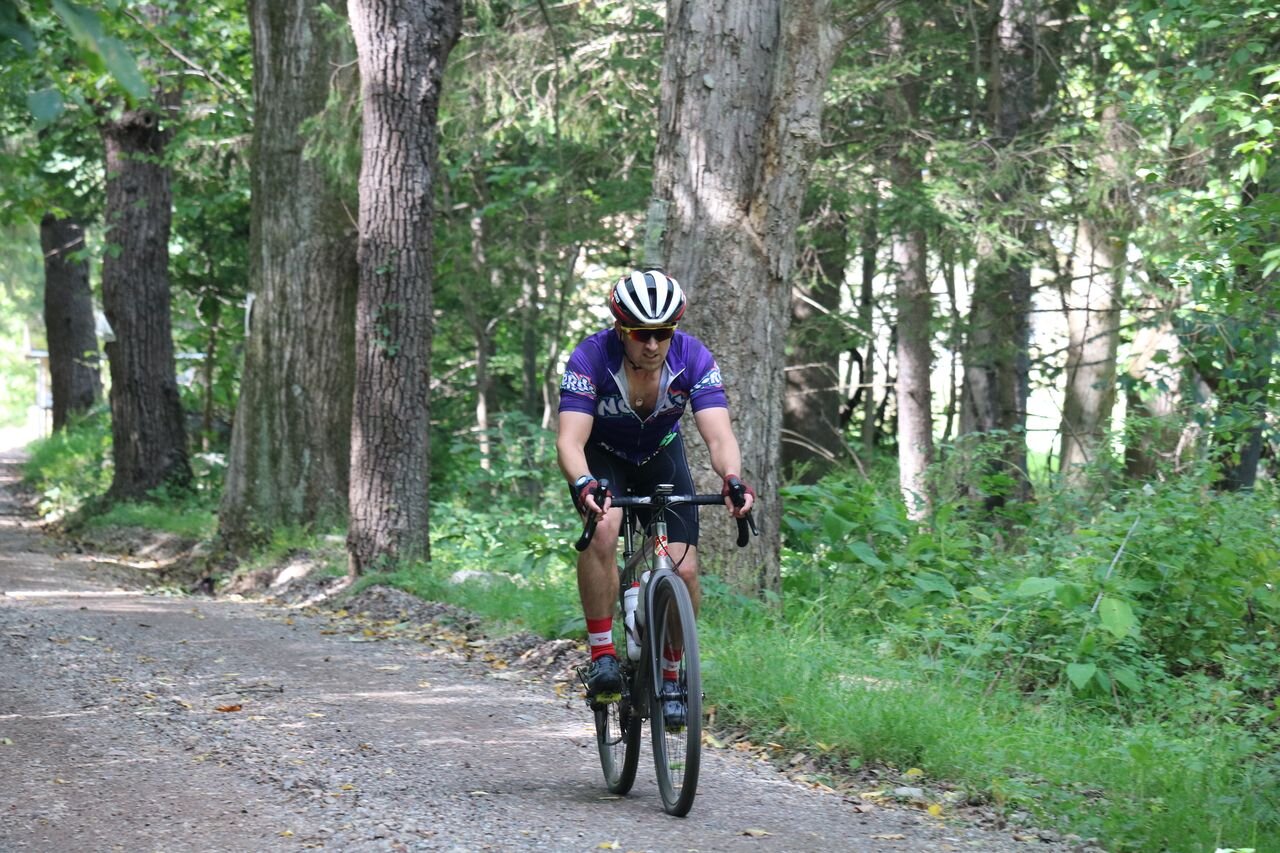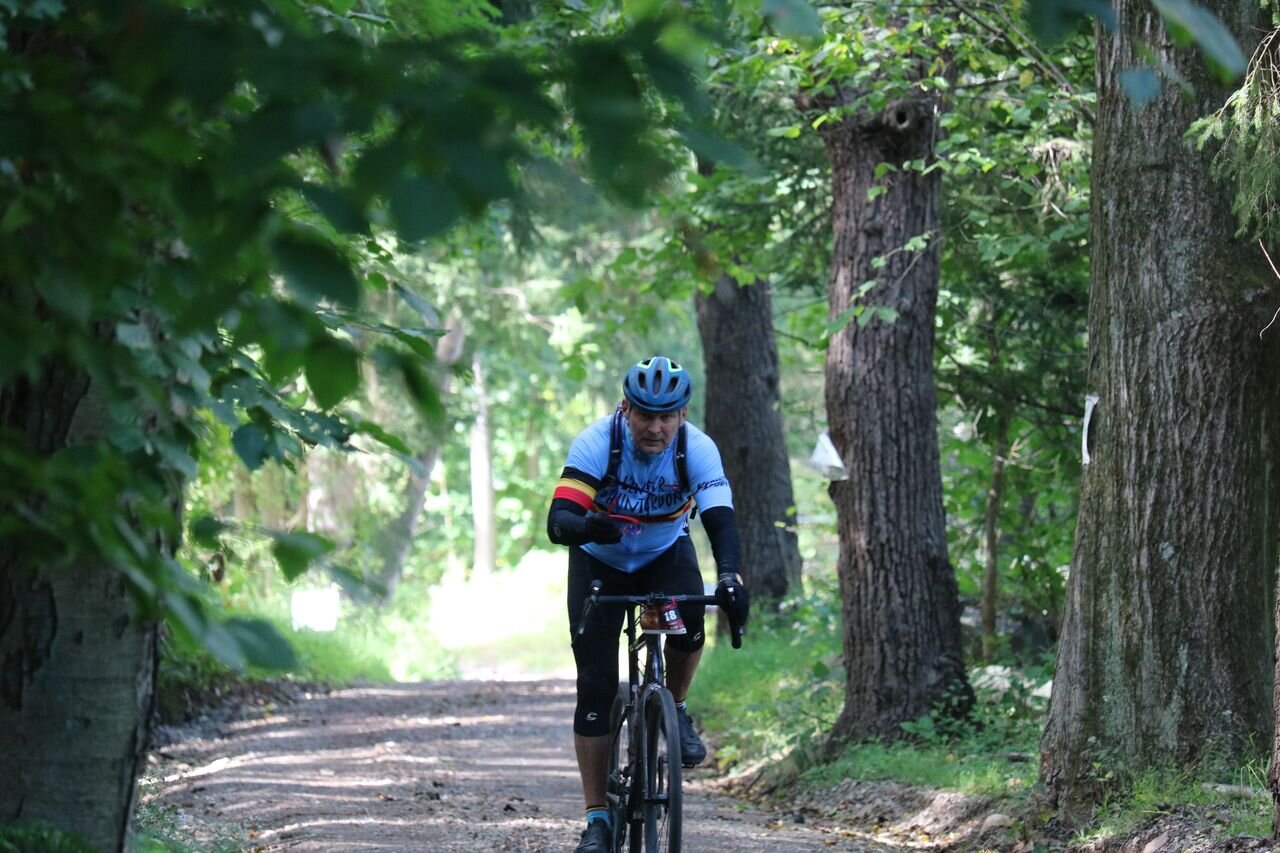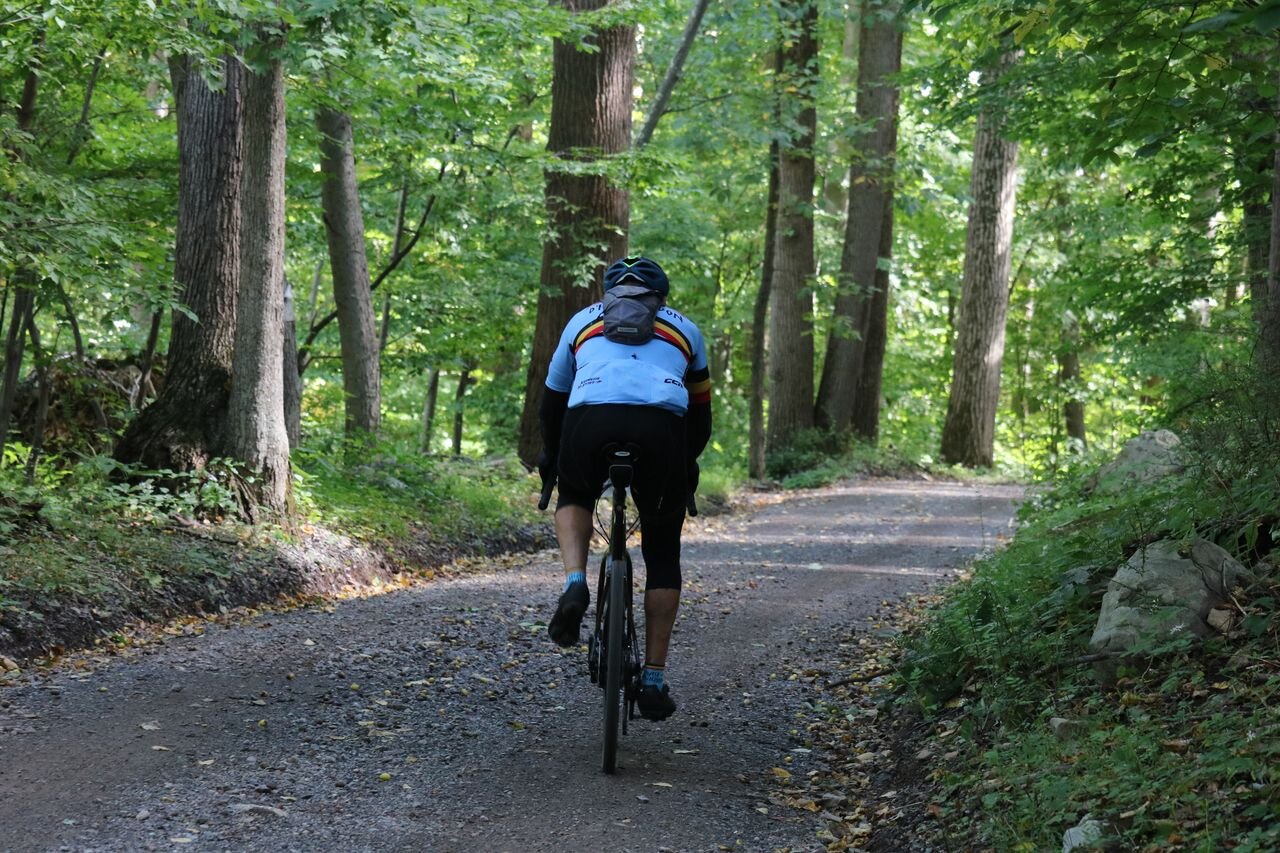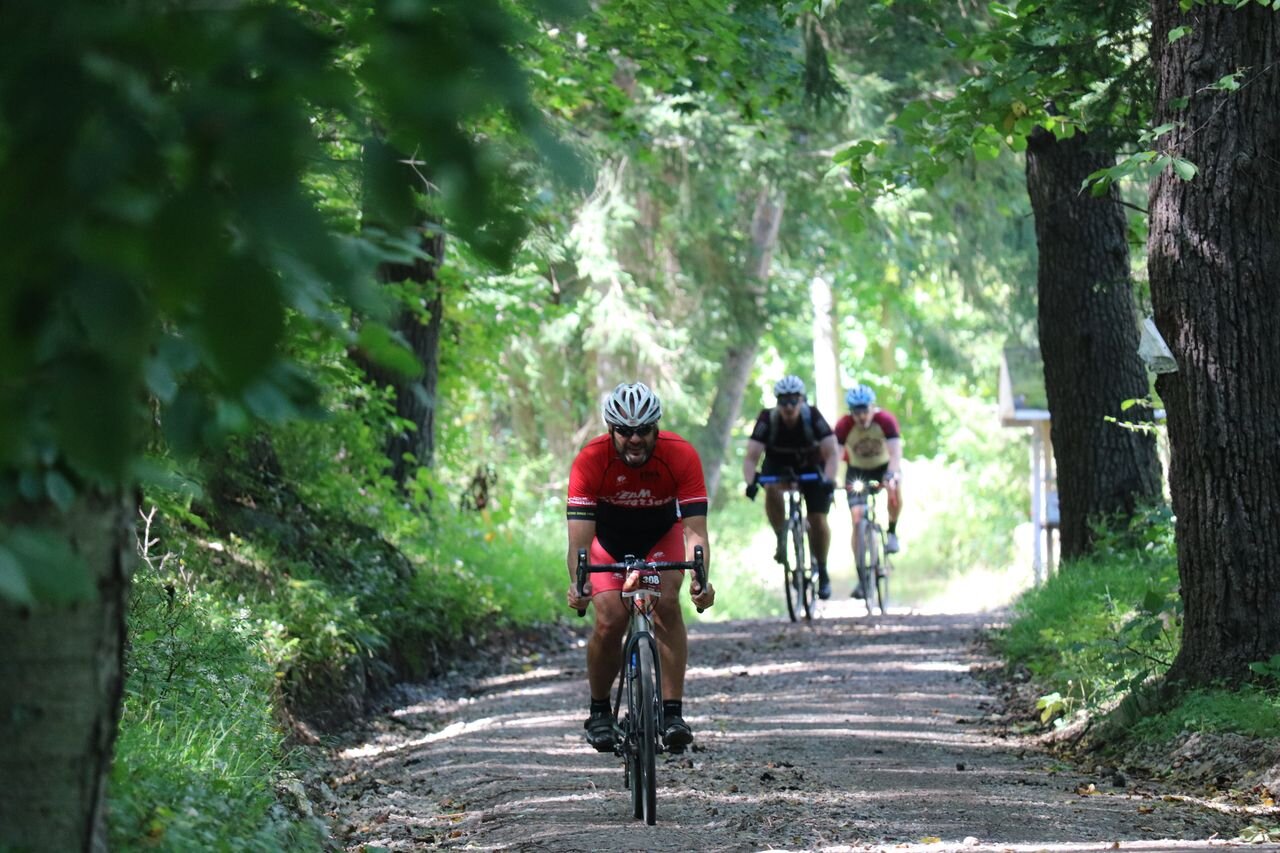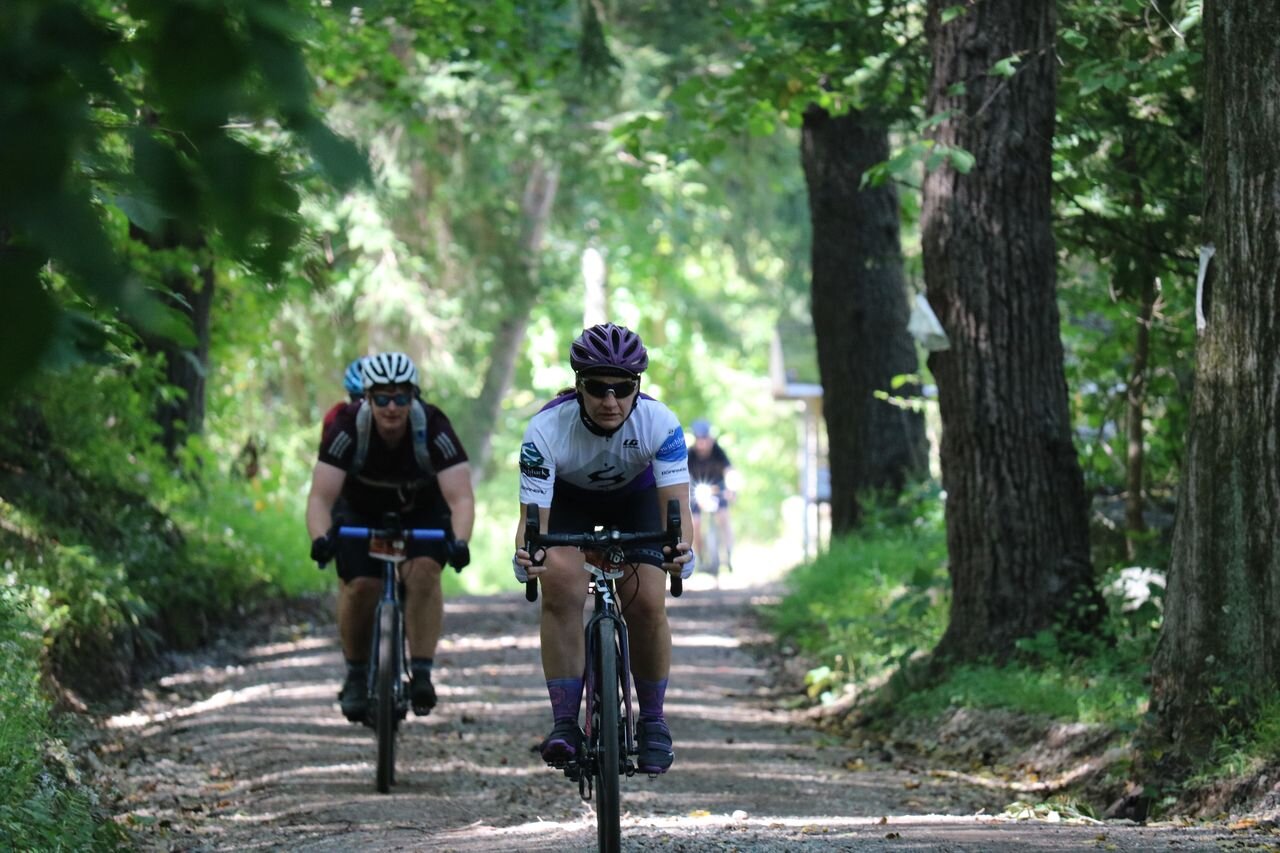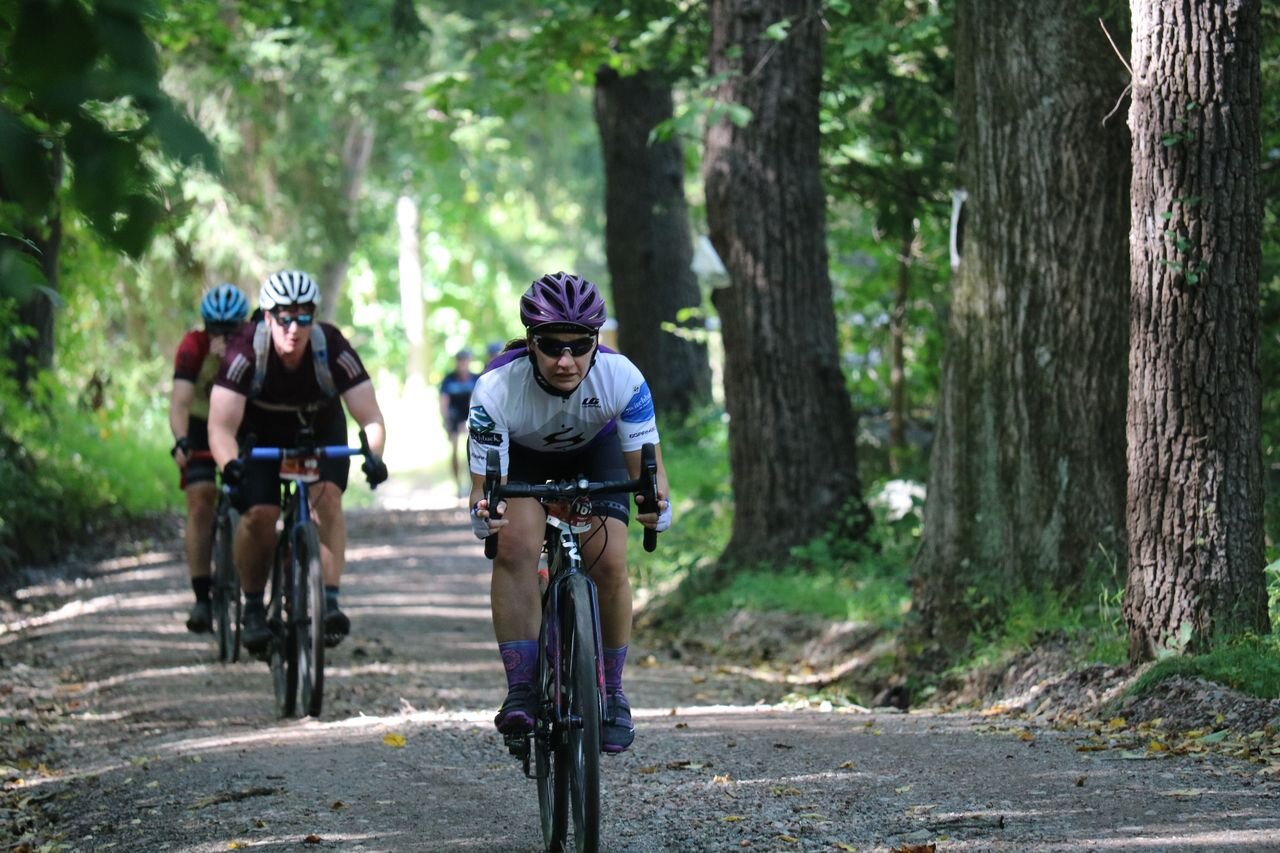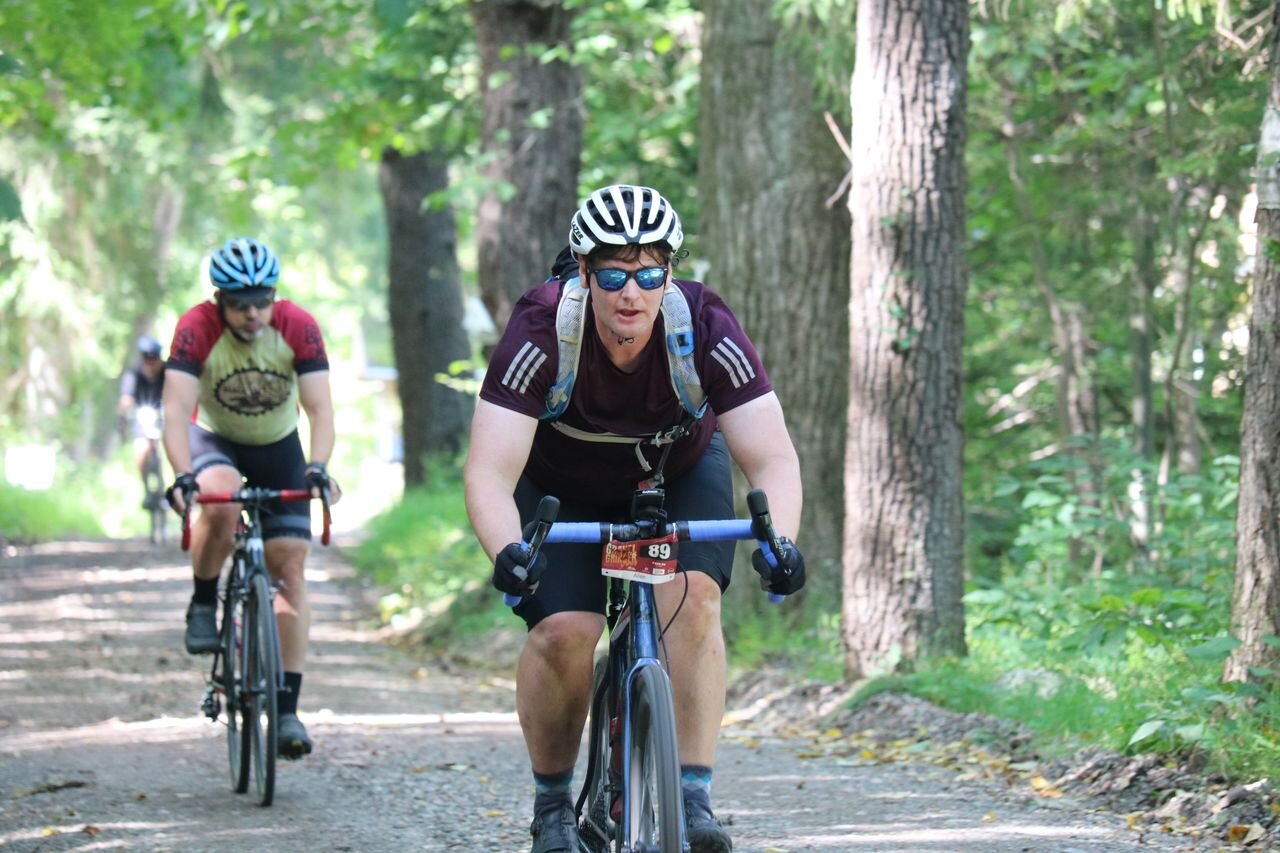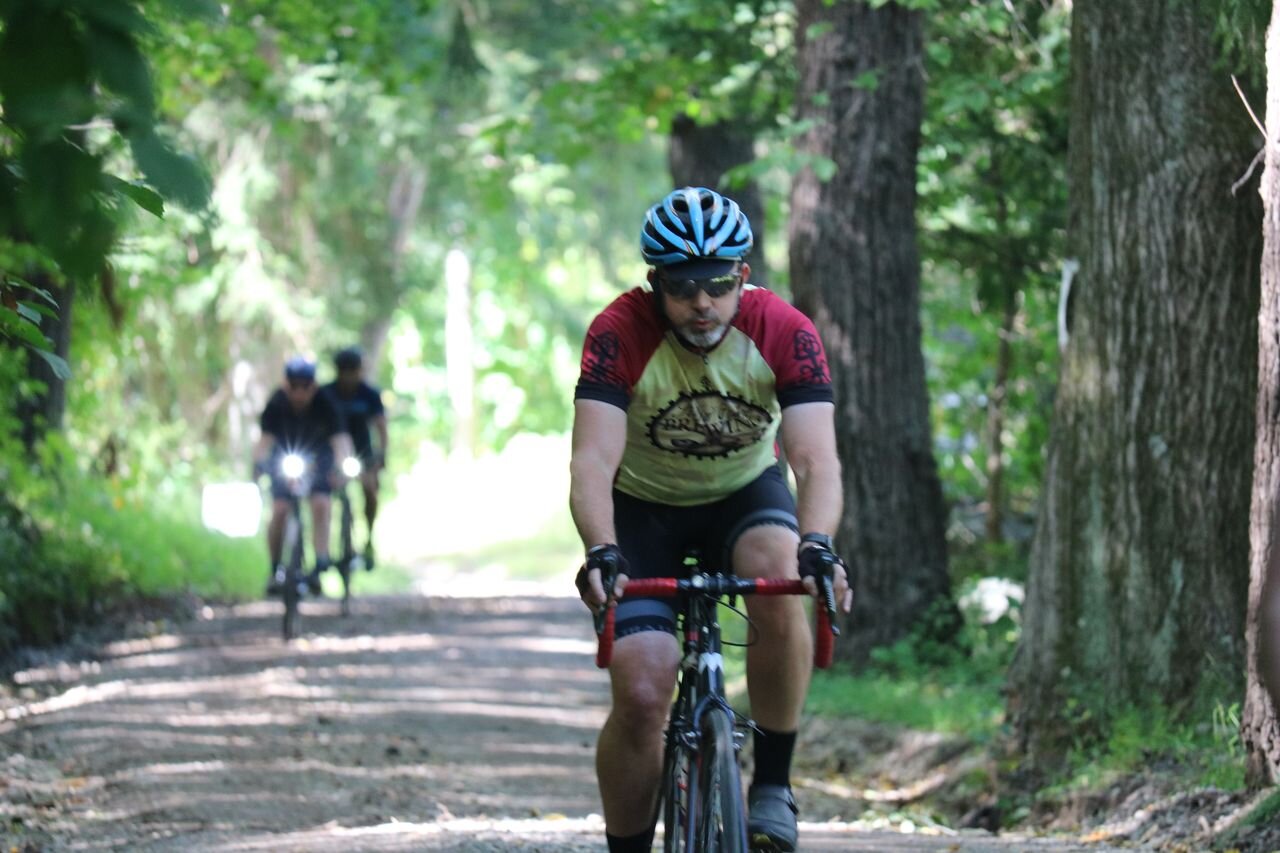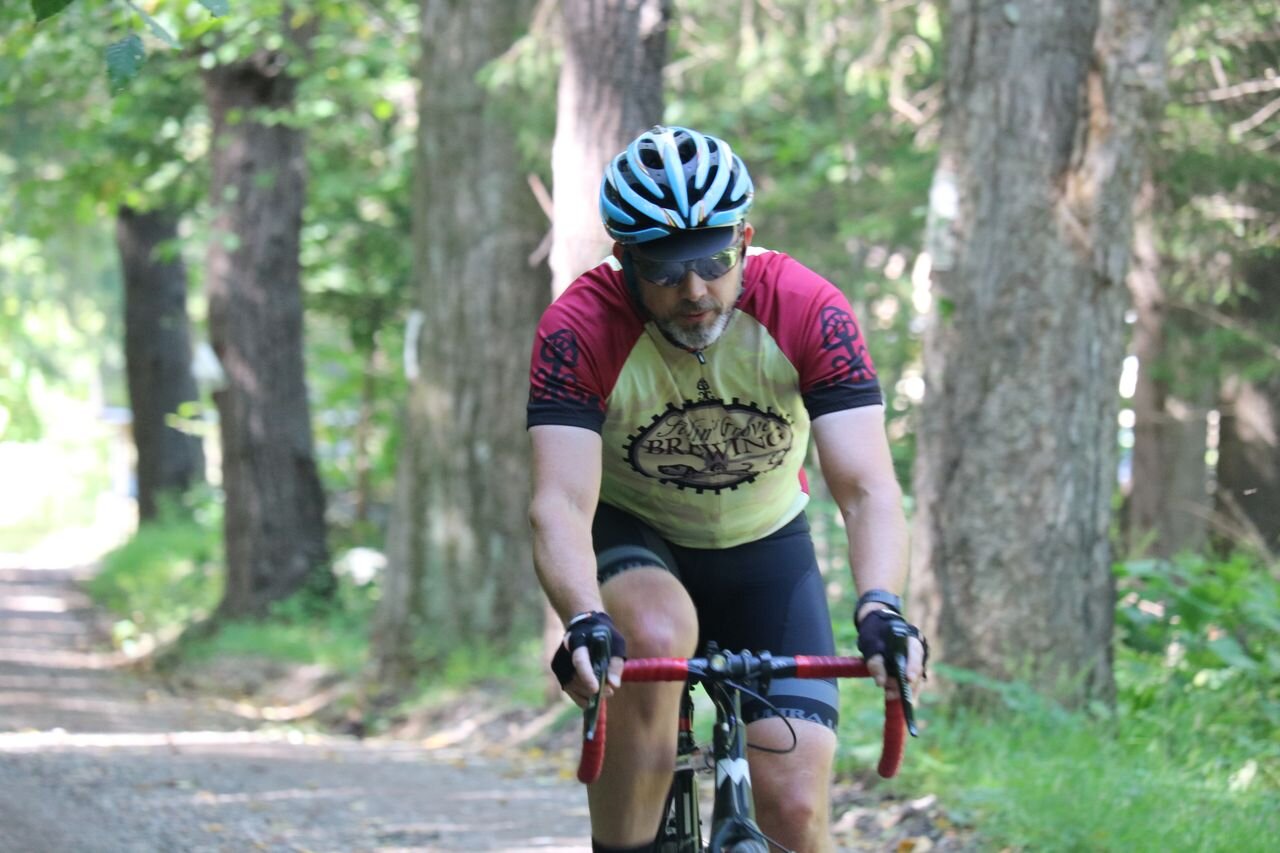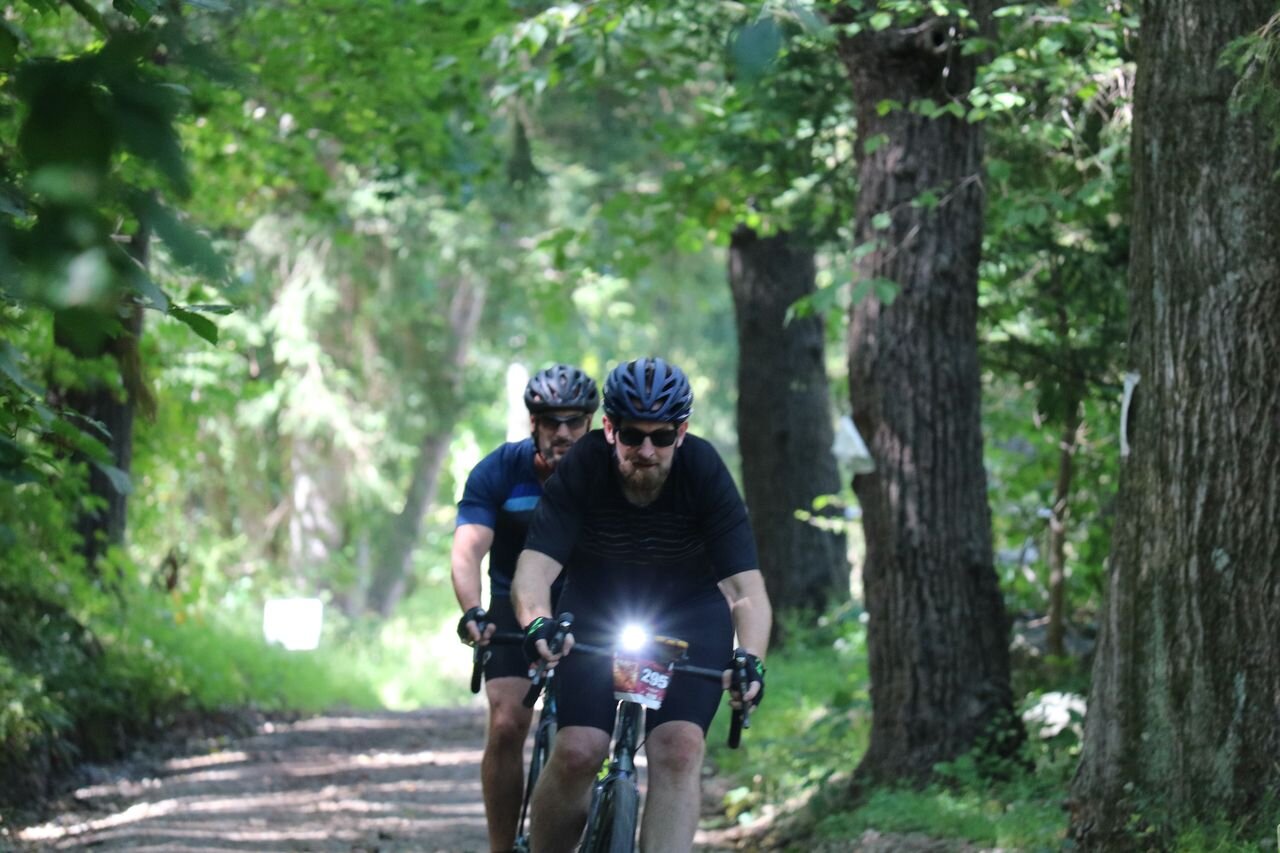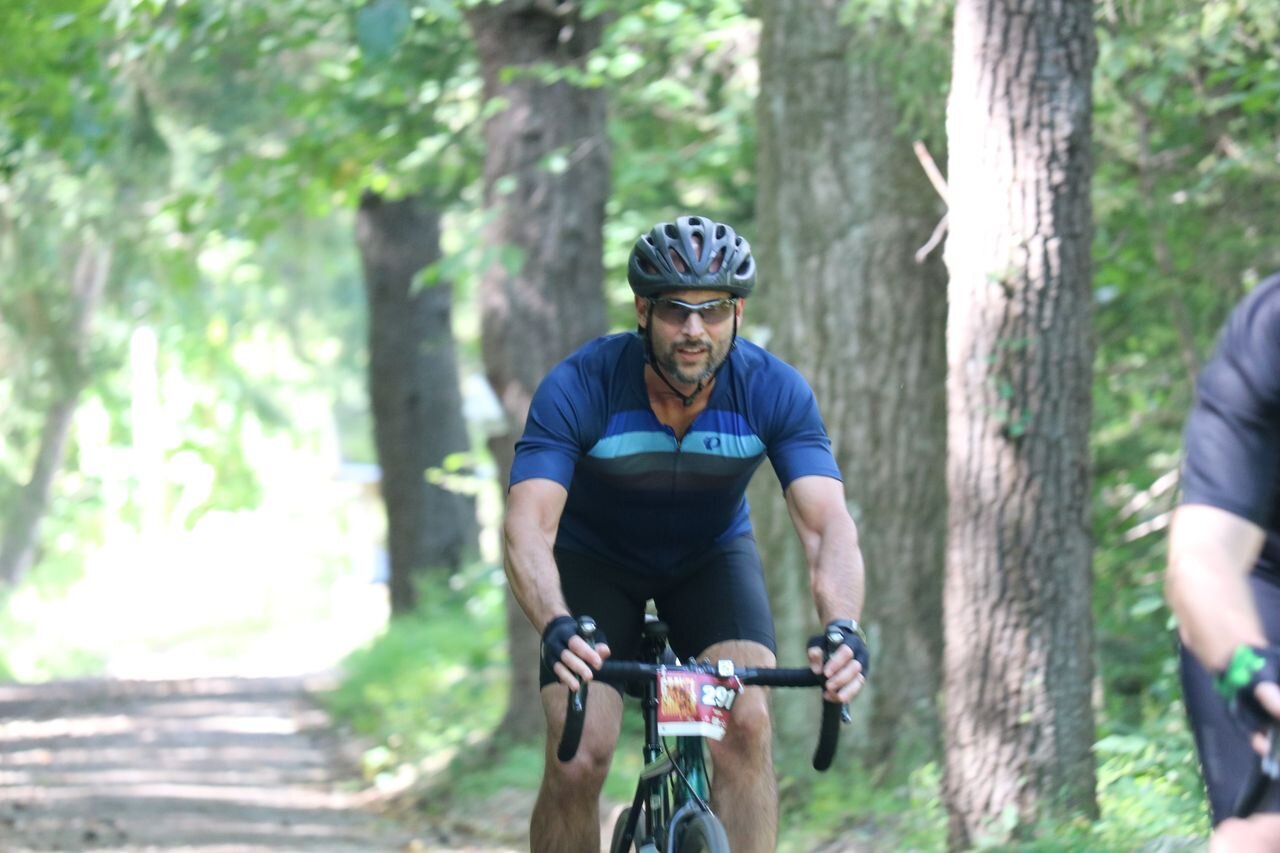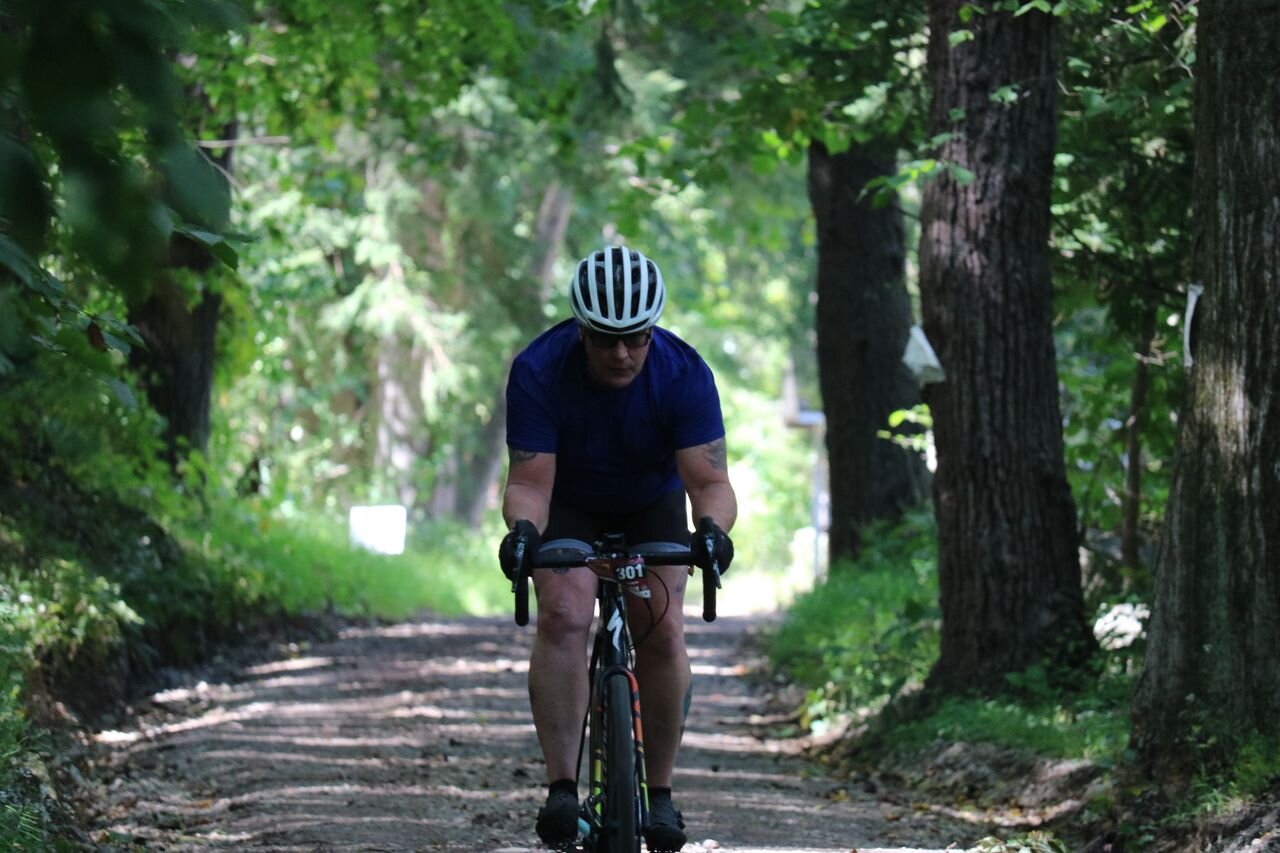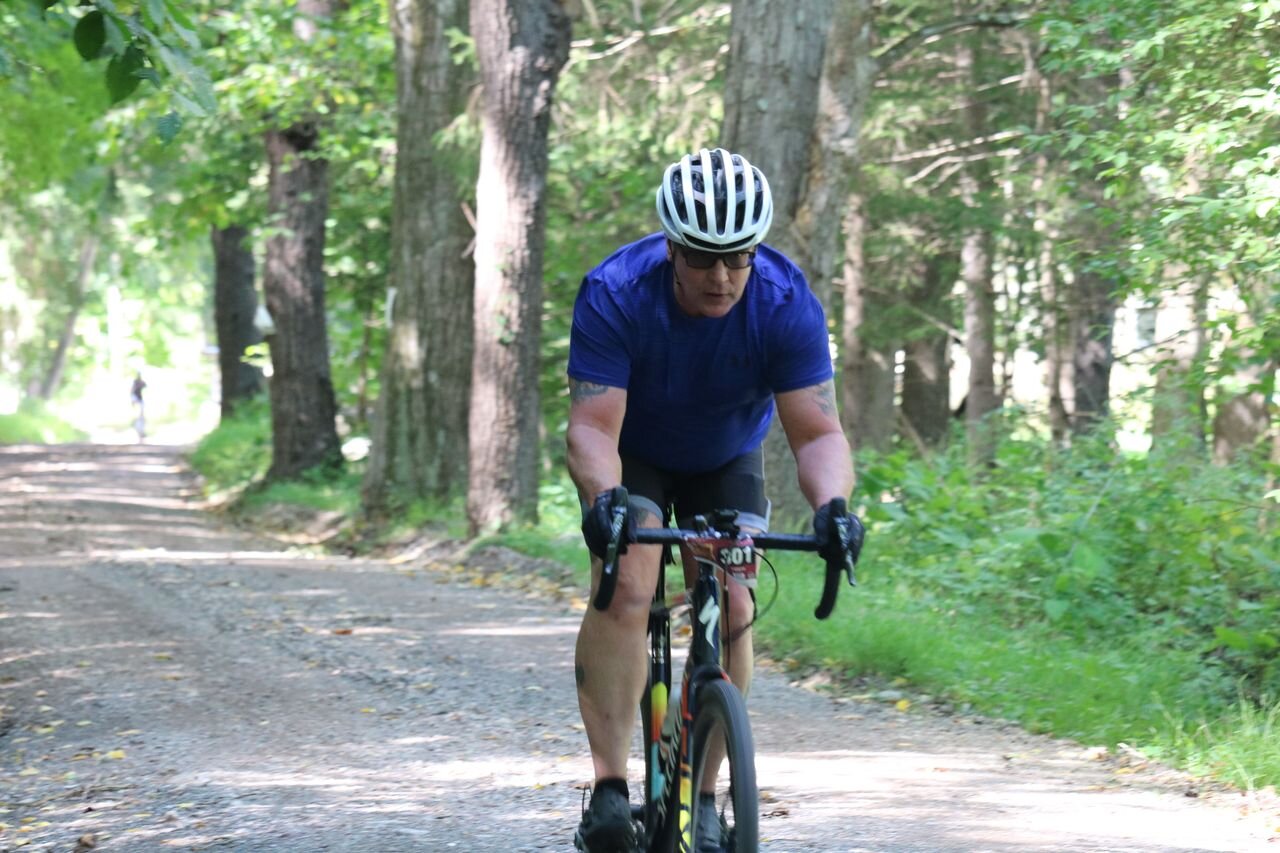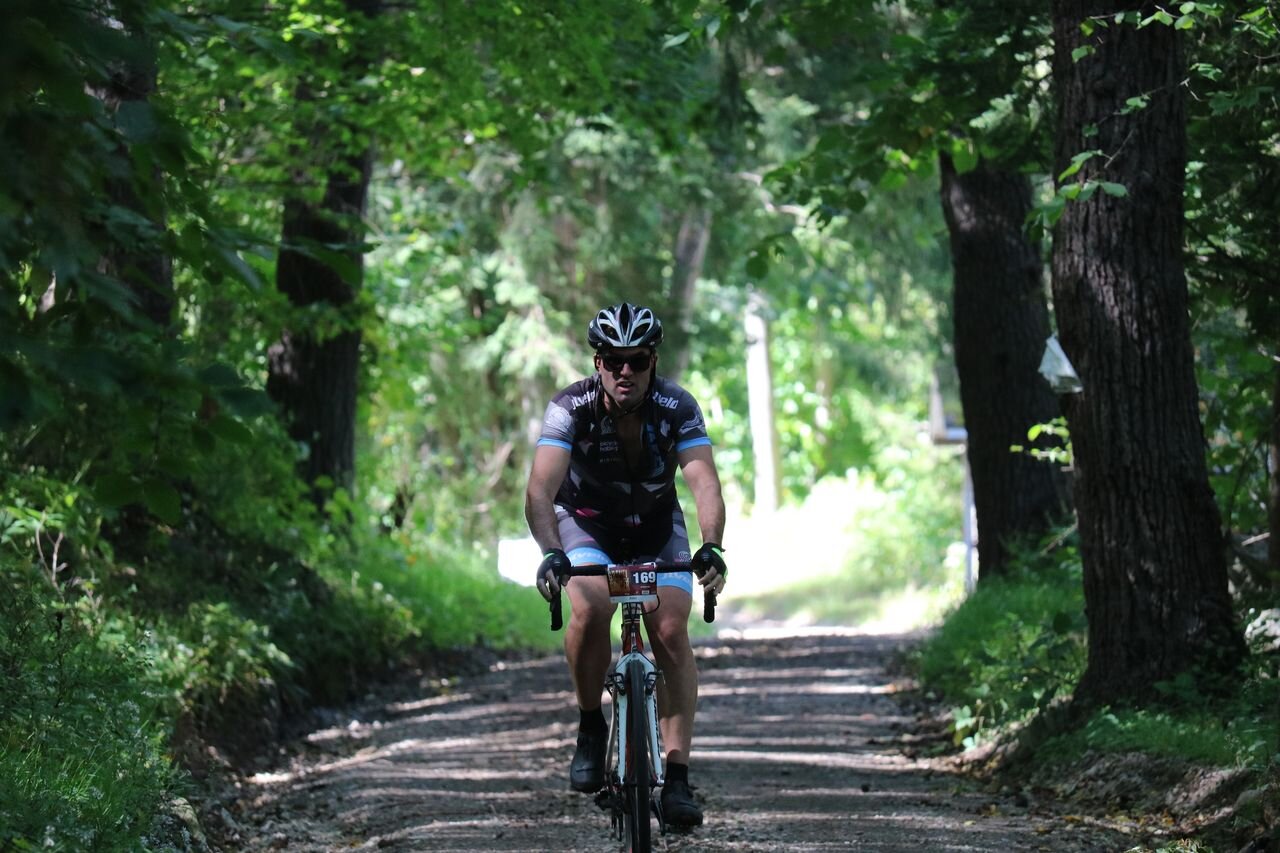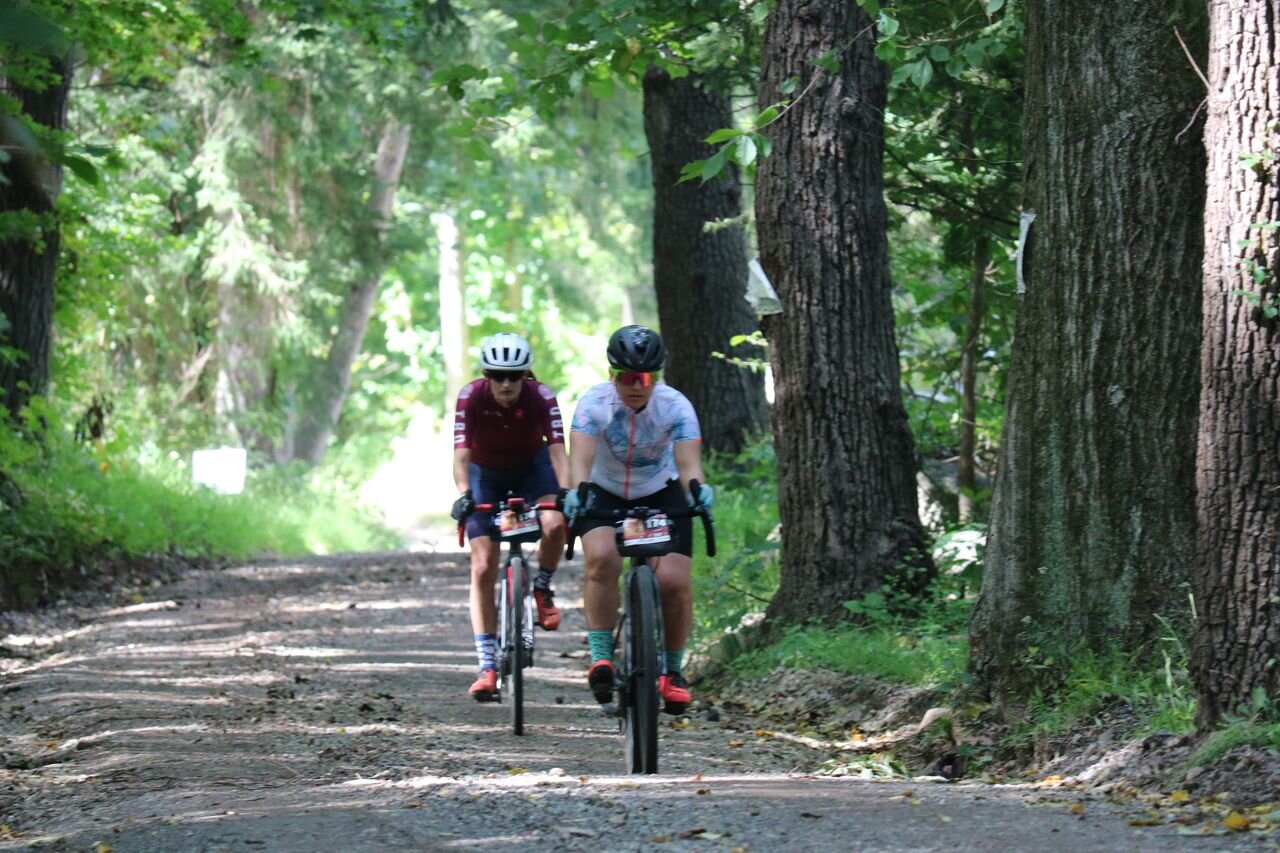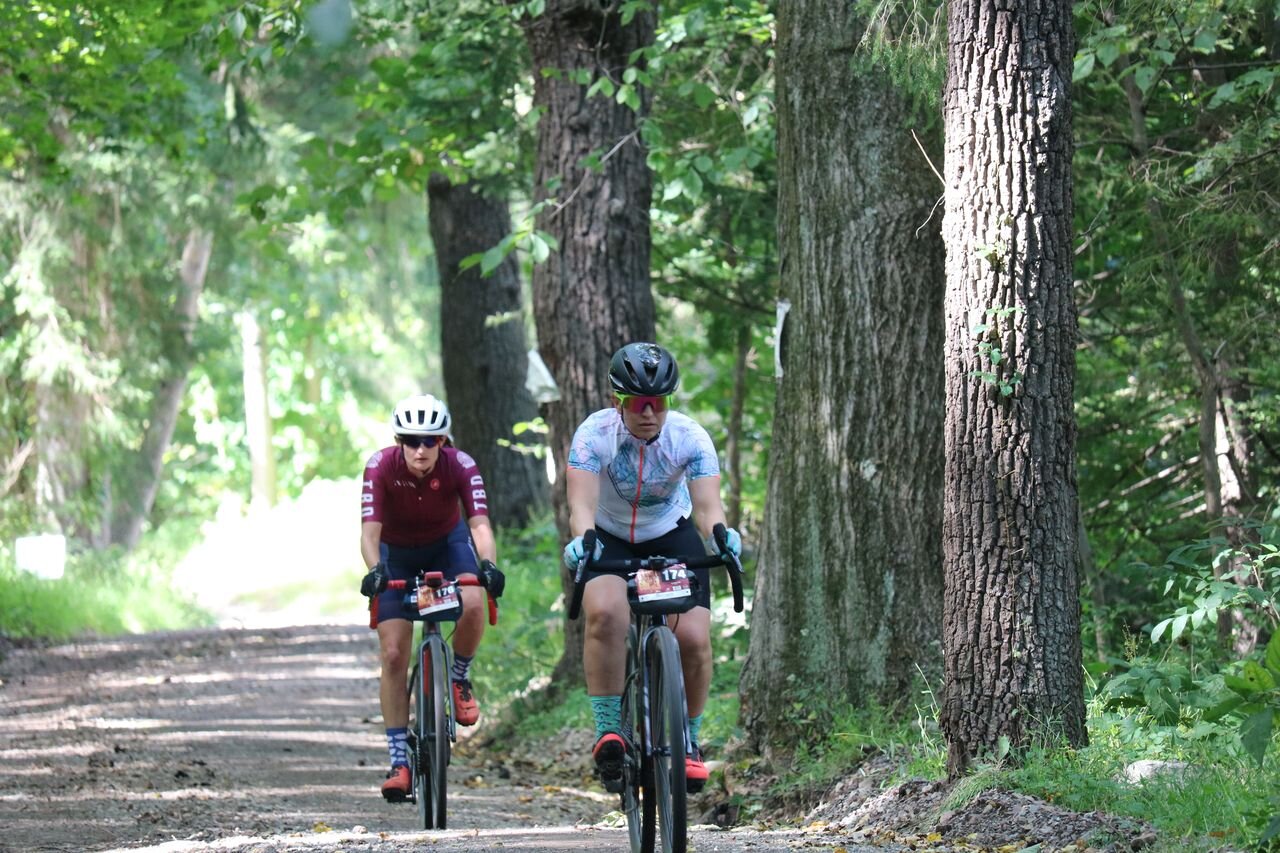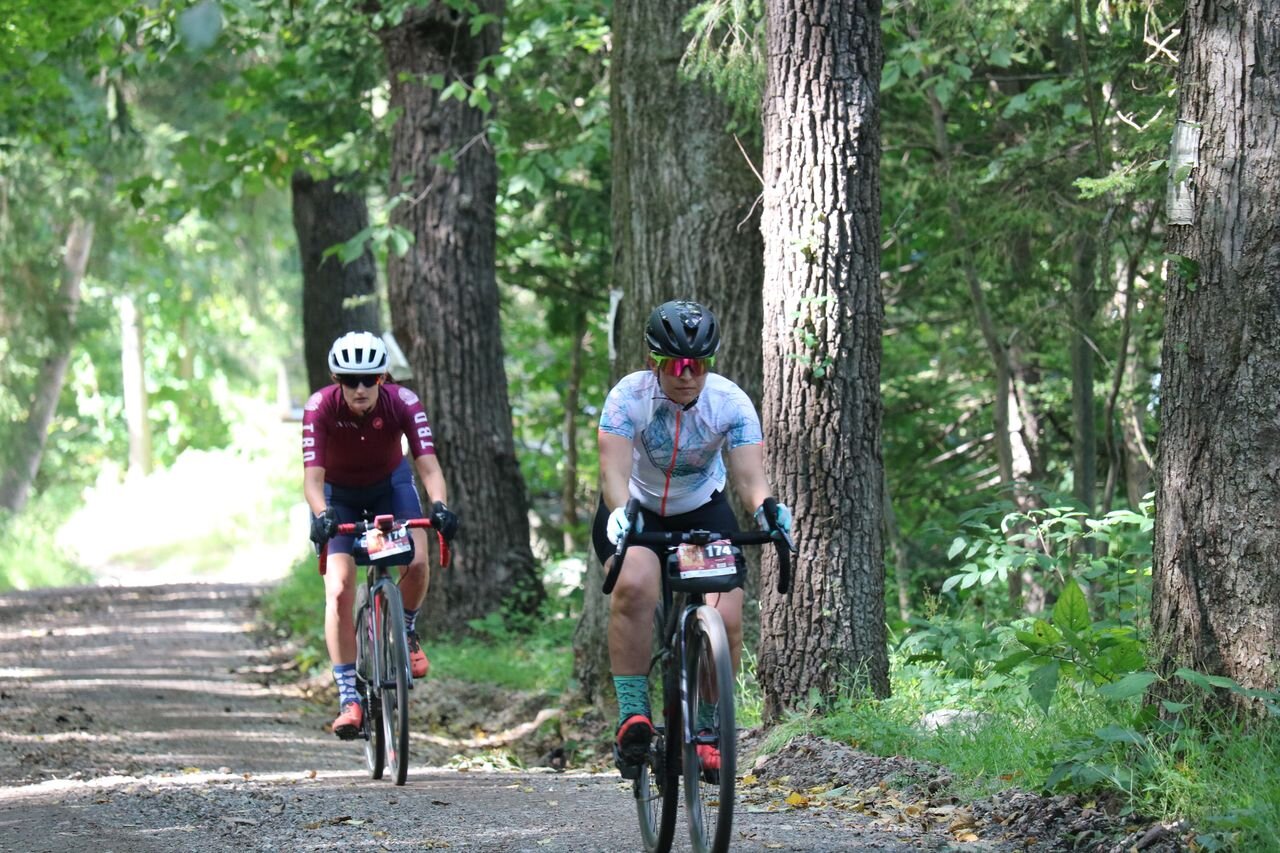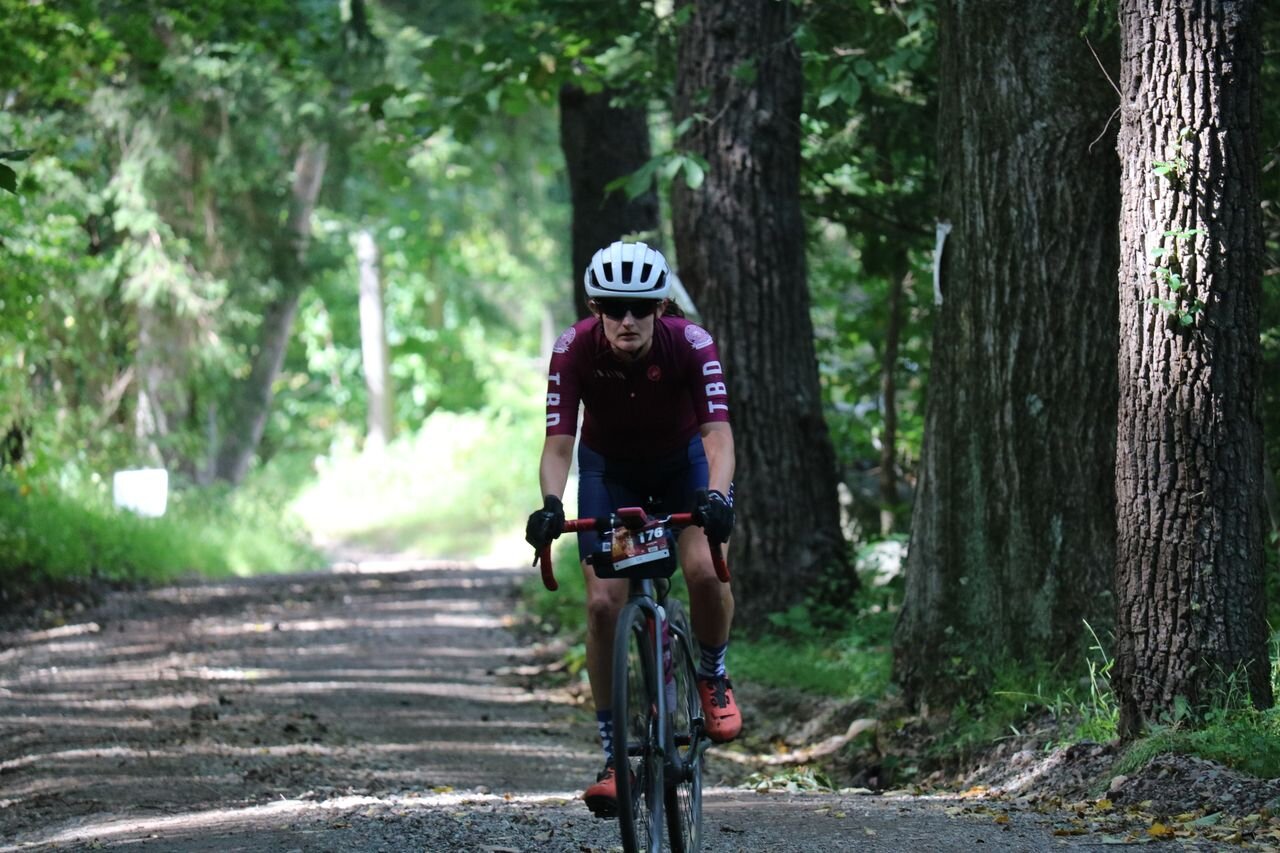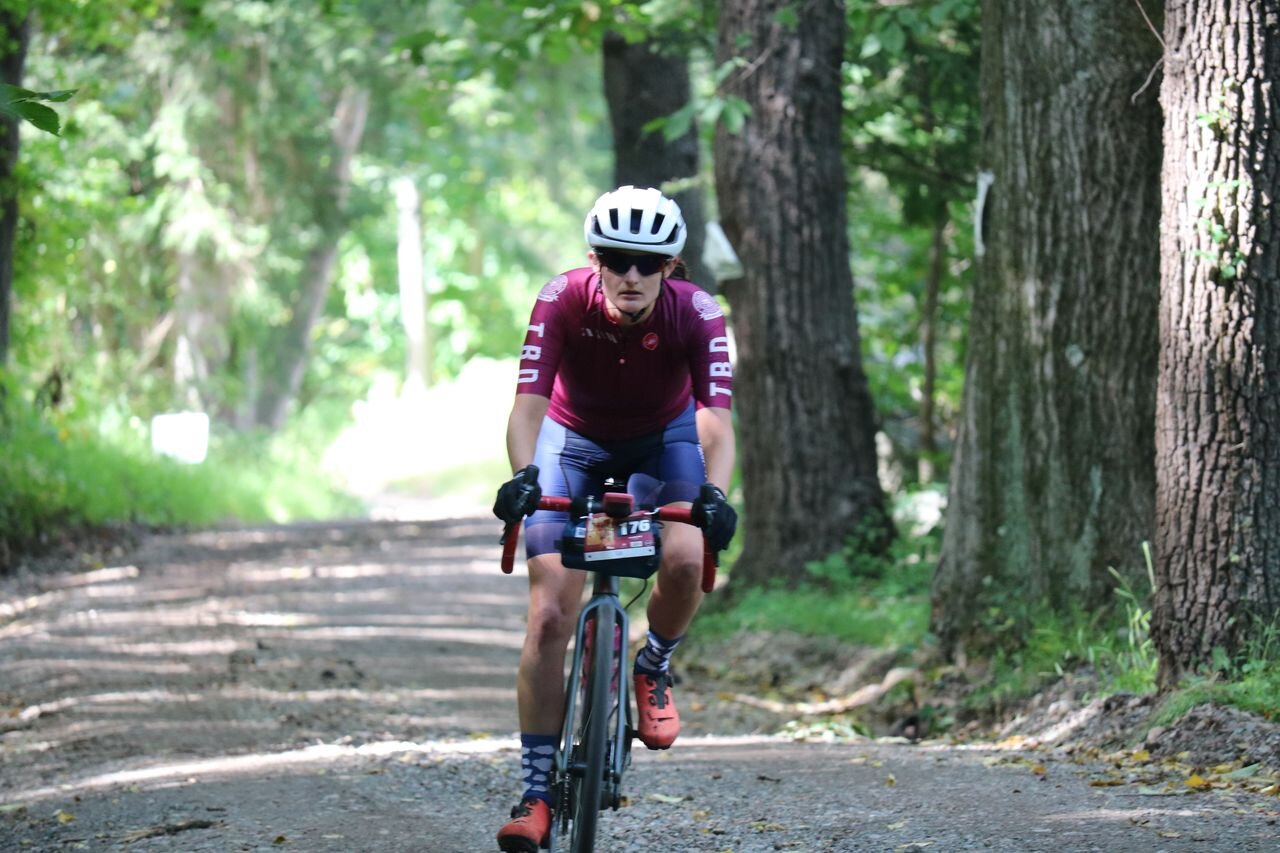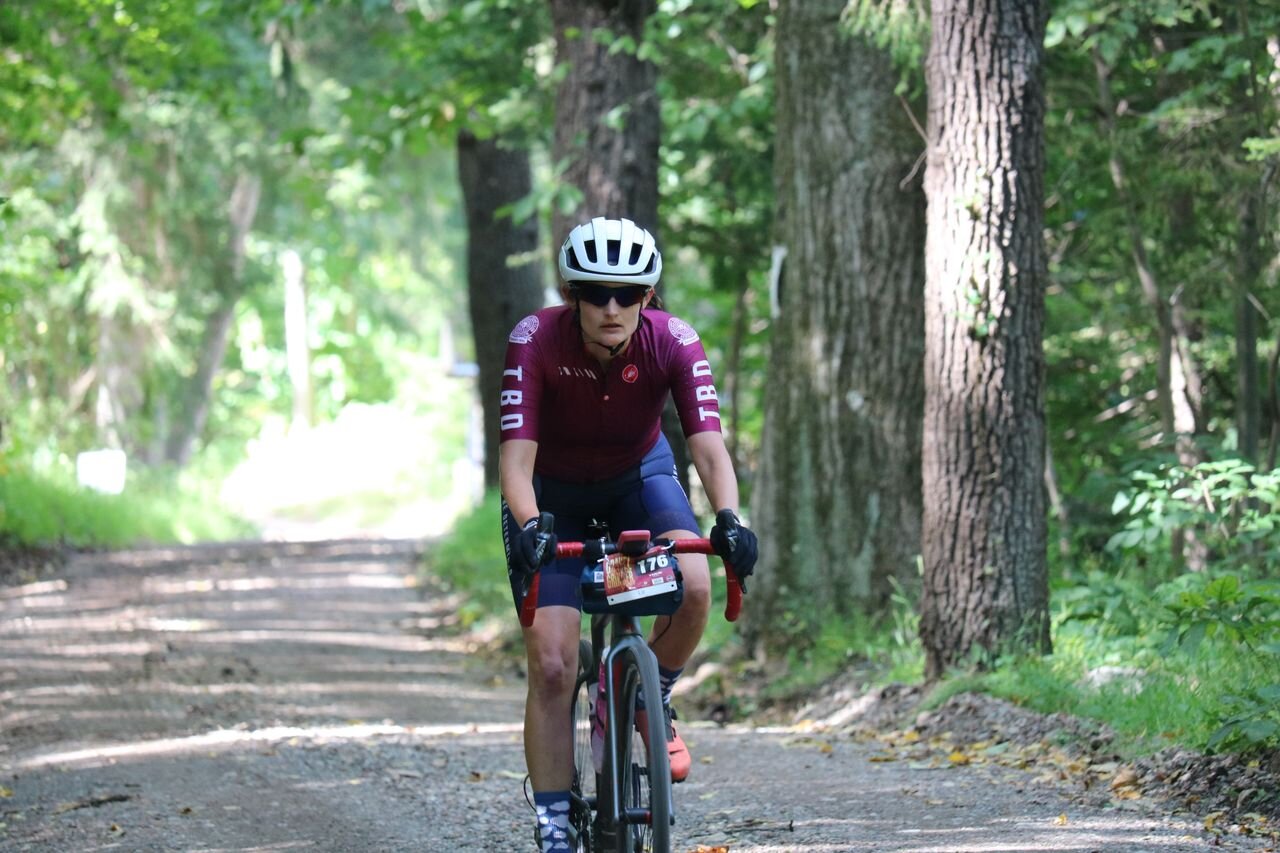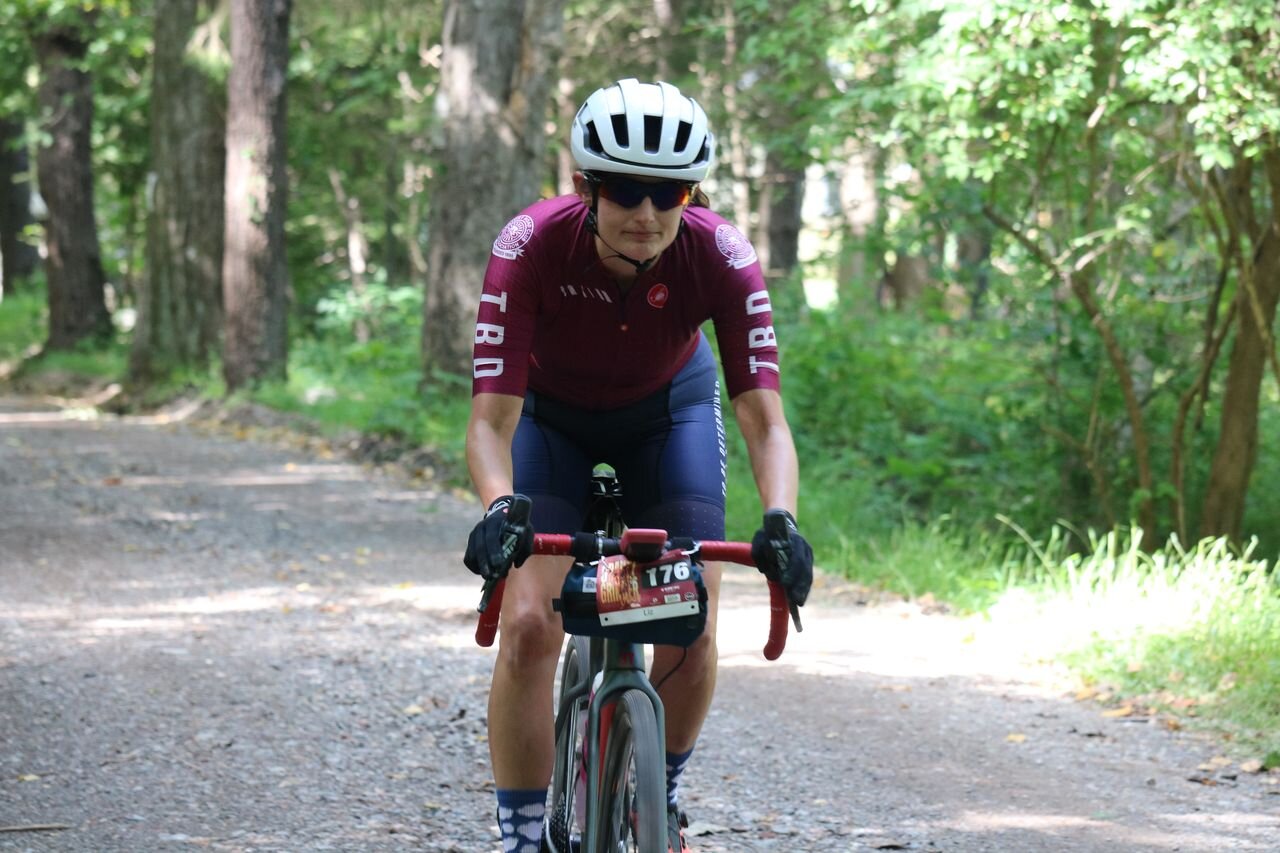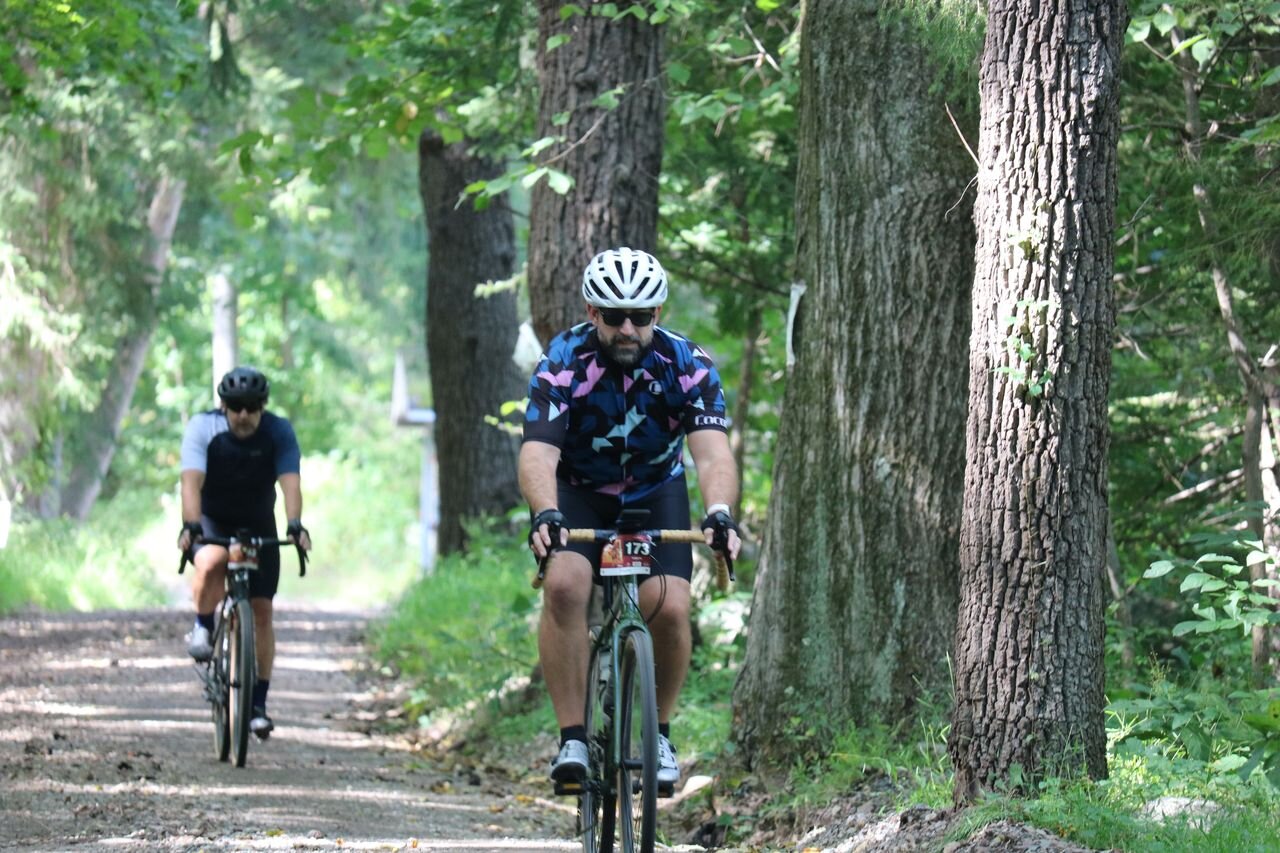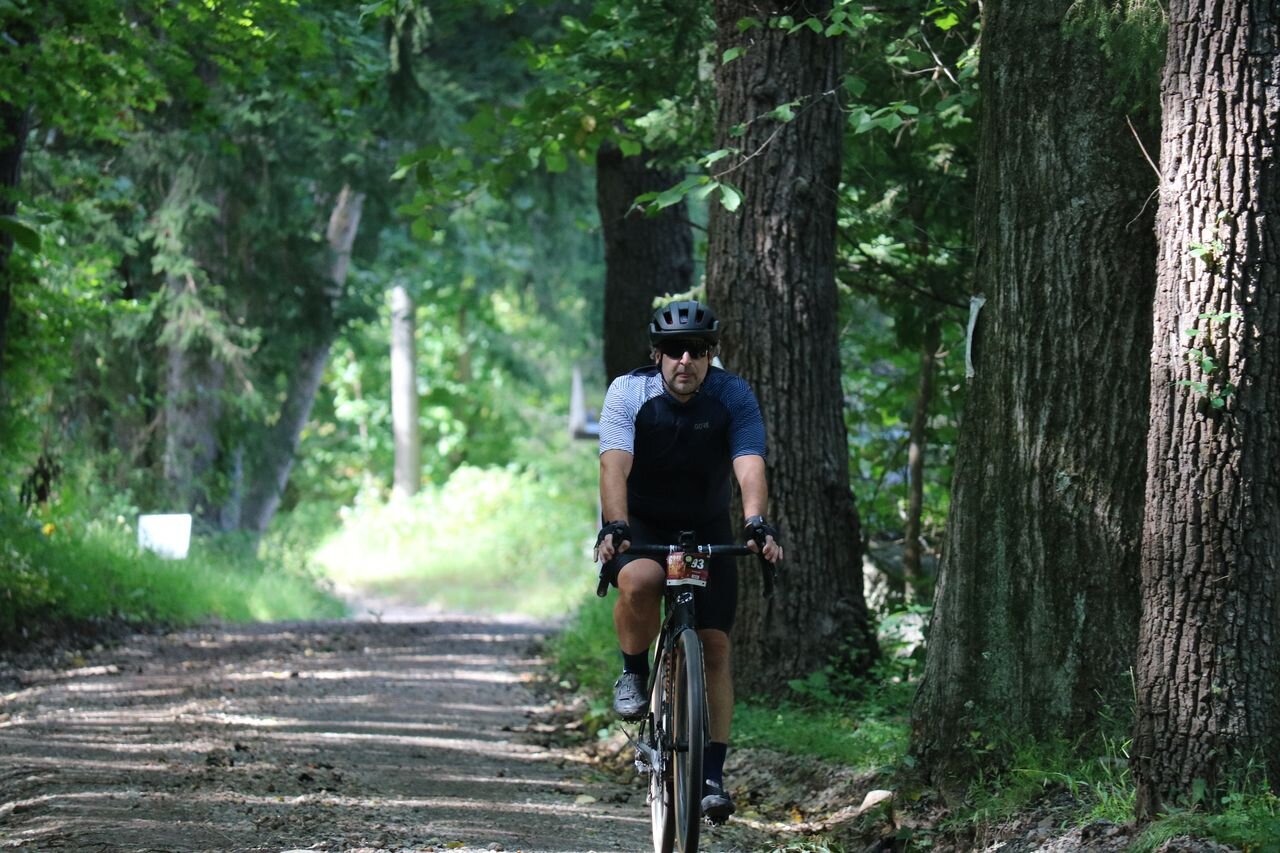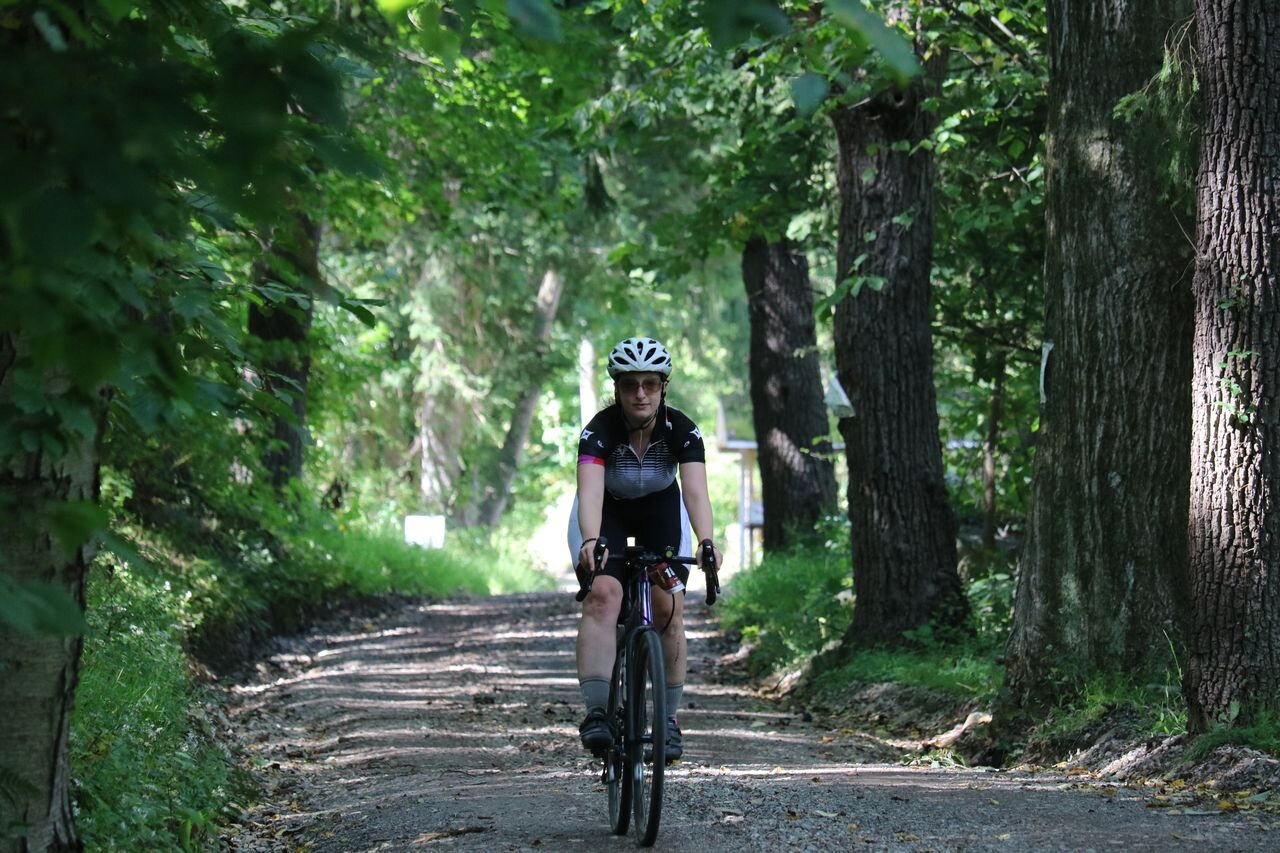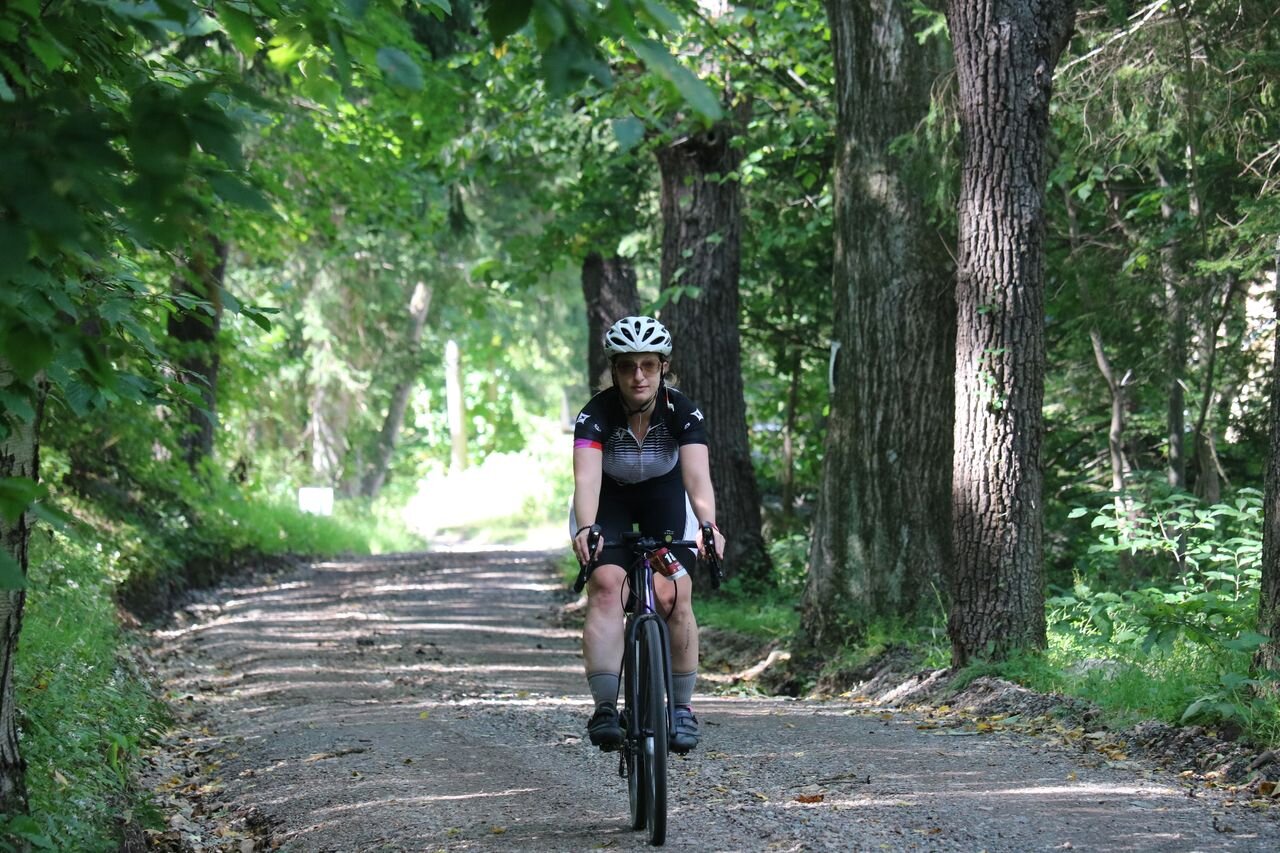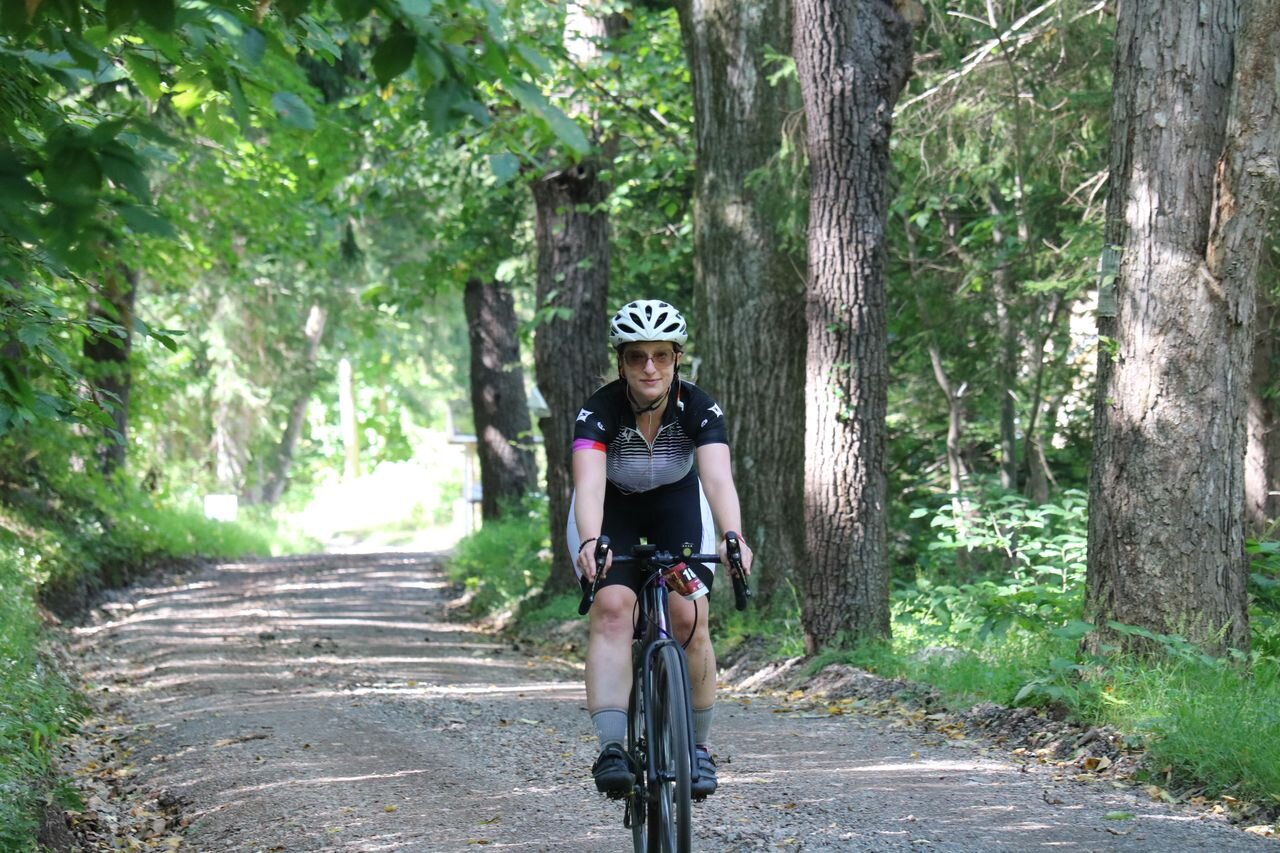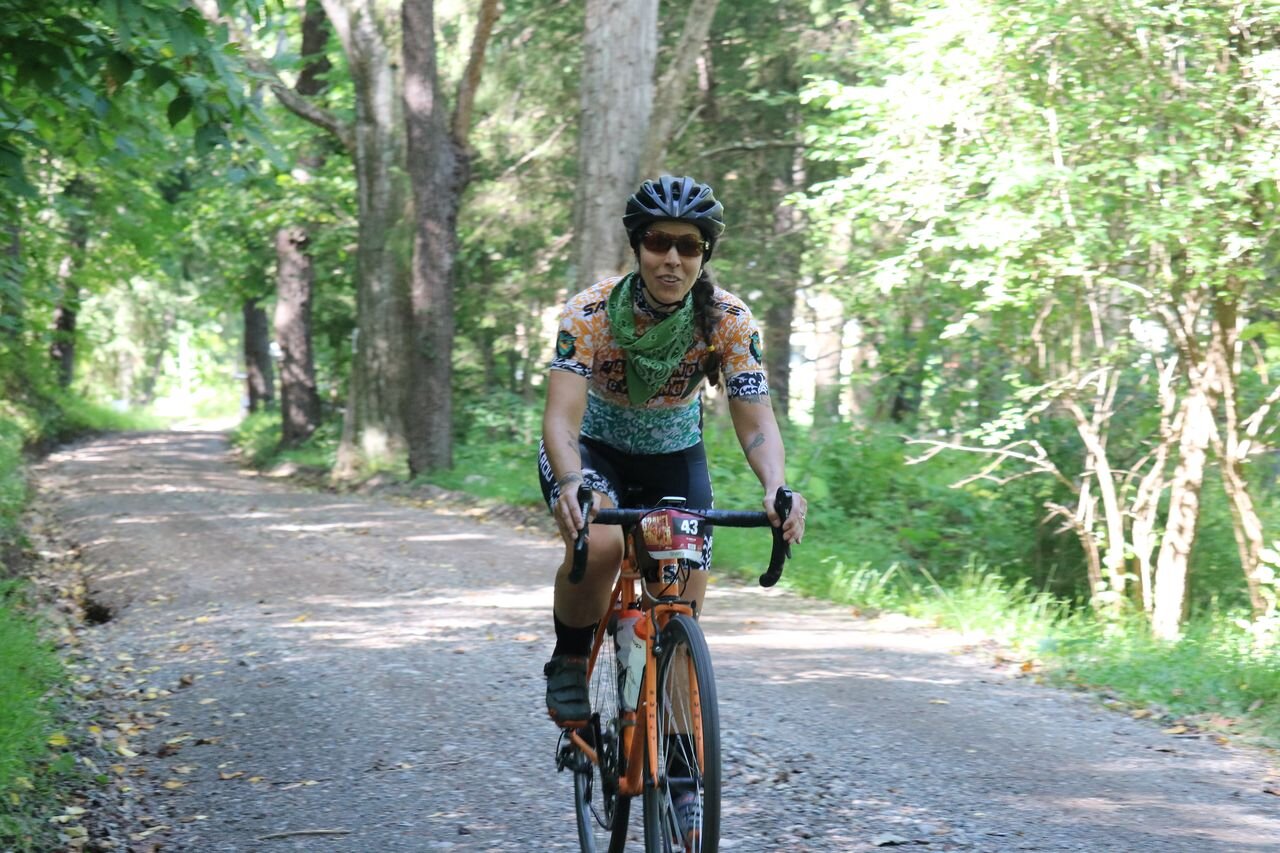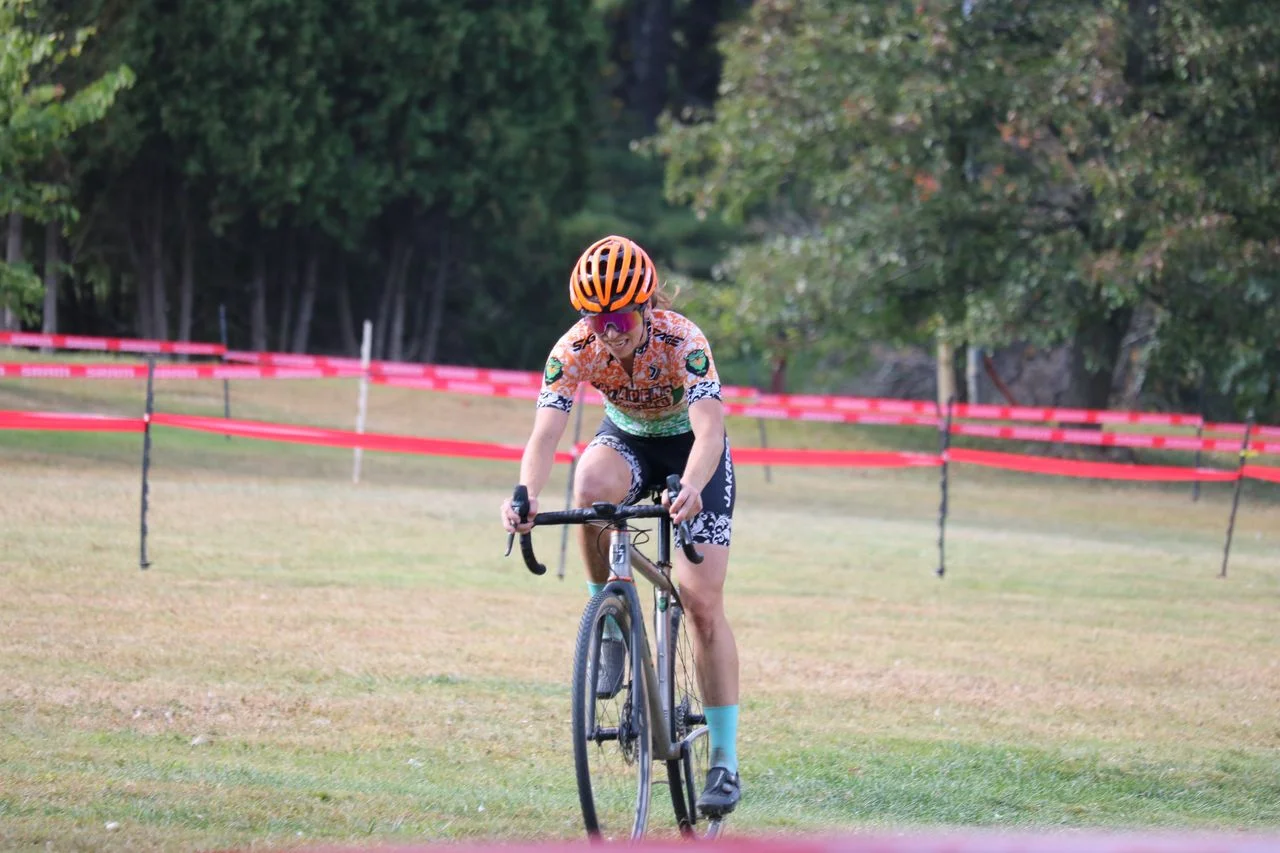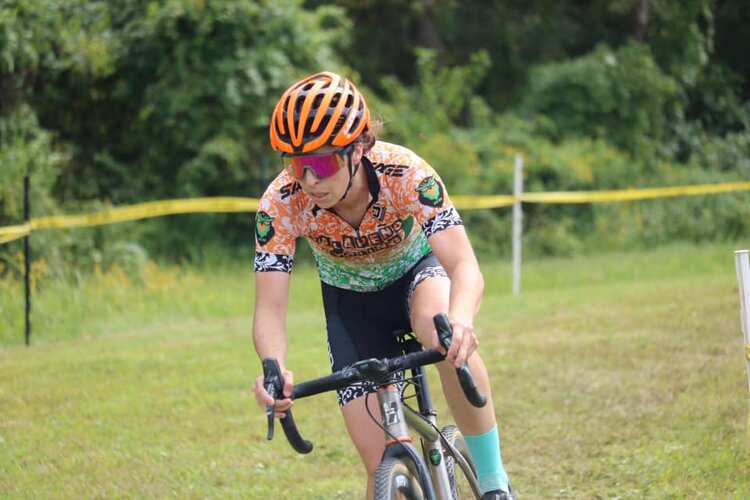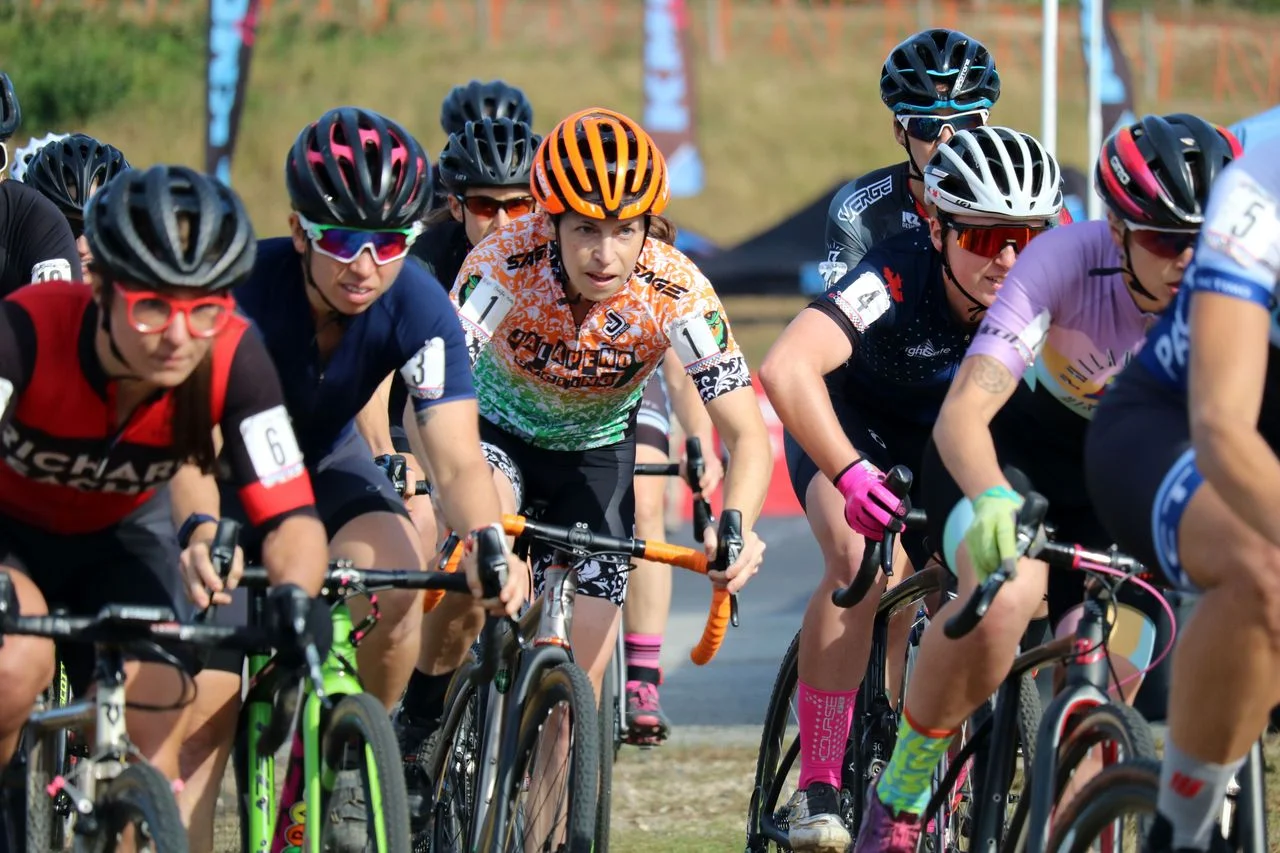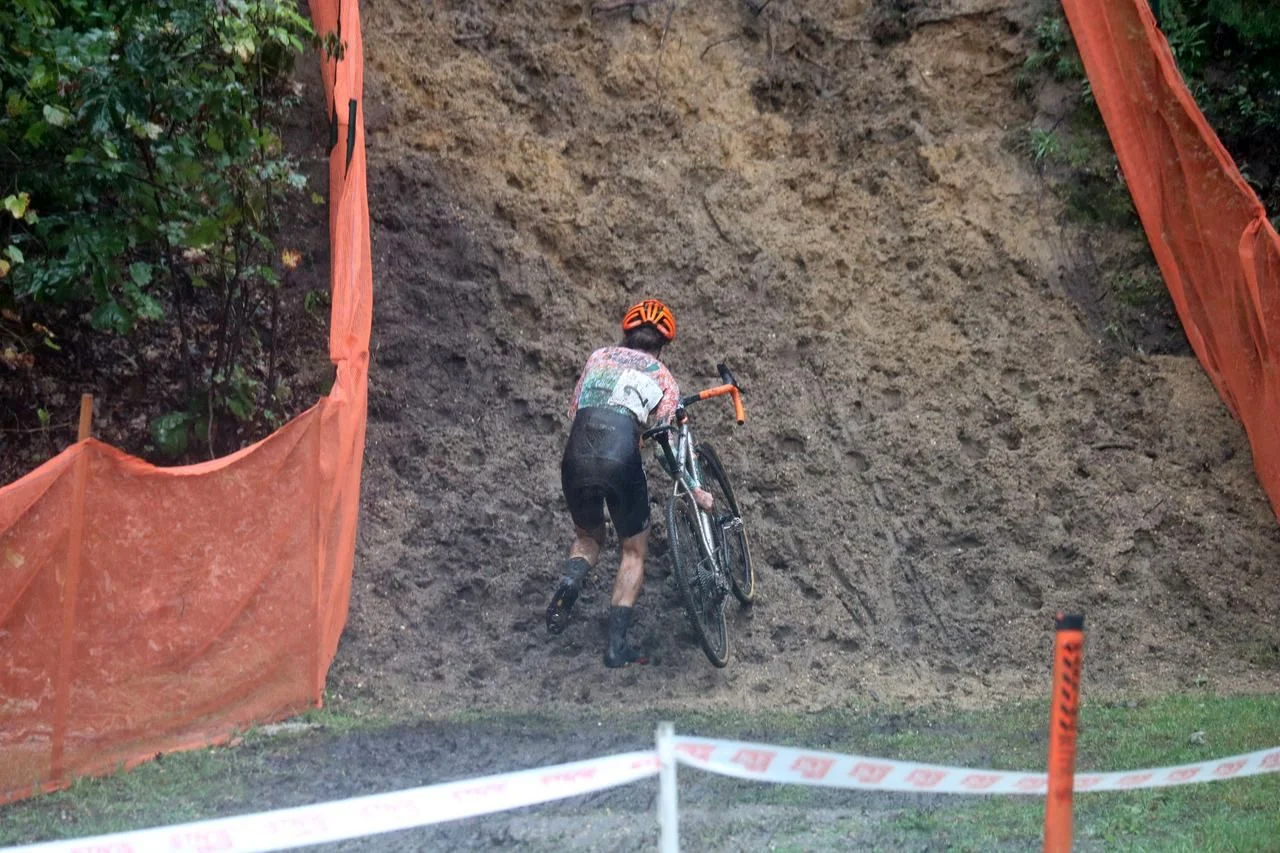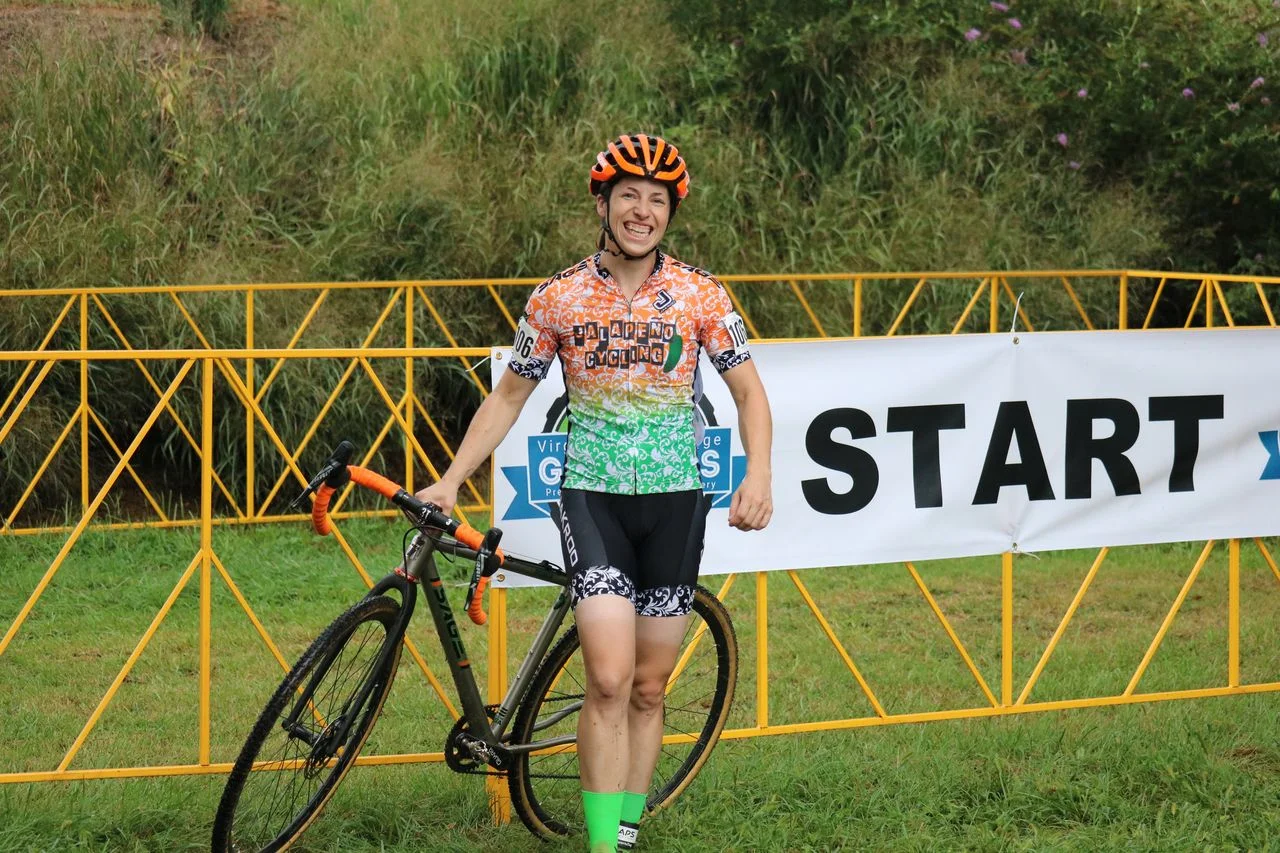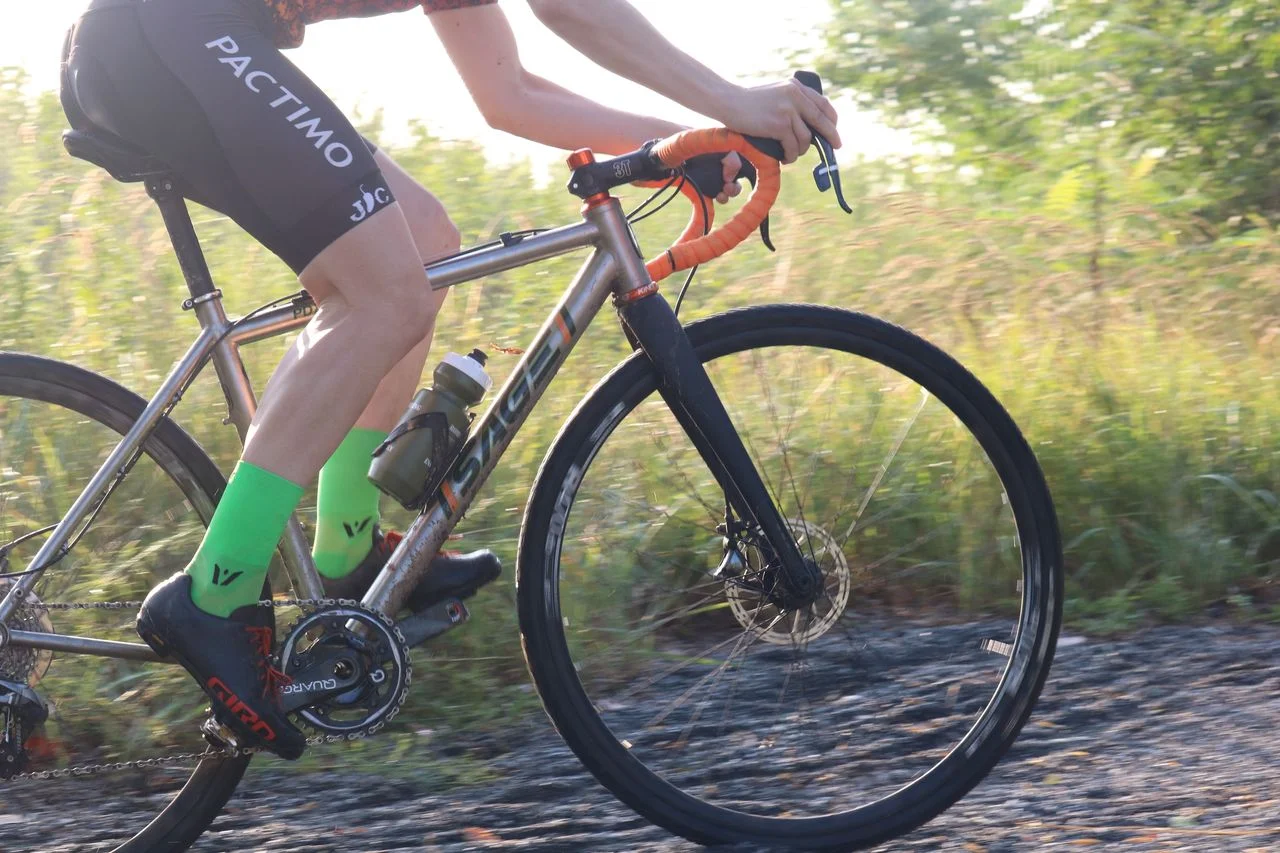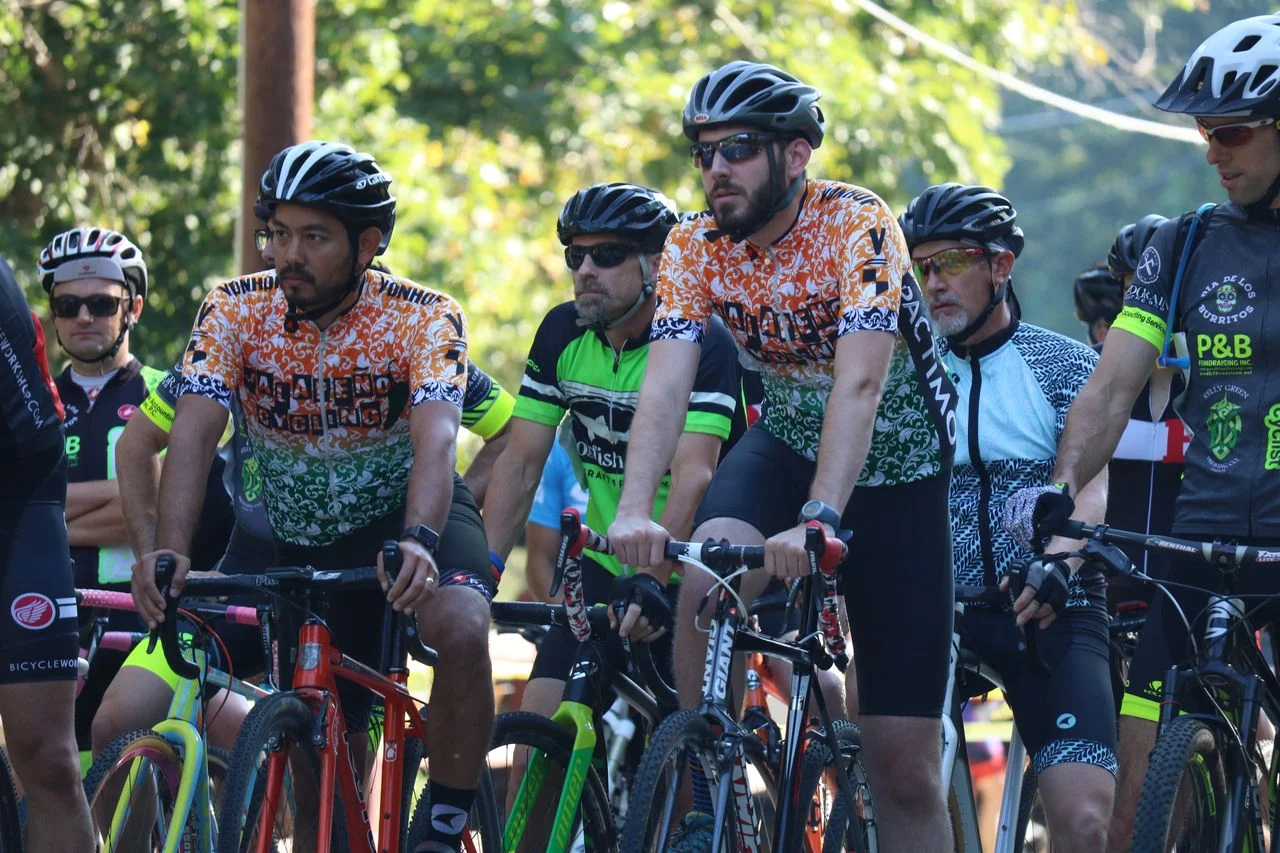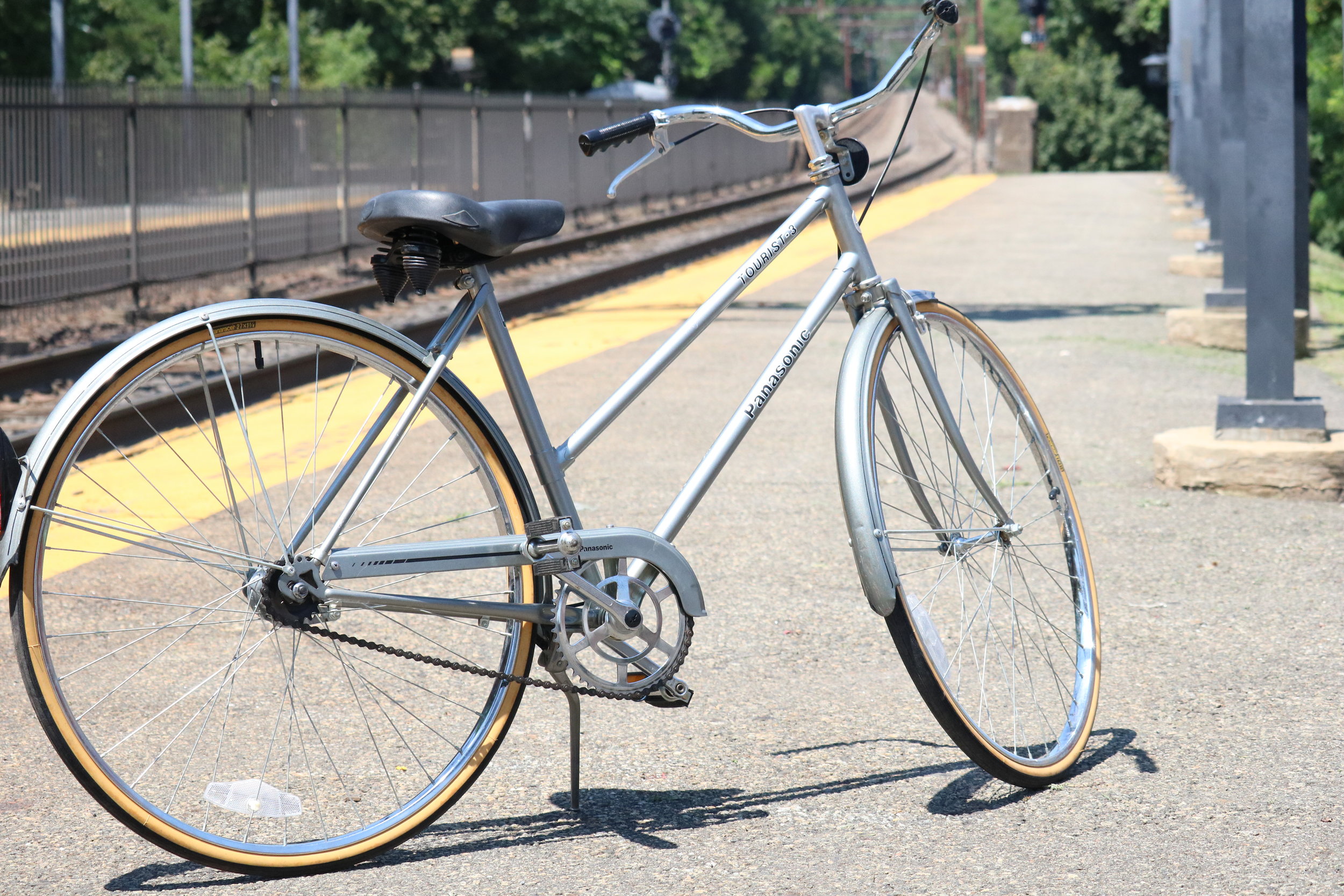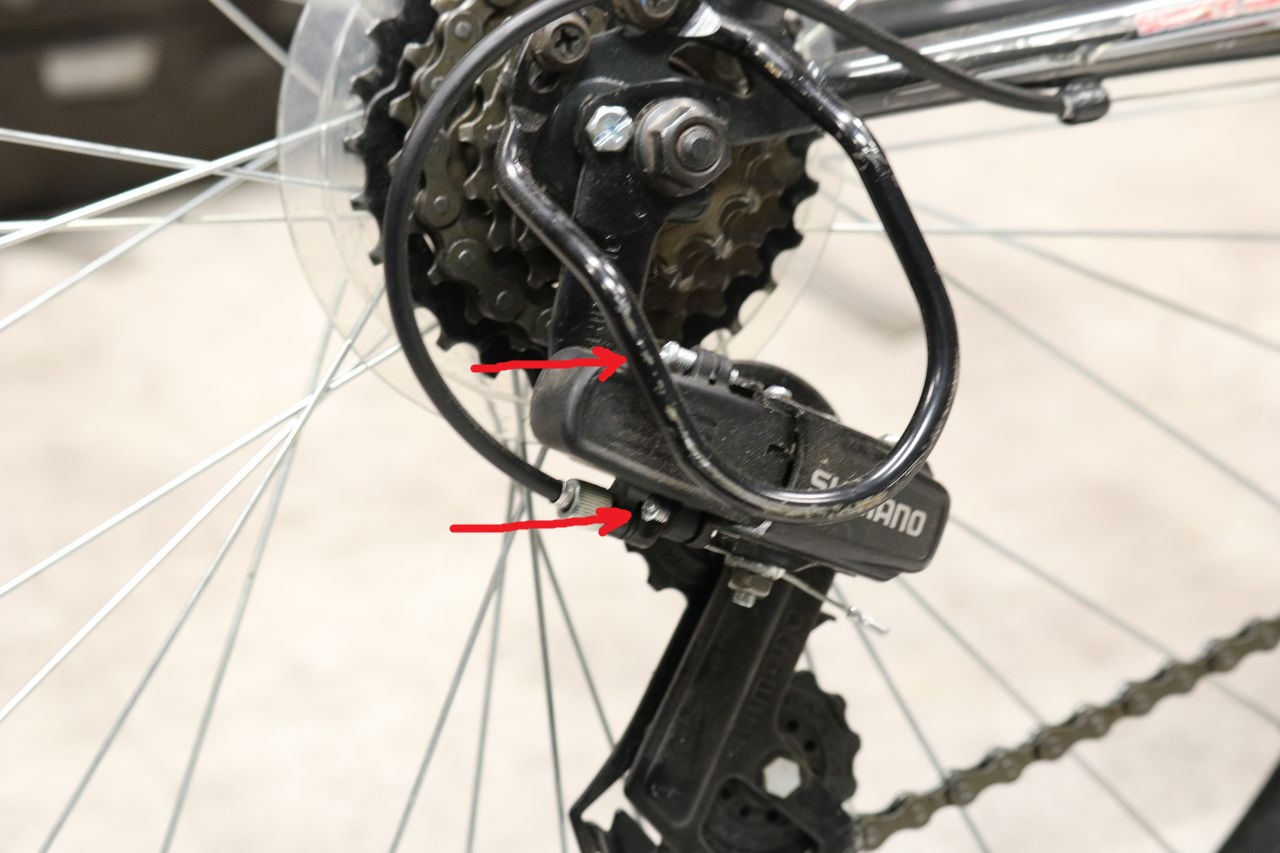Jalapeno Cycling ditched the mud and geared toward gravel racing this weekend for the Jersey Gravel Grinder Deux in Bedminster, New Jersey. Photos are from the halfway mark. One of the steeper gravel descents came after a punchy climb at Fox Hill Road!
Last Weekend at BubbleCross, Kathryn Cumming felt drained from a near week of hiking in Colorado, and had to pull out 45 minutes into her first ever 60 minute Women’s Elite Race. While it’s easy to get caught up in not feeling like your legs are in the right place in cycling, Kate wanted to look forward to future events. This weekend, she was recovered enough to take on Cooper River: a race that Jalapeno Cycling had never been to before. Despite being hit by a major storm and needing to have loads of volunteers clean up the course that morning, the race was a blast, with the Women’s Elite Field turning into a full on drag race for the full duration. Today, Kathryn Cumming looks back at Cooper River along with what makes the current Cyclocross Community so special.
by Kathryn Cumming
After a tough day at Bubblecross where I was pretty exhausted and getting sick, I was excited to be feeling like myself again heading into Sunday’s Cooper River Cross race. We had a pretty stacked field of Elite Women and I knew a fun battle was coming.
The course was fast with quite a few corners and not much climbing. Knowing our field was competitive and there were not a lot of opportunities to open up big gaps, there was a good chance we were in for a day of group racing.
A course like Cooper River provides a challenge for the Elites to take the corners at speed and attempt passes, but it also offers a welcoming environment for new racers. The 4/5 fields were big with a lot of first timers coming out from Philly. Overall, I’ve really been enjoying the positive energy around the Mid-Atlantic Cyclocross series races this year.
Our whole field seemed to be enjoying each other on the start line with lots of jokes and smiles. The environment was relaxed, but there was no delay getting into the action once the whistle blew.
Arley Kemmerer took the holeshot and I jumped on her wheel. At some point in the first lap I took over at the front, riding in a group with three or four other women. I tried to keep the pace high to see if anyone would drop early. No one let off.
As we rolled through the line at the end of our first lap, Arley was having shifting issues and dropped from the group. This left Stacey Barbossa, Taylor Kuyk-White and me.
Our trio stayed tight for the rest of the race. We tried to attack at various points, but there was no dropping each other. I kept looking for spots on the course to make a move and it seemed they were doing the same thing. One of us would try to go and the other two would chase her down and stay on the wheel.
It was so fun riding around the course with these strong women. Pushing myself to stay close through a fast corner or going deep to chase someone down after an attack. With so much skill and fitness in our local races, there was a lot to be learned riding as a group.
As we came through the line with one lap to go, I took to the front and led out the lap. I was trying to open up space but could not create a gap. Their attacks started coming and I prepared myself to hold on and set up for a sprint. I stayed third wheel partly because I did not want to lead out the sprint and partly because they were flying around the corners! There was no recovering before this sprint. I was tired, but I was feeling confident in my sprint.
Stacey hit the pavement first followed by Taylor. I was third wheel and my heart rate was already in the mid-190s. I knew that the final sprint was going to hurt.
I was in the drops and started hammering. Taylor cornered wide allowing room inside of her on the right. I passed her there but was concerned Stacey could shut the door on me by drifting towards the course barriers, so I moved around to her left where I had more room. The finish line was coming up quickly, so I put in the strongest pedal strokes I could and then managed a partial bike throw. I nipped Stacey at the line to take the win.
Our group of three rolled through the paved finish chute and collapsed. We were spent. Everyone had given it their all and it was exhilarating. After our heart rates dropped, Stacey encouraged us to stand up for a group hug.
On Sunday I came out on top, but I would have loved the race no matter the outcome. I am still excited thinking about it. Races like Cooper River are the reason I race my bike. It was so much fun!
I am thankful to line up with an awesome and inspiring group of women. Everyone went for it, and then everyone showed an appreciation for one another. We all love the competition and we all hope for these hard days. Without each other, these races would not be possible. It is motivating to battle for every corner yet provide support and encouragement.
I am not sure if post-race hugs are a long standing tradition, but it seems to me they have become more common among our fields in the last few years. This is a tradition I can get behind! Rather than hurrying off to family, friends, or cars, competitors stick around at the finish to congratulate and thank each other. The friendships and relationships make our races better and our community stronger.
Whirlybird Cross was our 2019 development cyclocross team’s first race! Most of our teammates were going to be out racing, and we were really excited for them to experience cyclocross. Today, Kathryn Cumming shares her thoughts from the kickoff races of her season, and finding a way of measuring your success in the early goings.
by Kathryn Cumming
The energy was high as Andrew and I hopped in the car on Sunday morning, but I knew I needed to pace myself throughout the day if I wanted to have a good race.
I feel fortunate to have so many good friends and teammates present at local races, but I can get distracted and end up feeling rushed or a little drained before I even hit the start line. To avoid this, I outlined a race day schedule to make sure I ate, pre-rode, and warmed up when I needed, and I spent most of my time cheering from our team tent rather than running around the course.
After our teammates finished racing, I snuck away to my car to prepare. In order to gain energy for races, I need to have some time to myself, and I enjoy quiet time when I am riding the trainer. My legs and mind felt good and I was looking forward to the race.
The course was going to be fun. It was shortened from previous years and removed a section of woods. I found the updated version to be more engaging. The shorter course meant you spent more time riding near the spectators and announcer, providing more of an event atmosphere rather than feeling like you were riding alone in a grass field all afternoon.
I also appreciated the grass corners. Everyone could ride the corners without concern of crashing, but time was gained or lost depending on how the corners were approached. Racers were rewarded for choosing good lines, but beginners felt totally safe and comfortable on course.
Local races have a much more relaxed atmosphere around the start line than UCI races. As we lined up, friends were chatting and telling jokes.
After the whistle, I found my pedal pretty quickly and saw an opening to jump between Stacey Barbossa and Vicki Barclay. This put me on the wheel of Lauren Festa heading into the first corner. The turn brought us on to a wide open grass straightaway and I jumped past Lauren on the right. I was on the front with the goal of being first into the upcoming off camber, barriers, and 180 degree corners. I wanted to choose my lines and ride my own race rather than entering into a tactical battle. My power numbers have been steadily improving and I wanted to put the fitness to use!
Early on I kept telling myself “smooth, smooth, smooth, ATTACK!” I wanted to corner well and then push the pace as soon as I hit a straightaway. My gap grew to about seven seconds on lap one and I set out to increase this on lap two. I followed the same approach of pushing the straightaways and climbs with the objective of being out of sight of my chaser, Stacey Barbossa, at certain points on course. Racers often look at courses in short sections, and if you can already be through one of these sections before the next racer enters, the gap seems larger than it is.
My lead continued to increase and I started using heart rate numbers as a motivator. My goal was to stay above 180 bpm. The overall intensity of GO Cross in Roanoke had a positive brainwashing effect on me. After hitting 195 bpm both days, riding along at 180-182 bpm felt really sustainable.
This season I have started racing with my heart rate displayed on my bike computer. In the past, I would usually tuck my computer in my jersey pocket and check the data after the race, however, I am finding a heart rate reference is helpful in pacing. In Roanoke, when it was hot and the field was incredibly fast, I used heart rate to ensure I did not blow up. At Whirlybird my heart rate numbers served two purposes: early on I knew I could keep pushing because my heart rate was at a manageable number, and then once I had a good gap, I used heart rate to ensure I did not let off the intensity.
During the last few laps I focused on cornering well and having fun. I ended up rolling across the line in first with a little over a minute to second place. With good weather and lots of friends around, it was an awesome day to be racing!
Being able to grab the win at Whirlybird provided a nice confidence boost after Roanoke. I knew the Roanoke UCI races would not be my best results for many reasons, but I was left wanting more. Whirlybird confirmed my training is paying off and has me excited for the rest of the season!
Three races into the season, I am most excited about the improvement in my starts. I have made significant gains in my top end power, but my start line mentality has made the biggest jump. I used to stand at the start line thinking about what could go wrong. Last season before I went to the World Cup in Bern, Switzerland, Andrew spent some time coaching me to take control of my starts. I had a bad habit of waiting and reacting to swarming fields and chaotic starts, and he helped train me to be aggressive and forecast gaps that could be taken. He encouraged me to get excited about starts rather than being scared. I had a few friends who helped me further train these skills all summer, and now I am looking for openings and trying to set a new five second power record every time I am on course. I know not every start will be perfect, but it is nice to head into a race with this more aggressive mindset.
This weekend I am heading to Colorado for my annual hiking trip with my mom! Once I am back, more local racing is on the schedule for September, then we will head into a big UCI racing block in October.
Last weekend at the Jersey Devil, Jalapeno Cycling founder, Kathryn Cumming, grabbed her very first state road championship. Usually more focused on heading towards the cyclocross season this late in the Summer, Kathryn explains her decision to enter the race, and how her win played out.
by Kathryn Cumming
When I signed up for the Jersey Devil State Championship Road Race, I had only raced twice in 2019, and my last event was on April 6. Overall I’ve been feeling great on the bike. It’s been a fun spring and summer of riding and my power numbers and Strava segment times have been improving. Yet, I had not competed against my peers in months. The unknown always presents a mental challenge, and I started experiencing some pre-race nervousness on Saturday. It was tough to know how I would do. I focused on my primary goals of having fun and training some big efforts before cyclocross season.
I was excited about the course which consisted of 4.5 mile laps with almost 400 feet of climbing per lap. My field would race eight laps. Climbing and physically demanding races typically suit me. I do not enjoy sitting in a group at a moderate pace. If the pace was slow, my plan was to attack and see what I could do.
Lap one was pretty steady and the group stayed together. It did not take long for things to get interesting on lap two, though.
A breakaway of five was established on the climb early in lap two. One of the most experienced racers coached us into a paceline after the descent. The group worked well together to keep the pace high and solidly our gap over the rest of the field. With lots of climbing, it appeared like it would become a race of attrition on the hill.
We dropped one of the five racers on lap four and then one more racer two or three laps later thanks to a well timed increase in the pace from one of my competitors, Shaina Kravitz. Our breakaway was down to Shaina, Austin Barth, and me. On each of the remaining laps, we continued to work well together, trading pulls and keeping the pace steady and strong.
During the climb on the last two laps, I moved out of the paceline to ride next to or behind the other women in the breakaway. I wanted to be able to see an attack rather than have someone launch one from behind me and catch me off guard. They were both maintaining great pace up the climb and I was unsure I would be able to chase down a move from the front of the group.
I would love to pretend I felt in control and dictated the pace for the entire race, but I definitely felt the intensity on the last two climbs. On the final go around, my legs were really heavy on the steep, early part of the climb and my heart rate soared. Thoughts such as “you’ve had a good race so a podium would be solid” started to creep into my mind. I worked to re-frame my outlook, focusing on embracing the intensity. Heart rate stayed high and I stared at the wheel in front of me, holding it and thinking you got this. No one made a significant move on that climb, and we started the downhill together.
As we descended for the final time, I knew I did not want to end up riding at the front of the group. We had a big gap and I knew the cat-and-mouse tactics were going to start as soon as we approached the flats. Typically, when riding in a paceline, one rider will pull off the front and the next will come through to do the work. However, with full use of the lane and the goal of having ideal legs and positioning for the sprint, when, Shaina, the leader went to pull off, Austin and I just stayed on her wheel and followed her across the lane. We wound our way back and forth across the road with the finish line getting closer. I knew the 100 meter mark would be my attacking point. I made sure I was in my drops and was ready to shift one more time. It seems like Shaina had the same plan. We both launched our sprint at almost the same time, and I moved to her left and was able to overtake her just before the line to take the win.
Right after I rolled across the line, my legs totally cramped. It was actually quite satisfying to push that deep and fully commit to the sprint. It was extra special to take the win on a road bike Andrew designed. Riding and racing are a family affair for us, and I'm lucky to have his support.
I’ve never won a sprint in a 1/2/3 road race or crit, but I’ve been working on my top end power and we finished almost all of our 2019 group rides with a sprint point. I have been sprinting against some strong guys in these training rides which has really helped my confidence. This may have been the first race elite race where I truly felt I could win the sprint.
The positive energy surrounding the event reminded me of a cyclocross race. Everyone wanted to race hard, but was then excited to chat about the race and support one another after we crossed the finish line. Before and after the race I was able to catch up with friends and exchange hugs and high fives.
Last season I suffered a bit of burnout. I’ll touch on it more in another post, but after that experience, I wondered how I would feel when I returned to racing. The atmosphere, energy, and intensity of the event confirmed that I do love to race my bike! Even if I hadn’t won, it is exactly how I would want to spend a Sunday morning. Now I am even more excited for cross season!
At the highest level of cyclocross, technique becomes less of a matter of right and wrong, and more of a matter of risk vs. reward. While amateurs and faux pros might be able to benefit from unsolicited advice, the world caliber riders are intentionally choosing to practice and implement a personal technique. Kathryn Cumming examines the World Championships and the reactions in light of a dominant 2018-2019 season by Lucinda Brand.
by Kathryn Cumming
If you watched the Women’s Cyclocross World Championships over the weekend, you probably gasped along with the rest of the cycling community when Lucinda Brand hit the ground during a bike exchange in the pits. Brand was riding at the front of the race and the botched exchange allowed a group to pass her and sent her on the chase. A pre-race favorite, Brand finished in second. If you have not watched the race, the entire duration is worth checking out. The women put on a show!
Predictably, following Brand’s crash, social media blew up with opinions. Some were quick to say that Brand would not have crashed if she had used a different dismount technique, that she should have unclipped her left foot and rested it on the pedal before dismounting. As you can imagine, the Brand incident provided a good opportunity for racers and coaches who use this method to highlight a worst case scenario at the front of the world stage.
Watching the replays over and over was a good reminder technique is personal. While unclipping your left foot early works for many racers, the majority of the top cyclocross racers in the world choose to dismount differently. Most unclip their left foot as they are dismounting. Presumably they feel confident they can unclip in time and consider this to be a faster way of dismounting.
As the top racers come into the pits, many dismount and hand off their bikes with different styles. Katie Compton unweights herself from her left pedal by pushing off of her right arm on her top tube while dismounting. Marianne Vos often steps-thru during races, placing her right foot in front of her left as she dismounts (making the unweighting process even more vital). And Lucinda Brand, as we saw, keeps both hands on the hoods as she prepares to unclip the left foot.
I am certain Compton, Vos, and Brand all know about the option to unclip their left foot and rest it on the pedal prior to dismounting. They still choose not to. At the top of the sport, each second makes a massive difference. Elite racers will often weigh risk versus reward in a different way than a local racer. These women were all racing to win, not just to ensure they stayed upright. Vos can win a World Cup by attacking the barriers with her step-thru speed. If the goal is to win, this is working for her.
I also have a feeling these women crash less than the majority of racers. Saturday’s fall just came at a high profile time.
Andrew and I choose to dismount differently from each other. I actually first learned to step-thru, but after several unnecessary crashes, realized it was not for me. Vos, on the other hand, can clearly execute the step-thru under pressure. I now dismount with both hands on my hoods. I am more confident approaching an obstacle at speed in this stance rather than with my right hand on my top tube. Andrew opts to use his top tube to unweight himself, and will often risk stepping-thru when the barriers are designed with a high speed approach.
Our household has attended clinics with Jeremy Powers and Tim Johnson, and each taught dismounting. Both men choose to unclip their left foot as they are dismounting rather than ahead of time. While some may find this to be risky, it is worth noting they have each won several Elite National Championships with the technique, so it can be considered effective.
To go along with our different dismounts, Andrew and I also use different pedals. Andrew rides Crank Brothers Candy pedals, while I ride the Ritchey WCS XC pedals which use a cleat nearly identical to a Shimano SPD. He appreciates how easy it is to unclip from the Crank Brothers in any condition, while I feel more stable when pedaling on an SPD-style pedal. I agree with Andrew’s assessment for himself, but we have chosen different priorities.
This is my long-winded way to explain that there is no right or wrong, but a preference combined with a tolerance to accept certain risks. The best racers in the world spend ridiculous amounts of time riding their bikes and working with experts in the field. Most likely, they have chosen their technique and riding style for a reason.
My biggest takeaway from the race was Brand’s on-course response to the crash. She reacted with unbelievable composure as she immediately popped up, grabbed a fresh bike, and began chasing. There was no pity party during the race. She was pure focus and this is one of the reasons she is at the top of the sport. It is a reminder to all of us that mistakes happen. Once the mishap has occurred, you can only control your response. Brand’s response showed a mental strength to which we can all aspire. Plus she has an insane number of watts on the straightaways!
Sanne Cant rode a flawless race and deserved to win the rainbow stripes, but I was okay with seeing Brand take a few tumbles. On a slick course with changing corners, Brand pushed the limits rather than focusing on just reducing risk. It came with the consequence of second place, but I appreciate that she raced for first rather than just accepting second.
Riding smooth is definitely fast, but do not let the risk of a slip-up hold you back. A bobble in a corner is far different than an epic, bike-breaking spill. Mathieu van der Poel had to put a foot out several times early in Sunday’s men’s race, but he was much smoother after he attacked. He found the traction limits early, pushed when needed, and was rewarded with the win.
I love cheering for people who are willing to go all in, who are willing to risk vulnerability and exposing weakness for success. We can all sit on our couches and talk about their mistakes, but their full commitment to a result is one of the reasons we are at home on the internet while they are racing.
In the heat of the moment when excitement and heart rates are high, mistakes happen from racers and mechanics. The incredible depth of the elite women’s field is allowing us to see riders push their speed and bike handling to the extreme.
Personally, after getting dropped by so many of these women at the Bern World Cup, I am taking notes for next season.
The 2019 World Cyclocross Championships are wrapping up its final day today, so we at Jalapeno Cycling are looking back at our 2018-19 season with our development team. We wanted to congratulate all of our athletes on a great year!
We’ve had a great year of personal and team successes, and more importantly, loads of fun. It was a muddy season, and for everyone who has muscled through the year, here’s to a mix of dry and wet races next season!
Never tried cyclocross before, and live in the NJ/NYC area? Consider marking in Jalapeno Cycling’s Cyclocross Development Team as the New Year’s Resolution you don’t have to start until the late summer! Every year, Jalapeno Cycling takes riders with little to no experience, and guides them through a season by preparing everyone with fitness training and cyclocross-specific techniques.
At Jalapeno Cycling, we get many people inquiring about performance-oriented bicycles and wanting to explore their choices. Not long into the conversation, I bring up the option of a custom build, and usually people give me a look like I’m intentionally trying to blast past their budget, which couldn’t be further from the truth.
Almost all of the companies we work with offer frame sets, and three of them, Van Dessel, Sage Titanium, and Von Hof Cycles, allow customers to customize most of the components in their builds. While these builds have a slightly higher upfront price tag on them (usually adding $50 to $250 to the overall price of a full build), we have found that our customers usually break even or more often do better when you add in the unseen costs of buying a fully stocked bike.
Let’s back up a bit. I’m not out to put down every aspect of bikes fully stocked with parts from original part manufacturers (you may already know or have seen the term OEM used before) or in-house brands. I think at this point almost everyone realizes that the purchasing power of the biggest companies is leaps and bounds better than an individual: the Shimano Ultegra shifters that come stock on a bike don’t just seem less expensive than that single set of replacement shifters someone might buy after a crash, they actually are less expensive. OEM-stocked bikes allow plenty of customers component options that they wouldn’t have otherwise had.
This system is nearly perfect when the parts work as intended for almost everyone. It works fine, but not great, when the parts work for only some riders, but are not expensive to change out for an equivocal part. The real problem arrives when bikes come with expensive stock parts that don’t work for the rider.
What do I mean when the parts don’t work for the rider? When our resident pro coach, Kathryn Cumming, fits riders, she hears common surprises. People can’t believe how much of a difference a set of 165mm cranks feel compared to 170mm cranks, how much a stem with a slightly different angle relieves the pressure off their shoulders, or how much a different saddle works better with their sit bones. These are not just nit-picks to make a ride marginally better: these are often changes that offer a completely improved riding experience. Replacing these parts in order to create the perfect ride often means having to spend beyond the original budget, which is never a fun surprise.
It’s understandable why this problem exists in the first place. So much of marketing in the road performance bicycle industry is dedicated to the price and total weight of the bike (note: not frame weight). This makes sense for the consumer. It is incredibly easy for anyone to measure the “value” of bikes side by side using these readily understood factors.
The unfortunate byproduct of OEM-stocked bikes is that companies have a huge incentive to put the exact same equipment on many of their builds. I’m flipping through companies as I write this, looking at how ubiquitous 100mm stems with a 7 degree rise are, same for 420mm drop handlebars, 172.5mm crank arms, and 20mm offset seatposts. I remember five or six years ago when it was practically impossible to walk into a road-focused shop without seeing a Fizik Arione saddle on plenty of the flagship models.
You end up with situations like Kate had with one of her first ’cross bikes. She was able to buy a Ridley X-Fire at a massively discounted price, and thankfully, she understood the potential problems and budgeted accordingly, but she ended up needing to change the handlebars, stem, seatpost, wheels, tires, cassette, and saddle. Had this been an unexpected cost, her budget may not have allowed her to make these changes.
All too often we see riders come to us after buying a bike based around frame size alone and complaining about discomfort. Because their biggest draw to purchasing the bike in the first place was due to it being a 15lbs. bike that just managed to fit into their budget, they are forced to make a decision: buy equivocal parts at a big expense, or throw on heavier equipment, or bear a bad fit (the second of the three choices is the typical decision).
The big argument against me is a common phrase in the bike industry, these companies are putting together builds that work for 80% of all riders. In my experience, a far more correct version of this phrase is that these OEM builds are bearable for 80% of riders and unbearable for the other 20%. Our bodies are so dynamically different than one another that the chances that a pre-built bike works like the perfect ride it was designed to be is slim.
So to put it another way, when I am investing in a high-performance bike that goes for $3000-$5000+, the last thing that I want to say is that I can tolerate the cranks and the saddle is bearable. At that price, I want to ride a bike that was designed for me.
Imperfect, high end, stock builds are not a problem that will be going away soon. Integrated stems and handlebars are growing in popularity with stock applications on road, triathlon, gravel, and cyclocross bikes. While features like these help bring down the weight, they also drastically decrease the already small chance that the build works for your position.
The best solution, of course, is to preempt that bike purchase with a fit. A reputable fitter will offer solutions that might even extend beyond what the bike shop offers, discovering a brand that happens to hit all of your ideal marks and position for that better OEM price. In the worst case, the fitter can preemptively point out concerns with a stocked bike, and give you a better understanding of how your budget can get you the best bike for your body.
Last week, Jalapeno Cycling’s owner, Kathryn Cumming, was invited to compete in the World Cup in Bern, which is a special treat as only a limited amount of racers from each country are allowed to participate. The culture, environment, and level of competition are far different than a local race, or even a standard American UCI race. Today, Kate writes about what it was like to head to Europe to race against the best in the world.
words by Kathryn Cumming, title photo by Elisa Haumesser.
Andrew and I were excited to travel to Switzerland. The opportunity to race a World Cup doesn’t come around often, but the location of this event also played a big role in our decision to attend. We try to take advantage of exploring everywhere we go, and a quick Google search of the Old World city of Bern had us convinced that this was going to be an awesome trip!
I must admit that I was intimidated looking at the start list. I had only watched several of the top contenders on TV, and I still remember spectating in awe as Marianne Vos won the World Championships in Louisville, Kentucky. Vos is a legend and being on course with her was going to be special but brutal.
There are plenty of races at home where I still get my butt kicked, but the best in the world were converging on Bern, Switzerland, and it was going to be worthwhile to check it out. Fields that deep have a way of pushing me to my limit. The energy that accompanies these deep athletic efforts carries well beyond the event itself, and I find myself striving to be better. The intensity and drive is contagious.
My experience racing World Cups is limited, but the feel of racing a European World Cup is very different than racing an American World Cup. Unless you are at the front of the field (which I am not in a World Cup), American World Cups feel more like a local race. You know who you are battling and it’s mostly known factors. Often the races play out as expected. On the other hand, in European World Cups, there is an unknown to many of the competitors, and it forces you to be on your toes for the entire race.
It was helpful to see some familiar faces during the pre-ride, and Katie Compton’s husband, Mark Legg, was kind enough to offer support and advice for the American women throughout the weekend.
Our first success of race day came when Andrew and I scored a great parking spot. Parking in the UCI lots in Europe can be an ordeal, as the spaces are tight and limited and everything is being guarded by European mechanics and team managers. Most areas are covered in a haze of cigarette smoke. Each team setup even has ashtrays for the support staff; it seems a little counterproductive for an athletic-focused event.
Much like the World Cup in France and those in America, the environment around the race was upbeat, with smiling faces and cheering families. The course was like one big playground, with drainage ditches, bunny hopping, and ramps. Europe has been dry all fall, and the gravel and grass seemed more like dust in many areas. It was going to be FAST!
After Andrew and I watched the Junior Men’s start, the rest of my day became consumed with self talk. The start was so fast I stood in awe. This race was going to be as fast as they come and I needed to remind myself that I deserved to be there.
During my warm-up on the trainer, I played through some of my racing successes in my head, a necessary positive reinforcement that I could handle the speed.
After receiving my call-up, I went full Euro-mode and proceeded to cram my front wheel between the riders in front of me on the starting grid. While we remain in orderly lines in the US, in Europe you fight for every millimeter before the light even turns green. Our eight-row starting grid was probably condensed to four rows. My handlebars were between the hips of the riders in front of me, elbows out, ready to go.
About thirty seconds or so before the start, they cut the music and started playing a heart beat loudly over the speakers. Nothing like growing the tension. You could visibly see the shoulders of riders tighten up. I kept breathing trying to relax. The start was long and there would be plenty of time to move up.
The light turned green and I found my pedal right away. It finally felt like all of my top-end power work paid off as I snuck through every opening I could find. I had to take advantage of gaps or else they would close instantly. We turned on to the gravel with speed, and rocks were flying everywhere. I kept sprinting to move up every time I saw an opening. Next we hopped a curb onto a grass straightaway filled with rock gardens. It was a pure drag race to maintain power through the bumps and avoid the booby traps waiting to claim a tire or wheel.
We hopped the drainage ditch and I heard a handful of clangs, several carbon wheels didn’t survive. We then hit the dusty off-camber climbs. They were steep and slippery and I had dismounted and was running with traffic before I even hit the first of the three climbs. In an effort to gain spots, I was running downhill as fast as possible, desperately grabbing the wooden stake at the bottom with my left hand to slow myself in time.
Racers were battling for every corner like it was the last on course. A half lap in my mouth already had the metallic taste of blood. This was going to be crazy.
The pace did not slow, and at one point I remember thinking “How is everyone riding that section so fast,” then I had to remember that I was racing in a European World Cup. There was nowhere to hide your weaknesses.
For the first time ever in a race, I desperately drafted through the start/finish chute. I frantically chased down the wheels in front of me when I hit the pavement, thinking this was my only chance at survival. As soon as I caught the wheels, I had to tell myself “BREATHE, BREATHE.”
I felt great on the power sections and through the corners, but chasing on after the bunny hopping and loose, rutted corners eventually took its toll. I started moving backwards in the field. The tank was pretty empty and all of the downhill running and sprinting were making my quads feel like they could seize up at any minute.
For the first time in probably five years, I rolled through the finish feeling proud that I made the lead lap. The race truly made every crit and road race I have done in the last several years feel slow, and with Marianne Vos leading the charge, I was excited to have kept the time gap from her to me somewhat reasonable.
I knew I would not be going to Europe to score some incredible result. This opportunity was all about racing against the best in the world. Although, I must admit, with a bit more training of my weaknesses, I would love another crack at that field.
It was helpful to have complete confidence in my bike. While the course may have looked like a road race, there were lots of rough, bumpy sections, several loose and dusty off cambers, ruts, and steep climbs. Furthermore, we were hitting course obstacles at faster speeds than I thought possible. The risk factor was high. My Sage PDXCX held its line through everything and then responded to each acceleration. It played mountain bike, road bike, and cross bike without missing a beat. While I was exhausted after the race, my body did not feel thrashed from the bike, just from the intensity.
Thinking about the race still gets me excited. Being surrounded by the top level of competition and having to fight for every spot was so much fun!
Cyclocross racing is short and I would not have it any other way. While it can be enjoyable to see how long and far your body can go, my preference is to be fully consumed by the event. Every pedal stroke, every line, every heartbeat, and every breath seem to matter during a cyclocross race, and I find myself wanting more of this each week.
I am blown away by the support I received from our community, both in Bern and from afar. Bikes bring people together in a special way, and the text messages, emails, and words of encouragement really hit home.
Charm City Cyclocross is one of Jalapeno Cycling’s perennial favorite races on the cyclocross calendar. Not only is the course tough, but it continues to get more interesting with each year. Charm City holds plenty of memories, too. It was the final 3/4 race Kate competed in before moving up to the UCI fields, and two years later, it was the first time she landed on an UCI podium in the United States. Today, she reflects on what makes the race special, looking back at her performance from last weekend.
by Kathryn Cumming
Charm City Cyclocross is a race weekend like no other. I cherish every aspect of the weekend, from the punishing but fun racing, to the competitive fields, to the social and uplifting atmosphere.
This year my parents made the trip, only adding to the enjoyment. They’ve been selflessly supporting my passions since I was a kid, and they make the experience better in every possible way, assisting with coffee runs, dog walking, pit support, and cheering.
The Charm City event continues to impress me every year. They have grown into one of the biggest race weekends in the country while still maintaining a grassroots feel. Course features have become more demanding but are still safe and doable for the entry level fields, and the promoters continue to give prime tent space to club row rather than focusing solely on the pro teams. As a faux pro team, we fully support this move!
Many racers, myself included, were scrambling to make sure the mud tires were ready when we arrived to discover a waterlogged course this year. Pre-riding was interesting because I wanted to inspect the sloppy course sections, but the limited number of hoses and power washers meant it was difficult to get my bikes cleaned up. I resorted to one full pre-ride, several partial laps on the dry sections of the course, and a significant amount of time spectating to determine the best line choices. I hate being rushed on race day, and knowing my bikes were washed well before my race puts me in a better mental state.
With a star studded front row featuring the most recent World Cup winner, Kaitlin Keough Saturday was full gas from the start. I actually made good use of my call-up, and thanks to some practice sessions with Andrew, I was able to slot into the top ten or fifteen right away. From there I used the running sections and long climbs to move solidly into the top ten.
I must admit I was surprised when someone ran the stairs with me and then accelerated past me on the climb, leaving me in eighth place. I take pride in making passes on the run-ups. Then I realized it was Georgia Gould (two time mountain bike Olympian) and it all made more sense. I’m targeting for her next time, though.
Ninth place was charging hard behind me. She had me on the limit as we hit the final mud pit of the second to last lap and I slid out and found myself laying on the ground. I was able to recover before she could bridge and went all in on the final climb to solidify the gap with a half lap to go. Erring on the safe side, I dismounted and ran the mud right before the finishing chute to ensure I didn’t crash myself out of eighth.
This was not my best race as far as formal result, but based on the competition and the way I felt on course, this race felt like one of my best ever.
Sunday was a different story. I have struggled in the heat and humidity this year, and day two of Charm City was no different. My start was not great, but I was able to make up some places on the long grass climb that was part of the prologue. From there, I settled in until the scaffolding stairs when I made a big move to pass four women. I knew this section was a strength, but after I jumped the group, my legs blew up.
This is the same reaction I had in Roanoke when I pulled out of the race on day two. In the heat, my body just couldn’t recover from a big effort like it normally can. My legs were powerless like they were in Roanoke, but unlike Roanoke, I was not experiencing symptoms of heat-related illness. Knowing I was not risking my health or safety, I stuck it out to roll in for sixteenth, bleeding places until the very end.
As awesome as it is to have a great race like I did on Saturday, it’s uplifting to feel the support from the cyclocross community when the race doesn’t go as planned. The hugs, high fives, and watermelon slices meant more on day two. The cyclocross community shows respect for everyone who races, and it’s one of the many components that keeps me coming back every week.
Last weekend, Kathryn Cumming grabbed a podium spot at the 2018 edition of KMC Cyclo-Cross Festival. Today, she reflects on the nature of the pavement track course, as well as tactical nature of the race.
by Kathryn Cumming
Sunday’s KMC race was going to feel more like a crit than a cross race. There was a lot of pavement on course and at points we were able to use the entire width of an auto race track. The technical features were fast and short with a lot of off-cambers.
Honestly, the course felt like it just packed all of my weaknesses into each lap. The wide-open, paved straightaways would promote group racing and tactics, and the transitions were comprised of loose gravel. Give me grass and mud instead!
I spent a lot of time pre-riding, doing four or five laps to get my mental outlook in the right place. I needed to switch from focusing on my weaknesses to enjoying the ride. It worked; while KMC would never be my favorite course, throughout my pre-rides I gained an appreciation for the different features and the skillset that would help you excel during the race.
My goals for the race were to make the lead group and practice racing at the front. Races always feel different when you are out front compared to when you are just chasing as hard as you can.
I definitely wanted to contest for the win as well, and I chose my tire pressure accordingly, running significantly more pressure than normal. The racing was going to be close, and I knew I was competing against successful road racers, so I figured I would try to grab an advantage where I could. I wanted my tires to roll fast and decided it was worth it to have less traction in the loose corners.
The race started off on a long, paved straightaway. I battled for position at the start and was able to move up to approximately the top six as I made a few more passes on the pavement. The first feature, which would prove decisive later in my race, was an off camber corner with a high line and a low line. The low line was the better choice to ride. With the leaders going low in a single file fashion, I dismounted and ran the high line to grab a few more places.
We rode as a group until the end of lap one, when there was a bit of crashing and tangling up at the final feature before the short climb to the finish line. Everyone recovered quickly, with a lone leader attacking and our chase group of three forming. I pretty much just stayed on the front and we were able to bring the leader back by the end of the lap and then drop her on the following lap.
At this point, the battle became tactical. With the exception of a bobble or two, I led our group of three for most of the race. Tactics may have said to pull off and let someone else work, but I was trying to play into my strengths and open up gaps where I could.
In general, I am more of a diesel type of racer who likes to gradually pull away, and while I could grab a one or two second gap here and there, I couldn’t quite make a big enough move to open things up.
With two or three laps to go, I bobbled on the first off camber corner of the lap. All in all, I just hadn’t mastered the feature, and the two I was riding with it knew this. I tried to attack as we hit the pavement near the start of the last lap, but it wasn’t enough. They bridged back and attacked me on the off camber, opening up a gap I couldn’t close. I eventually rolled in for third.
While I probably would’ve preferred some slower course features, like more climbing and running, one of the great aspects of cyclocross is that we race on different courses every weekend. This forces racers to be well-rounded and also keeps the results exciting. Combine this with all of the competition in the women’s field and there is never a dull moment in UCI racing.
I try not to focus too much on good days or bad days, as we are all going to experience both, but it always feels good to land on a UCI podium!
Bridgeton Cross, formerly Beacon Cross, is an iconic New Jersey cyclocross race held at the southern tip to the state. Between a wicked run up, heart-pummeling beach runs, and get-lost-in-the-woods tracks, it is a race not to miss. The Jalapeno Cycling team ventured down last weekend. Both Kate and Andrew have offered their race reports below. All photos by Andrew Reimann/Jalapeno Cycling
Kathryn Cumming’s Race Report:
I got the hole shot!!!
After Nittany Lion, I was really focused on improving my starts. I spent a significant amount of time in the off-season working on all aspects of my top end power, from strength to speed, from five second power to one minute power. I improved and have enjoyed using this power around the course. I’m accelerating faster and gapping riders on short straightaways.
My starts, however, have needed more than just power. UCI cyclocross starts are chaotic and aggressive. There is a battle for position and with precious points on the line, everyone is eager to get the upper hand. If you leave an opening because you’re being “safe,” someone will take it. That is smart racing, and while I sometimes back down and settle in, I’m excited to get in the mix a bit more at the starts.
Last Sunday the New Jersey Cyclocross Cup kicked off with Bridgeton Cross. Bridgeton has one of the best courses around for racers. The promoters manage to connect some crazy run ups and a beach to wooded double track. The course rides heavy and while it is technical, there’s still plenty of room to pass.
This race offered the perfect opportunity to work on my start. A long, paved prologue followed by a wet corner offered a start that mimicked a UCI race. With some great competition toeing the line (we are fortunate to have a stacked lineup at local races), I wanted to attack from the whistle and be at the front around the first corner. From there, the rest of the race would be about enjoying the fun course.
Mission accomplished! I got off the line first and held my advantage into the dirt. Once we were in the woods, I was passed and lap one was a back and forth battle. After we started the second lap, I opened up a gap and was sitting in first, but Laura Van Gilder was on fire. She looked like she was cruising on dry pavement when she passed me towards the end of lap two (I think, races blend together a bit for me) and the gap just continued to open.
I worked my way around the course, enjoying the turns, running, and trying to embrace how heavy my legs felt. It was enough to roll in for second.
It was a perfect day to improve your handling skills. Grit was causing brake pads to fail all over the course, which meant you had to plan your lines, make good decisions, and stay relaxed. It was important to pedal through the slick sections and avoid oversteering. I was caught fish tailing more than once, but was pleased that all of my time on the trails has me feeling composed in these situations.
For me, local races are treated like practice. I focus on one key aspect of the race and other than that just enjoy the ride. Cyclocross racing takes significant energy and it is tough to push yourself to the limit every weekend. The details really do make a difference, but there is only so much time you can put in to prepping bikes, food, and clothing. Local races offer a chance to go out to dinner the night before and throw a bike on the hitch rack in the morning with the same relaxed nature as if you’re heading out for a training ride.
On Sunday, this approach offered the added “benefit” of my lacking mud tires on a slip and slide kind of day. Between deteriorating brake pads and a lack of traction, I definitely learned a thing or two about line choice and maintaining forward momentum.
If you raced on Sunday afternoon, you got a taste of what racing in Europe feels like. My experience there is incredibly limited, but the courses are heavy, you’re running a lot, and you pretty much feel like your legs have been weighted with cinder blocks. We are lucky to have such a great course right here in NJ!
Andrew Reimann’s Race Report:
Last year at Bridgeton Cross was a bit bittersweet for me. My fitness and technical prowess weren’t anywhere close to where they are now, but I gave everything to keep away from being lapped by Philly’s UCI male cyclocross hero, Dan Chabanov. I barely made my goal, crossing the finish line just before Dan turned on to the finishing pavement for his final sprint. Because I was so close to being lapped, the USAC officials opted to pull me from riding my final lap anyway. I was plenty bummed not to get my full hour-plus race in.
This summer, I trained my threshold far more than my high-end power. Fresh sprinting has always come natural to me, but maintaining power and recovering from loads of lactic acid surges are not my strong suit.
Kate helped me put together a training program leading up to the cyclocross season to train my weaknesses. I also opted to take the Alec Donahue/Scott Smith approach, and train all summer on 32mm road tires off-road.
I’m not suddenly at the front of every Elite race, and I’m not foolish enough to think that gains come that quickly, but I could feel that the training more than paid off this year at Bridgeton. I was able to fight my way up the pack at the start. It wasn’t anywhere close to Kate’s holeshot, but I slotted into sixth after the prologue.
Then came the corners. They were an absolute joy. I felt almost spoiled getting to grip around those muddy Bridgeton corners with a meaty tread rather than the slicks I was used to. Both the tight course and getting pummeled with rain meant that the pack split up fully in the second lap, and everyone was doing their own time trial in the woods with other riders barely in sight.
I was really having fun in the woods. I completely ignored that stupid voice that comes on in the middle of a cyclocross race, telling you that you’re falling behind, or that it would be easier just to pull off and create some excuse for the bad showing.
Still, I figured that people were pulling out behind me, and it was inevitable for the leaders to come around and almost lap me like last year. I just made peace with it, and tried to perfect every corner. There was a downhill hairpin into a flat back section where I was dabbing a foot and taking off much faster than I would have been trying to ride it. There were a few sections I experimented with, seeing if I could intentionally fishtail my back tire around tight corners.
Instead of worrying about getting lapped, I was just trying to have the best ride I could, finding an overwhelming sense of calmness in the chaos of the mud and cheering.
By the time I finally finished seven laps, I raised my hand to the promoters, and thanked them for letting me finish the last lap instead of pulling me. I got a few raised eyebrows, and the promoter started laughing and joking around.
I didn’t realize until soon after that I had finished more than comfortably ahead of getting lapped. Pulling me wasn’t even in question. I had split a proper Mid-Atlantic Elite field in half for the first time in my life.
As one of the co-owners of Jalapeno Cycling, I should reiterate that we are the exclusive New Jersey dealer of Sage Titanium bikes, so obviously I have a bias (added to this is that Kate is the exclusive UCI rider on Sage Titanium Bikes). However, I would be remiss in not mentioning that I was able to take out the shop’s Sage PDXCX demo bike for this race. Its back-end tracked those tight corners insanely well, and descending singletrack is a dream on that machine. We do have several demo sizes in stock that we are happy to bring along with us, so be sure to reach out to me by email if you are looking to see how West Coast titanium rides out here!
This year at Nittany Lion Cyclocross, Jalapeno Cycling Co-Founder and Main Faux Pro Rider, Kathryn Cumming, grabbed to top-ten finishes in an international field. At both days, the start of her race did not go as planned, so this week, Kate’s race report looks at coming back from the unexpected.
words by Kathryn Cumming, photos by Andrew Reimann/Jalapeno Cycling
Both days of Nittany Lion cross played out similarly for me. The short version of the weekend is that getting caught up in the chaos at the start left me chasing the lead group to get a good place at the finish.
On Saturday, while we were hammering the prologue, I heard a loud clang and hoped it was no big deal. Turns out that the fork of the rider behind me went into my rear wheel, leaving me with several broken spokes. I tried to stop a few times in hopes of suddenly becoming a race mechanic, but with no ability to fix the wheel and keep the spokes out of my brake rotor, I pedaled with loud noises to the pits. My friend Willem was waiting with my second bike and away I went, about one minute or so behind the back of the field. With nothing to lose I went all in, picking off as much of the field as I could. I made one final pass with half a lap to go to ride in for eighth. I proceeded to fall over soon after.
I enjoyed chasing so much on Saturday that I decided to let everyone pass me at the start of Sunday’s race. We hit a mud bottleneck pretty quickly in the lap and I did not battle aggressively enough for position prior to this point. Well out of the top ten, I set my sights on the lead group and started digging every chance I could get. I gradually made up spots and was sitting in 9th with 1.5 laps to go. I could hear words of encouragement all over the course and went all in on the stairs to make up ground on a group of three. I eventually caught this group during a series of tight turns that came near the end of the lap. With nowhere to pass, I recovered here and jumped the group through the start/finish chute as we heard the bell. I knew I had to go crazy in the straightaway that followed to make the pass stick. Fortunately this effort put 5th place in my field of vision.
Knowing the stairs are a strength of mine and wanting to get ahead before the tight woods section, I took the longest, most powerful strides I could to get up the stairs, telling myself that cramping would be better than not trying. This allowed me to slide into 5th. I held my position in front through the woods, then put in an attack to give myself room before the final corners. The effort was rewarded, and I held on to 5th, once again hitting the ground as soon as I rolled off course.
The cyclocross community continues to amaze me every weekend. Hearing my name around the course was a huge motivator and truly kept me going while my mouth hung open, desperately trying to grab any oxygen I could. Friends showed a contagious enthusiasm for everyone’s race efforts. And when all the competition wrapped up, post race hugs, high fives, and watermelon slices were shared amongst the field.
Nittany Lion Cross was the perfect reminder of why we race. I truly loved taking on the course and seeing how hard I could go. At one point I was so exhausted my head dropped and I almost hit a course stake on a straightaway. Fortunately, words of support from a photographer brought me back to life at the right time. This feeling of being completely depleted is something I cherish.
I would be lying if I didn’t mention that I’ve spent the last few days trying to figure out how to be more aggressive at the start of races. While I do enjoy the chase, losing 15-20 spots in the first 300 yards can pretty much remove any chance at a podium. However, I can still walk away from the weekend with complete clarity regarding the way I spend my time and energy. Regardless of the result, I will continue to dress up in bright colored lycra to ride circles in grass fields with friends.
“We definitely did NOT win, but there were snacks!” These words of wisdom came from my five year old nephew, Noel, after his first soccer game on Saturday, and pretty much reflected my race weekend. Noel told me all about how hard he worked on the soccer field, how he kept trying even though he was losing, and how he and his friends had snacks after the game. As I processed that conversation, I realized how similar our weekends were. As a 32 year old, I am lucky enough to share the same enthusiasm for my weekends as a 5 year old.
This weekend at Whirlybird, Kathryn Cumming grabbed a first place in the Women’s Elite Field! It was a power-sucking course, forcing riders to churn at low cadences, as you can see from Kate’s strava file from the race. This week, Kate offers three major tips on how she was able to approach the course differently from the standard dry and grassy race day. (Title photo taken by Lauren Twombly).
by Kathryn Cumming
Whirlybird was awesome! After suffering in the heat in Virginia over Labor Day weekend, I was pleasantly surprised to see rain and cooler temperatures in the forecast for Sunday’s race in PA.
In the past, this race has played out like a grass crit, complete with drafting and tactics. While I completely respect this style of racing, I was excited to experience a race with heavier conditions so early in the season.
By the time my field was going off, almost everything between the tape was wet mud. We would be slogging through every stretch of the course and would even be pedaling the downhills, trying to maintain traction and forward momentum anyway we could.
A long straightaway at the start gave me time to find my pedal and get the holeshot. I was overtaken by two riders after the first corner and followed them downhill. As we flipped a 180 and started trudging up a muddy climb, we all began picking our own lines while climbing as quickly as possible.
After a few corners and climbs, gaps began to open and I drilled a long straightaway heading towards the pits. This gave me enough room to focus on riding the slick sections smoothly and cleanly and then apply big power when I could to gain more time.
It was fun to catch up with the local race scene and to grab my first win of the season!
There were three deciding factors for me in the race:
1. Seated Power: Being able to maintain power while pedaling seated at a low cadence was essential. If you needed to stand to generate power or your saddle height was too high and you could not get enough leverage on your cranks, you would lose traction with your rear wheel and forward momentum would be lost. This type of pedaling is something we train ourselves and with cyclocross coaching clients to prepare for heavy, slick conditions.
2. Proper line choice: Cyclocross courses are usually pretty wide and choosing where to ride between (or pushing against) the course tape saved a lot of time and energy. The center of the course and the apex of each corner was a muddy mess. My entire focus was on looking for green anywhere I could. Frequently this meant pushing against the course tape with my handlebars, elbows, and hips to expand the course and get some extra traction. It also meant taking less conventional lines through the corners to avoid the slop. The goal was to find green wherever I could: grass = traction.
3. Riding vs running obstacles: I decided to run the log and off-camber obstacles. Both of these obstacles were rideable, however, I felt riding would be slower and less consistent. The approach to the log was after a really slick section of mud in the woods. You had to clear several roots en route to the log and your legs would be heavy when you went to hop. Furthermore, the easiest point to hop the log was on the right, but the ideal entrance and exit were on the left. While the dismount may have cost me a second, I am confident I made up more time by approaching the log with speed and exiting along the ideal line which had the most traction. Similarly, the off camber was slick and sketchy. A dismount at the top of the downhill guaranteed you would clear the section smoothly. In my field, this is where second place was decided, with one woman choosing to ride and falling while the other ran cleanly through the section and opened up a gap.
These were three great tools to have for a constant-power muddy race, but they are not universal for all cyclocross races (which is a part of what makes this sport so fun). Looking ahead at the weather, the Nittany Lion UCI weekend is looking like a return to a hot, fast course!
There will be loads of tips, power files, and cyclocross advice for both sides of the race tape to come. If you’re interested in being the first in the know, be sure to sign up for Jalapeno Cycling's weekly newsletter!
The cyclocross season began last weekend in Roanoke, Virginia, at the GoCross Cyclocross race. Saturday saw a nice muddy course while heat and humidity reigned on Sunday. You can see Kathryn Cumming's race data file here, showing that the GoCross was a course defined by loads of consistent pedaling and little recovery. Kate's heart rate spiked at 192 bpm by lap two and held above her usual race average. Be sure to stay tuned for more race reports and power files as the season continues!
by Kathryn Cumming
photo by Andrew Reimann/Jalapeno Cycling
As the season opener approaches, there is always a sense of uncertainty. It’s easy to second guess the work you did in the off season.
I have very rarely started the season off with my best results. It seems to take me a few races to find my sharpness. To counteract this in the past, I have managed to hit training races before the UCI season kicks off, but with a crazy August schedule, this year was all about fun in Roanoke. I knew I worked hard and was stronger and more skilled than this time last year, so the plan was to enjoy racing the course.
The course was fast and flowy. It was easy to carry speed through everything, meaning attacks would be necessary for gaps to stick.
photo by Andrew Reimann/Jalapeno Cycling
I decided to lower expectations during my start on Saturday, when I missed my pedal and briefly took a break by sitting on my top tube. While it looked a bit ridiculous, this was my biggest victory of the weekend: I was able to recover quickly and pick up a bunch of spots by the time I was up the first climb. I actually found myself in a better position after the first few corners than in many past races. Some of the training was paying off.
photo by Andrew Reimann/Jalapeno Cycling
I jumped on some fast wheels and fought to stay near the big, strung out group of leaders. In doing so, I tested and exceeded my limits, sliding out a few times around corners. At this point, despite my hammering, the gaps remained and I entered that dark but oddly energizing place where you see how how much you can keep pushing. This tunnel vision can be invigorating as you test both your physical and mental abilities.
After almost four solo laps, I crossed the line in 9th.
As I met Andrew and my parents (who are amazing and traveled all the way from Michigan) after the finish, I could do nothing more than smile and lay down. I rode as hard as I could and my heart rate data very much confirms this (you know I like data!). There are obviously ways to improve, but if there weren’t, I wouldn’t continue racing every weekend.
photo by Andrew Reimann/Jalapeno Cycling
Sunday was a different story. Temperatures were brutal and my body just didn’t respond the way I wanted. I was trading places with a few women and on about the third lap, I put in a dig to try and solidify the gap. This spike in my heart rate put me into the red and I just couldn’t recover. I was squirting water on myself, but started getting goosebumps and chills. At this point, the lights went out and I was done. I had to pull out of the race.
photo by Andrew Reimann/Jalapeno Cycling
A DNF always leaves you questioning yourself, but Andrew and my parents were there to tell me I made the right decision. For me, conditions were getting dangerous and as much as I love racing, it wasn’t worth the risk. Friends at the race and at home offered words of support that have me feeling as positive as ever about the cycling community. Every cyclocross race will have ups and downs and I’m so lucky to have a support structure that allows me to keep the right perspective.
photo by Andrew Reimann/Jalapeno Cycling
Overall, the speed of the races was fierce and it was difficult to recover from mistakes. This is so awesome for the women’s field! The competition makes everyone better, improves the atmosphere at races, and also means more women are putting time and energy into cyclocross. I am pumped to start my season off with a top ten and some UCI points and am excited to continue challenging myself in this elite field.
Jalapeno Cycling's Co-Founder and Team Captain, Kathryn Cumming, has been busy preparing for her cyclocross season and getting the new development team ready for the fun that awaits them. One of the worst kept secrets around the shop for the 2018-19 season is that she will be riding the smooth but stiff titanium cyclocross rigs from Sage Titanium. She is looking forward to putting her leg over the Sage and getting her season underway!
by Kathryn Cumming
If you’ve spent any time at the shop or have gone riding with me, you know I haven’t kept this a secret (I hate surprises), but it’s official: I’m going to be riding Sage Titanium bikes this cross season!
I can’t believe I get to race these dream bikes! The Sage PDXCX is the best cross bike I have ever ridden. The ride is smooth but snappy. The bike eats up bumps and tracks well through rough terrain, while still accelerating quickly. The high bottom bracket allows for constant hammering of the pedals over cyclocross specific terrain and the aggressive geometry plays nicely into attacking out of the saddle. Not to mention, the frames look fierce and are light and durable (remember, I break a lot of stuff).
I am very cautious when partnering with sponsors. Product support makes life easier and it’s always cool to announce partners, but I will only partner with brands I completely believe in; the products have to be something we can stand behind and recommend at Jalapeno Cycling and our brand values must be aligned. Between the awesome bikes and great people who are committed to cyclocross, it was an easy decision to partner with Sage!
My 2018-19 cyclocross season will include a mix of UCI races, local races, and hopefully a World Cup or two. As a shop owner and coach, the US World Cups are difficult to attend; they occur during a busy time at Jalapeno Cycling and the locations are too far for a day trip. Instead, we will be focusing on East Coast UCI races and jumping in the local scene on off weekends. The grassroots scene around the mid-Atlantic is booming. We plan to take part in this and hopefully bring some of that energy to our local New Jersey series too.
Once the cold weather leads to quieter weekends around the shop, if the opportunity arises, I will definitely get to the start line of a European World Cup.
My season will kickoff on September 1-2 in Roanoke, VA for the Deschutes Brewery’s GO Cross for the UCI C2 events. The Labor Day holiday makes it the perfect weekend for us to take a trip.
As lame as it sounds, my goal is just to have a great time out on the course! Racing cross is a blast, and I think we all race better when we are enjoying ourselves. Cross is an outlet, and while I love a good result (who doesn’t), I never want racing to become a source of stress or worry in my life. That’s not to say I haven’t been training hard. The year has been full of intervals, long days in the saddle, skills, and fun on the trails.
I’m getting excited just writing this - let’s get the season going!
Looking to follow Jalapeno Cycling's adventures in the upcoming season? You can sign up for our newsletter here. If you are drooling over Kate's new race machine, be sure to check out the full titanium collection over at Sage Titanium!
What is the Jalapeno Cycling Cyclocross Development Program?
Jalapeno Cycling is a shop committed to growing cyclocross. Last year was the flagship year of our cyclocross development program, where we taught riders the skills and hosted training to set goals and have fun.
If you have never raced a cyclocross race, but want a cycling challenge, this program is PERFECT for you! We are open to accepting riders with a little experience, provided they have not raced more than four races. Why do we set this limitation? First, Kathryn Cumming, New Jersey’s top cyclocross rider, tailor makes the program for beginners to familiarize themselves with the early techniques needed to start having fun. We’re not going to be going over the far more advanced stuff! Second, instead of looking to put our jerseys on the podium, we’re more looking to grow cyclocross in the area!
We have five major goals for the program:
Discover self-motivated people who have either never tried cyclocross, or those who have only raced less than five races.
Prepare the development riders ahead of the season, giving them the tools they will need to both safely navigate cyclocross courses and have the most fun possible.
Have all members of the team compete in six different local races during the season, helping to grow the sport in New Jersey.
Help grow a community of cyclists who cheer on each other’s accomplishments.
Develop a competitive but respectful spirit against other development programs.
What are we looking for?
In return for months of training and coaching, applicants will be required not only to commit to their own season, but those of their fellow devo teammates. Cyclocross is a fun discipline, but it can also be a very tough challenge on the motivation, which is doubled by the days getting darker and colder. We ask that you see your first season fully out, both for yourself and the support of your teammates.
You will be required to have a bike for the season. This can be a dedicated cyclocross bike or a mountain bike. Loaner bikes from your friends for the season are acceptable, provided that it will be 100% guaranteed available to you for all practice and race days.
Practice will be held twice a week before the season begins; a hard indoor training session in the morning during the weekday, and an outdoor skills practice in the morning on Sunday. Both of these sessions, but especially the indoor class, will become increasingly challenging as the season approaches. Riders who miss more than two training sessions may be asked to leave the program at directors' discretion.
If you are interested in the program, be sure to stay apply here!
Last weekend, Kathryn Cumming jumped into her first road race of the season, and grabbed a podium spot at Bear Mountain. The owners at Jalapeno Cycling are committed to only supporting equal payout races, which is why they both participate in the road races organized by the CRCA, who we feel are a leader in the NYC area. You can read Kate's full race report below. Interested in her power numbers from the race, you can view her data from her Strava file here.
by Kathryn Cumming
It took me a while to sign up for my first road race of the 2018 season. I’ve been spending most of my time on my cyclocross bike and trying to hit as much gravel as possible. Big thanks to CRCA though for hosting an incredible race on some of my all time favorite roads; seeing the Bear Mountain Classic on BikeReg was enough to get me on slick tires. I couldn’t resist the opportunity to support a good organization and get in a killer workout. Roadies are strong and after seeing how much of my field had crushed the Women’s Woodstock Cycling Grand Prix the previous weekend, I knew it would be a solid day of riding.
I may be a cyclocrosser racer, but I am not a fan of the cold. When the forecast at Harriman State Park called for temperatures in the 40s and rain, I started pulling all of my clothing options out of the closet. While I did not want to freeze, the course has enough climbing that overdressing would definitely mean burning up on the hills. I opted for long sleeves and leg warmers, and fortunately, on a last minute phone call with Andrew, he told me not to wear my heavy gloves. While I was mad at him on the descents, it was the right decision.
It started pouring as we rolled out, and with a long, steep downhill to start the race, my teeth were literally chattering by the time we hit the bottom. With a narrow road and a neutral start to the three mile climb up Tiorati, the pace stayed reasonable. Everyone was riding safe and the group seemed to plan to stay together for the first lap. As water kicked up from tires, I found myself getting colder and my thoughts starting to turn towards the negative.
Throughout the entire first lap, I planned how I was going to quit. Could I somehow get a flat? Would I just simply pull off into the parking lot at the end of lap one? I was cold and honestly kind of bored. Conditions were wet and the field was smart and strong, so I didn’t want to make some stupid attack at an inopportune time, but I don’t particularly enjoy sitting in the group.
Pack mentality kept me rolling past the parking lot to start lap two of three. I really appreciate how cautious everyone was on the way down the hill. As we turned onto Tiorati to start our second run up the long climb, the pace started to quicken at the front. I had one woman marked after seeing the awesome results she has been putting up lately and I figured I would just get close to her wheel and see what happened.
I am pretty soft about this whole being cold thing, and I was still freezing even though we were climbing. It was time to pick up the pace and try to warm up! Plus, I figured now was the time to have some fun. I really enjoy climbing and went to the front to start driving the pace. When I stood, my legs felt like lead and my feet seemed as if they were missing. Women were holding strong to my wheel, so I couldn’t see if we were dropping much of the group. As we started to come over the top, it was refreshing to at least hear some heavy breathing and a quick analysis of the situation showed we were down to a group of five.
As a cross racer who is used to going it alone, it was cool to see how quickly our breakaway group got organized with a paceline. Communication was there, pulls were quick, and we were starting to open up and solidify a gap. The group continued to ride together, taking turns at the front for the remainder of the lap. An added bonus was the friendliness of the group. I’ve been in enough road races where someone in the paceline is barking less than constructive criticism at a racing companion, but this crew just seemed to be having a great time putting down some watts and riding together. If you’ve chatted with me, you probably know I embrace a positive atmosphere, and the breakaway was sharing the same vibes.
As we descended to start our third and final lap, I started to think tactically. Not surprisingly, when you haven’t done a road race in eleven months, tactics are not something that come to mind quickly. The group was made up of strong climbers and my legs were feeling cold and heavy. I’m not sure if everyone was in the same boat or not, but all accelerations on the final Tiorati climb seemed like half hearted attack attempts. We either couldn’t commit to the big watts needed to create a gap or just didn’t want to. Everyone continued to ride well together and I found myself trying to plan a time near the end to get away. I won the Cat 4 Bear Mountain race in 2015 with a jump on the final climb to open up a gap before the downhill finish. It seemed like a great idea, but I had some feelings of insecurity about whether or not I could pull it off in my current company. I found myself wanting a podium result, and therefore played it safe and stuck it out until the sprint. Cat and mouse started on the final climb and I tried to stay off the front (thanks to the crazy strong triathlete in the field for pulling us all the way up) and started marking a wheel. It has been so long since I was in a sprint finish that I was unsure of where and when to start the sprint. I decided to follow wheels and as we all wound it up on the downhill towards the finish line, I tried to give it a kick but was outmatched and couldn’t contend with first and second.
Rolling in for third, it felt great to be racing again. Unlike a cross race where I can pretty much say after every race that I gave it my absolute all, road leaves you wondering about where and when you went hard. Should I have attacked? Did I start my sprint soon enough? Then you remember that it was a great time and that you need to get out of your wet clothes, and everything quickly moves forward.
Thanks to the CRCA and the awesome women racing, I may have caught a little bit of the road bug. I don’t plan on becoming a true roadie any time soon (I will continue racing in my muddy mountain bike shoes), but more CRCA events will be on my summer calendar. I may or may not have come straight back to the shop to check BikeReg and start planning a bit of a racing calendar. See you at the Dave Jordan Central Park Classic!
February is outdoor cycling’s worst month, at least if you live north of the Mason-Dixon Line. Sure, cyclocross often gets its big World Championship race, followed by a few swan song events, but that’s Europe. In the United States, UCI caliber events are done and dusted in early January. For the first time in five years, Kate and I sat out the National Championships, which meant that we haven’t touched a race course since New York City’s Rainey Park.
Most years, I’m able to wait until my early March Birthday to get back into racing, often with crit events like Grant’s Tomb or the Branch Brook Park Series. But two months away from racing left us a little more champing at the bit for the start of 2018. So we decided to break tradition and find something competitive.
Cue the Monster Cross Race.
Every February, the Richmond area of Virginia holds a 50-mile gravel race, complete with closed crossings, pavement stretches, loose singletrack, and loads of fire roads. Coupled with a predicted 55 degree day, it was a hard race to pass up, especially now that Haymarket put the Monster Cross Race at the start of their new Mid-Atlantic Champions Series. Gravel in February is a new concept for both Kate and I, and so we wrote a race report on our experiences of the race below.
Andrew’s Race Report:
One of my biggest concerns leading up to this event was that unlike Kate, my outdoor rides had been practically non-existent since the cyclocross season ended. Now don’t get me wrong, my indoor training has probably never been so consistent during this time of year, but most of it is building a base for the New York City Triathlon. Loads of on the bike rides have been on my road bike, pin-pointing zones to the exact percentage: exactly the stuff you expect from a Type-A Personality bike racer in the NYC area.
The week before, I hopped on my Cross Bike and hit the trails as hard as I could. The day after, by body, and especially my quads, ached in ways I had long forgot about.
I realized my hyper-forward time trial position, complete with an ISM saddle and aero bars, was significantly different than my cyclocross bike. So in a moment of slight recklessness, I swapped the saddle and put on an absurdly aggressive stem to get me close enough to the position I had been riding in. If that wasn’t enough, I opted to run 40psi in my LAS tubulars, easily twice what I usually ride on cyclocross courses.
In short, I was really putting all my eggs in the basket that the course was well-packet and tame as I saw on the prior year race videos.
The starting grid gave me a little pause, though. At least half the hundreds of riders were on mountain bikes, and many of those on gravel bikes were rocking 38-40c tubeless tires. It was way too late to change my setup at this point, and I mentally prepared myself for a long walk in the worst case. I made a comment about having to drive through a five-hour snowstorm the night before, and a rider behind me, with a thick, Virginian accent, was in disbelief that I drove all the way from Northern New Jersey for this “little thing.”
In East Coast cyclocross races, starting grids are organized with Newtonian precision according to series, crossresults, or UCI points. In gravel racing, it is more like kindergarteners rushing forward to a nondescript start line all at once, vaguely organizing themselves by class color. In a way this has always been bizarre to me, as being at the front of a gravel race is almost as important. Sure, you don’t have to weave through riders in tight sections, but on fast roads and trails, the leaders’ group and drafting comes into play in ways that it never will on a cyclocross course. I started alongside Kate in the fourth row, and after a slightly chaotic start and a crash of younger riders on an early bridge, I realized I was now chasing rather than with the lead group.
I don’t think I could have ended up riding with a better group of racers on the first 25 mile lap. While I was pulling at the front of this chasing group for over 90% of the time, the riders were pretty cool to let me stay upfront in the tighter sections and get rad across the entire width of the course even though they could have nailed those turns on their wider tires a bit faster. I kept getting the best feedback from the back, such as “right hairpin turn coming up,” or “sharp rocks in this creek,” and I happily hammered at the front in the flats, doing what I could to keep everyone in hopeful contention.
Closer to the end of the first lap, I heard a cheering section tell us that we were a full seven minutes back on the leaders. Since I was going beyond my 50-mile limit 25 miles in, I knew there wasn’t a chance I’d bridge up to those front guys.
In the final 1.5 miles or the lap, the course became far more wicked, to the point that any mountain bikers who were able to linger in groups had a bit of an advantage at the end of the race. In this section, my upper body started feeling the effects of that high tire pressure and body position that allowed me to efficiently nail the hard packed dirt and pavement earlier.
I lost about twenty seconds on the group I was with through this section, and tried to make up for it after crossing the lap. I could still see them ahead of me for most of the rolling hills, but I lost sight of them at the worst possible time. In a pavement straightaway, I caught a race sign that stated “right ahead” followed by a cone. For the life of me, I couldn’t remember this turn on the last lap, but considering that I couldn’t see those guys either, led me to believe that I had to make the corner.
All of these thoughts didn’t happen in a split second either. I was standing at that corner like a chump for a short bit before darting to the woods. There were tire tracks… but not many. There were trails… but way too many leaves considering several hundred riders were passing through here. And I realized almost a mile in that it had been a wrong turn. Yea, I swore a little and was frustrated by getting lost on the course. By the time I got back, I still couldn’t see anyone in either direction: another common sight in gravel racing.
Below me, my cycling computer was tallying up the extra distance I had ridden along with the time, which was creeping by much slower than the last lap. I decided I had enough of the digital mockery for now and to get into the spirit of Gravel racing by switching the computer off.
Between the unyielding accordion of the start and not having dedicated, bright race tape to mark every centimeter of the course, gravel racing is a far cry from cyclocross, but in a way, there is something liberating about it that cyclocross, criterium, or triathlon events don’t have.
Gravel racing isn’t a game of perfection or inches.
More pre-race prep goes into attempting to control the uncontrollables, such as mechanicals and flats, than warming up on a trainer or dialing in the corners in a pre-lap. Sometime on the course, you will be on the wrong bike. Gravel bikes won’t be able to jet through a fast, root-laden descent as well as mountain bikes, and mountain bikes will feel like they’re slogging up a climb. Gravel teaches you to make peace with that.
I ended up taking a 28th place finish, far from the top ten I was secretly hoping for. Still, the Monster Cross course was able to give me personal achievements I could celebrate: chasing the leaders well on the first lap, and tearing through the last two miles really well on equipment not suited for it, passing a few more tentative riders in the process.
More importantly, it was the first time in a while where I just unplugged myself from the raw data of winter training and just got a good opportunity to literally get lost in the woods for while.
Kate’s Race Report:
Bike: VonHof Steel ACX with 42t chainring and 11-36 cassette
Tires: Challenge Chicane Tubular @ 35 psi
Nutrition: Infinit GO FAR (2 bottles)
The mass start of gravel races is something I haven't quite figured out, but I've blown up chasing some of the men enough times in the past that I decided to play it conservative and avoid bonking early. Sunday's race mantra was pretty much "don't bonk, fuel now, don't bonk". As a cross racer, I'm not used to fueling during races and I find I have to really make myself grab a bottle.
The start proved chaotic as expected, but after about the first three miles, everyone settled in to their own race pace. I had no idea where I was in the field, but figured I came for a fun ride and a solid workout, so I just needed to get after it. I started moving up on the climbs but struggled early with the loose descents. It's been a while since I bombed a fire road on 33mm file treads. This saw me trading spots every few minutes with some racers on mountain bikes - I would hit the climb hard and they would pass me again on the way down.
It can be ideal to start riding with a group and share the workload, but I wasn't ready to give up my control of the pace.
Riding my own race was proving to be a good idea as we hit an extended section of pavement around mile 10. My legs felt strong and the file treads were flying. I decided to go hard here to gap a woman I had been riding with, but apparently I went a little too hard and messed up the course directions. After seeing a sign that said "Right Turn" and an orange cone at a trailhead, I turned on to the trail and continued attacking. After a half mile or so, everything seemed oddly quiet. Fortunately the woman behind me gave a shout and we both turned around (apologies to her for leading her off course, she was a good sport about it). I guess the orange cone was blocking the trail. Back to the pavement we went to resume our chase.
At this point I was even more clueless about my standing in the field and kept reminding myself that it's February and you came for a good ride. Going hard for the entire race and trying to improve my descending became the only objective. I started working my way back into the field, finding myself moving through groups, bumping into friends along the way, and enjoying the exchange of friendly words with fellow racers. My predominantly solo effort continued and I was able to appreciate the awesome course the promoter created.
The last five miles required that I use every gear choice and cadence possible to avoid cramping. My power meter became a great reference to keep me from soft pedaling. Some of the cruelest climbs on course were saved for the end of the lap. The support and encouragement from lapped riders as I attempted to get out of the saddle to give an extra push really made a difference.
I crossed the line after about three hours and fifteen minutes of racing, completely depleted and satisfied with my day on the bike. It was enough for fifth place. Andrew was waiting, equally exhausted but also pleased with his ride. We both felt better about our mental state as well when we learned we had taken the same detour. Who can complain about more miles on a beautiful day though?!
One of my favorite aspects of gravel racing compared to road racing is the all-out racing from the start. Generally in a road race, you have to play the tactics game and there's often even a neutral start. I love that gravel racing is on from the whistle, allowing me to truly see the capability of my legs and mind. The roadies are as strong (if not stronger) and wiser (I hate playing chess with them), but I enjoy the simple, physical efforts of gravel racing.
I'm a sucker for these unsanctioned, low barrier events. The racing is challenging and competitive, but in different ways for all participants. There is a shared camaraderie between pros looking to test their legs for prize money and first timers hoping to finish the course on an old bike they found in the garage. Words of encouragement are shared all over the course, assistance is offered by way of pulls, mechanical help, and nutritionals, and conversations are had between athletes who would not normally interact. We are all equally drained from our effort at the end and everyone appears more relaxed in their raw, depleted state. Recovery drinks are traded for fried chicken and beer, stories of triumphs and mishaps on the trail are exchanged, and then we head our separate ways, knowing we have a home in the cycling community.
Jalapeno Cycling is a Cyclocross/Gravel Faux Pro Racing Team, with a bike shop located in Bloomfield, New Jersey. You can follow them on Instagram or Facebook, as well as sign up for their weekly newsletter about Cyclocross and Gravel events here.
Before the World Cups showed up in the United States in September, Valkenburg in the Netherlands was one of the common earliest World Cups, a race that many UCI athletes looked forward to with fear or ambition as their points would reset to include all of the early races of the season.
This year, Valkenburg will instead host the World Championships of Cyclocross in early February. When making predictions for the race, it would be easy to fall into a trap of using riders’ past performances on the course. The biggest problem with this is that the typically dry Valkenburg course of October is likely going to look nothing like the near guaranteed slop fest of February (rain is predicted for almost every day between now and next weekend).
Secondly, we have it on good authority that Adri Van Der Poel (former World Champion and father of Mathieu), is going to be bombarding the course with unique features that riders haven’t encountered before. Sure, the long Valkenburg staircase is likely still going to be there, but riders hopefully are not going to expect the rest of the course to be the blazing fast, technically tame (for a Euro World Cup) course that they’ve encountered or watched play out before.
I didn’t want to jump on the overhype bandwagon, but unless the mud turns to superglue peanut butter for the weekend, this race is shaping up to be just as good as the World Championships in 2015 when Pauline Ferrand-Prévot drag raced Sanne Cant to the line with three other riders not far off in tow. Still, some of the biggest players have loads of incentive to break away earlier in the race, so there is a solid chance that we’ll see a lone frontrunner with two or three laps to go.
Sunday early morning, my money would have been on Ferrand-Prévot to take her second World Championship win. The course isn’t a far stretch from the features of Tábor, although that Czech Republic course was loads colder than the well above freezing conditions in Valkenburg this upcoming weekend. In any case, PFP has been on an absolute tear in December and January from a bad row call-up.
But that crash at Hoogerheide leaves her fans in doubt of her even making an appearance at the World Championships, let alone having a 100% showing. No, she doesn’t have any fractures, unlike Jolanda Neff, who is having surgery on a collarbone, but that crash must have left Ferrand-Prévot feeling a bit battered. If she bounces back to form though, I think she’ll employ her usual tactics of keeping the group together and hunting down any breakaways, leaving the race to an exciting finish.
The big contender who won’t be a presence in the Elite Race is Evie Richards. The first-ever U23 World Championship winner will be racing in the U23s again for the third year in a row. Considering she has won an elite level World Cup in mid-December and stood on the podium at Hoogerheide, Richards is plenty capable to race at the big show. Still, the choice to jump to the elites is irreversible, and Richards still has many, many years ahead to showcase her talent at the Elite World Championships.
Because of the few aforementioned factors, I think the closest thing to a bet with 1:1 odds or better should be on Sanne Cant.
Cant has once again raced a very long season, and found herself on the top step of the podium in close to half her races. She wrapped up the overall World Cup winner in France, not even needing her Hoogerheide win to take the series. However, she’s far from invincible, as her two 12th place finishes in the later World Cup rounds reveal. A few of her World Cup loses have come on courses with heavy conditions in sand and mud, leaving me to wonder if she’d prefer a day of greasy mud or a fast, dry course to leg-sapping conditions.
And what if Valkenburg turns into a heavy, powering course? Well, forget what I said about the overhype bandwagon. Americans should be loving Katie Compton’s chances if the course looks remotely anything like Nommay. Her best shot is not an exciting finishing sprint, but putting the whole field in the red early. Don’t let her results at Hoogerheide dissuade you from thinking she’s not a contender: she has never had a good relationship with that course. Compton is looking just as good as ever going into the World Championships.
I usually fanboy Eva Lechner in my Championship predictions, and usually eat my cycling cap because of it. That now makes me a little more tentative to really boost her chances, even though she’s ranked in the top five in the UCI standings and has been consistently getting stronger with each World Cup showing this year. Did she look very good at Hoogerheide? Absolutely. But, unlike Compton, she has a friendly history with that course, including a win right before the World Championships three years ago. If Valkenburg ends up soaking in most of the rain and the new course features don’t heavily factor into the race, Lechner has a great shot here. She’s the last rider to win in Valkenburg (which was a bit wetter that year than usual), but again, it’s doubtful that this course is going to play out in the same way that it does in the early autumn.
The rider who I’m guessing will throw a wrench in everyone’s fantasy draft list one way or another is Marianne Vos. Never in her career has she had a full season of cyclocross racing under her belt like Ellen Van Loy or Sanne Cant, but never has she gone to a World Championship event with so few races in her legs. How will that pan out? Well, judging by her fourth place result on Sunday, she has the ability to stay near the front. I think with her history as one of the winningest cyclocross worlds racers in history, she’ll be on everyone’s mind to take a win on home soil, but between her missing the Dutch National Championship and not finding the podium yet this season, a 4th-6th place finish is likely a safer bet. Still with so many top riders injured, sick, or like in the case of Sophie de Boer, just taking a recovery from the sport, Vos could take advantage. If she is lingering near the front in the finishing stretch, she will take advantage of that frightening sprint of hers.
Having said that, Sanne Cant has been especially wary this season of last minute heroics, and when she is near the front of a major race, she has consistently attacked in the last lap and a half, depriving sprinters of their chance to shine in the last 200m.
The two racers this year that played the role of the chaser were Katie Keough and Helen Wyman. There’s a good reason why both of these women are ranked so well in the UCI standings, and both have well deserved a front row call up out of amazing consistent results. I wouldn’t be surprised one bit to see either or both of them on the podium. They both have the ability to win, but they also have a knack to over-churn themselves inside out when they are at the front of a race. A lot of their consistency comes from chasing down a lone leader rather than being the one to solo break from the field. Having said that, this is cyclocross, and those consistent second or third places could turn into a victory. If they are pursuing someone near the last few laps who is making mental mistakes, either Keough or Wyman will pounce to rainbow stripes. It’s also worth mentioning that Valkenburg will make Wyman the female rider with the most World Championship experience: she’s been continually racing the championship race since 2004, marking this year as number 15.
There are a few riders that I am admittingly overlooking, with the biggest two being Katerina Nash and Maud Kaptheijns. Both riders have won a World Cup this season, with Nash taking the first race at JingleCross and Kaptheijns capturing arguably the best result of her career at Koksijde, although at the time it didn’t come as a big surprise considering how she had been ripping up the Superprestige series. It would be hard to argue against labeling Kaptheijns as the best cyclocross racer in October. But with a long season heading into February, neither Nash nor Kaptheijns have posted World Cup results like they did earlier in the season. Still, both racers are more than capable then making me look like an idiot for downplaying their chances. Nash has a long track record of capping off her season near the front of the race. On the other hand, this will be Kaptheijns’ first ever Elite World Championship. She landed on the podium during the inaugural U23 World Championships, and didn’t compete last year.
Jalapeno Cycling will be watching the races live on Saturday and Sunday! During our Anniversary Party on Sunday afternoon between 1-5PM, we’ll be celebrating with VonHof, Van Dessel, and Ritchey, loads of local cyclocrossers and other cycling friends with drinks and snacks. We’ll be watching full replays of the Elite Races, so if you leave a comment either here or on Facebook, you can feel free to swing by a rub my face in the fact that Lucinda Brand bounced back from being sick and completely shattered my thoughts on the Elite Women’s Championship predictions.
Here at Jalapeno Cycling, we get a lot of requests from people who want us to build their bike from a direct-to-customer internet dealer. While we do sell new bikes from plenty of great brands, we are happy to build up a bike, new or used, that you bought online.
Sometimes, however, we are the second option after a frustrating DIY out of the box. We get this as well. Far too many online bike companies suggesting that their bikes come 85-90% assembled, or even worse, suggest that building a bike up is just a 15-20 minute project. In the best case, people were just frustrated with the project. In the worst case, a component was destroyed during the building process, and the customer needs a solution.
We really hate giving people bad news, so we wanted to walk through six of the most common problems that we see come into the door, and the best way you can avoid them when doing your own build at home. This is far from a comprehensive list or guide to building a bike, and (while we're admittedly biased) we need to throw out the disclaimer that most bikes bought directly or online should be built by an experienced mechanic.
The following is merely the six problems we often see in DIY builds that lead to injury or expensive repairs. If you have questions about things that are not covered in this guide, such as properly installing your front wheel or adjusting your brakes, please consult a professional.
1) Ignoring damage and defects to the bike.
Before picking up a single tool, every amatuer and professional bike builder must inspect the frame and parts for damage, even if the box it was shipped in looks immaculate. In general, you are looking for cracks in the frame or clear damage to the parts. While sometimes chips or wear in the paint on the frame are easily-spotted indications, but you can’t depend on paint to spot a defect. For metal frames like steel, aluminum, and titanium, you should give extra attention to the welds. For carbon fiber, you need to be even more meticulous. Microcracks in carbon fiber can be small enough to be measured in millimeters, but they can cause a catastrophic failure that will end a ride pretty quick. Discovering a defective or damaged-in-transit frame before you build the bike up can be an easy way to avoid a costly internet investment.
In a similar way, you’ll want to inspect parts for dings and nicks. Having said that, for almost every bike we pull out of a box, we do anticipate minor damage to parts that we will have to repair while we’re building up the bike. You can expect that the wheels might be out of true, the rotors are slightly bent, or the derailleur hanger was bent out of alignment.
2) Poorly Installed Pedals
Mis-threaded pedals are easily the most common mistake we see, and unfortunately, it can be a costly goof up. When installing the pedals, use a waterproof grease on the threads, and then install the pedals at least ⅔ the way into the crankarms by hand. If you feel resistance, the kind where you feel like you need a tool to install the pedals, you are likely cross-threading the pedals. This will result in those threads failing, with the spindles falling out of the cranks anywhere from the first ride to a year down the road.
Sometimes these threads can be repaired, but in some cases, this means that you have to buy a crank arm or a full crankset for the bike. Rarely will a company warranty a bike if you cross thread the pedals during installation.
When installing pedals, you want to hold on to the pedal spindle with your hand, and rotate the cranks backwards. If the pedal will not thread, you may be trying to install the wrong pedal on the wrong side (pedals are right and left specific).
3) Backwards Fork
Forks are usually packed backwards in shipping containers to keep the packing boxes as small as possible. With extremely rare exceptions (that are usually found on aero and time trial bikes) rim brakes should face forward, while disc brakes should be on the non-driveside (the opposite side of your gears).
If you’ve built the bike up, and find that the tire is slamming into the bike frame, or that the tire is hitting your shoe when you are turning the bike, you may have installed the fork incorrectly.
Most bikes and frames come out of a box in this position, but you shouldn't leave the fork like this. It will make steering the bike difficult, if not impossible!
4) Poorly Adjusted Limit Screws
Your derailleurs (the components that shift the gears) are limited in range by a pair of screws called limit screws. In the thousands of bikes I have assembled in my career, I have only seen four bikes come out of the box with perfectly adjusted limit screws, so chances are that the four limit screws (five if you count the b-limit screw) on the bike you bought direct are not in the correct position.
Unfortunately, dialing these in correctly does take plenty of experience. For a bad case situation with the front derailleur, your chain will continue to pop off your chainrings to the outside or inside. Worst case situation with the rear derailleur, and you’re talking about damaging the frame and/or shifting your rear derailleur into your wheel. Be sure to brush up on getting these correctly set up (during the second class of Jalapeno Cycling’s free mechanic’s clinics, we give our students some major pointers in dialing in derailleurs). If you are in doubt, it is better to slightly run the screws tight than loose. Better yet, if you don’t feel comfortable with this project, this might be one step that you should pay a mechanic to walk you through.
These are the limit screws on your rear derailleur. If they are too loose, they can send the chain into your frame or the derailleur into the wheel.
5) Loose Saddle, Stem, Handlebars and Seatpost
We see loose saddles all the time on new bikes that come in. There are bolts that tighten the clamps to your saddle rails, keeping it in place. It is common for many amateur builders to do a fine job with getting close to the proper torque with the seatpost clamp, but since most saddles come with the seatpost installed on the box, we’re guessing that many folks think that those rail bolts are properly torqued. This is rarely the case, and forgetting to tighten these to spec can result in really bad accidents (think of your saddle falling backwards or forwards while riding down your local hill).
On the topic of seatposts and saddles, be sure to apply a fine layer of waterproof grease on the inside of your seat tube before inserting the seatpost (only if your bike has a metal seatpost and a frame). While the results are not as dangerous as a loose saddle, installing a seatpost dry into your frame and leaving it in place for a season is almost a guarantee that your seatpost is going to rust in place. Usually, riders don’t notice what they did wrong until they lend the bike to someone else, or try and sell the bike to a person with a different leg length.
While a less common problem that we see, be sure to tighten the stem and handlebars to the proper torque as well. Under no circumstances should the stem, handlebars, saddle, or seatpost be able to pivot or turn under force (you’ll need to keep the front wheel set in place, possibly with your legs, in order to test the bolts on the stem).
Most budget-minded bikes come with this type of rail clamp, which needs to be tightened. Other models may have one or two allen-key bolts that you will need to properly torque.
6) Tangled Cable Housing
When you are looking at the front of the bike, the order of the cables should go as follows (from the furthest outside to the closest to your headtube): 1) Front brake cable housing, 2) Rear brake cable housing, 3) Front derailleur housing, and 4) Rear derailleur housing. As with a few other items on this list, there are exceptions to this rule.
This isn’t just a matter of good looks. When a boxed bike arrives, and the handlebar is installed with twisted cable housing, the bike typically has a much harder time turning, and usually the shifting and braking feels really sloppy.
The proper, untangled layout of cables. You can see where they cross each other near that front reflector.
The above six steps might take you 15-30 minutes to complete. Now, a complete build by a professional mechanic usually takes about 70-100 minutes.
What’s the difference? Proper shifting, braking, lubricating and other adjusting that we didn't get into in this six step checklist. As we state on our bike build up page, "We must take off and reinstall the cranks, straighten the derailleur hanger, inspect and true the wheels, inspect and adjust the headset, install the stem to the correct torque, grease all of the threads and parts that can bond, adjust the brake calipers, pads, and if applicable, straighten the rotors. We fine tune the brakes and shifting just before our last safety check on all the parts."
If your DIY build has left you frustrated, or the bike just doesn't want to seem like it can be dialed in, you may want to take it to your local shop. Usually their full build will get a bike riding as if it is worth a few hundred dollars more.

